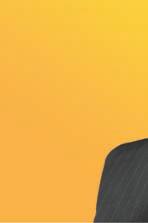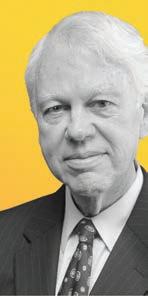








THE CROSSROADS OF AMERICA
VIRGINIA’S YOUNGKIN
THE GEORGIA WAY
INVESTING IN AFRICA’S YOUTH WOMEN LEADERS
180 DEGREES FROM ORDINARY
THE HOUSE OF KRUG
DISCOVER WINDSTAR’S DEGREES OF DIFFERENCE










THE CROSSROADS OF AMERICA
VIRGINIA’S YOUNGKIN
THE GEORGIA WAY
INVESTING IN AFRICA’S YOUTH WOMEN LEADERS
180 DEGREES FROM ORDINARY
THE HOUSE OF KRUG
DISCOVER WINDSTAR’S DEGREES OF DIFFERENCE

Sail in private-yacht style with Windstar Cruises and experience firsthand what makes us the #1 Boutique Cruise Line in the world. Step aboard one of our iconic Wind Class yachts — complete with billowing white sails — or our newly reimagined Star Class ships, where every room is a spacious suite. Enjoy our award-winning cuisine and hospitality as you visit must-see destinations in the Caribbean, French Polynesia, Latin America, Europe and beyond on a voyage that is truly 180 degrees from ordinary.










“Fight for the things that you care about, but do it in a way that will lead others to join you.”
Bader Ginsburg

Ray Dalio Dalio Philanthropies
Gerard “Jerry” J. Inzerillo Diriyah Company
Diana Nyad
Anne Chow
Dawn Staley University of South Carolina
Michael Dowling Northwell Health
Michelle Wu Mayor, Boston
Bob Parsons YAM Worldwide
Jan Dilenschneider
LEADERS Magazine is published quarterly and circulated to distinguished leaders of the world. Circulation is strictly limited. To receive LEADERS Magazine, one must be a leader of a nation, an international company, a world religion, an international institute of learning, or an international labor organization; or a chief financial officer, a major investor on behalf of labor or corporate pension funds, a chief information officer or a Nobel laureate. LEADERS Magazine was founded by Henry O. Dormann (1932-2018).
LEADERS Magazine
Publisher and Executive Editor: David W. Schner
Editor: Darrell J. Brown
Advertising Executive: Laurie McClure Ferber
Printing: Calev Print Media – Freeport Press
Photo Credits: Cover, 8 Dalio - © Bridgewater Associates; 8-9 Courtesy of OceanX; 13-At-Turaif- AMEEN_QAISRAN2016; 17 Nyad© Dawn Blomgren; 20-22 candids - © Stefan Welsh; 24 Barnett - © Guillaume Gaudet; 18 Arcadis - © Arcadis; 25 1285 Ave Americas - © Dallas Gonzales; 28 - Governor - © Andrea Hanks; 28-29 candids - Official Photo by Christian Martinez, Office of Governor Glenn Youngkin; 34-35 - © Chris Frawley, Stand Up To Cancer; 42 Wallace - © Erik Robinson; 49 - © Michael Blanchard; 57 HALO Team - © Alex Nicks; 59 Mary Tyler Moore and Dr. S. Robert Levine - © Patrick Demarchelier; 66 - © Anna Chern; 68 Dowling, LIJ Medical Center - © Lee S. Weissman; 70 - Tracy - © Lee S. Weissman; 72 - © Lee S. Weissman; 82 author, 82-85 - South Carolina Athletics; 82 candid, 84 bottom - © 2024 Tim Cowie; courtesy of South Carolina Athletics; 88 Dunn - © Paul, Weiss, Rifkind, Wharton & Garrison; 94 candid, 96 coffee hour - © Boston Mayor’s Office Photo by Isabel Leon; 95 Little League - © Boston Mayor’s Office Photo by John Wilcox; 95 Blue Bikes - © Boston Mayor’s Office Photo by Jeremiah Robinson; 102 Johnson - © 2022, Gittings; 103 Silberstein - © Juan Silva; 106-107 - © Mount Sinai Health System; 108 - © ServiceNow; 110 author photo - © 2018 Tracy Wilcox/ PGA TOUR; 110 Shetty speaking - © 2022 Chris Condon/PGA TOUR; 111 top - © 2024 Jennifer Perez/PGA TOUR; 111 bottom2024 Ben Jared/PGA TOUR; 113 Yacht Club - @ Timothy Baker; 113 Gonzalez, 114 Fiveash, De Souza - © Jenna Lyn Photography; 124 author - © 2023 Photography, Creative Enterprise Services, Marketing Division, Cleveland Clinic; 124 Park - © The Cleveland Clinic Center for Medical Art & Photography Marketing Division © 2020; 125 - © The Cleveland Clinic Center for Medical Art & Photography 2007; 126 Tung - © Elite Photography Group; 130 - © David Beyda; 134 Wood - © Ethan Bickford; 138 Kostich© Deborah Lopez; Dimenna Center - © Francis Dzikowski/Esto; Courtesy Baryshnikov Arts; 139 Kostich and Baryshnikov - © Chris Lee; 141 - © 2008 René Perez; 142 - © Kim Ritzenthaler Leeson; 144 Dilenschneider family - PhotoBureau Inc; 142-143 paintings - © Steve Barnes, Photographic Solutions, Norwalk, Connecticut; 146-147 - © Fadi Acra; 148 author - © Marcin Cymmer; 148-149 property - © James Baigrie; 152 author, property - © Paul Lehane; 153 - © Jack Hardy; 156 living area - balcony - © Troy Campbell 2022; 158-159 - Krug; 162 author - Jules Colangelo; 164 author, 170 top - © Markus Bassler; 170 bottom - © Marco Varoli 2017; 166-167 property - © Andrea Johnson Photography/Washington State Wine Commission; 168 18th hole, Shepherd’s Rock- © Evan Schiller Photography
LEADERS (ISSN 0163-3635) is published quarterly by Leaders Magazine, LLC, a Sandow brand; www.leadersmag.com. Leaders Magazine, LLC, Sandow Media, LLC and their respective affiliates, directors, officers, employees, contributors, writers and editors (collectively, “Publisher”) accept no responsibility for inaccuracies, errors or omissions with information and/or advertisements contained herein. The Publisher has neither investigated nor endorsed the individuals, companies and/or products that advertise within the publication or that are mentioned editorially. Publisher assumes no responsibility for the claims made by the Advertisers or the merits of their respective products or services advertised or promoted in the publication. Publisher neither expressly nor implicitly endorses such Advertiser products, services or claims. Publisher expressly assumes no liability for any damages whatsoever that may be suffered by any purchaser or user for any products or services advertised or mentioned editorially herein and strongly recommends that any purchaser or user investigate such products, services, methods and/or claims made thereto. Opinions expressed in the magazine and/or its advertisements do not necessarily reflect the opinions of the Publisher. Neither the Publisher nor its staff, associates or affiliates are responsible for any errors, omissions or information whatsoever that have been misrepresented to Publisher. The information on products and services as advertised in the publication are shown by Publisher on an “as is” and “as available” basis. Publisher makes no representations or warranties of any kind, expressed or implied, as to the information, services, contents, trademarks, patents, materials or products included in this magazine. All pictures reproduced in the publication have been accepted by Publisher on the condition that such pictures are reproduced with the knowledge and prior consent of the photographer. As such, Publisher is not responsible for any infringement of any third party’s intellectual property or other rights arising out of any publication. LEADERS® is a registered trademark of Leaders Magazine, LLC. © Leaders Magazine, LLC 2024. All rights reserved. No part of this publication may be reproduced or transmitted in any form or by any means, electronic or mechanical, including photocopy, recording or any information storage and retrieval system, without the written permission of the Publisher. ADDRESS SUBSCRIPTION REQUESTS AND CORRESPONDENCE TO: LEADERS, 3651 FAU


















Jason

Trusted
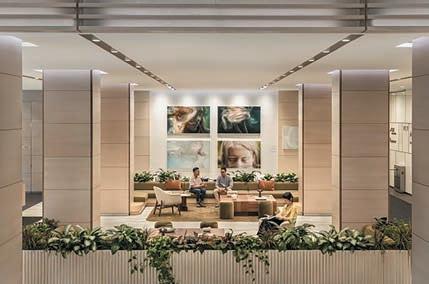

Larry Connor, Founder and Managing Partner, The Connor Group
Steven
Defining Health
Michael Dowling, President and Chief Executive Officer, Northwell Health

68
Producing Knowledge To Cure Disease
Kevin J. Tracey, MD, President and Chief Executive Officer, Feinstein Institutes for Medical Research 70
Inclusive Leadership
Anne Chow 78
Deepening Relationships Around The World
Wendy Stewart,
President, Global Commercial Banking, Bank of America 80
Growing The Game
Dawn Staley, Head Coach, Women’s Basketball, University of South Carolina
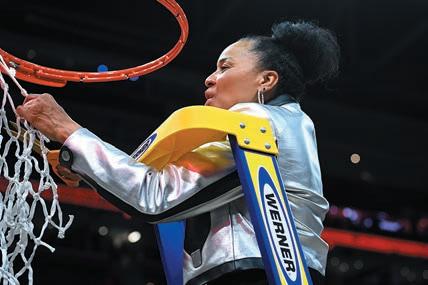
Community And Population Health
Debbie Salas-Lopez, MD, MPH, Senior Vice President, Community and Population Health, Northwell Health 72
Behavioral Health
John Q. Young, MD, MPP, PhD, Professor and Chair, Department of Psychiatry, Donald and Barbara Zucker School of Medicine 73
Women’s Health
Stacey E. Rosen, MD, Executive Director, Katz Institute for Women’s Health, and Senior Vice President of Women’s Health, Northwell Health 74
Bringing The Hospitality Industry Into The Hospital
Bruno Bazin Tison, Vice President, Systems Food Services and Corporate Executive Chef, Northwell Health 75

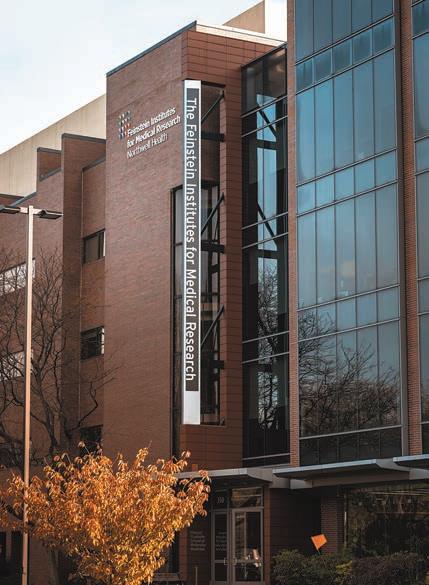
A Unified Team
Karen L. Dunn, Co-Chair, Litigation Department, Paul, Weiss, Rifkind, Wharton & Garrison LLP 88
The Power Of Partnership
Alison Mass, Chairman, Investment Banking, The Goldman Sachs Group, Inc. 90
Excellence And Integrity
Rashmi Madan, Senior Managing Director, Blackstone 92
Making Boston A Home For Everyone
The Honorable Michelle Wu, Mayor, Boston
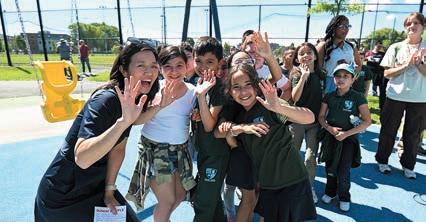
Opportunities In Healthcare Salimah Velji, MPH, MBA, Unified Executive Administrator, Department of Psychiatry and Behavioral Sciences, Montefiore Health System 98
An Unwavering Commitment To New York City
Meghann Gill, Senior Vice President, Operations, SL Green Realty Corp.

100
Creating A Positive Impact: Leaders. Visionaries. Trailblazers. Ethel J. Johnson, Sarah Mahood, Daniella Silberstein, and Marwa Al-Siyabi, Shareholders, Greenberg Traurig 102
Creating Excellence Together
Beth Oliver, Chief Nurse Executive and Senior Vice President, Cardiac Services, Mount Sinai Health System 106
Aligning People Strategy With Business Strategy
Jacqui Canney, Chief People Officer, ServiceNow 108
Impacting Communities
Neera Shetty, Chief Legal Officer and Executive Vice President, Social Responsibility, PGA TOUR 110
180 Degrees From Ordinary
Janet Bava, Chief Commercial Officer; Patricia Gonzalez, Vice President of Marketing; Dianna Rom, Vice President of Sales; Jaymi Fiveash, Senior Director of Vacation Planning; and Cris De Souza, Director of Revenue Performance, Windstar Cruises

112
Bringing Care Closer To Home
Nancy Batista-Rodriguez, Chief Executive Officer, Baptist Outpatient Services, Baptist Health South Florida 116
Achieving Lasting Impact
Louisa Greco, Partner, McKinsey & Company 118
The Power Of Diversification
Sherrese Smith, Global Managing Partner, Paul Hastings LLP 120
Client-First Service
Alexandra Littlejohn, Executive Vice President and Managing Director, Retail Property & Casualty, Alliant Insurance Services 122
Putting Patients First Lara Jehi, MD, Chief Research Information Officer, Cleveland Clinic 124
The Promise Of Technology And Human Ingenuity
Teresa Tung, Global Lead of Data Capability, Accenture 126
Creating Workplaces That Work For Women
Jennifer McCollum, President and Chief Executive Officer, Catalyst 128
Building Trust
Marissa Weidner, Chief Corporate Responsibility Officer, Webster Bank 130
The Anchor Of Health And Well-Being
Laura J. Wood, DNP, RN, NEA-BC, FAAN, Executive Vice President, Patient Care Operations and System Chief Nursing Executive, Boston Children’s Hospital 134
Cultivating Community
Veronica Miele Beard and Veronica Swanson Beard, Co-Founders, Veronica Beard 136
Supporting Artists In Their Creative Endeavors
Sonja Kostich, President and Executive Director, Baryshnikov Arts 138
The Patient Care Journey
Colleen Koch, MD, MS, MBA, Group Senior Vice President and Chief Operating Officer, NewYork-Presbyterian/Columbia Division 140
Fostering Thriving Arts Organizations And Communities
Zannie Giraud Voss, PhD, Director, SMU DataArts 142
The Power Of Light Jan Dilenschneider


Creating A Life In Balance Through Mindfulness
Susie Klein, Director of Business Development, Miraval Resorts & Spas 148
Creating Exceptional Experiences
Erina Pindar, Chief Operating Officer and Managing Partner, SmartFlyer 150
A Sense Of Place
Brendan O’Connor, General Manager, Adare Manor, Ireland 152
In The Heart Of Mayfair
Silmiya Hendricks, Commercial Director, Iconic Luxury Hotels 154

Acqualina Resorts & Residences Classic Suites 156

The House Of Krug Manuel Reman, President, House of Krug 158
A Portfolio Of Brands Scott Jove, President, Shaw-Ross International Importers 160
A Family Business Dominga Cotarella, Chief Executive Officer, Famiglia Cotarella 162
A Langhe Legacy
Federico Ceretto, Chief Executive Officer and Sales Director, Ceretto 164
A Collaborative Pursuit From Grapes To Glass
Kristina Kelley, Executive Director, Washington State Wine Commission 166




























































EDITORS’ NOTE A global macro investor for more than 50 years, Ray Dalio founded Bridgewater Associates out of his two-bedroom apartment in New York City and ran it for most of its 47 years, building it into the largest and most successful hedge fund in the world. Dalio remains an investor and mentor at Bridgewater and serves on its board. He is also the long-running New York Times bestselling author of Principles: Life and Work; Principles for Dealing with the Changing World Order; and Principles for Navigating Big Debt Crises. He graduated with a BS in finance from C.W. Post College and received an MBA degree from Harvard Business School. He has been married to his wife, Barbara, for more than 40 years and has three grown sons and six grandchildren. He is an active philanthropist with special interests in ocean exploration and helping to rectify the absence of equal opportunity in education, healthcare, and finance.

When I acquired the ship, one of my sons, Mark, was working at National Geographic at the time, and he also had a passion for diving and the ocean. He convinced me that we should show the work that scientists were doing in the media, so we did. We were the first to capture footage of the giant squid in its natural setting with The Discovery Channel in 2012, bringing fascinating footage of this incredible creature to the world. We have also filmed expeditions for BBC’s Blue Planet II on our ship and Sir David Attenborough’s award-winning series Great Barrier Reef. It was great so we got hooked.
We have now built a bigger ship to do it in a bigger way. Is there an effective awareness and understanding of the impact the ocean has for humankind?
the highest point on land is equal to the ocean’s deepest depth. So, this means that there is more than twice as much under the ocean surface as there is on all continents combined, and it is largely unexplored even though it is easy to explore. Just imagine if there was a continent that was unexplored – we would have to explore it. But the ocean is neglected. I estimate that 120 times as much money goes into space exploration as goes to ocean exploration. We see these oceanographic institutes starved for resources.
INSTITUTION BRIEF OceanX (oceanx.org) is on a mission to support scientists to explore the ocean and to bring it back to the world through captivating media. Uniting leading media, science, and philanthropy partners, OceanX utilizes next-gen technology, fearless science, compelling storytelling, and immersive experiences to educate, inspire, and connect the world with the ocean and build a global community deeply engaged with understanding, enjoying, and protecting the oceans. OceanX is an operating program of Dalio Philanthropies (dalio philanthropies.org), which furthers the diverse philanthropic interests of Dalio family members.
Where did your interest and passion for the ocean develop?
When I was growing up, I watched Jacques Cousteau who was an ocean explorer that showed his explorations in the media. This got me into diving when I was in my 20s, and I then got my kids into diving which was amazing. Twelve years ago when I had enough money, I acquired an ocean exploration ship that was actually in the fleet that had supported Jacques Cousteau, and had manned submersibles that would go down 3,300 feet. I figured I could support scientists in their work and could tag along.
It is absolutely not well-understood. The ocean is the most important asset the world has –it’s bigger than everything else combined and has the greatest effect on our well-being. The ocean is 72 percent of the world’s surface, and
It’s also beautiful and thrilling. If the ocean surface was clear and you could look down and see all that was there, of course we would be drawn to it. It needs to be explored, because if we do not understand it, it will not be taken care of. For example, consider deep sea mining in this environment. This is like above-ground mining –to be handled well we need to know what is there. If we don’t, we will regret the consequences. So I find ocean exploration incredibly exciting and also incredibly important. I believe OceanX will be able to have a big impact on this by doing the work we are doing and by helping others do a lot more.
We have the ship, and as of September, we will have a series that is coming out with Disney
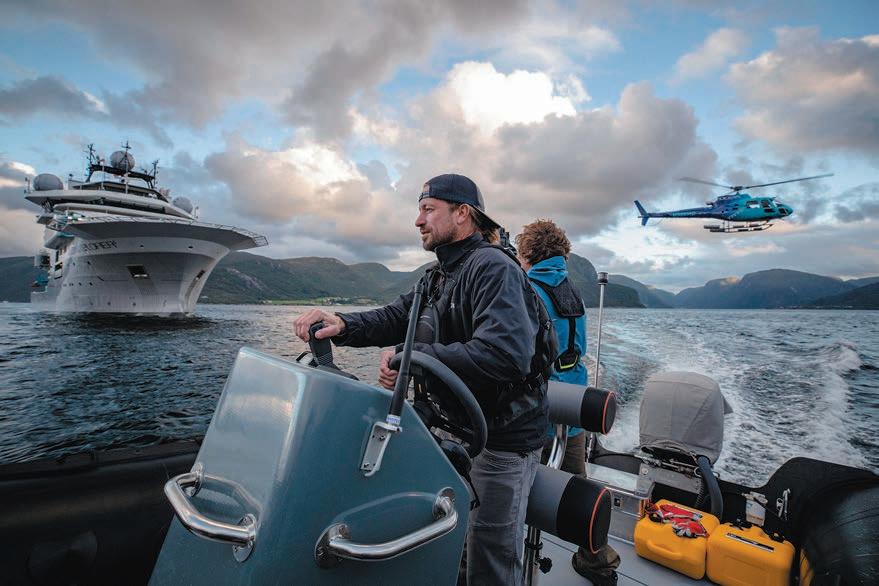
“If the ocean surface was clear and you could look down and see all that was there, of course we would be drawn to it. It needs to be explored, because if we do not understand it, it will not be taken care of.”

and National Geographic called OceanXplorers that will be like a Jacques Cousteau series, just a modern-day version. We were able to work with Jim Cameron and the BBC team behind the Blue Planet series as producers so you can imagine how well it will be done. I think we are going to interest a lot of people through this, and we are working with governments and media groups to make sure we get results. I believe that you will see a lot more attention paid to the ocean in the next two years.
How important has it been for OceanX to build partnerships to support its work?
It is critical. We have three considerations that guide us to what we will do with others, which we call three thumbs up. We support marine science so the first thumb up it has to get is that it produces great science. There is a science team that evaluates each project. The second is that it has to produce great media since we want to enthrall people. The third is how much it will cost, as I have allocated an amount of money that I am willing to lose each year, so I want to get the best bang for my buck. We go into partnerships with governments, media groups, and oceanographic institutes who are very excited to work with us.
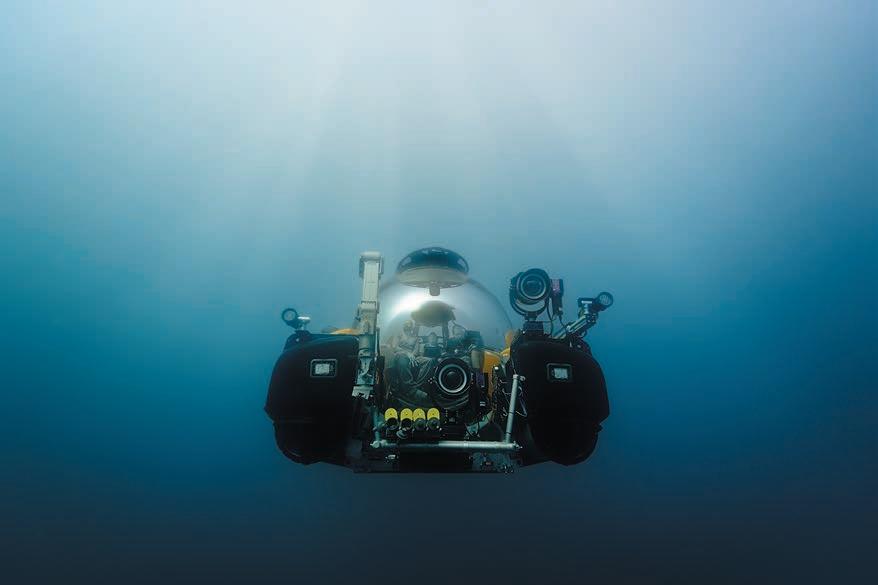
How do you measure success in this effort?
We have key performance indicators (KPIs). First to measure the scientific impact we use the number of scientific papers and recognitions. Next to measure the media impact we look at the number of eyeballs watching the media we do. And to measure the broader impact we measure the number of dollars spent on ocean exploration relative to space exploration. I want to have a big impact on the amount of money being spent on ocean exploration. We also want to enhance legislation to manage and protect the ocean, so we measure that too.
Do you approach your philanthropic work in a similar way as you did your business efforts?
I think of it in a very similar way. When you are in a business, to measure success one uses financial return which makes it easy –money in, money out. This is very straightforward. In my philanthropic work, I look at the cost per KPI. While this may not be as clear, it is essential to take this similar approach.
Do you get the same fulfillment from your philanthropic work as you did in building your investment firm?
Absolutely. While I live the game of making money in the markets, the question is what is the money for. I think that sometimes people get in the habit of paying so much attention to money made that they can lose sight of what the money is for. I love having a big beneficial impact doing what I love, and that is what I am doing at OceanX with my son and a bunch of great people.
How special is it to be able to work at OceanX with your son, Mark?
Imagine it – to be able to do this with him, and to also know that he will take it beyond me. It’s wonderful.•




EDITORS’ NOTE Jerry Inzerillo is a globally celebrated visionary in the hospitality and tourism industry, with a deep aptitude for positioning strategies and iconic developments. In June 2018, Inzerillo was appointed by His Royal Highness, Crown Prince Mohammed Bin Salman of the Kingdom of Saudi Arabia, to be the founding CEO of the newly created Diriyah Gate Development Authority (diriyah.sa), a $63.2 billion project aimed at restoring and reimagining the ancestral home of the original Saudi state. In this role, he is charged with developing and implementing a master plan to turn its 14 square kilometers of development area into one of the world’s greatest gathering places, encompassing world-class cultural, entertainment, retail, hospitality, educational, religious, office, and residential assets, with the UNESCO World Heritage site of At-Turaif as its center-point. When complete, the development will add 27 billion Saudi riyals to the Kingdom of Saudi Arabia’s GDP, attract 27 million visitors, and employ more than 55,000 people. Inzerillo also serves as Vice Chairman of the Forbes Travel Guide He previously served as President and CEO of IMG Artists, a leader in artist management, performing arts and lifestyle events planning, from 2012 to 2014. From 1991 to 2011, Inzerillo was President of Kerzner Entertainment Group, where he raised the profile of its properties in South Africa, the Bahamas, Dubai, Morocco, Mauritius, Mexico, the Maldives, as well as conceptualized and positioned the start-up of its One&Only and Atlantis brands. He oversaw the launches of The Lost City at Sun City in South Africa, Atlantis in the Bahamas, and Atlantis, Dubai. From 1991 to 1996, Inzerillo served as COO of Sun City, the South African resort complex built by Sol Kerzner. While in South Africa, he enjoyed a close personal friendship with President Nelson Mandela and, in 1994, coordinated major portions of his Presidential inauguration in South Africa. In 1987, he was the founding President and CEO of Morgans Hotel Group, later rebranded as Ian Schrager Hotels. While there, he conceptualized and opened Morgans, Royalton and Paramount in New York; the Delano in Miami Beach; and Mondrian in Los Angeles. Inzerillo has long been involved with philanthropy, especially

with respect to children, education, and HIV/AIDS. He was honored with a Knighthood by the Knights of Malta in Rome, Italy, in 1996. Inzerillo is a founding advisory board member of the Clinton AIDS initiative. In recognition of his leadership and empathetic outreach to the tourism community during the COVID-19 pandemic, he was awarded the prestigious HOTELS magazine “Corporate Hotelier of the World Award” as well as the “Tourism for Peace Award” by the World Association of Non-Governmental Organizations.
Will you highlight the vision for Diriyah and provide an overview of the project?
Our focus at Diriyah is to be visionary and culturally rooted placemakers that connect individuals to each other, their heritage, and to the world. We are committed to being a shaper of places that helps to shape humanity. Diriyah is a culture-led project of unprecedented scope and scale and is playing an integral role in helping Saudi Arabia to achieve the Kingdom’s Vision 2030.
That is our vision, but it makes sense to start by explaining exactly where Diriyah is, and secondly, why it is so important to Saudi Arabia – and to the world. Diriyah is located just a few kilometers from Saudi Arabia’s capital city of Riyadh and its population of nearly eight million people. It is easily accessible to all by road, and in the future by Metro as well. The development area itself is very large – at 14 square kilometers it is effectively the size of the city of Beverly Hills. At the very heart of our development project is the historic capital of Saudi Arabia dating back nearly 300 years that is today the At-Turaif UNESCO World Heritage Site. This is the birthplace of the Al Saud family and the modern Saudi state. That places both a huge responsibility, but also a privilege for us to be entrusted with creating Diriyah: The City of Earth.
The name Diriyah – The City of Earth –has evolved from the unique mud brick Najdi architecture of At-Turaif and the stunning Salwa Palace at its heart. This historic architectural theme is also being applied to every aspect of the construction process, from assets already open and developed to the countless


new projects now under construction. We are essentially building a new city – one that will be home to 100,000 residents, over 40 new hotels, a 20,000-seat multipurpose arena, an opera house, museums, office space, hundreds of shops, world-class restaurants, and a venue for major sporting events. A city that in the future will attract 50 million visits a year.
How do you capture in a sentence what Diriyah is?
If you had to have a very simple explanation of Diriyah, it would be a culture-centric tourism city. If you expanded on that, it would be a culturally-centric, pedestrian friendly tourism city because it is meant for people to walk and bike.
In the way Mecca and Medina are the two holy cities, Diriyah in the G20 capital of Riyadh is the cultural epicenter of not just Saudi Arabia, but of the Gulf.
What can guests expect when visiting Diriyah?
I think they will be amazed at the scale and ambition of what we are doing. For non-Saudi guests it is going to change their preconceptions of Saudi Arabia as they walk into a destination that embraces the past. They will receive the best of Saudi’s traditional warm and welcoming hospitality, and stay in worldclass hotels including the Ritz-Carlton, Four Seasons, Oberoi, Aman, and many more. Visitors will walk along streets that have 300 years of heritage and history; look out to our UNESCO World Heritage site and landscaped wadis and parks from outdoor restaurants and cafes with outstanding views; dive into the rich history of Saudi Arabia through museums and art galleries; attend cultural events at the Royal Diriyah Opera House; tee off on a Greg Norman designed golf course; enjoy easy access to one of our four metro stations being built with direct links to
Riyadh’s King Khalid International Airport, and much more.
There is something for everyone here at Diriyah – a place that perhaps like few others can represent the past, the present and the future in one destination.
Will you discuss the importance of connecting all Saudis to Diriyah’s rich heritage and for Diriyah to become one of the world’s great gathering places?
In Saudi Arabia, and indeed across the Arab World, there is a tradition of storytelling from generation to generation. This means that
Saudis will have heard of and know of Diriyah and its role in the development of the modern Kingdom, but few will have had the chance in the past to visit. Thanks to the Diriyah Company, that is changing. Since opening our UNESCO World Heritage Site and the nearby Bujairi Terrace in December 2022, we have welcomed over two million guests – most of them Saudis –giving them the chance to explore and walk the same streets as the Al Saud family and others over 300 years ago.
The size and scale of Diriyah means it will become one of the world’s great gathering places. From the hotels and restaurants, parks and boulevards, event arenas and museums –we will offer an incredible range of places for people to gather, to share ideas, to celebrate together and enjoy life with friends and family.
Many large-scale sporting events have taken place in Diriyah. Do you see Diriyah as a global sports hub?
In recent years, Diriyah has built a reputation as probably the best-known sporting venue for Saudi Arabia on the global stage. We have hosted numerous world championship boxing fights, and we are one of only 10 venues worldwide that host Formula-E racing. Golf is growing in popularity in the Kingdom, and we are delighted to have partnered with Greg Norman to build a championship quality course. We also recognize the power of the horse in the Arabian world and are establishing a world-class equestrian center on site.
How critical is sustainability to Diriyah’s developments and will you highlight Diriyah’s sustainability initiatives?
Embracing innovation and sustainability isn’t just a choice; it’s a responsibility we hold at Diriyah to shape a destination that positively impacts society, the environment, and the community. Sustainable development strategies
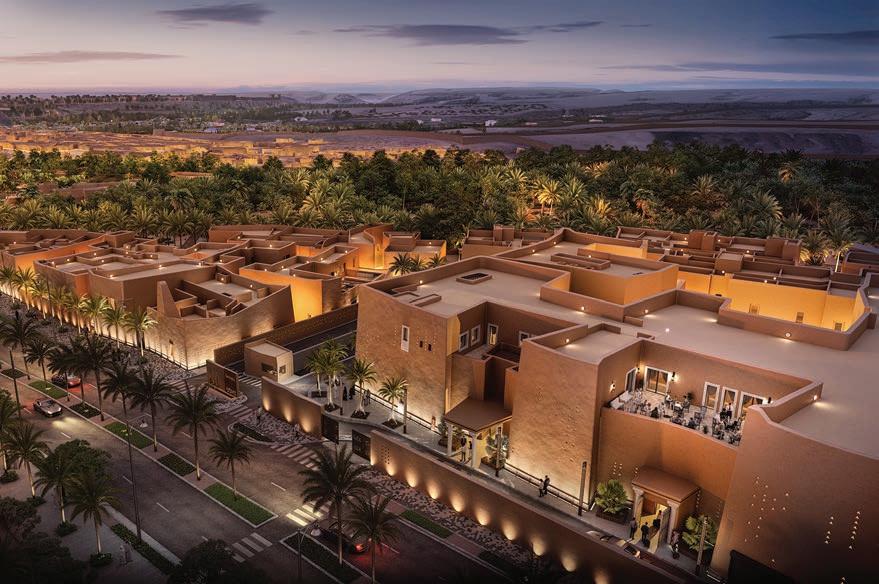

are at the very heart of how we build and operate our many and varied assets from carbon-positive construction techniques to how we use renewable energy, smart water systems and cooling systems.
Let me give you some examples of how that works. The first phase of Diriyah’s masterplan has been awarded the internationally renowned USGBC LEED precertification at platinum level – the first in the Middle East to receive this prestigious global recognition. We are an active participant in Saudi Arabia’s sustainability certification program, MOSTADAM. Diriyah is working with Partanna – the climate technology company – to explore the use of its carbon-negative building materials throughout the scope of the project.
We continue to look at new initiatives to further our sustainability practices. Much of what we are doing will be behind the scenes for most visitors to Diriyah, but what they will experience is our green landscaping strategies. We are planting over 6.5 million trees, plants, and shrubs across the site – enabling treelined boulevards and places like the recently completed Bujairi Park for residents and visitors alike to enjoy.
How do you describe the impact that Diriyah will make for the future of the Kingdom?
As one of the Kingdom’s giga-projects, Diriyah plays an important role in helping to boost both the profile of the Kingdom and generate economic growth and prosperity, attract millions of visitors, and build a new city to live, work, and play. It will help achieve the goals of Saudi’s Vision 2030 as the country becomes a more diversified economy to boost the contribution of non-oil and gas GDP to 65 percent by 2030 and boost the impact of tourism to 10 percent of GDP. We are creating
178,000 new jobs at The City of Earth that will become a truly integrated city, one with a vibrant culture for residents and those working there in addition to the millions of visitors who will spend their leisure or vacation time with us at Diriyah.
Will you discuss the strength of Diriyah’s workforce?
Diriyah currently has 30,000 workers on the job, and the staff is comprised of 2,400 people. I knew that this was going to be a daunting project because of supply chain, so the first thing I did when I arrived in 2018 was to look at what the Qataris did gearing up for Expo 2023 Doha since when they were winding down, I was winding up. We looked at the entire Gulf to see where there were supply chain resources, and then we put our emphasis on building an amazing culture of pride and self-esteem – this is what we refer to as One Diriyah. As we started to receive a reputation as a great place to work, we have attracted the best and brightest talent. I believe we have the best team in the Kingdom.
You were recently appointed a UN Tourism Ambassador. Will you discuss this role and what makes it so important for you?
I was enormously proud to receive this honor earlier this year at the United Nations in New York. It is an honor for me personally, but also reflects the impact and growing global awareness of what we are achieving at Diriyah. Across my five decades in the industry, I have seen enormous changes in tourism, but one of the biggest is how sustainable destinations are more valued than ever and important to the industry and the individual traveler.
As a UN Tourism Ambassador, I can commit even more to education – of our 2000strong team who work at Diriyah and others
in the global industry, to the communities we work in as developers, and to the millions who travel to experience the wonder of new destinations.
I am privileged to have joined the ranks of the UN’s global tourism ambassadors. Upon being given this role, I pledged to use it to ensure that sustainable tourism can become the driver of change for our industry and a catalyst for the world’s fastest growing sector of the economy.
What excited you about the opportunity to lead the Diriyah Company, and has it been what you expected?
When I met His Royal Highness, Crown Prince Mohammed bin Salman, I liked him, and I thought his vision was very bold. I could tell he was sincere and knew it was going to be big. It all added up to me – culture, heritage, authenticity. To me, this opportunity was like playing in the Super Bowl, and I wanted to win another Super Bowl.
Looking back, it has been more than I expected. The Crown Prince has given us all the resources needed to fulfill his vision, and we are on time and on budget – it is extraordinary.
How has your many years as a leader in the hospitality industry and as a leading hotelier impacted the way you have approached your role leading Diriyah?
I think the first thing is to always remember your roots and as I always say, service is nobility. This is the cornerstone of hospitality, and it stems from remembering our origins and that is a message I have always shared both to my team at Diriyah and to those I have been privileged to work with. I believe that humility and connection with our beginnings allow us to create authentic, impactful experiences that resonate with the people we interact with daily.
In my role at the Diriyah Company, I also have the privilege to work closely with His Royal Highness, Crown Prince Mohammed bin Salman, someone I hugely respect and who has that shared belief in remembering our roots and instilling a true sense of humility into Diriyah’s development goals. His Highness is also an advocate of the maxim that passion fuels excellence. We must always remember that at the heart of hospitality lies a passion that turns ordinary interactions into extraordinary memories. And when that passion influences every action, excellence becomes the natural outcome. That is what we must always strive for at Diriyah and it is something that I live by every day and has informed every step of my professional journey so far.
With all that you have accomplished in your career, what has this opportunity meant to you?
At this stage of my career, I see it as a legacy project. I do not see anywhere in the world doing a project bigger or more meaningful than Diriyah, the birthplace of the Kingdom, the home of Al Saud. There is still so much to do, and I hope to do as much as I can, and to stay with the Crown Prince for as long as I can.•

An
EDITORS’ NOTE On September 2, 2013, at the age of 64, Diana Nyad became the first person to swim from Cuba to Florida without the aid of a shark cage, swimming 110.86 miles in 53 hours from Havana to Key West. In the 1970s, she became known as one of the world’s greatest long-distance swimmers with her open-water achievements, including a record-breaking swim around Manhattan. For the next 30 years, Nyad was a prominent sports broadcaster and journalist, filing compelling stories for National Public Radio, ABC’s Wide World of Sports, and others. She is the author of the bestselling memoir, Find a Way, and three other books; is a national fitness icon; a talented linguist; the co-founder of EverWalk; and one of today’s most powerful and engaging public speakers. She performed her Off-Broadway show, The Swimmer, at the Minetta Lane Theatre in New York City in 2019.

doesn’t matter if it is swimming or something else. I have always had the discipline and passion to fulfill my dreams. Most people gravitate to the things they are good at, and for me it was swimming. I was growing up in Fort Lauderdale in South Florida where there was a swimming culture, and the Swimming Hall of Fame is located there. I had a feel for the water and was fast in the water, but I think more than anything I had a personality trait of loving a longterm goal and going after it fully, never taking a day off. I enjoyed the feel of moving through the water, but more than anything I enjoyed the discipline it takes to be successful. What led to your dream to make the swim from Cuba to Florida?
knew Cuba, and then in one day – literally in 24 hours – that beautiful island right off the coast became forbidden.
Where did you develop your passion for swimming?
I think the deeper question is that if I am a person with discipline and passion – it really
“My team felt that this was an exciting journey of discovery –discovery about ourselves, discovery about working together, discovery about science and the ocean.”
That dream started very young. I was nine years old when the Cuban Revolution broke out, and all of us living in South Florida knew Cuba very well. My parents had gone to Cuba many times to spend the weekend and dance salsa at the Hotel Nacional which was the playground of John F. Kennedy and his wife, Jackie, as well as Frank Sinatra and the Rat Pack. We all
At age nine, I was already a champion swimmer for my age group. I was standing on the beach in Fort Lauderdale one day with my mother and I asked her why I could not see Cuba from the beach. She said that it was just over the curvature of the Earth and told me that it was so close that I, the little champion swimmer, could actually swim there. Those words, at the age of nine as a little swimmer, stayed in the back of my imagination. Later in my life, in my 20s when I became a national open water swimming champion and held a number of world records, it was always that phrase from my mother about swimming to Cuba that was in my mind. I started researching it and preparing for the attempt. What led you to continue to try five times to accomplish this feat?
My team and I were believers. My team felt that this was an exciting journey of discovery –discovery about ourselves, discovery about working together, discovery about science and the ocean. When we did not make it, we came back, put our brains together, researched better,

and came back loaded with better knowledge and better prepared for the next try. This is why I believe that in the end our team was the one that finally made it across – we refused to give up and we loved being on the journey, even during the times that we did not reach the destination.
You mention the team. While swimming can be thought of as an individual sport, how critical was the team in achieving your goal?
I would have never stumbled up on that U.S. shore without my team, and I think if you talk to any open ocean endurance swimmer, the second they reach the sand, they are going to turn around and thank the team since they deserve equal credit for making it across. It is true that the athlete is putting in the majority of the drudgery of all the hours of the work, but without Bonnie Stoll, the head of the expedition and my head handler; the shark diver experts who are brave individuals and were willing to put their lives ahead of mine and go under me at night in the pitch black since we did not use any lights as they attract jellyfish and sharks; Dr. Angel Yanagihara, the world’s leading box jellyfish expert; the medical team of University of Miami doctors; John Bartlett, my navigator, who is a mathematical genius and plotted the course – I could not have made it. This well-versed, committed, and talented team was essential for me to make it across the body of water.
What was the feeling when you reached shore and felt the sand beneath your feet?
When we were two hours from shore and we could see palm trees and helicopters were flying above for news service, I tread water and I talked to my 40-person team. I told them that while I was going to walk out on that beach pretty soon and have my picture taken, not to ever forget that we did this together. When I stumbled up on that beach, I was flashing back on all
the days that I decided to do a 14 hour training swim in the Caribbean, and if I came into the dock at 13 hours and 58 minutes, Bonnie knew that I did not want to make any concessions and that I needed to swim back out for a minute and then swim back in to make it a true 14 hours. So, when I stumbled up on that beach, that is what I was proud of – that our team refused to give up, we refused to give in. We never made a concession of even two minutes as we were getting ready, and that is why we made it across.
What interested you in writing the book, Find a Way, and what are the key messages you wanted to convey in the book?
I had finally achieved the holy grail of my career – it was history, and it was epic. I had been trying it for 35 years, and it was time to write a life story. I like to think it is a deeply layered story, but in the end, the basic tenet in the book is that I learned early that you do not get to live any day over again. If you have made a mistake, if you have not given it everything you could, if you have not embraced the day –you wasted it. You better grab every day of your precious life and live it the biggest and the best you can live it. Go to sleep every night with no regrets, and you will make it to the end. And when you take that last breath to go to sleep for the final time, you will have no regrets. This is at the heart and soul of the book.
What did you feel about the making of the movie, Nyad, and did it effectively capture the essence of your journey?
I think it captured the essence of the journey. Annette Bening knew me very well before we went to shoot the movie, and she wasn’t entirely my personality. She knew that and was asked to play a script that had an unapologetic, fierce, leading character, and that is the way Annette played it. She was not what I would call as “likeable” as I am in real life, and she would be the first

one to admit that, but that is what the script called for, and what the producers and directors wanted. Any life story that gets taken to Hollywood and on the big screen can’t be a replicated documentary of that person’s life, but what it did capture was the perseverance and resilience of a person who will not take no for an answer, and will try again and again. The movie also captured the 44-year friendship that Bonnie and I had in a very effective way. I am very proud of the movie, and it is not often you get to have a movie named after you which is pretty lucky.
What led you and Bonnie to create the nonprofit, EverWalk, and how do you define its mission?
When we finished the swim in 2013, Bonnie and I were filled with the awe of this blue planet. We spent hundreds of hours out on that ocean in the Caribbean and Mexico and off Florida, and we fell in love across this surface. We wanted to try to give people the sense of discovering who you are when you spend long hours with the simplicity of your body movement, along with the training that makes you so strong, and the rhythm of taking stroke after stroke. We knew we couldn’t take large numbers of people out into the ocean to give them that experience, but we could walk under the blue sky and have those same feelings of traveling across the curvature of the Earth and being who we want to be, feeling the rhythm of our feet on the pavement.
We started our nonprofit, called EverWalk, to build community, walking side by side, leaving our differences behind.
What advice do you give to young people about pursuing their dreams?
I tell young people to choose a direction –it may not be where you end up, but you will meet someone on that course that inspires you to your next opportunity. Action will take you to your big life’s dream.•
“You better grab every day of your precious life and live it the biggest and the best you can live it.”
EDITORS’ NOTE Bob Parsons, possibly best-known as the founder of GoDaddy, is widely recognized for his entrepreneurial and philanthropic efforts. Currently, Parsons is the CEO and founder of YAM Worldwide, which is home to his ventures in the fields of motorcycles, golf, real estate, finance, marketing, innovation and philanthropy. Bob Parsons is a U.S. Marine Corps Vietnam veteran and a recipient of the Purple Heart Medal, Combat Action Ribbon, and Vietnamese Cross of Gallantry. He attended college at the University of Baltimore on the G.I. Bill and graduated magna cum laude His alma mater presented him with an honorary doctorate in 2008 and named him Distinguished Entrepreneur in 2010. In 1984, Parsons started his first business, Parsons Technology, in his basement after teaching himself how to write computer programs. When Parsons Technology was sold to Intuit in 1994 for $64 million, the company had nearly one thousand employees, $100 million in annual revenue and three million customers. Three years later, Parsons launched Jomax Technologies which would later become GoDaddy – the world’s largest domain name registrar. He sold a majority stake in 2011, in a deal that valued the company at $2.3 billion. In 2012, Parsons founded YAM Worldwide (yamww.com) under which he owns and operates more than a dozen companies, including PXG (Parsons Xtreme Golf), Scottsdale National Golf Club, Harley-Davidson of Scottsdale, GO AZ Motorcycles, and YAM Properties. Over the years, three of Parsons entrepreneurial ventures –Parsons Technology (#11, 1992), GoDaddy (#8, 2004) and PXG (#123, 2019) – have been recognized by Inc. magazine as being among America’s fastest growing privately-held companies. Parsons, with his wife and PXG President of Apparel, Renee, started The Bob & Renee Parsons Foundation in 2012 to reach marginalized populations and causes often underfunded by mainstream philanthropy. The Foundation provides transformational grants to nonprofit organizations successfully working in the areas of homelessness, medical care, LGBTQ youth, education, and the needs of wounded veterans and military families. In his new book, Fire in the Hole!, Parsons tells the story of how he went from having absolutely nothing to making more than $3 billion.

Bob Parsons
Will you discuss your career journey?
My career journey in a nutshell –first you talk about the bookends. I started with less than nothing –literally. I had nobody to teach me anything. I even had to teach myself how to tie my own shoes, so if I wanted to learn something, I had to do it myself. When I was young, one of the things that I was fortunate to have were good friends who read a lot and encouraged me to read as well, despite our humble beginnings. If you go to the other bookend, I made $3 billion which is a stack of cash. I wrote my book, Fire in the Hole!, to tell how I did it and the incredible strokes of luck that I had along the way. I have not told anyone this before, but I believe that even if I had not had those incredible strokes of luck, I would still be living pretty comfortably – maybe instead of $3 billion I would have a few hundred million – but I would still be staying in a good room when I am at a hotel.
Did you know you had the resilience needed to deal with the many challenges you have faced in your life?
My childhood taught me resilience because I grew up – and don’t get me wrong, I loved my parents – in a very neglected environment, so I had to be tough right from the start. That, plus what I learned in the Marine Corps, made me resilient and I believe made me an entrepreneur. The Marine Corps teaches you responsibility and discipline, and it also taught me that I could accomplish far more than I thought I could and that I had a right to be proud. No one had ever taught me that before. The Marine
Corps was my family, and particularly the guys I served with in the Rifle Company I was a part of. I was only with them for a month, but we bonded totally, and I loved those guys.
Do you feel that entrepreneurship can be taught or is it an ability a person is born with?
I think it is both. I think you can learn it. I never thought of myself as a big risk-taker, but I became one. I took calculated risks, not gambling risks, which is a big difference. I think a big part of being a successful entrepreneur is always doing things that you love to do. If you find something you love to do, that love empowers you and will get you through just about anything.
When I look to bring on talent I am always interested in the skill level and the education level but this just shows you that the person is capable of doing the job. I mostly look for a light in their eyes and that passion that will make them successful.
You mentioned your book, Fire in the Hole! What made you feel it was the right timing to write the book and did you enjoy the process?
You know that saying – “if not now, when?” One requirement I had for the timing of the book was that as much as I love my mother and even as hard as the relationship we had was –she was truly crazy – I didn’t want to publish the book while she was still alive.
Laura Morton, my co-author on the book, did an amazing job with the first draft. She did interviews with me, and during the conversations about my time in Vietnam, I took magic mushrooms so that I was able to tell her all about it. During one part, I actually hallucinated
“I think a big part of being a successful entrepreneur is always doing things that you love to do. If you find something you love to do, that love empowers you and will get you through just about anything.”

that I was right back there in Vietnam. I cried so hard. Laura helped me pull it together and then I made sure for the parts that were not in my voice to put them in my voice.
What do you hope readers will take away from the book?
I hope that readers will take away that if I was able to do what I did with my background and circumstances, anybody can, and if you are going to do it anywhere in the world, this is the place to do it. This country provides so many
opportunities – you need to find something you love and be willing to take it slow. Being an entrepreneur has got to be like going into prison for the first time – you learn a lot, and the number one thing we know about prison is that you don’t run into it – you walk in slow. This is the same thing about being an entrepreneur – you go slow at first since you are going to fail at times, but your goal is to learn. Once you have learned, you are ready to push the pedals and let it go.
What brings you joy?
Seeing my wife happy brings me joy. Having a relationship again with my kids brings me joy. My businesses bring me joy. A lot of businesspeople have goals – I don’t have goals. I want to see us get better every day so that we can execute better and better.
How do approach your philanthropic work?
I follow my heart with my philanthropy, and I look at organizations that are making a difference. One organization I support is Free Arts for Abused Children. Their mission is to transform children’s trauma to resilience through the arts. I saw a picture that a little kid drew which had a big stick figure and a little stick figure, and they are holding hands. It showed a house and a half-moon to suggest it was nighttime. The kid wrote the caption: “I never met my father. He left before I was born. Every night I think about what he is doing and wonder if he ever thinks of me.” Well, my God, he had me at hello. This is an example of an organization that is making a difference and that I want to invest in.
We invest primarily in causes that are neglected by mainstream philanthropy because they are not glamorous. Another example would be the organization one•n•ten whose mission is to serve LGBTQ youth and young adults by enhancing their lives with social and service programs that promote self-expression, self-acceptance, leadership development, and healthy life choices. Sadly, a lot of families when they discover that they have a son or daughter that is gay, throw them out and turn their back on them. The kid finds themselves on the street and has nowhere to turn, but one•n•ten reaches out and finds these kids before the predators do. They give these kids a place to stay and they teach them that they are a part of the American Dream, too. We were one of the first organizations to support them, and it is truly making a difference.
What advice do you offer to young people beginning their careers?
I tell them that it is good to want to change the world, but Alexander the Great couldn’t even do it. You need to accept the world the way it is and find how you can succeed within the way the game is being played. You can always be successful, whether the economy is up or the economy is down. I am proof of that.
How would the people who have worked with you for many years describe the experience?
They would say I was nuts. They would say I was one of the hardest bosses they ever had. And they would say I was fair, and I was fun.
Do you ever think about slowing down?
I am going to do that one day. I will be in an urn. My wife and I made a deal – whoever goes first will be cremated and the other will hold the urn. Whoever goes next, cremate them and then mix the ashes together and dump it off the coast of Hawaii. And there we go. She will still be telling me what to do, and that’s ok.•
EDITORS’ NOTE Eric Holcomb, 51st Governor of the State of Indiana, is a lifelong Hoosier who was born in Indianapolis, Indiana, and graduated from Pike High School in Indianapolis and Hanover College in southeastern Indiana. He went on to serve six years in the U.S. Navy, first at Naval Station Great Lakes and later in Florida and Portugal. Holcomb is currently serving in his second term as governor having been elected in 2016 and 2020 when he received the most votes for governor in Indiana history. Prior to his election as governor, Holcomb served as Indiana’s 51st Lieutenant Governor. A basketball fan and collector of presidential signatures, Holcomb has not only made a basket in each of Indiana’s 92 counties, but also possesses documents signed by every U.S. president. Holcomb serves on the Executive Committee of the National Governors Association and Republican Governors Association. In 2018, The Hill named him one of ten governors shaping the future of politics.
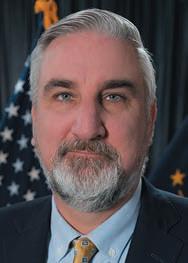
Will you provide an overview of the priorities for your administration?
My administration has been driven by five key pillars throughout the last eight years, called our “Next Level” agenda. These pillars generally include economic development; workforce development, including health, wellness and education; community development; and good government. My administration has never wavered in our efforts to drive positive changes to strengthen these pillars, and I intend to run through the finish line sprinting in full stride.
These five pillars require one another – they are building blocks to ensuring a better life for every person that seeks upward social mobility and calls Indiana home. For example, a skilled up workforce starts with ensuring our students have the tools to succeed with a quality education, K-12 and all the way through higher education or a trade to fully realize the American Dream. Indiana’s will be a future-focused economy with a plethora of career opportunities, a state that offers access to health improving resources and communities that support high quality of life,
placemaking initiatives. Our assignment is all about leaving Indiana better than when we found it, and setting Hoosiers up for success wherever they steer and life leads them.
Will you highlight your administration’s efforts to improve education in Indiana and reform K-12 education?
Our state has long been known for our high-quality schools, primary and post-primary, and for working to improve on those that lag behind them. One thing that will always remain true – the importance of education as a driver to unlock a person’s potential and light their pathway to personal prosperity is foundational and becoming a lifelong commitment. There is nothing more important than preparing students to succeed in whatever career path they choose, and it’s something I have made a priority from day one. Since 2017, Indiana has increased education funding by $1.8 billion, placing us among the top three states for the percentage of our budget devoted to public education. With this unprecedented commitment, teacher salaries will finally reach a statewide average of $60,000, and we were able to remove a hidden tax on parents by eliminating textbook and
What attracted you to public service?
I’ve long felt strongly about contributing to something greater than myself and felt duty bound to serve my neighbors considering so many of them gave in unimaginable ways so that my family and yours could enjoy the freedoms to choose our own course. Whether it was volunteering in school and ultimately in the United States Navy, teamwork and focus on specific goals has been paramount to progress. From training at the Great Lakes Naval Station in Chicago, to being stationed at base in Florida and then again abroad at NATO War Headquarters Portugal, I will never forget the people I worked with and the lesson of adaptability in an ever-changing world that continue to shape my outlook on life and attitude towards tackling any problem thrown our way.
The common denominator in everything I’ve done to date professionally is service oriented. In the years that followed my military service, I worked for several government officials including a Congressman, U.S. Senator, and Governor, all of them who carried traits true to themselves. I learned through observance and hard work what it takes to be devoted to the betterment of Hoosiers and to make the necessary, often tough decisions for the greater good.

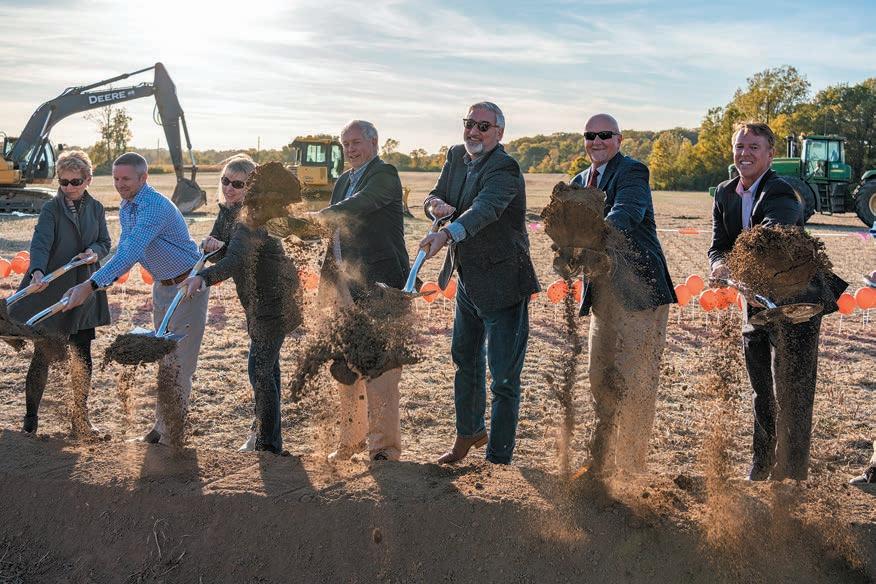
curriculum fees for more than 1 million students in traditional public and charter schools.
We also understand that we must provide resources for students that will help them to build confidence in the skills they are acquiring. We’ve established multiple vocational career pathways, shifted to teaching the science of reading, providing required access to computer science courses to underscore the importance of STEM education. Most importantly, we’ve set a high goal to ensure that by 2027, 95 percent of our Hoosier third graders demonstrate reading proficiency. When students learn to read, they can read to learn and unlock a whole new world of potential opportunities including serving in the military, going directly into a career at home, and/or attending Notre Dame, Purdue, Indiana University, or our statewide Community College.
How is your administration investing in infrastructure to strengthen Indiana’s connections between its communities?
Indiana is known as the “Crossroads of America” and backs it up by being the #1 ranked state in the nation for infrastructure by CNBC year over year. Infrastructure is the platform on which all industry and life rests upon.
For example, in the southwest quadrant of Indiana, our I-69 project from Evansville to Indianapolis is on track to be completed by the end of this year, three years ahead of schedule. Hoosier hands are building and connecting Indiana cities and towns along the entire route, and I couldn’t be more ecstatic about the new growth and prosperity that will come with it. In northwest Indiana, the South Shore Line has become officially double tracked and operational. As the biggest investment in rail in Indiana history, train wait times have decreased and economic impact increased, as region rail projects are projected to attract $2.7 billion in private investment to northwest Indiana.
Finally, our Community Crossings initiative has been a model hand-in-glove partnership that strengthens connections between our rural, urban and suburban communities in all 92 counties. It embraces the bottom-up approach, where local communities determine the need for infrastructure projects, and the state provides the funds to improve the safety and efficiency of our local roadways. Since 2016, communities have received $1.7 billion through this program. Communities large and small are building the infrastructure and Community Crossings is the key building block to building up high quality of place and life.
Will you discuss your administration’s work to build transparency and integrity in government?
Transparency is king. I strive to be open with Hoosiers, so they understand the “why” behind the “what” and the data that drives our decisions. For instance, in the height of the pandemic, it became crystal clear how data needed to be the determining factor for the decisions being made day-to-day, hour-byhour, and minute-by-minute during a globally unprecedented time. The Indiana Department of Health quickly created a data dashboard on their website and shared the daily need-toknow pieces of information, such as open ICU beds, COVID deaths, vaccinated Hoosiers, and the list goes on. These nuggets of information informed us of the decisions we were making in real time, and it was crucial that Hoosiers understood the why, even if they disagreed.
Across the country, including Indiana, we are facing other health stressors, like obesity and smoking rates, and as a government we felt it was our duty to become part of the solution. In 2023, we passed an historic, generationally changing piece of legislation that will transform our public health system. Prior to the 2023 legislation, the state gave our local public health districts $14 million in a two-year span in hopes of transforming the lives of Hoosiers that needed additional financial resources. After years of not moving the needle, last year the state agreed to set aside $225 million over a two-year period for counties who wanted to opt-in and use the additional funds for public health needs, such as programming and resources. There are a lot of thoughts and opinions regarding public health, so we wanted a partnership between the state and local government that was voluntary. It’s called Health First Indiana.

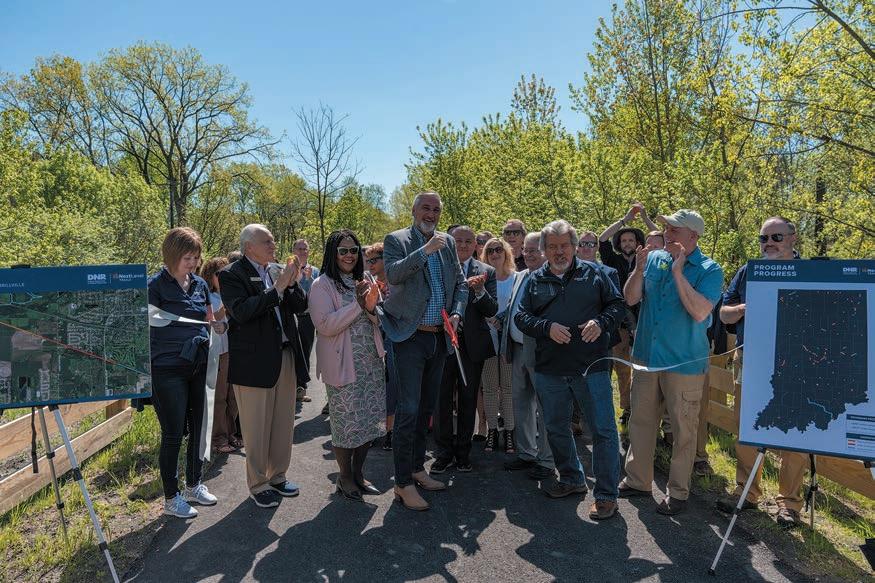
We had to build the state’s structural health network integrity over time by being transparent with local elected officials, public health departments, community stakeholders and the general assembly to get all 92 counties to agree with the concept. As of May, all counties from corner to corner of the state have opted in. Even some of the local officials who initially spoke out adamantly against the program are converted supporters. This is because we were driven by transparency. All parties involved, including the public, whether they agreed or not, had all the information at their fingertips. We turned our cards face up from day one because we believed in the program and the impact it will make for years to come.
How critical is a strong public-private partnership in Indiana and will you highlight your working relationship with the business community?
At a time when the Hoosier economy is on a roll, public and private partnerships have never been more paramount to our success. In Indiana, it’s truly a team effort across all sectors. We are there every step of the way, convening the whole ecosystem at the table, including government leaders, academia, industry partners and other key stakeholders. The numbers speak for themselves – Indiana has been ranked the #1 place to start a business in 2023 – our committed capital investments are shattering records every quarter. The key to this success has been having open-door discussions on how we all can move forward and innovate together.
We can measure the true impact of public and private cooperation beyond economic metrics. Through regional development efforts, we are transforming communities and making Indiana a more attractive place to live, work, play and stay. In 2021 and then in 2023 the General Assembly passed legislation allocating $500 million from each biennium budget for the
Regional Economic Acceleration & Development Initiative (READI) grant program. READI has become a nationally recognized innovative program that connects communities to build sustainable partnerships for growth, and hinges on local public, private, and philanthropic match funding. READI 1.0 has resulted in more than $12.6 billion invested in quality of place and quality of life assets. Community foundations and organizations have a working knowledge that’s proven to be instrumental to my administration. For example, in partnership with the Lilly Endowment, we were able to inject an additional $250 million to support the $500 million allocated for our READI 2.0 projects, focused on blight reduction, redevelopment, and arts and cultural projects. This endowment was the largest investment in their 86-year history. Together we know that to attract the businesses and talent we want, we must ensure the Hoosier state remains a place where people want to live, work, study, and stay. I’m grateful for partners who also want to see this vision through.
As you look to attract new industries and businesses to Indiana, how do you define the Indiana advantage?
Our advantage is the diversity of our economy and the tenacity with which we work to build business relationships. We have it all, from manufacturing, life sciences, agriculture, and even R&D in AI, semiconductors, energy development, and so much more. Just last year we were one of three states that were awarded three major federal hub partnerships – including a clean hydrogen hub, a microelectronics hub, and biotech manufacturing hub, all of which will bring even more investment and thousands of jobs, putting Indiana at the forefront of tech innovation. We’re strategically leaning into our strengths, proving Indiana is the destination to do and grow business.
Our strong foundation for companies to start and expand their business offers a long-term approach including a high sense of certainty, stability, predictability, and continuity. This fact alone makes us stand out among many other states bolstered by our initiative to meet companies where they are and telling the Indiana success story.
Since 2022, Indiana has brought in over $70 billion in committed capital investment through our Indiana Economic Development Corporation. Those investments are going to 25 counties around the state, bringing high-quality careers, with average salaries north of the local, state, and national average wages. What I think makes our Hoosier method even more unique is the constant commitment to taking our story globally.
Seventy-one percent of our over $28 billion in committed capital investment in 2023 was from foreign direct investment. In a time when global investment and trade are in question, and when isolationism is on too many tables, Indiana demonstrates how vitally important these resource flows and relationships can be. We’re modeling it for everyone to see the power of connections across the globe, and it is something I take an immense amount of pride in.
With so much gridlock and partisanship in Washington, DC, what do you see as the key ingredients in getting action and achieving results?
America will not overcome any critical issues until our elected officials set aside their microphones and social media feeds long enough to set priorities, make serious plans, and figure out how to pass productive laws. I believe that most people really do want to listen to each other and have thoughtful discussions rather than yell across hopeless divides, because in the end we all want what is best for our state and nation and hope our voices will carry the days ahead.
As government officials, we’re all elected to fulfill the promises we made, not merely get paid to talk about them. I can only encourage my fellow public servants to make good on those promises, create plans and stick to them, always open to the collaboration that can move the ball down the field. At the end of the day, we should never lose sight of the reason one serves. It’s an absolute privilege for me to go to work every day, knowing how decisions made today are ultimately going to make a Hoosier’s life better. Take a look at the big picture and never lose sight of that mission, then grade yourself on progress made on your watch.
With the success that your administration has achieved for Indiana, are you able to enjoy the process and take moments to celebrate the wins?
I try to encourage others to smell the roses along the way. We should take pride in our progress, but I balance the wins with the work left to be done. Hoosiers can count on me to work for them until my last hour on the last day of my second term. I hope I’ve shown that we Hoosiers aren’t afraid of the future, but are determined to define it.
Serving as governor has been the opportunity of a lifetime, creating programs and projects that will have an immense return on investment for Hoosiers in the 5, 10, 20 years ahead.•

At Alliant, ownership is everything. We take ownership of our decisions, our results, and our role in the company’s success. That’s why we believe our producers should own equity in the company.
If you take ownership seriously, Alliant is the place for you to propel your career to new heights. We’ll give you the resources to succeed, surround you with outstanding people, and won’t stand in the way of your progress.
It’s time to own your success. Join us and see what that truly means. alliant.com
EDITORS’ NOTE Jason Barnett is one of the founding managing partners of RXR where he serves as Vice Chairman, Chief Legal Officer, and Chief Administrative Officer. RXR is a fully integrated, multi-billiondollar private real estate company which was formed following the sale of Reckson Associates Realty Corp to SL Green, one of the largest public real estate management buyouts in REIT history. Prior to the Reckson/ SL Green merger, Barnett served as Senior Executive Vice President – Corporate Initiatives, General Counsel, and Secretary of Reckson. During his tenure at Reckson and RXR, Barnett has played a key role in over $37 billion worth of transactions, transforming RXR into one of Manhattan’s largest office landlords, as well as a leading owner, manager, and developer in the New York metropolitan region, and driving the company’s continued national expansion. Prior to joining Reckson, Barnett practiced in the corporate and securities department of Sidley Austin Brown & Wood, LLP, an international law firm, where he focused on capital markets and Real Estate Investment Trusts. Barnett is a frequent speaker at industry conferences on such topics as transaction structures, joint ventures, real estate capital markets, corporate- and compliance-related matters. He is a member of the American Bar Association, National Association of Real Estate Investment Trusts, the Real Estate Board of New York, and is admitted to the Bar of the State of New York. Barnett is an active participant in his community and serves as a Director, Trustee or Advisor for a number of community-based organizations. Barnett also serves on the Board of Trustees of Clark University, in Worcester, Massachusetts and as a member of the London School of Economics North American Advisory Board. Barnett earned a BA degree from Clark University, attended the London School of Economics, and earned his Juris Doctor from Emory University School of Law.

stakeholders. Headquartered in New York with a nationally-scaled platform, RXR is an approximately 450 person, vertically integrated investment manager with expertise in a wide array of value creation activities, including acquisitions, asset and portfolio management, property operations, development, construction, leasing, and technological innovation. RXR is an active investor in real estate credit, rental housing, commercial property, and property technology through value-added and opportunistic investment strategies. The RXR platform manages 105 commercial real estate properties and investments with an aggregate gross asset value of approximately $18 billion, comprising approximately 30.5 million square feet of commercial properties, a multi-family residential portfolio of approximately 9,400 units under operation or development, and control of development rights for an additional approximately 3,000 multi-family and for sale units.
What have been the keys to RXR’s industry leadership?
At RXR, our company’s ethos is, “Doing Good and Doing Well means Doing Better.”
We’re proud of the strong reputation we have built over the years, and we take great pride in living by our word and doing what’s right. We seek to create deals that are a win-win for all parties involved. We spend a great deal of time thinking about what is important to our counterparties, so that they can achieve what they want, while we achieve what we need in return. This not only helps in building trust, but also in establishing long-term relationships with our partners. Additionally, we have long believed that in our industry, standing still is moving backwards. We like to say that we, “regularly recalibrate reality,” because, as we have learned, whether it’s the Great Financial Crisis of 2008, the COVID-19 pandemic, or the high interest rate and high inflationary environment that we find ourselves in today, the playbooks of the past are never guaranteed to work in the future.
Finally, we have long believed that we are only as strong as the communities in which we operate. We take pride in building strong communities not just within our buildings, but in our surrounding communities. We view local hiring, supporting local businesses, community engagement, and giving back as an integral component to our business. We believe this is a key part of our success.
COMPANY BRIEF RXR (rxr.com) is an innovative real estate investment manager, operator, developer, and place-maker committed to applying a customer and community-centered approach to acquiring, operating, and building properties and to providing services and products that create enduring value for all

Will you highlight RXR’s growth and expansion into new markets?
RXR is a New York-based company, but when we were considering expanding outside of New York, we believed our experience and expertise not just in New York City, but throughout the broader New York metropolitan region, could be replicated in similar markets across the country. We can apply the lessons that we have learned in one of the most challenging markets in the country to successfully navigate in those areas in the country that we have identified as Superstar Regions.
We’re very data driven. We have a formula that helps us identify those regions and places where the demographics and business environment will allow for us to be successful. We focus on markets with strong education systems, healthcare systems, and leadership that is supportive of growth and business – or what we commonly refer to as Eds, Meds, and WellLed cities.

Will you discuss RXR’s focus on not just creating buildings, but also creating communities?
We don’t see ourselves as just a builder of assets; we see ourselves as a builder of communities. It is not just about the four walls – it is about the service and the hospitality and the programs that we incorporate into the building. We take the time to get to know our tenants and their businesses, and we see ourselves as a trusted partner. RXR was built on a philosophy of continually providing our customers with what they need to thrive.

When we enter a new community, we spend a great deal of time meeting with as many different constituencies as possible to learn what they need and want so that we can incorporate these things into our development plans.
A good example is our role as master developer of downtown New Rochelle. Housing affordability is a major issue in New York City, and creating a new supply of housing in Manhattan is extremely difficult. We looked outside the city to areas that have good transit connectivity, and a walkable downtown that can be revitalized to deliver the kind of live/work/play environment that young talent is attracted to. New Rochelle is a 30-minute commute to Manhattan, it has the infrastructure and transportation, but it did not have the capability to build housing at scale in the way that people want. In 2015, we constructed a public/private partnership with the municipality, and we helped them rewrite their zoning code to induce smart growth in terms of responsible but efficient development to revitalize their downtown. This allowed them to retain their local talent while also providing a housing solution for talent priced out of New York City. We engaged the local community, and supported the local businesses and schools, which comes back to RXR’s culture and values of being a partner to the communities where we operate.
How do you focus your efforts as one of the founding partners of RXR, and what has made the relationship between the founders work so well?
Much of my day-to-day focus is on leading our legal function, and transactional execution, and working with my partners in dealing with strategic matters and certain elements of management. I have a very strong team and the exciting part of the legal function is that it touches all parts of the business.
The relationship between our founders is built on respect and trust. We started working
together when we were young, and we have faced many challenges over the years. These moments together have made us stronger, and we have always put the value of the partnership above any one issue. While we are all very different and come from different backgrounds, we listen to each other and respect each other’s opinions. Any time we have a serious issue to address, we sit around a table together and talk it through to come up with the best solution. We all believe deeply in the mission and purpose of RXR. It also helps that we truly like each other, we enjoy each other’s company, and are passionate about building our business.
What are your views on the future of work and the importance of employees being in an office to build culture and collaborate?
There is clearly an aspect of remote work that is here to stay and has a role, but I believe it is much smaller than people think. There is no substitute for sitting around a table and looking each other in the eye. There are countless examples of the work that gets done when people are together and collaborating. You can’t teach culture remotely. People need to be together, but they need to be together in environments that offer opportunities for greater levels of productivity and growth. For RXR, it is about delivering the highest quality space with hospitality and programming that employers need to attract, nurture, and retain talent.
What do you tell young people about the types of careers the real estate industry offers?
Real estate touches so many things, and there is not a day that goes by that you won’t hear or read something in the headlines that involves real estate. It may be about interest rates, unemployment, mergers, global crises, labor disputes, local or national elections. Real estate is an amazing industry because every day is different. No matter how experienced you are, you’re learning something new all the time.•
An Interview with Gary Kusin
EDITORS’ NOTE Gary Kusin is a mentor, investor, entrepreneur, business advisor, and author of Always Learning: Lessons on Leveling Up from GameStop to Laura Mercier and Beyond. Today, he advises an array of public and private companies, large and small, on strategy, management, and growth issues. In addition, Kusin (garykusin.com) continues his full schedule of mentoring and has mentored well over 1000 individuals during the course of his career. Kusin co-founded two companies, Babbage’s, operating today as GameStop, and Laura Mercier Cosmetics, both of which are well-known global brands. Kusin spent 13 years as a senior advisor to the global private equity firm TPG, including a large amount of his time mentoring CEOs of TPG portfolio companies. From 2001-2006, he served as President and Chief Executive Officer of Kinko’s, today operating as FedEx Office. Kusin was responsible for the turnaround, strategic growth, and transformation of Kinko’s and oversaw the ultimate sale to FedEx, directly reporting to Fred Smith, founder of FedEx, for the two years required to integrate Kinko’s into FedEx and be renamed FedEx Office. Kusin is an Inc. magazine “Entrepreneur of the Year” award winner and has served on many public and private firms both in America and abroad including names such as Electronic Arts, Petco, Sabre, and Myer Department Stores in Australia. Kusin has been very involved in Dallas community activities throughout his career. A representative sample of organizations and positions include the St. Mark’s School of Texas Board of Trustees, Dallas Young Presidents’ Organization (YPO) chairman, Dallas Citizen’s Council Board of Directors, and the Southwestern Medical School Foundation. A member of the University of Texas McComb’s School of Business Hall of Fame, Kusin earned a BA degree from the University of Texas at Austin and an MBA degree from Harvard Business School.
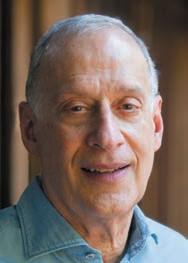
Gary Kusin
These stories track the reasons behind my development of a set of Leadership Principles which serve today as my business North Star.
What was the inspiration behind GameStop and what were the keys to GameStop’s impact and longevity?
GameStop was informed by deep analysis into the early rise of video game equipment and video games coupled with the knowledge that department stores were giving way to specialty store channels. My co-founder, Jim McCurry, studied the impact of advances being made in semi-conductor speed that would continue on an ongoing basis to much more robust gameplay in video games, soon to exceed the power of upright arcade video game machines. Understanding that the rise of this new form of entertainment would lead to large demand for new video games and an array of equipment to play those games made us feel like it was a good bet to create a specialty store concept and get first mover advantage in what would be a new major global type of entertainment. It worked.
What are the keys to developing an accurate “sixth sense” for finding opportunities for investment and growth?
Pattern recognition is critical and that only comes with an array of experiences and learning key takeaways from each. That leads to an ability to synthesize an array of inputs ranging from market size and growth rate to competitive sets, margins, and an understanding of the risks inherent in the category. Nothing is an exact science, mostly due to the capabilities of the founders and the surrounding team and financial markets appetite at the time to venture capital.
How critical has resilience been in your career and having the ability to take the biggest failures and frustrations and turn them into opportunities for growth and success?
I am pretty sure I have no example of a successful entrepreneur that didn’t have a wellspring of resilience, optimism, and passion. No one can see around corners, and no one has an unblemished track record. It is negotiating and maneuvering around speed bumps that determines success.
Will you discuss your career journey?
My recently released book, Always Learning , traces my growth and journey from my childhood to today, with stories illustrating my evolution from a small-town boy who couldn’t stay out of trouble to a CEO, entrepreneurial co-founder of two global brands, and corporate turnaround specialist.
“I graduated from college as a government major and had no idea I would become an entrepreneur. In Always Learning , I track that journey from a person with no idea what a career could be to the entrepreneurial co-founder, CEO, and business turnaround specialist that I became.”

How important is it for business leaders to have a continuous improvement mindset and do you feel this is a skill that can be taught?
Continuous improvement is a table stake for any successful company. And yes, I believe it can be taught and monitored. Business environments evolve, technology evolves, market tastes evolve, promotional approaches
evolve, etc. I think the key question here is measuring the importance and understanding the differences between continuous improvement and continuous change. Many companies need both.
Will you highlight your views on how to effectively manage emotions and employees during high-stakes brand mergers and acquisitions?
Critical to any successful merger or acquisition is open and honest communications. The entire organization needs to, on an ongoing basis, be filled in on what the integration objectives are, what the differences will be in the combined organization, and what will be the impacts of the changes. In addition, the entire company needs to quickly learn which people will comprise the new senior leadership team, who will lead the integration efforts, and what will be the communications process for everyone to ensure their thoughts are brought to the integration team in a timely basis.
You mentioned your recently released book, Always Learning . What interested you in writing the book and what are the key messages you wanted to convey in the book?
I realized from years of mentoring people earlier on their own journeys that my career stories helped give them confidence in their own abilities. This book enables me to mentor on a wider level. Additionally, I felt it important to show which leadership principles surfaced from my own journey, and to show how and why they emerged and how they came together in a form that, for me, has become my North Star in business.
Did you always know that you had an entrepreneurial spirit and desire to build your own businesses?
I graduated from college as a government major and had no idea I would become an entrepreneur. In Always Learning, I track that journey from a person with no idea what a career could be to the entrepreneurial co-founder, CEO, and business turnaround specialist that I became.
What do you feel are the keys to effective leadership and how do you approach your management style?
I go into detail on the evolution of my leadership principles in Always Learning There are six discrete principles – alignment, accountability, respect for others, open and honest communication, honesty and integrity, and continuous improvement.
What advice do you offer to young people beginning their careers?
Regardless of the job you are working, work harder than anyone else at that particular job. It is very hard to distinguish yourself in your workplace any other way. This hard work will lead to real competence at whatever it is that you are doing, if for no other reason that you do it so often. A person in the workplace who exhibits competence at their work gains the respect of others in the workplace. That respect leads to better opportunities for the person. And then do the same thing in your next assignment. So, four steps any person can follow in their workplace:
1. Work harder than anyone else.
2. Develop competence that can only come from repetitions on the job.
3. Gain respect for the competence you are showing each day.
4. Be promoted and start the process over.•
EDITORS’ NOTE Glenn Youngkin is a homegrown Virginian who grew up in Richmond and Virginia Beach. As his father changed jobs, Youngkin learned that moving around didn’t equal moving up – nothing was handed to him. From his first job washing dishes and frying eggs at a diner in Virginia Beach, he embraced hard work and responsibility to help his family when his father lost his job. His determination to succeed earned him multiple high school basketball honors in Virginia and an athletic scholarship to college. After earning an engineering degree at Rice University, and his MBA at Harvard Business School, Youngkin and his wife, Suzanne, moved to Northern Virginia. He landed a job at The Carlyle Group, where he spent the next 25 years. Working his way to the top of the company, Youngkin played a key role in building Carlyle into one of the leading investment firms in the world.
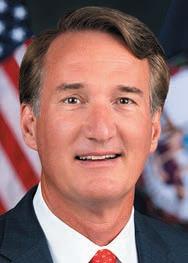
Virginians safe through initiatives such as Bold Blue Line. Additionally, we’re working on lowering the cost of living. Part of that was delivering $5 billion in tax relief for Virginia’s working families. It’s tough to highlight just a few priorities because we’ve transformed nearly every aspect of the government, from reducing DMV wait times, to transforming behavioral health services with Right Help, Right Now, to record-breaking job growth, and rethinking how Virginians are trained to take these great jobs.
Will you highlight your administration’s efforts to improve education in Virginia and reform K-12 education?
What attracted you to public service?
A lot of prayer and a lot of conversations with my family. I left a job running a company –a job I loved – because I felt called to serve my home state. I saw Virginia getting off track. Liberal policies brought low job growth, high taxes, heavy regulations, and an education system that lost parents’ trust, with communities facing record-high murder rates. My goal was to communicate a different path, and to people who had not heard it before or had chosen to vote for the other party. I realized that I had the opportunity to move Virginians of all political persuasions who were not satisfied with the Commonwealth – let’s talk about hope of a better Virginia and turn it into the best place to live, work, and raise a family.
Will you provide an overview of the priorities for your administration?
In Virginia, governors are limited to a single term. So, I have a clock in my office shelf that is counting down from four years, and I put that up the minute I was sworn in. It’s a reminder that we need to run at a sprint all the time on all our priorities. That’s exactly what we’ve done. We’ve focused on economic opportunity and education, making sure parents trust that their kids are getting a best-in-class education. We’re also investing in communities through programs like the Partnership for Petersburg and keeping
I believe the key to unlocking opportunity for all Virginians is improving our education system. We need high standards in schools so kids can excel. Unfortunately, expectations were lowered by previous administrations. We’ve been working to reestablish these high expectations so that our children can be proficient in reading, math, and science. My administration has also ushered in historic investments in education, launched a lab school initiative to inject choice and innovation into our public school system, raised teachers’ salaries 12 percent in our first two years and another
3 percent in each of the next two, passed the Virginia Literacy Act to improve literacy among elementary school-age students, renewed Virginia’s focus on career and technical education, and implemented the ALL IN Virginia plan to tackle persistent learning loss stemming from forced pandemic school closures through intensive tutoring in math and reading. Virginia’s kids should be able to go straight to work if they choose or continue their education through work-study programs, apprenticeships, and attending one of the amazing community colleges or four-year universities. At the heart of this, also, is putting parents back at the head seat of the table in their children’s education. Parents deserve transparency into what their kids are learning in the classroom, accountability at school, and control and choice in their children’s education journey. My administration has made it a top priority to return that right to Virginia parents.
How is your administration tackling Virginia’s behavioral health crisis and will you discuss your vision for the Right Help, Right Now plan?
In 2019 and 2020, Virginia was ranked 47th in the country for youth mental health support, and the situation worsened with the pandemic. That’s why we needed a plan to address the crisis and offer help before, during, and after a
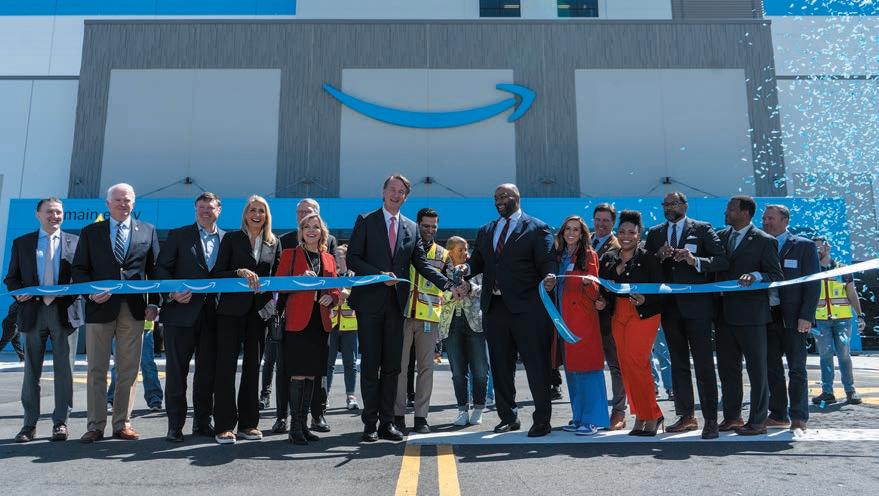
crisis. The Right Help, Right Now transformation was lauded to bring the best practices from across the country to Virginia. It’s been inspiring to work with the General Assembly on a bipartisan basis. We’re in the middle of this three-year change effort, and we’re seeing very positive results and we’ve devoted significant funding in each of the budgets I’ve signed into law toward delivering the Right Help, Right Now.
How is your administration working to build transparency and integrity in government?
My belief has always been that greater transparency leads to greater accountability. We saw that when parents stood up and demanded transparency in their children’s school curriculum. It’s really at the heart of greater parental involvement in our education system. Additionally, my administration has reduced Virginia’s regulatory burden, streamlined our permitting processes, and eased licensing restrictions for dozens of occupations in the Commonwealth. Data and transparency lead to results, and we’ve been delivering real results.
How critical is a strong public-private partnership in Virginia, and will you highlight your working relationship with the business community?
Virginia’s business community is thriving. Under my administration, Virginia has attracted companies committing nearly $71 billion in investments, including major corporations like Boeing, Amazon Web Services, Raytheon, and The LEGO Group, as well as expansions from companies like Hilton, Northrop Grumman, and Framatome. When businesses come, jobs are created, our tax base expands, and our economy really takes off. That’s what we’ve achieved in Virginia, and we now have more Virginians working than ever before in the history of the Commonwealth. Coming from the business community, I know many of these CEOs personally, and that has allowed for a better line of communication. We’ve successfully launched several important projects through public-private partnerships and we’re seeing the positive impact.

As you look to attract new industries and businesses to Virginia, how do you define the Virginia advantage?
Virginia’s biggest strengths are our pro-business environment, including a great workforce, top infrastructure, and business-friendly laws and regulatory system. As governor, I’ve vetoed legislation that would harm businesses and their workers. I’ve also sought to reduce overregulation and over-taxation that drove businesses and jobs away from Virginia. I’m proud that Virginia is a right-to-work state, and I’ll keep it that way. Our tax rate is also very competitive for the region, but we can do better. That’s why I passed $5 billion in tax relief during my first two years as governor and why I called for additional tax relief this year.
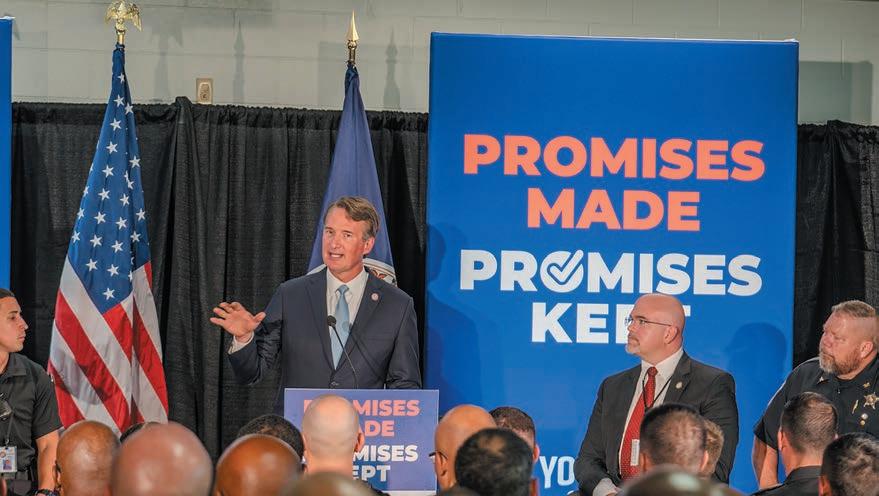
This is why many important companies choose to be here. If we don’t keep pace with our neighbors – North Carolina, Tennessee, even Florida and Texas – who have lowered taxes or started the journey to lower taxes, we will lose people and jobs to those states. I won’t let that happen.
With so much gridlock and partisanship in Washington, D.C., what do you see as the key ingredients in getting action and achieving results?
A critical step in overcoming gridlock is to foster a good working relationship with leaders on both sides of the aisle. I’m proud of the relationships I’ve made with House and Senate leaders. For example, I’m proud of the budget compromise we were able to sign this year that funded shared, bipartisan priorities while protecting Virginians from harmful tax increases. Sometimes it can be challenging, but the key is to keep any disagreements in the policy arena and not to make things personal. You don’t always get what you want – however, that’s politics in a purple state like Virginia.
With the success that your administration has achieved for Virginia, are you able to enjoy the process and take moments to celebrate the wins?
Each day, I start my morning with quiet prayer time. I do that to first thank God for putting me in this position, and then ask Him for his help. Serving as governor continues to be the greatest honor of my life and not a day goes by that I don’t reflect on how lucky I am to be leading our amazing Commonwealth. I tackle this job full of energy and enthusiasm because that’s what Virginians deserve from their governor. The big celebrations come from meeting with Virginians on a daily basis and hearing about how our policies are positively affecting them and their families.•































An
EDITORS’ NOTE Shiv Iyer is Accenture’s market unit lead for the U.S. Midwest and is responsible for clients, people, offices, community involvement, and financial performance across the Midwest. He is a member of Accenture’s Global Management Committee and the North America Leadership Team. Iyer also serves as the Client Account Lead for a global consumer products company, where he leads several digital transformation initiatives. Previously, as Accenture’s Midwest Strategy and Consulting lead, he was responsible for overseeing the company’s Strategy, Consulting and Data and Analytics practices. Prior to that, he co-led the creation of Accenture’s Competitive Agility center of excellence and led Accenture’s Consumer Products, Retail and Life Sciences consulting practices for North America. A regular contributor to the Consumer Brand Association, Iyer convenes conversations with CEOs and influencers from around the world and across industries. He began his consulting career at A.T. Kearney, where he spent a decade progressing to various leadership roles and joined Accenture in 2010 as a Managing Director. He serves on the Chicago board of Pratham USA, an organization whose mission is to ensure that every child is in school and learning well. Iyer earned both his bachelor’s degree in instrumentation engineering and his master’s degree in management sciences at the University of Mumbai; he earned an MBA from Indiana University’s Kelley School of Business.

Shiv Iyer
Accenture is a leading global professional services company that helps the world’s leading businesses, governments, and other organizations build their digital core, optimize their operations, accelerate revenue growth, and enhance citizen services – creating tangible value at speed and scale. Accenture (accenture.com) is a talent- and innovation-led company with approximately 743,000 people serving clients in more than 120 countries. Technology is at the core of change today, and Accenture is one of the world’s leaders in helping drive that change.
How do you describe Accenture’s culture and values?
At Accenture, we deliver 360° value, across six vital dimensions: clients, experience, talent, inclusion and diversity, sustainability, and financial. We help our clients use technology to drive enterprise-wide transformation through a strong digital core, moving to the cloud, leveraging data and AI, integrating custom applications and platforms, and embedding security; and optimizing operations, digitizing faster, accessing digital talent, and reducing costs.
We create meaningful experiences for our clients, people, and partners designed to build trust and strengthen our relationships, our work, and impact in our communities. In the case of talent, we anticipate our talent needs through skills data and signals from the market, allowing us to proactively identify the skills we need today
and tomorrow. We also have the agility to source talent internally to meet our clients’ needs and to give our people new opportunities to grow vibrant careers. By bringing together people with technology, data, and AI, we can access talent at the speed of business and at scale.
Our intention: to create a culture and a workplace in which all our people feel a sense of belonging and are respected and empowered to do their best work and to create 360° value for all our stakeholders.
Also, we help our clients advance their environmental, social, and governance goals by connecting sustainability to their transformations; operate our business with a strong commitment to the environment, ethics, and human rights; and work to create value in communities around the world. Finally, in fiscal 2023, we achieved another strong year of financial performance, driving shareholder value. These results allow us to create 360° value for all our stakeholders.
What have been the keys to Accenture’s industry leadership?
Talent is at the top of the list. As a company, we are laser focused on preparing people to work with new technologies. That is why, for example, we are doubling our AI talent to 80,000 people, and equipping more than 250,000 people with skills to use new AI tools equitably, sustainably and without bias. And we just launched Accenture LearnVantage to provide our clients with comprehensive technology learning and training services that will help them reskill and upskill their people in technology, data, and AI to reinvent their organizations and achieve greater business value.
“We have a proven approach to help our clients reinvent through innovation. We embed innovation in what we do, working with our clients across the world to imagine their future, including at our network of more than 100 innovation hubs.”
“Our intention: to create a culture and a workplace in which all our people feel a sense of belonging and are respected and empowered to do their best work and to create 360° value for all our stakeholders.”
How critical is innovation to Accenture’s business?
Organizations across industries are navigating complex challenges, creating a greater sense of urgency to accelerate business transformation and reinvention. All strategies continue to lead to technology, particularly cloud, data, AI, and security. We have a proven approach to help our clients reinvent through innovation. We embed innovation in what we do, working with our clients across the world to imagine their future, including at our network of more than 100 innovation hubs. Building on 35 years of innovation, our Accenture Labs continue to incubate new concepts and apply the latest technologies to deliver breakthrough solutions for business and society. In fiscal 2023, for example, we invested $1.3 billion in research and development (R&D).
Will you highlight the strength and leadership of Accenture’s U.S. Midwest market?
The U.S. Midwest market is home to a diverse range of industries including manufacturing, agriculture, technology, healthcare, and transportation. This diversity offers opportunities for businesses to tap into various sectors; to capture the significant business value, technology is key. For our clients, we offer the opportunity to collaborate and test drive ideas onsite at the Gen AI Studios at Accenture Tower, as well as in cities throughout North America and beyond.
Will you discuss Accenture’s focus on smart manufacturing and its partnership with Purdue University to establish the Accenture Smart Factory?
Smart manufacturing uses digital technologies such as artificial intelligence, the cloud, robotics, and 5G to build products. At Accenture, we believe that we are currently in Industry X. While Industry 4.0 focused on the adoption of new technologies, Industry X companies are driving operational intelligence through technology. Industry X connects engineering and manufacturing operations every step of the way to reimagine how products and services are designed and engineered, sourced and supplied, manufactured, and renewed.
There is an unquestioned need moving forward for a workforce with core knowledge and skills in this field – in fact, the need is outpacing the supply of qualified workers. This need drove our partnership with Purdue University to fund the Accenture Smart Factory, providing the school’s College of Engineering and Purdue Polytechnic Institute with instructional labs and design studios. Accenture is also granting student scholarships for the equivalent of four years of in-state tuition at Purdue. The program will include a Women in Manufacturing scholarship fund with the goal of promoting diversity, something that is in Accenture’s DNA.
What do you feel are the keys to effective leadership and how do you approach your management style?
Keys for effective leadership start with continuous learning and building great teams. In today’s fast-paced and evolving business environment, leaders need to dive in and have a deep understanding of industry trends, technological advancements, and market dynamics. Continuous learning enables leaders to adapt
to changes effectively, making informed decisions to drive performance. Importantly, learning fosters innovation and creativity within an organization. When leaders prioritize learning, they encourage a culture of curiosity and experimentation among their teams, leading to the development of new ideas, products, and solutions.
In the case of the great teams, to achieve that goal I focus on diversity which drives innovation. This is essential to cultivate a culture of collaboration, where team members support and complement each other’s strengths, resulting in increased productivity and efficiency.
How critical is it for Accenture to build a diverse and inclusive workforce to mirror the diversity of its clients and the communities it serves?
As part of our talent strategy, we hire and develop people who have different backgrounds, perspectives, and lived experiences. These differences ensure that we have and attract the cognitive diversity to deliver a variety of perspectives, observations, and insights which are essential to drive the innovation needed to reinvent companies. We treat inclusion and diversity like every other business priority. We share the progress toward our goals because we believe transparency builds trust. What advice do you offer to young people beginning their careers?
The advice I offer to young people is what I’d say to my younger self: Take more risks by getting out of your comfort zone. Don’t be afraid to fail. When that happens, pick yourself back up. Be fearless – just go for it.•
“Importantly, learning fosters innovation and creativity within an organization. When leaders prioritize learning, they encourage a culture of curiosity and experimentation among their teams, leading to the development of new ideas, products, and solutions.”
EDITORS’ NOTE Julian Adams is President and Chief Executive Officer of Stand Up To Cancer, and among the world’s foremost oncology researchers. Adams joined Stand Up To Cancer in July 2023 as its first Chief Science Officer responsible for setting strategic priorities that enhance SU2C’s research portfolio. He previously served as chief executive officer of Gamida Cell, a commercial-stage biopharmaceutical company working to develop cell therapies for blood cancers and rare, serious blood diseases. Prior to joining Gamida Cell, Adams was President of R&D at Infinity Pharmaceuticals, Inc., where he oversaw development of small molecule drugs to treat cancer. He earlier served in senior research leadership roles at Millennium Pharmaceuticals, Boehringer Ingelheim, LeukoSite, Inc., and ProScript. He is also a former member of SU2C’s Scientific Advisory Committee. Adams has received numerous awards and recognitions, including the 2012 Warren Alpert Foundation Prize for his role in the discovery and development of Bortezomib; the 2012 C. Chester Stock Award Lectureship from Memorial Sloan-Kettering Cancer Center; and the 2001 Ribbon of Hope Award for Velcade from the International Myeloma Foundation. He holds more than 40 patents and has authored more than 130 papers and book chapters in peer-reviewed journals. Adams received his BS degree from McGill University and his PhD from the Massachusetts Institute of Technology in the field of synthetic organic chemistry. He also received the degree of Doctor of Science, honoris causa, from McGill University in 2012.

What excited you about the opportunity to lead Stand Up To Cancer and made you feel it was the right fit?
I’ve worked with Stand Up To Cancer since its inception as a member of the Scientific Advisory Committee (SAC), so my familiarity with the organization is extensive. During my roughly 15 years on the SAC, I had the opportunity to work closely with some of the most brilliant minds in cancer research, which I found enormously satisfying. In many ways, it was a valuable complement to my private sector work as both a cancer researcher and senior executive. In July 2023, I had recently retired from my position as CEO of an innovative pharmaceutical company when I was asked to become SU2C’s first chief science officer. The opportunity to define this newly created position, lead the extraordinary SU2C science staff, and continue my association with my colleagues on the SAC was more than enough to lure me out of retirement. When the opportunity arose in early 2024 to fill the CEO role – and to implement my strategic vision across the entire organization – I accepted unreservedly. Turns out retirement is way overrated.
Will you highlight the history of Stand Up To Cancer and how the organization has evolved?
SU2C was the brainchild of nine dynamic women, all of whom were involved in the media and entertainment industry. Like almost everyone, each of them had, either directly or through a loved one, contended with cancer.
From the start, SU2C’s approach to cancer research focused on collaborative team science: assembling top talent from across disciplines and institutions into “Dream Teams” united by a common purpose to quickly move innovative treatments from laboratory to bedside. To identify the most promising approaches and provide rigorous oversight, SU2C enlisted the American Association for Cancer Research (AACR) as scientific partner and organized the SAC composed of leading researchers, including three Nobel laureates. To date, SU2C has funded almost 250 team science grants and awards, including over two dozen Dream Teams, engaging more than 3,100 researchers from 210 institutions in 13 countries. Not only has team science emerged as a standard research model, but numerous novel treatments developed with SU2C funding have dramatically transformed the standard of care for various cancer types. Over the past 16 years, SU2C has raised nearly $800 million in pledges to advance life-saving new treatments. Today, SU2C is working to cut cancer mortality by 25 percent in the next five years and by half in the next decade by sharpening its focus on the most promising new strategies, including vaccines that can prevent cancer, detection and interception of early-stage cancers, immunotherapies that can wipe out cancer before it spreads, and harnessing artificial intelligence to enhance and speed discovery in all of these areas.
How do you define Stand Up To Cancer’s mission?
ORGANIZATION BRIEF Stand Up To Cancer (SU2C) raises funds to accelerate the pace of research to get new therapies to patients quickly and save lives now. SU2C is a 501(c)(3) charitable organization and was initially launched as a division of the Entertainment Industry Foundation. Established in 2008 by media and entertainment leaders, SU2C (standuptocancer.org) utilizes these communities’ resources to engage the public in supporting a new, collaborative model of cancer research, to increase awareness about cancer prevention, and to highlight progress being made in the fight against the disease. As of April 2023, more than 3,000 scientists representing more than 210 institutions are involved in SU2C-funded research projects.
In 2008, these women established SU2C with the goal to accelerate groundbreaking research and discover new therapies for patients quickly. Their strategy was to engage the entertainment community to raise public awareness and funding for innovative cancer research. With Major League Baseball on board as a founding donor, SU2C officially launched with the first-ever “roadblock” fundraising telecast, simultaneously broadcast on all three major television networks (ABC, CBS, NBC). The hour-long special featured numerous celebrities from Hollywood and beyond, paving the way for seven subsequent biennial programs available on dozens of broadcast and streaming outlets across the U.S. and Canada.
The mission of Stand Up To Cancer is to raise funds to drive groundbreaking, collaborative cancer research that gets new treatments to cancer patients quickly. That has been our singular mission for 16 years.
While we are not stepping away from this mission, a strategic pivot we are emphasizing is the detection, interception, and treatment of cancers early, before they can take hold and become lethal. At present, only 10 percent of funding from the National Cancer Institute supports research in cancer prevention, detection, and diagnosis. It is an underfunded area of research, and we believe it is critical to ending this disease. With this approach, we can realistically aspire to cure most, if not all, cancer patients and reduce cancer mortality by 25 percent in five years and by 50 percent in 10 years.
Will you provide an overview of the work of Stand Up To Cancer?
Over the past 16 years, SU2C-funded research has contributed to more than ten significant breakthroughs that have changed the standard of care for many cancer types. For example, SU2C-funded clinical trials for children and young adults with blood cancer led to the first CAR-T therapy approved by the U.S. Food and Drug Administration (FDA). CAR-T therapies –which are less toxic than standard treatments –are now used widely for a number of cancers; clinical trials funded in part by SU2C contributed to the FDA approving a targeted therapy, used in combination with a hormone therapy drug, as an initial treatment for a type of advanced breast cancer; research funded by SU2C found a vulnerability in the DNA of aggressive prostate cancer, leading to clinical trials that laid the groundwork for a new treatment for advanced prostate cancer; a two-drug combination discovered by a SU2C-funded team was approved by the FDA, providing a new treatment option for patients with an advanced form of colorectal cancer; a drug combination tested in a SU2Cfunded clinical trial led to the first FDA approval for a difficultto-treat form of metastatic breast cancer; demonstrating the value of cross-disciplinary collaborations, a SU2C Dream Team pioneered a new treatment for advanced lung cancer by utilizing an immunotherapy combination originally developed to treat melanoma and prostate cancers; FDA approval for an immunotherapy drug as an initial treatment for difficult-totreat colorectal cancer has allowed patients to bypass more toxic cancer treatments, based in part on SU2C-funded research; a SU2Cfunded team conducted a clinical trial resulting in the combination of an immunotherapy drug, plus a cell-based immunotherapy called TIL therapy, becoming a new treatment for late-stage lung cancer; a clinical trial for difficult-to-treat rectal cancer – funded in part by SU2C – utilized an immunotherapy drug, resulting in cancer disappearing for every trial participant without the need for surgery; and demonstrating the promise of artificial intelligence and machine learning to detect and treat cancer, a team of SU2C-funded researchers used machine learning to identify pancreatic cancer proteins specific to individual clinical trial participants. With that information, they customized Messenger RNA (mRNA) vaccines to produce a strong immune response, enabling the patients’ own immune system to identify, target, and attack cancer cells.
collaborative team science. While we do provide smaller, individual research grants, the lion’s share of our funding is earmarked for the collaborative approach we pioneered back in 2008, which unites the brightest minds from multiple disciplines and institutions in common purpose.
The second defining characteristic of SU2C’s research model is our insistence on rigorous oversight. This derives both from our arrangement with AACR as our scientific partner, and from our independent SAC. All of our funding decisions and ongoing grant oversight involve these two consulting bodies.
Finally, SU2C research focuses on producing significant treatment breakthroughs quickly. We do not limit our research to any particular cancer type or treatment modality. We’re interested in approaches that can move rapidly from laboratory to bedside and save lives now. This is often high-risk, high-reward research.
open to exploring any approach that promises to accelerate the development of new techniques to prevent, identify, and eradicate cancer.
Advances in cancer research are not equitably distributed among all patient communities. SU2C addresses the inherent inequalities in healthcare in several ways: first, by conducting awareness campaigns focused on diverse communities to promote cancer screenings and clinical trial participation; and second, we believe it’s critically important that clinical trials include diverse patient populations. We know that individuals from various racial, ethnic, and genetic backgrounds have distinct vulnerabilities to certain cancers, and different responses to new or standard treatments. That’s why we insist on diversity in clinical trials to the extent possible.
How valuable is it in your role to have such an engaged group of founders and advisors?

More recently, with the goal of reducing cancer mortality by 25 percent in the next five years, we are expanding our scientific strategy to direct more resources to prevention and early detection and treatment, when the opportunity to cure cancer is strongest. This includes utilizing AI, machine learning, and large language model computing to prevent cancer with vaccines, as well as more precisely find or target specific cancer cells once they appear while minimizing damage to surrounding tissue.
This is just a partial list of SU2C research milestones over the past 16 years.
Will you discuss Stand Up To Cancer’s unique research models as well as its focus on addressing the inherent inequalities in healthcare?
There are three fundamental aspects that set SU2C’s research model apart: first, our insistence on
In addition to our primary Dream Team research model and the individual research grants mentioned previously, SU2C also utilizes three other approaches. SU2C Convergence brings together biological, physical, and computer scientists to better understand cancer biology in order to more quickly tailor treatments for individual cancer patients. SU2C Catalyst unites the pharma industry with academic scientists to rapidly accelerate clinical trials of new treatments and combination therapies. And SU2C Cancer Interception aims to find and treat cancer at the earliest possible point, perhaps even before a cancer cell has fully formed.
While we pioneered the Dream Team model, we aren’t wedded to it. Rather, we are
Our founders are incredibly dynamic and engaged, with a deep commitment to this work. I rely on them for their wise counsel and vast networks of current and potential funders. Indeed, our basic fundraising model gives us access to the entertainment community to promote awareness and garner media support, and that would have been impossible without this passionate and well-connected group of leaders. As a nonprofit, donation-supported organization, we would not exist, nor would we have been nearly as successful, without the involvement of a dedicated, energetic, and visionary group like this.
When you are addressing the issue of cancer that requires a long-term focus and commitment, how important is it for you and your team to take moments to reflect and celebrate the wins along the way?
The worldwide cancer research community has made incredible strides in reducing mortality and extending and improving quality of life for cancer patients. Having been deeply and personally involved with this effort for most of my career, I am proud of the extraordinary progress my fellow scientists have enabled and the millions of lives that have been saved. But at the same time, I’m keenly aware of just how much remains to be done. We need everyone to join this effort as we continue to fund groundbreaking cancer research to end cancer once and for all.
Today we are seeing the pace of that progress accelerate. Advances that took decades to realize in the past now can take only a few years. That is progress worth celebrating. Now, with the advent of AI, machine learning, large language model computing, and other novel applications of innovative technologies, we can reasonably hope to cut cancer mortality in half over the next ten years. That’s our goal, and I firmly believe that it is within reach.•
EDITORS’ NOTE On November 8, 2022, Governor Brian Kemp was re-elected to serve a second term as Georgia’s 83rd governor. Kemp’s political career began when he served as a state senator from 2003-07. He served as Georgia Secretary of State from 2010-18. He is a business owner, entrepreneur, and investor. A native of Athens, Georgia, Kemp started his first small business over 35 years ago with a pickup truck and a shovel. His experience as a small business owner has driven his mission to put hardworking Georgians first since taking office as Georgia’s governor. Governor Kemp, First Lady Marty Kemp, and their three daughters live on their family farm in Athens and are committed to building a safer, stronger Georgia for all who call the Peach State “home.”
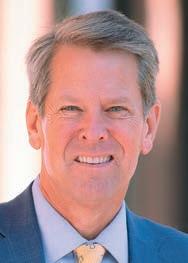
form of three straight record-breaking years for economic development. We know we must prepare Georgians to step into these opportunities, which is why we’re committing more to K-12 education in the FY25 budget than ever before and rolling out innovative higher education programs such as Georgia MATCH, the largest direct college admission program in the nation.
in healthcare workforce development. I’m especially proud that our Georgia Access and reinsurance programs have decreased premiums by 11 percent statewide, helping all Georgians prosper, regardless of their zip code.
How is your administration working to strengthen rural Georgia?
What attracted you to public service?
My wife, Marty, and I built our first business, Kemp Development and Construction Company, from the ground up with a pickup truck and a shovel. Like so many small business owners, we felt the struggles of those Friday nights around the dinner table as we tried to figure out how we would meet the upcoming payroll. In business and in life, I grew fed up with government standing in the way of its citizens’ success and ignoring their concerns. That’s why I ran for, and served in, the Georgia State Senate in the 2000s, then as Secretary of State –to cut red tape and streamline government.
Will you provide an overview of the priorities for your administration?
I believe our government should work for its citizens and ensure they can be successful when they work hard, and that vision has been the driving force for my administration. To help fight the negative effects of inflation, we’ve returned over $5 billion to Georgians through income tax refunds, homestead tax exemptions, and suspensions of the state motor and diesel fuel tax. This year, I also signed an acceleration of the largest personal income tax cut in state history and tied our corporate tax rate to match the cuts we are making to the personal income tax rate. We’ve been able to take these steps because of our responsible, fiscally conservative approach to budgeting.
Our commitment to attracting jobs and investment has yielded incredible results in the
Finally, I believe it is our government’s responsibility to promote the well-being of our citizens, which is why ensuring our communities are safe and have access to quality healthcare has been a defining feature of my time as Governor. We’ve made Georgia a national leader in the fight against human trafficking by cracking down on traffickers and buyers while ensuring we are a safe haven for survivors. We’ve taken the fight to criminal street gangs and supported our brave law enforcement who work every day to keep our streets safe. In that same vein, we are taking action to support our medical workforce by opening a new dental school and investing
As I said when I ran for Governor, we are committed to bringing opportunity to all four corners of the state. We’ve seen great success in that mission, with the vast majority of jobs and investment we have announced since 2019 coming to communities outside of metro Atlanta. We’re also strengthening rural healthcare, with 87 percent of Georgia counties now having three or more insurance carriers when in 2019 no county had more than two. With this influx of opportunity there is also a need for housing so Georgians can live where they work, which is why we’ve rolled out the Rural Workforce Housing Grant program. We just put another $106 million into this program that is helping communities build much-needed homes and I’m proud to say we are already seeing the roads paved and the frames going up.

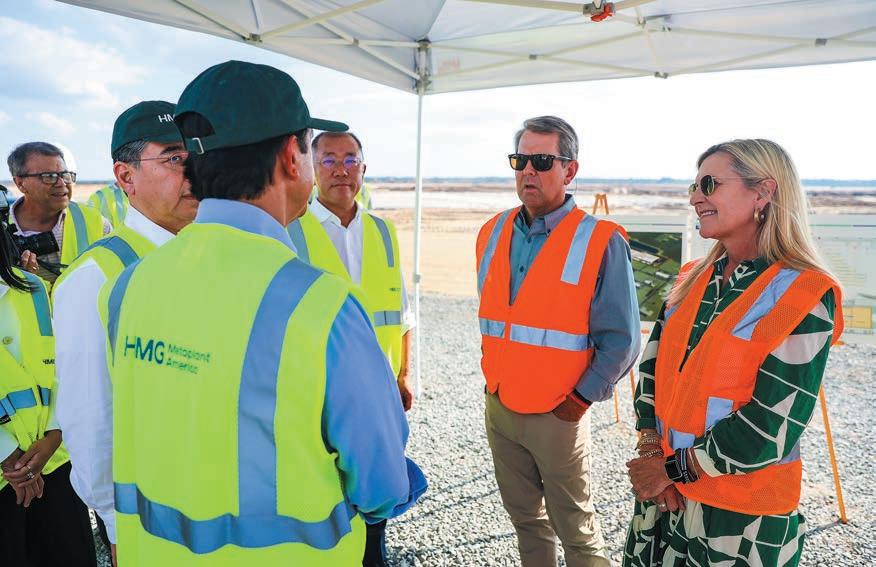
Will you discuss your administration’s work to build transparency and integrity in government?
One of the main reasons I felt the need to get involved in politics was because I was fed up with getting the government runaround every time I needed an answer. I tell my entire administration, from top to bottom, that whether the answer is a yes or no, we owe the people we serve a response so they can continue forward. We’ll keep working to ensure our state government is responsive and trustworthy.
How critical is a strong public-private partnership in Georgia and will you highlight your working relationship with the business community?
When I visit with companies in places as far away as Davos or Korea, or right here in the U.S., one of the strongest selling points we have is something I like to call “The Georgia Way.” It means at both the local and state level, across the branches of government, we work with job creators, not against them, to promote mutual prosperity. Just as we did during our response to the pandemic, we are always listening to our business partners on their needs and what actions we can take to help them have the opportunity to succeed. That approach has been at the heart of what makes Georgia the #1 state for business, a title we have held for an unprecedented 10 consecutive years.
As you look to attract new industries and businesses to Georgia, how do you define the Georgia advantage?
There are many aspects that set Georgia apart as the go-to destination for so many businesses, and we are prioritizing strengthening many of those areas. Starting with our reliable infrastructure network that connects companies to markets all across the world, we poured an additional $1.5 billion dollars into infrastructure
improvements this year. That’s in addition to the world’s most efficient and utilized airport at Atlanta Hartsfield-Jackson and our two deepwater ports of Savannah and Brunswick. We’re also committed to growing our capable workforce, as evidenced by Georgia MATCH connecting students with the higher education option that fits their goals. Finally, we know businesses look for a stable economy, which is why staying the course and budgeting responsibly have been our top priorities. We’ve maintained our AAA bond rating and will continue to promote fiscal responsibility while some politicians call for uncapped spending.
With so much gridlock and partisanship in Washington DC, what do you see as the key ingredients in getting action and achieving results?
It really comes down to a simple choice Washington DC politicians must make: are they going to do the job they were elected to do and that the American people are depending on them for, or are they going to remain bogged down with petty partisan bickering? Whether you agree or disagree with me, there is no question I have done what I told people I would do when I ran for Governor. With our partners in the legislature, we have raised teacher pay, balanced our budget, gone after criminal street gangs, and strengthened our communities in all four corners of the state. The federal government could learn a lesson from how we work in Georgia, where we put the interests of hardworking families first and take action together to fix the problems we face.
With the success that you administration has achieved for Georgia, are you able to enjoy the process and take moments to celebrate the wins?
There’s certainly a lot to be proud of in Georgia. We’ve broken records for creating jobs, attracting investment, and trade. There are more Georgians working than ever before and our unemployment rate remains near record lows.
I’m proud to share that story of success with anyone willing to listen, and I believe in my core that we are proof that conservative governance works. At the same time, we are fully focused on the job at hand. There is always more work to be done, and I always say that we cannot rest on our laurels. We weren’t elected to pat ourselves on the back or take a victory lap. We were elected to work tirelessly to keep Georgia the best place to live, work, and raise a family –and that’s what we’re going to keep doing.•
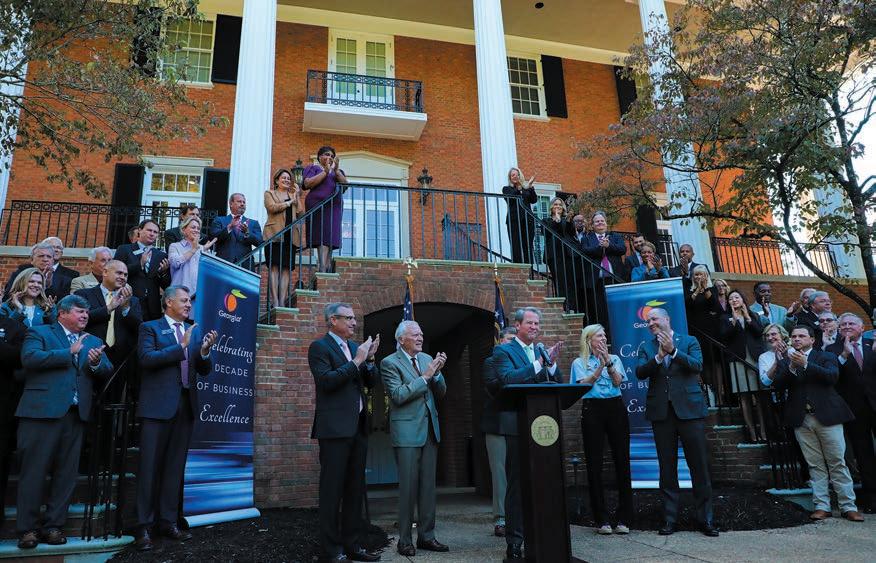
EDITORS’ NOTE John Carrafiell is the Co-Chief Executive Officer and a Board member of BGO. He has oversight responsibility for BGO’s global business activity with particular responsibilities for the firm’s U.S., European, and U.K. businesses and is a member of the firm’s Investment Committees globally. Carrafiell was a Founder of GreenOak Real Estate in 2010 and, together with the team, built the business organically to $12 billion of AUM in 10 countries prior to its 2019 merger with Bentall Kennedy. Carrafiell is a 37-year private equity, corporate finance, and real estate veteran. He became Head of European Real Estate for Morgan Stanley in 1994 and over the course of a 22-year career ascended to be Global co-Head of Real Estate. He also served as a member of the six-person Global Operating Committee of Morgan Stanley’s Investment Banking Division from 2005-2007. Carrafiell is a member of multiple outside company boards including Lineage, the world’s largest cold storage company where he is also a member of the Compensation Committee; Bulk Infrastructure, a leading European green energy data center company; Klepierre, a leading publicly-listed European REIT where he also chairs the Audit Committee; and Sandow Lakes Ranch, LLC, which owns a 32,000-acre master-planned mixed-use development community. Carrafiell holds a BA degree from Yale University.

John Carrafiell
years literally building houses with my hands. So, it’s almost destiny that I ended up in the real estate industry. When I graduated, I was looking for a challenging job that would allow me to pay off my student loans. Having studied philosophy at Yale, I didn’t really know what investment banks did, but I started in the two-year analyst program at Morgan Stanley in New York in 1987. Participants in the analyst program would rotate through different groups – M&A, restructuring, and corporate finance. I did a rotation with Morgan Stanley’s real estate corporate finance group and absolutely loved it, and I knew then that real estate was the route I wanted to pursue.
At the end of the two analyst years, the company had just launched a real estate team in their London office. I thought it was the greatest opportunity I could ever have, so I jumped at it and moved to Europe. Ultimately, that is how, despite having never studied or lived abroad in my life, I built a 32-year career in Europe.
Real estate investing, investment management, and real estate finance were new approaches in Europe then, so it was an exciting place to be a young professional in that industry. I built the base of my career there because we seemed to be inventing a new strategy or financial technique seemingly every quarter; from acquiring, managing, and securitizing NPLs, to investing in, then taking public, real estate companies.
At a fairly young age, I was asked to lead the real estate business for Morgan Stanley in Europe, which encompassed both the private equity investing and asset management business, as well as the investment banking business. So, in a way, since I was 30, I’ve led new and growing businesses, which is a bit surreal upon reflection, but that entrepreneurial spirit that drove my career decisions from the early days has never really left me.
When the financial crisis hit in 2008 and 2009, it was time for a career transition, and I finally answered an inner calling that was growing unavoidably louder – to start my own firm.
FIRM BRIEF BGO (bgo.com) is a leading global real estate investment management advisor, real estate lending advisor, and provider of real estate services. BGO serves the interests of more than 750 institutional clients with approximately $82 billion of assets under management (as of March 31, 2024). BGO has offices in 27 cities across 13 countries with deep, local knowledge, experience, and extensive networks in the regions it invests in. BGO is a part of SLC Management, which is the alternative asset management business of Sun Life.
Will you discuss your career journey?
My father was a masonry contractor. I worked with him every summer until I graduated from university. In terms of a five-day work week, I spent four and a half
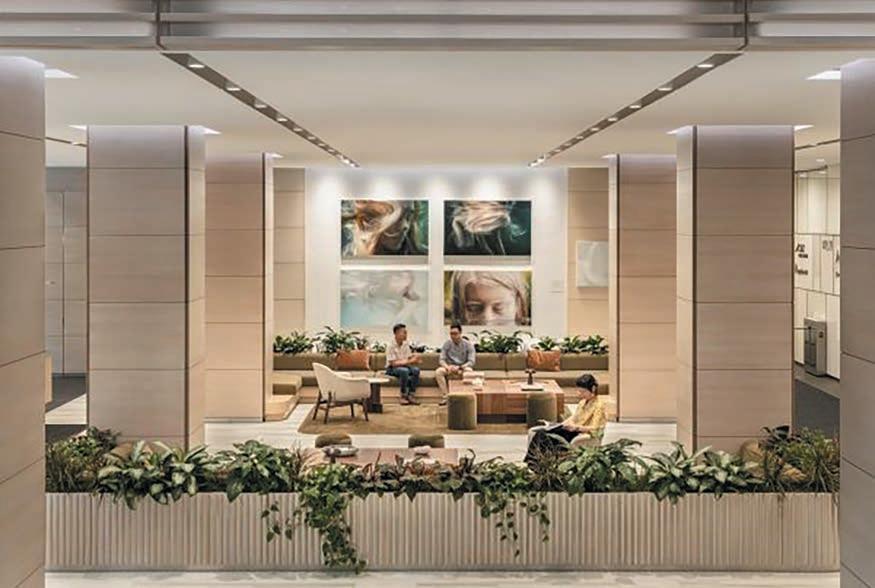

It’s not often you find a multi-billiondollar global company operating with a co-CEO model – only seven companies in the Fortune 500 have them. What has made this model work so well for you?
I was 44 when I decided to start my own business – I wasn’t ready to hang up my cleats. I wanted to do something entrepreneurial for my next chapter. I had worked with Sonny (Kalsi, Co-CEO of BGO) extensively at Morgan Stanley and we are good friends, so when he also decided to leave that company, we talked and agreed to form a new firm together – GreenOak Real Estate. Starting a new business is not for the faint of heart. So, we wanted to take this entrepreneurial journey together.
You wouldn’t think that two professionals who individually had led businesses for more than a decade could thrive in a partnership, but it has worked really well. Along the way, there have been several key milestones in this growth journey, including the merger with Bentall Kennedy when Sun Life acquired 51 percent ownership of the company.
A key to our success is that we have an unbelievable amount of respect for each other and are good friends. We make important decisions together. Even if we debate among ourselves, if we’re on different sides of a decision initially, we always come out with a joint decision that’s almost always better than where we started. We also understand each other’s strengths and let each other play to our respective strengths.
Another critical aspect is that we play different roles in our day-to-day work. The co-CEO model only works when you trust each other’s decisions, with a clear understanding of our respective accountabilities. We’re not trying to do each other’s job. We trust and respect each other, so we focus on different areas, but also know when we need to make important decisions together. We really are each other’s best sounding boards.
I’ve prioritized my time on evaluating and setting our short-term and long-term strategy, setting objectives, and leading by example in pursuing and executing many of our key strategic initiatives. Regionally, my focus has been on building our European business; and, since I returned to the U.S. in 2020, driving and accelerating our U.S. growth into key new sectors and initiatives.
How do you define BGO’s mission and purpose?
At the end of the day, millions of pensioners depend on the performance of our investments, and we take that responsibility seriously. So, first and foremost, we are disciplined and deeply committed fiduciaries and stewards of capital for the institutional investors who invest with us, as they trust us with the retirement income of the people they serve.
More broadly, we’re here to deliver for our owners, investors, partners, employees, and everyone who interacts with our properties. We’re investing in assets that become social drivers and economic engines, and then we’re delivering performance that safeguards the livelihoods of millions of working people and their families around the world. At the end of the day, investment performance drives all of it.
We pursue excellence in sustainability, and this permeates so many aspects of our business. Our approach to development and asset management are just a few examples of the frontline efforts to pursue continuous improvement in the environmental footprint of our portfolios. Our clients want to be invested in buildings that are managed to stand the tests of time and the challenges that come with constant change. Whether it’s striving for low or no carbon emissions, or making innovative social inroads with local communities, our buildings must be places where people want to live/work/play and enablers of prosperity for our investors, the communities in which they are situated, and the thousands of tenants who implicitly become our partners in this whole endeavor.
Another mission and purpose of BGO, and one that goes hand-in-hand with financial performance, is the nurturing of a highlyengaged, diverse, and inclusive workplace environment in which our employees can build their careers for the long term. Our employees reflect the diversity of the communities we serve, and this diversity of experiences, thought, ideas, and perspectives truly brings resilience to our investments.
What have been the keys to BGO’s growth and how do you describe the BGO difference?
At BGO, we place a lot of importance on developing, setting, and clearly articulating a forward-looking strategy for the firm. We also conduct research and development to identify and implement new strategies that will differentiate BGO from the pack and deliver alpha.
These strategies must have seven key characteristics:
1. A strategy that will play out over 10-20 years, not just three or five
2. High barriers to entry
3. Limited peer competition
4. Large addressable opportunity
5. Likelihood to have increasing institutional investor interest
6. Ability to have or be able to build a sustainable competitive advantage
7. Lower risk and volatility
If you can check most, if not all, of those boxes, that’s an opportunity to grow strategically.
One example of this approach was our entry into the cold storage sector, a subsector of logistics and industrial that we determined had most of those characteristics. With a great deal of focused human and financial capital invested in that opportunity over the past three years, BGO is now a leading player in the space.
Cold storage is one element of an overarching strategy that’s focused on what we call “mission critical infrastructure,” which also includes data centers, modern state of the art logistics assets, and selective housing. The world needs this mission critical real estate infrastructure, and you need domain expertise to produce and manage it. We are fortunate to have that expertise. So, we think those are going to be the areas of growth for us over the next decade.
Another example is a region and/or country we have made a priority from day one, where many competitors have not: Japan is a market where our local team has been on the ground for decades and is exceptional. We leverage our deep local expertise and relationships there, combined with our hands-on vertically integrated approach to investing and asset management, and the result is the team has built a seriously sustainable competitive advantage.
Another element of our success is that we identify some of our best team members and put them in a position to grow as individuals and leaders. When we identify these new growth vectors, we give these leaders the support – but also the room – to make those things happen. When you think about it, we’re replicating my experience as a
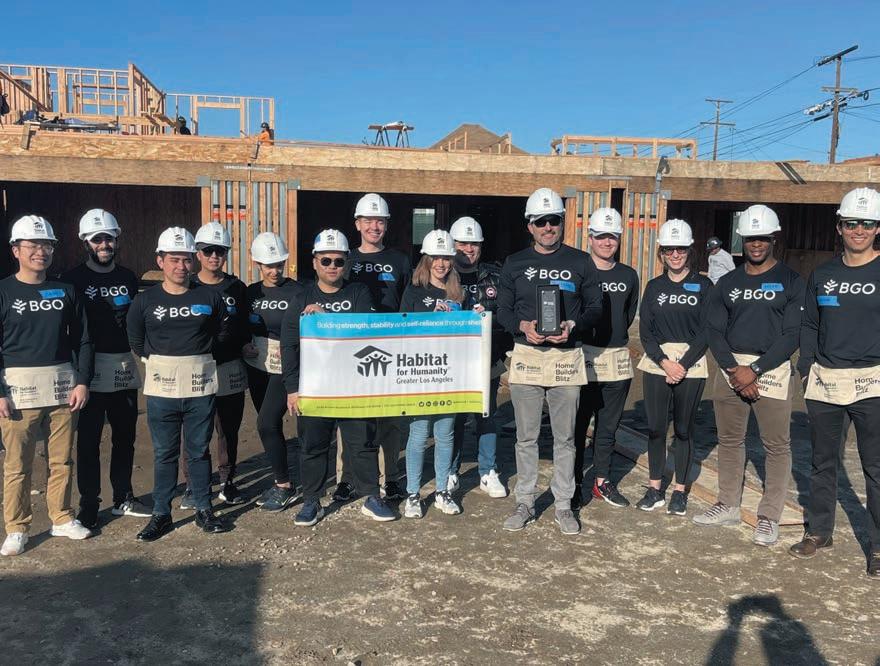
young professional in Europe. Teammates gain confidence and experience by being encouraged and being given the tools and resources to try new things and see them through. We’ve seen the process work before, and it’s working for BGO and some of our brightest people today.
The BGO difference is that we combine this deep, entrepreneurial experience and character with a robust institutional risk management approach to doing business. We act with speed and dynamism to uncover opportunities, evaluate them and, if they meet those growth criteria, aggressively pursue them. That’s a powerful combination, and less commonly seen in our industry.
Will you explain how BGO’s approach to data analytics has helped the firm gain a competitive edge?
One of the things that we recognized early on, and that we’ve built into the dynamic DNA of BGO, is the power of informational advantage. That process of gathering and analyzing data was essential to the rapid-fire development of innovative investment and financing strategies that helped propel my career in Europe back in the ’90s. It is what fuels our strategic approach today, and it’s been central to our firm’s rapid growth.
When it comes to data science in the commercial real estate industry, BGO has been an early adopter. We initiated our data science team more than four years ago, and we’ve invested heavily both in the team and in the infrastructure to facilitate the analysis of an unbelievable amount of data. More importantly, we’ve embraced the culture of data wholeheartedly. If the leaders at the top of an organization
don’t fully buy into the idea that this can be game-changing, it’s not going to be effective.
So, our chief data scientist sits next to me in our Miami office, and this culture of data and fact-based decision-making permeates the entire organization, so much so that people don’t even look at an investment without immediately accessing our proprietary data science analysis to enhance their investment insights and judgments.
Applying data science and analytics to demographics, supply and demand, and other variables empowers BGO to make better informed, predictive decisions about how a market or an asset is going to perform. The fact that we have the infrastructure, expertise, and proprietary predictive models, enabling us to gather and analyze that real-time data, and turn it into actionable insights relatively quickly and easily – that gives us a first-mover advantage.
When you hear about the benefits of data science in this industry, people often think about the offensive opportunities that it unleashes, but we are equally focused on the risk mitigation opportunities that surface when you use data science to understand the markets in a different way. For example, identifying which markets will have declining performance 2-5 years forward and selling those markets before our peers.
We have a remarkable team of people at the local level – our boots on the ground – who are active in all these investment management decisions. This information enables them to see more clearly into the future and better comprehend what’s going on in the markets that they’re charged with delivering on – both in terms of uncovering new opportunities and enhancing risk management.
Will you provide an overview of BGO’s global footprint?
BGO draws on the knowledge and experience of our real estate experts positioned in 27 cities and 13 countries around the world to target and deliver attractive real estate investment opportunities for our investors in key demographic markets in the United States, Canada, Western Europe, and Developed Asia. You must be local. We have been local in almost every market we operate in for 30 years or more.
We are one of the few global managers who are equally sizeable and active in Asia as we are in Europe and North America. Our presence in Asia, for example, means we’re well-positioned to broaden our platform there, where we believe there’s so much untapped opportunity for growth.
What do you feel are the keys to effective leadership and how do you approach your management style?
Teamwork is absolutely critical at BGO and is key to the success of our mission. For me, teamwork is about inclusion, listening, and active mentorship. It’s also about being appreciative when people do well – and making sure you say those words out loud.
The business of real estate is an apprenticeship. You can’t learn it in a book or in school. It really can only be taught by interacting with other team members who have already been through the highs and lows of economic cycles and marketplace dynamics. There’s no substitute for that. So, it’s hugely important to have people who are good at developing talent, mentoring, teaching, listening, and being supportive.
I really like to say we are all players/ coaches as leaders. Our teams want to see us in action, not sitting in our corner office. That’s how they learn. That’s how they get inspired. That’s how we mentor and develop talent and our unique culture of teamwork.
I’m also very passionate about our business. It sounds like such an obvious thing to say, but I truly love what we do. For me personally, if you don’t bring passion to work every day, it’s hard to perform at your best. We try to instill and exude this passion, and we try to hire people who share that enthusiasm.
Last, but certainly not least, we have an absolute pursuit of excellence. We’re not here to be average, or simply better than average. We have a continuous improvement mindset and an aggressive pursuit of excellence in everything we do, and the success of what we achieve is a shared experience that inspires more of the same.
All of these things are essential in ensuring we excel in our mission to be exceptional fiduciaries and trusted stewards of capital for the institutional investors who place the livelihoods of their constituents in our hands. The simple fact is – we love what we do; we get to wake up every day and help shape the future of so many neighborhoods and cities and deliver opportunity for the people who call these places home, and we engage in that role with teammates who really enjoy working with each other.•

Hearts are remarkable. Small yet powerful, they do a lot of heavy lifting for you and the ones close to you. Yet heart disease remains the #1 killer of both women and men.
At Mount Sinai Fuster Heart Hospital, our experts are advancing the understanding of hearts to offer more accurate diagnoses and better treatments—so you can get back to all you love, without skipping a beat. We get you, and we’ve got you.
Learn more at mountsinai.org/heartcare
An Interview with Carmela Wallace, Founder,
EDITORS’ NOTE Carmela Wallace loved challenging her son, Jarad Higgins, to games of pinball. As a mom she had to pick her battles, one of those being between having her son perform in the school band or allowing him to pursue a music career. He would sneak off in the afternoon to go to the studio and once found his mom waiting for him. She supported his passion by allowing him to continue to record in the studio and pursue his music career and gave him a gap year to make his dreams a reality. His career took off, and Carmela would leave her job in quality management to help manage his stratospheric success – though she declined to call him Juice WRLD. Carmela founded Live Free 999 as a mother who lost her son to a drug overdose. She was overwhelmed by the outpouring of love following Jared’s death. His music influenced so many lives, particularly young people, and she hopes to continue his legacy through Live Free 999. She believes that if she can prevent even one mother from experiencing such a tragic loss, she will have succeeded. Helping others is a part of her healing. Carmela and Jared shared a close relationship, free from judgment, that allowed him to talk openly about his mental health struggles and addiction. She hopes Live Free 999 will remove the stigma and normalize conversations about mental health and substance abuse. Her goal is to ensure that no parent or loved one faces what she faced.

Will you discuss your career journey?
My background is in quality assurance where I worked in various industries, including manufacturing and construction. The final position that I held was in the utility industry where I worked until January 2019, at which time I left to manage my son, Jarad’s, affairs. I have an MBA with a major in project management. I never imagined using my skills and experience in this way. Fame and success came very quickly for him, and I wanted to remain close to him and protect him as much as possible.
What was your vision for creating Live Free 999?
I remember the moment I decided to do something. It came from reading messages from Jarad’s fans – the outpouring about how his music helped them cope with anxiety and depression; thankfully, some even said it helped prevent them from committing suicide. According to the National Survey on Drug Use and Health, 19.7 million Americans (12 and older) battled a substance disorder in 2017. I felt that there was a void and something needed to be done, so I founded Live Free 999 in Jared’s memory. I was originally going to call it the Jarad Higgins Foundation, but I wanted to name it something that was more lively and that would fit him. I was looking at old photos from a vacation, and when I saw the photo of him in a denim jacket, with “Live Free” painted on the back, I knew that was the right name for the foundation. Jarad had created 999 to be the opposite of 666 to “turn all the
hell around,” so I thought it was perfect. The name Live Free 999 came from Jarad.
How do you describe the mission of Live Free 999?
Our mission is to normalize the conversation around mental health and substance dependency and to let people know that they are not alone. My goal is for no one to suffer in silence. We provide outlets for people to receive help and human connection, such as our partnership with Crisis Text Line that offers a texting service allowing people to reach out and get immediate help when they feel that they need to talk to someone and are alone while going through a crisis. They can text LF999 to 741741, and they will be immediately connected with someone who will help them and talk them through whatever they are going through.
We are focused on keeping the conversation going, which is why we feature individuals sharing their stories on the Live Free website. The conversations share stories of triumphs, struggles, and offer encouragement and hope to those who are facing challenges. It is important to hear from others who have been where you are and are on the other side of it. The only way to normalize the conversation around mental health is to have the conversation.
We support organizations that have proven methods in place that work. We give grants to those that are aligned with the mission of Live Free 999, and we are focused on continuing to build our presence and impact.
What do you feel made your son’s music connect to so many people?
FOUNDATION BRIEF Live Free 999 (livefree999.org) was founded by Carmela Wallace to honor her son Jarad “Juice WRLD” Higgins. Wallace was inspired to name the foundation Live Free 999 after finding a photo of Jarad wearing a denim jacket he bought from a thrift store; on the back of the jacket, he’d painted “Live Free.” Through financial grants and partnerships, Live Free 999’s mission is to support programs that compassionately and successfully address addiction, anxiety and depression, while normalizing the conversation around these issues. Beyond offering financial support, Live Free 999 is focused on continuing the conversation around mental health and addiction. Live Free 999 is a fund of the Entertainment Industry Foundation (EIF), a 501(c)(3) tax-exempt organization. EIF is a Charity Navigator Four-Star Charity that meets all 20 Better Business Bureau charity standards and carries the Candid Platinum Seal of Transparency.
“Our mission is to normalize the conversation around mental health and substance dependency and to let people know that they are not alone.”
I think Jarad’s music connected with so many people because he was so in touch with his feelings and was just honest. His emotional honesty – he put it all out there – and people feel that someone was able to express and communicate the way they themselves were feeling. Jarad’s music resonated with them and made them feel better and that they were not alone. Jarad’s willingness to be open and transparent about his struggles helped others deal with their anxiety and depression. I think it broke a barrier and made them feel that someone understood how they were feeling.
You have said that “Juice WRLD touched the world, but Jarad was my son.” What do you want the world to know about Jarad “Juice WRLD” Higgins?
I raised my son to see people. I raised him to pay attention, and he did that through his music. He saw people; he touched people; he let them know they were not alone; and he truly cared about people. He always wanted to leave a lasting impression.•
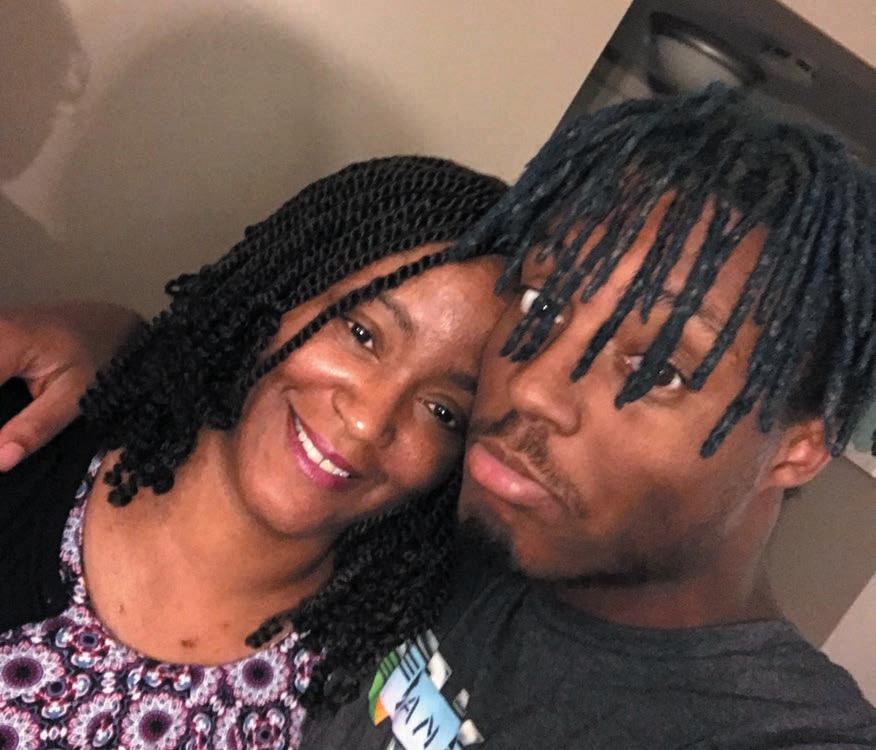
“It is important to hear from others who have been where you are and are on the other side of it. The only way to normalize the conversation around mental health is to have the conversation.”
“Jarad’s willingness to be open and transparent about his struggles helped others deal with their anxiety and depression. I think it broke a barrier and made them feel that someone understood how they were feeling.”

An
EDITORS’ NOTE Simon Berg is a British entrepreneur and thought leader in AI and creativity. He is the founder of Ceros. Since founding Ceros in 2012, Berg has raised over $100 million in funding from leading funds like Sumeru Equity Partners, Greycroft Ventures, Grotech Ventures, and Andreessen Horowitz with the mission of unlocking creativity through technology. To further that mission, Berg led the creation of Gemma in late 2023 – an AI creative assistant that inspires and empowers people to be more creative. Gemma also works alongside the Ceros Creative suite of tools Studio, Editor, and MarkUp. Prior to Ceros, Berg worked for over two decades at BORN Group (formerly Group FMG) starting as a gofer and eventually serving as CEO. Berg has been featured in publications such as Forbes, TechCrunch, Fast Company, and Entrepreneur for his work in tech, creativity, and AI. He is also passionate about empowering young people to be more creative and is an active supporter of organizations like The Creative Ladder and Virtual Enterprises.
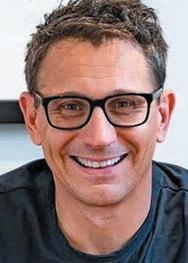
Simon Berg
empowers marketers, designers, and brands to create interactive content and digital experiences. Ceros has grown to hundreds of thousands of users and 1,000+ customers, including Red Bull, Conde Nast, Universal, Buzzfeed, LPL Financial, and more. The brand likens itself to a user-friendly content studio that allows businesses to easily create everything from microsites and pitch decks to product demos, landing pages, and reports that are eye-catching, highly creative, and go against the grain. Industries from B2B tech to healthcare, financial services, retail and hospitality can benefit from using Ceros to fit their creative business needs, amplify ROI and get things done.
Will you discuss your career journey?
I left school at 16, not out of a desire to start working immediately, but because the traditional educational system felt constrictive. The challenges were not just academic; my childhood was overshadowed by the strife at home, where the constant discord between my parents created a chaotic environment. In that turmoil, creativity became more than an escape – it became a means of survival.
myself that the pressures of a typical path could have easily extinguished. My professional journey began in creative production, a field where I could transform my ideas into reality and empower others to explore their creative potential.
As I climbed through the ranks, from my initial steps at FMG to my leadership role at Ceros, my career was more than about ascending a corporate hierarchy – it was about proving that adversity could be a catalyst for innovation. My tenure at Ceros was driven by a core belief in the vital role of creativity and its power to inspire and transform.
Recently, I made the significant decision to step down as CEO of Ceros. This move was guided by the same principles that have always directed me – authenticity and a deep understanding of my capabilities and the needs of the company. Recognizing that Ceros required a different type of leadership to thrive, I chose to pass the mantle to someone equipped with the precise skills needed for its next chapter. This transition marks not an end, but a transformation – an opportunity to explore new paths and continue advocating for creativity from a new perspective.
COMPANY BRIEF Ceros (ceros.com) is an AI-powered content creation platform that
This wasn’t merely about discovering a passion; it was about preserving a part of
As I continue to serve on Ceros’ board and support our new CEO, my journey remains fueled by a relentless passion for creativity, a
“As I climbed through the ranks, from my initial steps at FMG to my leadership role at Ceros, my career was more than about ascending a corporate hierarchy – it was about proving that adversity could be a catalyst for innovation. My tenure at Ceros was driven by a core belief in the vital role of creativity and its power to inspire and transform.”
“As I continue to serve on Ceros’ board and support our new CEO, my journey remains fueled by a relentless passion for creativity, a trait that has defined my entire career and will continue to define my future endeavors.”
trait that has defined my entire career and will continue to define my future endeavors.
What was your vision for creating Ceros and how do you define its mission?
My vision for Ceros was driven by a core belief in the vital role of creativity and its power to inspire and transform. Its mission has always been to unlock creativity. Ceros was created to empower brands to create richer, more engaging brand experiences and tell better stories. It has real-time collaborative tools for marketers, designers, and anyone that revolutionizes the way designs are created.
Will you provide an overview of Ceros’ capabilities?
Ceros is a content creation platform that helps you easily create digital experiences and content. Since its inception, Ceros has grown to hundreds of thousands of users and over 1,000 enterprise clients such as Colliers, Getty, McKesson, McKinsey, Pepsi, and Red Bull to name a few. For the last 12 years, Ceros has been used by designers and marketers in Fortune 500 businesses across all sectors including tech, healthcare, financial services, real estate, consulting, and entertainment to create digital content such as microsites, pitch decks, product demos, reports, and more.
Where do you see the greatest opportunities for growth for Ceros?
Ceros has been known as a company that cares about creativity and can help enterprise clients and people be more creative through technology. It demonstrates how AI and creativity overlap, allowing companies to learn by utilizing Ceros. Being a trusted partner with many enterprise clients, I see many more opportunities to facilitate creativity for larger organizations.
Will you highlight your passion and efforts around empowering young people to be more creative?
I found the love of creativity to help me through difficult times when I was younger. It became a coping technique for me, and because of that I didn’t do what 95 percent of the population does and kill their curiosity, so I embraced it. I believe the world we are in now needs more curiosity because we are facing immense challenges, none of which are explained in a textbook. So, what we have to do to solve these problems and overcome these challenges is find new ways that have not been thought of.
For example, people believe that AI is going to destroy the world, but what if we look at it with open eyes and utilize its abilities? It could be a force multiplier for how to help solve problems and certainly solve some tough problems that already exist. In short, I do want people to be more creative, but be curious too.
Did you always know that you had an entrepreneurial spirit and desire to build your own company?
I don’t think I wanted to be an entrepreneur when I was younger. I believe I found my way into it by being curious. I was the child that loved to take things apart and put them back together to see how they operated. I even took apart my video game system as a child to see how it worked, and I once built a cherry soda machine from spare parts. My curiosity put me on a track of understanding and trying to solve problems that greatly helped me become who I am today.
What do you feel are the keys to effective leadership?
Being human. I want people to see emotions and understand that not everything is designed in an MBA course. Many times, failure is going to occur, and people have a right to be upset, but what they have to do is take the emotions learned from the failure and move forward. I believe in the consensus of thought – I would rather have 20 percent of the plan complete and everyone on the team focused on achieving the overarching goal. The more trust you build with your team, the better the results will be.
What advice do you offer to young people beginning their careers?
Don’t chase the money. Pursue your passion.•
“My vision for Ceros was driven by a core belief in the vital role of creativity and its power to inspire and transform. Its mission has always been to unlock creativity. Ceros was created to empower brands to create richer, more engaging brand experiences and tell better stories.”
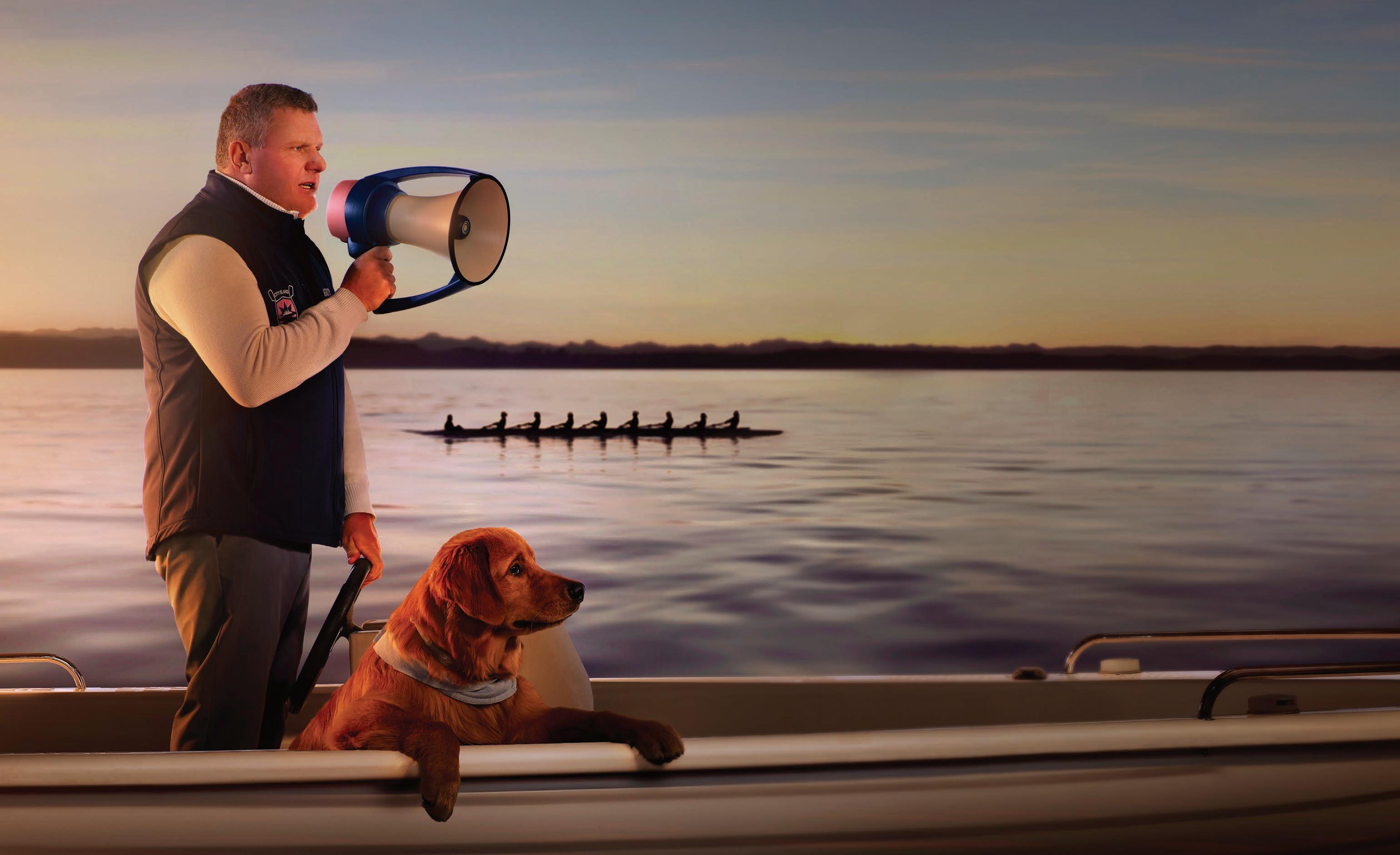
“I technically died, and here I am. I’m incredibly lucky. I could not have been in better hands.”
—Guy Monseair, City Island Rowing Coach

“We had an immediate critical decision to make in the race to save Guy’s life. We decided to proceed with emergent quadruple coronary artery bypass surgery despite Guy’s swollen and weak heart resulting from his acute heart attack and cardiac arrest. There are very few health systems in the country with the knowledge base and the skill that we have at Monte ore Einstein for managing these kinds of complex life-threatening conditions.”
—Robert Michler, MD
Surgeon-in-Chief and Chair, Surgery and Cardiothoracic and Vascular Surgery
Monte ore Einstein
See Guy’s story at monte ore.org/guy
EDITORS’ NOTE Clinical neuroscientist, psychiatrist, and author, Dr. Jeffrey Lieberman’s groundbreaking research on the neurobiology & pharmacology of behavioral brain disorders has advanced the understanding and treatment of mental illness and pioneered a transformative strategy for the early detection and prevention of schizophrenia. He is a past president of the American Psychiatric Association, a member of the National Academy of Medicine, and the recipient of many academic awards, including the Brain & Behavior Research Foundation’s Lieber Prize. Over his 40-year career, Lieberman has treated thousands of patients with serious behavioral brain disorders and his research has been published in more than 800 scientific articles. A frequent public spokesperson on mental illness and psychiatry, he has contributed to healthcare policy and federal legislation – including the Mental Health Parity and Addiction Equity Act, the Patient Protection and Affordable Care Act, and the Helping Families in Mental Health Crisis Act – to improve access and quality of mental healthcare while reducing the stigma associated with mental illness. Today, he is actively involved in several initiatives aimed at disentangling mental health and the criminal justice system and reducing the harmful effects of Americans’ unmet mental healthcare needs, including homelessness, incarceration, overdose, and suicide. He is the author of the critically acclaimed book, SHRINKS: The Untold Story of Psychiatry, which became the basis for the four-part PBS series, Mysteries of Mental Illness . His 2023 book, Malady of the Mind: Schizophrenia and the Path to Prevention, has been heralded as “the most important book about schizophrenia in decades, and perhaps ever” and was released in paperback in April 2024.

Jeffrey A. Lieberman, MD
modern medicine had the capacity to not only suppress the symptoms of schizophrenia, but potentially prevent its progression and disabling effects. I was motivated to challenge the dogma, but what galvanized my intellectual questioning into action was the plight of one patient.
He was 20 years old, intelligent, charismatic, with limitless potential. As a college freshman, he started behaving strangely, missing classes and eventually was admitted to the hospital with his first psychotic episode. He was diagnosed with schizophrenia and treated with medication, to which he responded well, but soon made the common mistake of stopping medication, thinking his bout with psychosis was a one and done experience. When his symptoms predictably recurred, I asked my supervisor for advice – but instead of offering wisdom or empathy, he told me, “You just have to let some patients learn the hard way by suffering multiple relapses before they accept the need for treatment.”
I was stunned. A patient’s life was at stake, and the supervisor’s response was not only shockingly callous, but entirely misguided, as though my patient with schizophrenia was an alcoholic who just needed to hit rock bottom.
This experience prompted me to pursue research that would elucidate the underlying pathology of schizophrenia and determine if treatment could not just alleviate symptoms, but also prevent its devastating progression. Thirty years later, I’m pleased to say that we have changed the perspective and paradigm of treating people with schizophrenia, and now have the capacity to modify the course of the illness and avert the persisting symptoms and lasting disability. Moreover, through emerging strategies for early detection and intervention, we are on the brink of being able to prevent its onset altogether.
of Freud’s model of the mind and found answers to questions about my inner self – my tendencies, relationships, struggles – answered through his teachings. The second thing that set my path toward psychiatry was really a matter of timing. As a child of the 1960s – the era of recreational psychoactive drugs, psychedelics in particular –I was profoundly impacted by the notion that a small dose of a chemical substance like LSD could induce such a powerful, altered state of consciousness. Based on this, it seemed possible that abnormal behavior associated with mental illness could be due to inborn errors of neurochemistry. Therefore, in medical school, I studied biochemistry of the brain and how psychotropic drugs could affect therapeutic changes in persons with mental illness – and thus, the focus of my professional path was defined.
You pioneered a transformative strategy for the early detection and prevention of schizophrenia. Will you highlight this work?
I began my research in the 1980s by studying patients at the beginning of their illness and characterizing the course of the disease. This research demonstrated that schizophrenia was a progressive disease, characterized by a worsening of symptoms and deterioration of cognitive function caused by brain volume loss over time.
From there, we determined that treatment intervention at or soon after onset can alleviate the symptoms and limit the disabling effects of brain volume loss. In fact, most patients who are promptly treated with antipsychotic medication after their first psychotic episode will experience substantial or complete remission –which can be sustained with ongoing medication and psychosocial therapies in conjunction with a supportive family environment.
Will you discuss your career journey?
My career began at the time when little was known about schizophrenia, and psychiatry’s predominating belief was that those afflicted with the disease were “doomed from the womb” due to genetic factors that altered brain development and left them resistant to treatments. I was not only offended by the implication that nothing could be done for these patients, but found this notion implausible. I believed that
Did you know at an early age that you had a passion for the field of psychiatry?
No, I was initially inclined to be a heart or brain surgeon. Two things led me to focus my medical career on the brain, and psychiatry in particular, which studies disturbances in the brain affecting mental functions and behavior. The first was Freud. As an undergraduate, I read Freud’s seminal work, Interpretation of Dreams, and was captivated by his explanations of how the mind works. I was able to see myself through the lens
Today, we’re developing strategies to prevent the onset of the illness altogether by early detection and intervention during the prodromal period, when symptoms begin to develop.
What are your views on the mental health crisis occurring today and what are the keys to effectively addressing this crisis?
Governments have a responsibility to provide healthcare to their citizens – and the standard of care should be defined by the current level of medical knowledge. Sadly, the United States healthcare system does not meet this standard, and when it comes to mental healthcare, the situation is far worse.
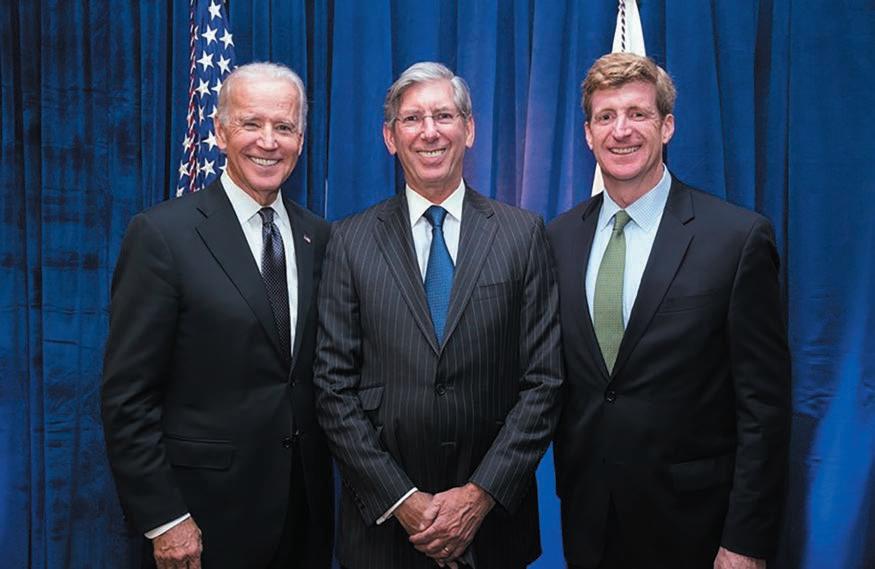
In the case of people with schizophrenia, the limiting factor is not our level of knowledge, but inadequate financing, lack of infrastructure, and obstructive government policies that limit access to high-quality, comprehensive mental healthcare. This sad situation reflects a discriminatory disregard for a segment of the population affected by serious mental illness, and in my opinion is a civil rights violation.
To improve mental healthcare, we need to have different strategies for different strata of the population and types of illness:
• Screening in schools for intellectual and learning disabilities
• Pre and postnatal maternal mental health surveillance and care
• Protocols for immediate treatment of experiential trauma
• Employment and education-based mental health services
• Expanded clinical infrastructure and trained multidisciplinary workforce (e.g. Residential Facilities, Mobile Crisis Teams)
• Increased funding for mental illness research
• Policy changes including modifying civil commitment and treatment over objection criteria; modifying HIPPA; repeal IMD exclusion; mental health courts and diversion programs; and government legislation informed by public health and safety with regard to recreational intoxicants (e.g. cannabis, psychedelics, MDMA).
Do you feel there has been progress in addressing the stigma around mental illness?
We’ve made some progress in addressing mental health stigma, but we’ve still got a way to go. Stigma persists as one of the biggest barriers to seeking and receiving mental healthcare; many people are still not well informed about the nature of mental illness or how to seek competent care
either for themselves or a loved one. The media is starting to bring the topic of mental health into the light, especially as we see more celebrities and public figures speaking out about their own mental health struggles – but we still have a way to go, particularly when it comes to informing the public and reducing stigma around mental illness. Schizophrenia is most often covered in the context of a mass violence tragedy; very rarely do we get to hear about the effective treatments that can control its symptoms and halt its progression.
What more can be done to improve access to and quality of mental healthcare?
This is neither a quick nor easy fix; the bottom-up approach, while commendable, is piecemeal and has a limited impact on population health. A coordinated “top-down” approach is vastly preferable, where federal and state governments work in a coordinated fashion and follow a carefully developed data-driven blueprint based on population frequencies of mental, substance use, and developmental and neurodegenerative disorders. This data would determine the scale of facilities, scope of services, roster of personnel and disciplines, and guide the establishment of infrastructure along with appropriate education and training. Healthcare financing must also be revamped. Currently, private and government insurance benefits rarely come close to covering the cost of high-quality mental healthcare, which requires a disease management approach in which multidisciplinary care is available to cover the range of patient needs. Consequently, psychiatry is the medical specialty with the lowest percentage of practitioners who accept insurance, and most often require patients to pay out of pocket.
Where did your interest in writing books develop and will you highlight the key messages you have wanted to convey in your books?
After writing 800 articles and 11 books on research and clinical psychiatry for medical and scientific audiences, I realized that the major limitation in mental healthcare was not our lack of knowledge and the existence of effective treatments, but the limited awareness of the lay public about what mental illness was, and when and where to seek treatment. In other words, we were not making available, and people were not accessing, the tools we had for reducing the morbidity of mental illness.
Therefore, after 30 years focused on research and clinical care, I began to use my voice in the media, writing op-eds, sending press releases, and appearing on cable news programs where I’d share accurate information about mental illness and mental healthcare with the general public. I also ran, and was elected president of, the APA to expand visibility and awareness beyond the scientific community. It was this leadership experience, serving as spokesperson for the field of psychiatry, that motivated me to write a first book for the lay public, SHRINKS: The Untold Story of Psychiatry, in 2015. In 2023, I published Malady of the Mind: Schizophrenia and The Path To Prevention, with the mission of shedding light on this long misunderstood disease, for which we now have highly effective treatments – and in doing so, offer real hope and answers to anyone who has ever been impacted by this disease.
What advice do you offer to young people interested in pursuing a career in medicine?
The study of medicine is endlessly fascinating and one never stops learning – it can also be at times painful, frustrating, and exhausting. There are long hours, bureaucratic and regulatory constraints, an excessively complex healthcare financing system, and patients that don’t improve despite your best efforts. A career in medicine should appeal to individuals who thrive in the life of the mind, are intellectually curious, and who derive great gratification from helping people and contributing to humankind.
My advice to young people pursuing a career in medicine would be to carefully consider the path you’re best suited to. An academic career, for instance, offers the opportunity to be in an environment of constant exploration and intellectual stimulation – but research is not for the faint of heart; it requires discipline, capacity for rejection, and sufficient valuation of the acquisition of knowledge over grateful patients and a higher salary. Also, as medical careers have expanded in recent decades, options are no longer limited to academia or clinical practice; the private sector offers a diverse array of career paths for physicians who can pursue opportunities with pharmaceutical companies, for instance, or work in financial services as an analyst or investing in new companies, or for insurance companies or healthcare systems as an administrator. Then, of course, there is the matter of which medical specialty in which to train.
After a 40-year career in psychiatric medicine, I can say with complete certainty that I have no regrets. Being a physician has been thrilling and gratifying, and as I often say, “it beats working for a living.”•
EDITORS’ NOTE Shalane Yuen is a mother, dynamic leader and the Founding Executive Director of the Trevor Noah Foundation (TNF), a South African-based nonprofit organization focused on enhancing equitable access to quality education. Since founding the organization in 2018, she has raised over $12 million in funding, expanded leadership training programs across Africa, and established partnerships with prestigious institutions like USAID, Oak Foundation, Young African Leaders Initiative (YALI) and Microsoft. With more than 13 years of experience in the social impact sector, Yuen has held various strategic advisory, research, and management roles. Originally from Hawaii, she consulted around the world before starting a family in South Africa, where she lived for ten years. Yuen’s academic credentials include an MPA degree in international nonprofit and public management and policy from New York University’s Robert F. Wagner School of Public Service and dual bachelor’s degrees in economics and sociology from the University of California, San Diego.
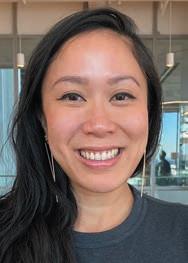
My path has been unconventional and enriching, from being an Impact Intern for Fair Trade USA in Oakland to a management consultant with FeverTree Consulting in Windhoek and a Business Advisor for the South African Supplier Diversity Council in Johannesburg. I’ve always been a practitioner at heart, learning by jumping into the deep end, unafraid to apply my knowledge and skills in new and challenging contexts.
I used to worry about being labeled a “jack of all trades,” but I’ve come to embrace my ability to see the big picture, collaborate creatively, and leverage a diverse skill set. This adaptability is my strength. My colleagues might say that foresight is my greatest asset, anticipating future needs and global trends to make informed decisions and remain ahead of the curve.
As I’ve grown in my career, I’ve come to understand the profound responsibility of
leadership. I strive to bring others along with me and push them to the forefront. This commitment is best encapsulated by the inspiring Toni Morrison, “When you get these jobs that you have been so brilliantly trained for, just remember that your real job is that if you are free, you need to free somebody else. If you have some power, then your job is to empower somebody else.”
What excited you about the opportunity to lead the Trevor Noah Foundation and made you feel it was the right fit?
They say success is where opportunity and preparedness meet. The Trevor Noah Foundation’s mission to improve equitable access to education captivated me immediately. Building something from the ground up, in collaboration with youth, teachers, and communities, aligns perfectly with my belief in the power of crosssector partnerships to drive systemic change.
When I moved to Johannesburg in 2013, I used my strategic advisory and project implementation background to support Black-owned
FOUNDATION BRIEF Trevor Noah Foundation (trevornoahfoundation.org) is an ode to the greatest gift Trevor Noah has ever received, learning. Fueled by Trevor’s love for education, for giving kids an opportunity, and for the teachers that got him to where he is today, the Foundation believes education is the seed from which everything grows. In 2018, the Foundation began supporting one school in Johannesburg that catered to orphaned youth. By 2025, the Foundation aims to have a direct and deep impact on 50,000 youth and an indirect impact on 500,000 youth by capacitating educators and building active communities. While the Foundation began its journey in South Africa, it aspires to extend its footprint across the African continent. Trevor Noah Foundation is a fund of the Entertainment Industry Foundation (EIF), a 501(c)(3) tax-exempt organization. EIF is a Charity Navigator Four-Star Charity that meets all 20 Better Business Bureau charity standards and carries the Candid Platinum Seal of Transparency.
Will you discuss your career journey?
My career journey is a tapestry of diverse experiences, each contributing to my growth.
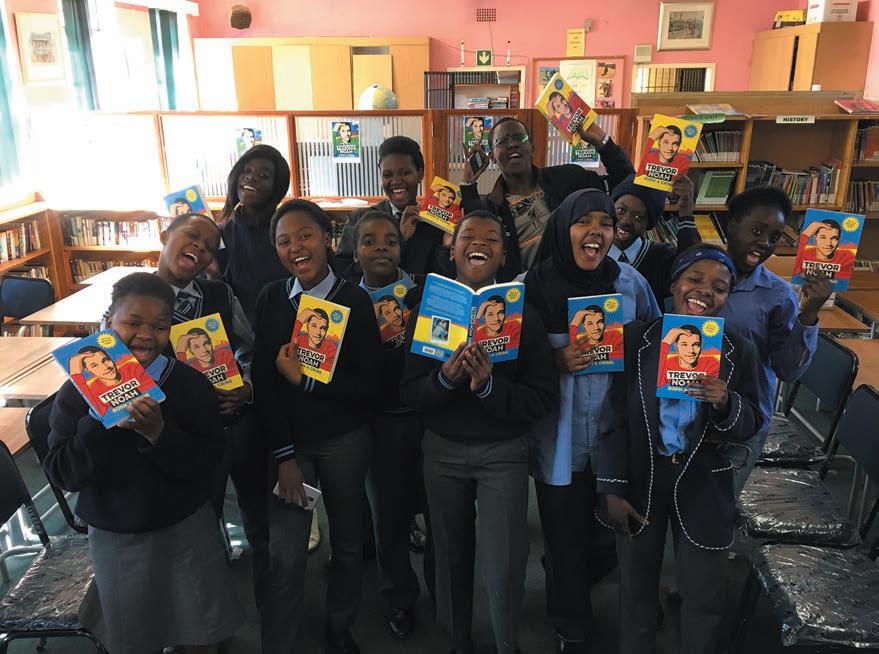
“ Kids of today are being told to be the leaders of tomorrow, but they’re not given the tools. We tell people to follow their dreams, but you can only dream of what you can imagine, and, depending on where you come from, your imagination can be quite limited.” Trevor Noah
small businesses and entrepreneurs. Witnessing their challenges, I realized the critical role of education in economic success. This insight, combined with my academic background in economics and sociology, made the Trevor Noah Foundation’s mission a perfect fit for my skills and values.
Leading TNF is a journey – a blend of challenges and opportunities. It allows me to leverage my skills, build a movement, and work alongside Trevor’s infectious passion for a brighter future for South Africa’s youth. This alignment of mission, values, and professional challenges makes TNF not just a job, but an exciting and meaningful journey.
How do you define the Trevor Noah Foundation’s mission and purpose?
The Trevor Noah Foundation’s mission is to tackle the deep-rooted racial and economic inequalities in South Africa’s school system, which is one of the most unequal in the world. As Trevor says, “Kids of today are being told to be the leaders of tomorrow, but they’re not given the tools.” This mission resonates deeply with me. It aligns with my belief in the transformative power of education and my commitment to creating a more equitable society.
When we think about challenges in education, there are many interconnected. The gap in test scores between the top 20 percent and the rest is wider than in almost every other country. Some schools are functional and wealthy, while others are poorly funded. The reality is that in a 30-year-old democratic society, a South African child’s experience of education is still dependent on where they were born, their socioeconomic status, and the color of their skin.
We aim to level the playing field and ensure that all youth have access to high-quality education across Africa. When our youth thrive, we all thrive. We are committed to leaving no child behind, working tirelessly to create opportunities for every young person to unlock their potential and contribute meaningfully to their communities and beyond.
Will you discuss how the Trevor Noah Foundation approaches its work and provide an overview of its initiatives?
We work with a network of global and local partners to implement core initiatives across Africa. Our work empowers school leaders, co-creates solutions, and embeds longterm systems change in communities. Our initiatives impact youth (ages 3 to 35), educators,
school communities, and township economies, focusing on three strategic areas: quality learning, skills, and pathways and thriving school communities.
Our flagship initiative, the Khulani Schools Program, started with one school partner in 2018 and now partners with nearly 20 public schools. We work alongside provincial governments to improve literacy, digital skills, psychosocial support, and infrastructure. By enhancing capacity and investing in school leaders, we impact over 10,000 youth and 600 educators annually in profound, meaningful ways rather than through one-off training.
In 2020, we launched Education Changemakers with the YALI Regional Centre for Leadership Southern Africa. This training for young educators involves four weeks of foundational
leadership skills, interactive learning, and site visits. Leaders pitch their innovative ideas for improving outcomes, and we provide seed funding and post-training support to implement these ideas. Nearly 150 alumni have graduated since inception, of which 50 percent identify as living in a rural area. In June 2024, we launched our first cohort of 80 Education Changemakers with the YALI Regional Centre for Leadership East Africa in Nairobi.
I’ve had the privilege of working with great leaders, where even in the entry-level role of an intern, I was empowered with autonomy and respect. I learned the importance of a nurturing and supportive leadership. Conversely, my experience with not-so-great managers who lacked transparency or engaged in performative activism has taught me equally valuable lessons.
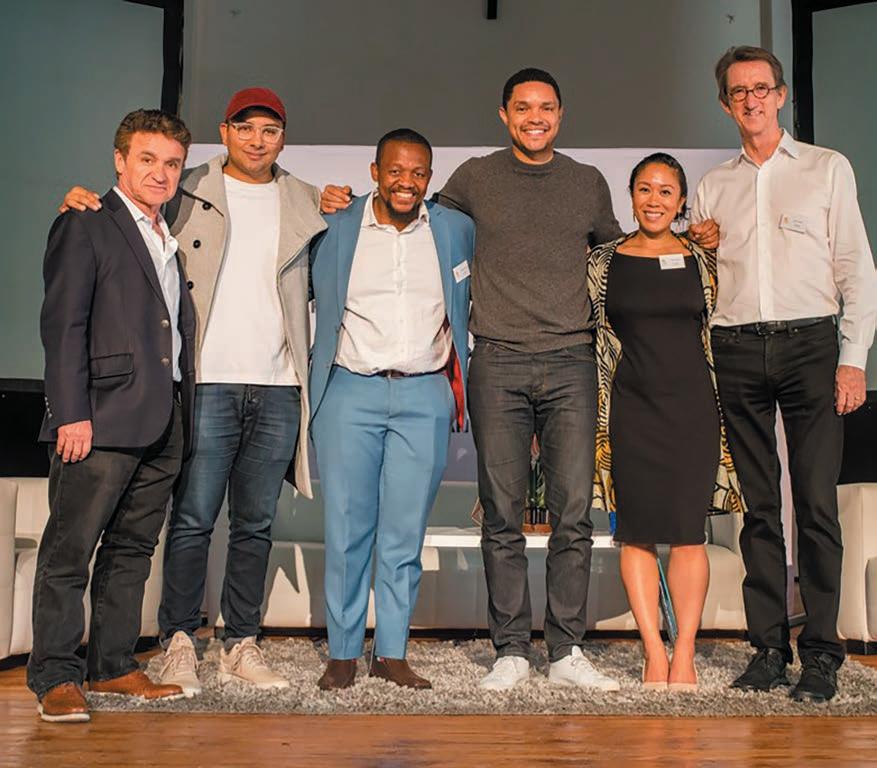
Trevor Noah Foundation Board of Directors
They underscored the importance of genuine, inclusive, and collaborative leadership. These contrasting experiences have deeply influenced me and guided our approach at TNF. Through transparent data collection, collaborative partnerships, capacity building, and long-term community involvement, we ensure that our initiatives are effective and sustainable.
How valuable is it in your role to have such deep engagement and commitment from Trevor for the work of the Foundation?
Trevor’s personal story of overcoming adversity through education is a powerful testament to our mission. Growing up in apartheid South Africa, his mother prioritized his education despite significant challenges. This personal connection inspires others and draws attention and resources to our mission, amplifying our impact.
As one of the most influential voices of this generation, Trevor commands attention when he speaks. He frequently advocates for Sustainable Development Goal 4, emphasizing the need for equitable and quality education, especially for African youth. Whether on stage with Melinda Gates or delivering a keynote at a Microsoft Summit for Global Nonprofits, Trevor passionately advocates for youth, education, and tech innovation. His genuine commitment and ability to drive action through his words are invaluable. I’ve witnessed firsthand how his advocacy can inspire and mobilize support. It’s magical.
How important are metrics to track and measure the impact of the Foundation’s efforts?
Metrics are vital for measuring our impact. Our monitoring, evaluation, research, and learning department prioritizes data-driven decision-making, continuously improving our processes. This ensures accountability to stakeholders, secures funding, and informs decisions for sustainable change in education. We set indicators with our partners, such as tertiary acceptance rates, teacher training outcomes, and improved literacy rates. These metrics enable us to track progress and ensure our initiatives effectively promote educational equity.

That said, it’s essential to recognize the nuance of human needs – impact measurement isn’t always conclusive, and the communities we serve are more than just numbers. Individual stories of change are compelling and often convey emotion in ways that metrics cannot. Remember that emotion drives action, not numbers. Sometimes, following your instincts and doing what feels right is equally vital. Did you know at an early age that you had a passion for nonprofit work, and what has made the work so special for you?
I didn’t always know I had a passion for nonprofit work, but looking back, the signs were there. Growing up between Hawaii and San Francisco, I was influenced by a strong sense of community and the importance of helping others. In 2004, I watched the devastation of a tsunami in Thailand and felt a deep urge to help, even though I was too young to volunteer. This experience left a lasting impact on me.
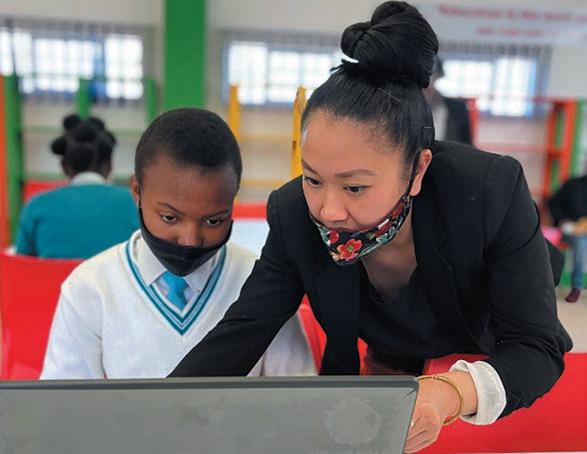
Years later, I spent a semester studying economics in Thailand. The stark income inequality – how a bustling Bangkok city center and rural poverty could coexist –was eye-opening. This insight into global inequality shaped my commitment to addressing systemic issues. Since becoming a mother, my work has gained a new purpose. It’s our responsibility to create a better world for our children and future generations. The Trevor Noah Foundation allows me to achieve this through collective effort and multiplied impact.
I still find profound fulfillment in witnessing those “aha” moments when young people or educators learn something new. These moments reveal vulnerability, hope, and the drive to push forward. It’s an honor to witness them.
One of my work’s most challenging yet rewarding aspects is shaping our organizational culture. Our staff is our greatest asset, and our work has significant emotional and mental demands. I focus on ensuring our team feels valued and supported because a happy, healthy team better serves our mission. We need to take care of ourselves to help others effectively. I feel a profound responsibility to build a company where I’d want to work – a responsibility I cherish.
What are your priorities for the Trevor Noah Foundation as you look to the future?
As I look to the future, my priorities for the Trevor Noah Foundation are to expand our impact and deepen our commitment to systemic educational equity. The International Monetary Fund (IMF) projects that by 2035, more young Africans will enter the workforce than the rest of the world combined. In South Africa, nearly half of the current teaching workforce will retire, severely affecting poorly funded schools and STEM subjects. This presents both a challenge and an opportunity to urgently invest in Africa’s youth.
I’m constantly considering how to scale our work in school leadership and digital skills to career pathways. This may involve funding innovative organizations already doing this work, implementing “train the trainer” programs based on our experiences, leveraging our network as an intermediary funder, or a combination of these strategies. These challenges and opportunities keep me up at night, but one thing is sure – the need is immense, it’s urgent, and we’re not stopping any time soon.•

Re-imagining real estate for the advancement of our communities
An
EDITORS’ NOTE Payam Zamani is an entrepreneur, investor, and the founder of One Planet Group, a closely held private equity firm that owns a suite of online technology and media businesses. Born in Iran, Zamani was forced to flee at the age of 16 due to his religious beliefs as a Baha’i. He was offered asylum in the United States in 1988, settling in the San Francisco Bay Area. Upon graduation from the University of California, Davis, he and his brother founded AutoWeb, one of the first online car marketplaces, which they took public in 1999. Since then, he has built and currently owns multiple technology and media businesses, has invested in more than 50 companies, and is striving to redefine capitalism in an attempt to elevate business to serve humanity. He has been named the “Best CEO for Diversity,” is the recipient of Tahirih Justice Center’s Hope Award, and received an Award of Distinction from UC Davis in 2018.
FIRM BRIEF

that country. In the 1980s, hundreds of Baha’is were kidnapped and killed despite the fact that it is a peaceful religion and its main tenet is love for the entire human race.
My life was constantly in danger. At age eleven, I barely survived a violent and bloody attack by a mob of classmates spurred on by teachers whose aim was to “get rid of” all Baha’i children. As much as I loved my home country, my treatment by the newly founded Islamic Republic made any future in Iran impossible. When I was 16, my parents gave their life savings to smugglers to help me escape the country by crossing one of the world’s hottest deserts, Dasht-e Lut (the Emptiness Desert in English), to find my way to the closest UNHCR outpost in Pakistan. If you’ve ever seen Star Wars, this region looks like the surface of the planet Tatooine.
After AutoWeb, the company I co-founded, had its IPO, I should have had everything I’d ever wanted. Instead, what I found was a feeling that capitalism as we knew it had failed me and my employees, but that’s a much longer conversation. I was no longer the CEO of the company and eventually had to make the difficult decision to also walk away from my seat on the board. I quickly launched another company, which fell victim to the dot-com boom.
Ultimately, I realized that a large portion of myself was missing from my business life, which led me to found my current company, One Planet Group. Today, I have the luxury of working with some of the best people in the world, all of whom are deeply committed to elevating business to serve humanity.
What was your vision for creating One Planet Group and how do you define its mission?
One Planet Group (oneplanet group.com) is a closely held private equity firm that owns a suite of online technology and media businesses while also investing in earlystage companies. Its mission is to support strong business ideas while building an ethos that helps improve society and gives back to communities. One Planet Group is committed to investing in companies run by women and/or people of color, and 55 percent of their investments meet that standard. Forty-six percent of the companies in their total portfolio are led by women, which compares to an industry standard of 2.3 percent of VC funding going to women in 2020. One Planet Group sets aside multiple “Service Days” a year for all their employees, offering paid time off to volunteer. Employees have spent over 25,000 hours donating their time. In lieu of spending funds on traditional holiday office parties, One Planet Group uses these funds for their “Holidays with a Purpose” initiative. Over the years, the event has raised over $2 million for organizations supporting women’s rights and education.
Will you discuss your life journey?
I was born into a family in Iran that was persecuted simply because we followed the Baha’i Faith, the largest religious minority in
A year later, my brother and I were granted refugee status in the United States. We arrived in the Bay Area with only $75 between us. Ten years later, we launched a billion-dollar IPO on Wall Street. Where else but in the U.S. would that have ever been possible?
After the experience of building a company and taking it public, seeing the major flaws in our current definition of capitalism, and also seeing the founders and executives who had benefited from these events, it became clear to me that windfalls of financial gain were not making any of us any happier. Instead, it was
“What was missing? A higher cause, the service to humanity was missing, the beliefs of truthfulness and equity, of unity through diversity, the beliefs that remind us that we are all members of the same human race. The point is that the spiritual values that bring joy to our core have been sucked out of business, leaving behind what often feels like a cold game, one focused on only money.”
“Infused with foundational values that promote diversity and inclusion, unity, service to humanity, and excellence in all things, One Planet Group strives to foster an environment that promotes equality, love, and empowerment. Our tagline, ‘Innovation + Intention,’ encapsulates these core values and is at the epicenter of everything we do.”
an endless cycle of always building and selling, believing that the next would finally bring joy and happiness. This, of course, was never true. What was missing? A higher cause, the service to humanity was missing, the beliefs of truthfulness and equity, of unity through diversity, the beliefs that remind us that we are all members of the same human race. The point is that the spiritual values that bring joy to our core have been sucked out of business, leaving behind what often feels like a cold game, one focused on only money.
The company I currently run makes a sincere and humble attempt to embody these values. A closely held private equity firm that owns a suite of online technology and media businesses while also investing in early-stage companies, One Planet Group supports strong business ideas while building an ethos that helps improve society and gives back to communities. We believe that good ideas and profitable businesses are not enough. Making a positive impact starts with aligning our efforts with the right intentions.
Infused with foundational values that promote diversity and inclusion, unity, service to humanity, and excellence in all things, One Planet Group strives to foster an environment that promotes equality, love, and empowerment. Our tagline, “Innovation + Intention,” encapsulates these core values and is at the epicenter of everything we do.
Will you highlight One Planet Group’s focus on developing and investing in companies that can combine innovation with intention?
The big question I’ve been trying to resolve in my own mind is why is it that nonprofits stand for the betterment of the world, and forprofits primarily for greed? Shouldn’t we, as humans, always stand for the betterment of humanity? With that in mind, I feel that we have
a real opportunity to build companies that don’t just build our pocketbooks, but also feed and elevate our spirits.
If we are able to realign our businesses so that the business itself and the way it is operated becomes a form of service to others, then that realignment is going to bring joy. We’re still talking about capitalism here – capitalism but with a heart. My vision is to help every business consider its role in making the world an everso-slightly better place.
At One Planet Group, we invest primarily in innovative, high-growth seed-stage companies and some later-stage entities. Our portfolio contains a diverse group of innovative techenabled products and solutions, with a focus on companies that aspire to the concept of “Innovation + Intention.” Specific areas of focus include the future of mobility, education technology, health technology, and environmental solutions.
Our goal is to help high-capacity entrepreneurs elevate their ideas into successful, sustainable businesses, with an emphasis on the vision that financial success can be aligned with principles that promote the belief that all businesses can be elevated to serve humanity.
What interested you in writing the book, Crossing the Desert: The Power of Embracing Life’s Difficult Journeys , and what are the key messages you wanted to convey in the book?
Considering my own journey and the challenges that I faced, I wanted to write a book that would speak to the early versions of myself –the teenager who was losing hope, the immigrant who had just arrived in the U.S., the young entrepreneur who was building his first business, and the CEO who is trying to get more out of his business than just financial success. As challenging as my journey has been, my hope is that it can provide hope and a blueprint for
taking advantage of these lessons. Lessons that can hopefully be learned without enduring the same level of pain.
It’s my belief that, in the end, we will be remembered only for the way we made others feel. My humble goal is that this book will help more people find more ways to bring light to lives beyond their own and, through that, brighten their lives as well.
Did you always know that you had an entrepreneurial spirit and desire to build your own businesses?
Yes. There is no question that I loved entrepreneurship even before I knew that the word existed. The biggest thing I ever asked my mom to get me was a Monopoly set. I soon found myself assessing my various belongings to find out my net worth – two pencils, one baseball hat, etc. In many ways, I always knew that entrepreneurship was going to be my path through this life. But also, I was watching Baha’is in Iran being denied basic rights, like getting expelled from schools, losing their jobs, and getting denied business licenses, which also made me much more interested to set out upon my own path in life and in a sense own my own destiny. Like everything else, the associated challenges turned out to be great blessings.
What do you feel are the keys to effective leadership, and how do you approach your management style?
I’m 53, and I feel that I am still in a humble posture of learning, trying to figure out how best to lead an organization. My leadership style has evolved tremendously over the years. There was a time when I believed in growth at any cost, but those days are long behind me. Today, I believe that the key to building strong organizations is by connecting our leadership with timeless spiritual values, putting the love of humanity at the center of everything we do –by caring for the well-being of the ecosystem that we are a part of, our communities both local and global, and by remembering that we are all a part of a single human race. I’ve by no means perfected this, but it is what I am trying to embody. Don’t get me wrong, I’m an entrepreneur and attempt to build strong, profitable businesses, but not at any cost, and the business has to deliver more than just profits. Oddly enough, I have learned that this approach actually helps us build better companies, and even more profitable ones.
What advice do you offer to young people beginning their careers?
Don’t shy away from crises. Crises are inevitable, but they are always followed by victories. In the same vein, don’t get too comfortable in times of success, for these are inevitably followed by crisis. Similarly to the seasons of a year that take us from spring to winter, these cycles are continuous and will always be experienced in both our professional and personal lives. These cycles prepare us for bigger victories. The key is not to let the opportunities go to waste. Use your crisis as a foundation for the next stage of your growth. So trust yourself, and always continue to move forward with as much optimism as you can muster.•
EDITORS’ NOTE Astronaut, real estate entrepreneur, and nonprofit activist investor, Larry Connor’s relentless pursuit of excellence propels him beyond conventional boundaries, enabling him to turn the unimaginable into reality. Connor has spent 1,000 hours training with NASA to be certified as a private astronaut, then piloted the first private mission to the International Space Station aboard the Axiom Mission. He became one of only three people to travel to space and the deepest point of the ocean, after completing three historic, research-based dives to the Mariana Trench. Connor also set a new world record for the highest HALO (high altitude/low opening) formation skydive from 38,000 feet to benefit children of fallen warriors. The principles Connor has applied to accomplish these, and numerous other feats, are the very same ones he’s used to grow his firm, The Connor Group. Connor is also the founder of The Greater Dayton School, a revolutionary educational model that he hopes to replicate across the country to stem the cycle of poverty.

unfortunately, so is losing. Success directly results from your habits and the people you surround yourself with. At The Connor Group, people always come first. We have intentionally surrounded ourselves with successful, purpose-driven individuals who are relentlessly determined to succeed and possess aligned guiding principles.
Some of the critical habits that have been instrumental in my success and that of my team include the following:
• Doing what you say you are going to do when you said you were going to do it
• Working Saturdays
• Rating everything – measurement improves performance
• Acting with a sense of urgency
• Maintaining an open mind
• Never saying anything about someone that you would not say to them directly
• Being organized and deciding what you are going to do as well as not do
• Scheduling time in your day to just think
• Memorializing the pluses and minuses of completed projects for future reference
• Celebrating achievement but not living in the past
Success, as it pertains to me and members of The Connor Group team, is intentional and certainly a byproduct of the aforementioned habits that we all embrace.
What are some of the leadership principles you have applied from accomplishing such feats as reaching the highest heights of space to going to the lowest depths of the ocean, into growing The Connor Group into one of the most successful private real estate investment firms in the U.S. today?
One of my personal and professional guiding principles is a relentless pursuit of excellence. I have exceptionally high expectations of myself and that of my team. I also believe in giving honest, direct, and clear feedback. It is the right thing to do. I never let loyalty and emotions replace honest, evidencebased evaluation. I never assume anything. I trust but verify everything, always inspecting what I expect. As a leader, I never blame bad outcomes on anyone but myself. True leaders accept blame and spread praise.
The Connor Group (connorgroup.com) is a real estate investment firm that is one of the most successful private real estate investment firms in the U.S. today with $5 billion in assets under management, 15,000 luxury apartment units in 18 U.S. markets, and more than $1 billion in transactional volume in 2023. The Connor Group brings an innovative approach to the apartment industry. The company is a real estate investment firm in name, but professional operators by trade. The firm’s goal: dramatically increase the value of communities by significantly improving the bottom line and customer satisfaction. It’s an approach that endures to this day and has allowed The Connor Group to stand out as industry leaders, winning numerous awards regionally and nationally for excellence and innovation.
What are some of the habits that have made you and other leaders at The Connor Group successful?
I believe in the saying, “you are what you repeatedly do.” Winning is a habit, but
• Taking care of yourself both mentally and physically through healthy eating and exercise
I have always led by example, and I am also a big believer that leadership is not a spectator sport. Leaders must be proactive and make something happen. I am aggressive, but never reckless.


Lastly, I am a firm believer in self-accountability and owning the problem.
Do you feel your successful approach to business mirrors your own formula for success in space and other adventures?
Without question. The discipline, training, and hard work involved in preparing to go to space or to the depths of the Mariana Trench are the exact same attributes that propel my success as a businessperson, entrepreneur, nonprofit work, etc. The mastery of these traits enables one to dream the unbelievable and achieve what many may perceive as unachievable. But at the end of the day, nothing is done alone, and with the right people, the right plans, and the right process, just about anything can be achieved safely and successfully, be that disrupting the real estate industry – while hiring no one from the industry – or achieving seemingly impossible goals, like setting a new skydiving world record or opening a school exclusively for under-resourced children.
I look at them as endeavors that I have taken extraordinary time, energy, training, and extreme discipline to prepare for. Nothing is done on a whim or happenstance. Many take months, if not years, to prepare for. Everything is calculated, tested, and tested again.
You mentioned that The Connor Group hires only those from outside the real estate industry and encourages them to embrace an unconstrained mindset that anything is possible. What necessitated this?
The Connor Group has grown from zero to $5 billion in assets, primarily with individuals
who have never worked one day in the luxury apartment industry or in any part of the real estate industry. In fact, we have individuals who come to us from all walks of life and past work experiences. We have done this purposely and with intent. Our associates do not know the “industry standards.” They have no perception of what has been termed “impossible” by others in the business. We like that. Why? Because frankly, we do not deal in industry standards, or impossibilities. What we do is find the absolute best and brightest individuals – those with the hunger, desire, and passion to be the absolute best – and teach them The Connor Group’s way of doing things. We have never really focused on what anyone else does, and it has served us quite well.
How does purpose come into play at The Connor Group, and why do you think it is important for companies to have a purpose-driven culture?
Without purpose, a company or individual is walking aimlessly. That being said, having a purpose does not mean simply putting some words on your website as your mission and nothing else. We do not have a mission statement. Never did. We have culture, not customs.
Culture is how we live, how we act, and in our deeds. It’s not a slogan up on the wall; it is embedded into our DNA. When challenges exist, we go back to our culture. It is who we are.
At The Connor Group, our culture is our greatest strength. It is a culture deeply rooted in integrity, discipline, training, innovation, and hard work. That may not work for everyone and if it does not, they are not allowed to stay. But if they are indeed committed to our culture
and purpose, the rewards they will reap will be immense and granted on a myriad of personal and professional levels.
You tend to buck conventional wisdom and ignore what others are doing, including actively pursuing opportunities in business and adventure when everyone else is waiting on the sidelines. Where did this mindset come from?
I hold steadfastly to the concept that belief comes before results. I believed strongly that The Connor Group could bring a completely new and very much improved operating model to the multi-family residential apartment industry 30 years ago when I started the company. My belief has only grown stronger as our firm hasn’t just survived difficult economic periods such as the Great Recession, the COVID-19 pandemic, or current market uncertainty, but has instead thrived. When others are waiting on the sidelines, it is important to be decisive. There will always be uncertainty in the economy, political unrest and wars raging across many parts of the world. Should I wait – like many organizations do – until the dust settles to make a move? That is not The Connor Group way. Never has been. Never will be.
I have always been one to act, not react. Make a move while others lay dormant. I have never wavered in my belief or my vision, as they are built on measured, tested, and re-tested principles.
This applies to not only The Connor Group, but all of my endeavors of reaching the highest heights of space, going to the lowest depths of the ocean, and believing in an educational model that can stem the tide of residual poverty. With belief, there is always possibility. •

EDITORS’ NOTE Dr. S. Robert Levine graduated summa cum laude from Loyola-Stritch Medical School in 1979 and completed his specialty training in Internal Medicine and Cardiovascular Disease at Mount Sinai Medical Center in New York City. He was the founding director of Mount Sinai’s Cardiac Health & Rehab Program. He has led the development of the Mary Tyler Moore Vision Initiative (MTM Vision) to honor his wife – who suffered from vision stealing diabetic retinal disease – and help make her dream of a world without vision loss from diabetes a reality. Mary Tyler Moore was diagnosed with diabetes at 33 and by 49 she had lost her ability to do many of the things she loved most due to diabetes-related vision loss.
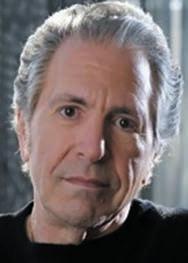
Dr. S. Robert Levine
With MTM Vision, Levine is disrupting the status quo, as Mary did throughout her life, to call attention to the fact that: we don’t know what we must about retinal disease in diabetes in order to cure it; the current way we diagnose it and plan treatment is outmoded and directed toward later stage disease; and, there are known obstacles that must be overcome in order to accelerate the development of new treatments that can stop vision loss and ultimately cure blindness from diabetes. He has brought together the best and the brightest scientists and clinicians in the world to solve this life-changing complication of diabetes, the leading cause of blindness in working-age adults globally.
Levine partnered with Mary as a vocal advocate for diabetes research. Mary, as JDRF’s International Chairman from 1984-2017, used her public recognition, personal experience with type 1 diabetes (T1D), and grace to support JDRF’s research and advocacy programs and offer hope to T1D families. Meanwhile, Levine played an instrumental role within JDRF by helping transform its strategy and operations as they experienced rapid growth and expanding influence. He led initiatives that built a grass-roots health research advocacy program that is arguably one of the most effective in modern U.S. history. He helped develop the strategy and processes to manage a JDRF research budget that grew from $10-12 million per year to over $100 million per year, helping them navigate the transition from small-scale bench research to large-scale research center and mission-driven initiatives. With his guidance, JDRF expanded to support
clinical trials targeting the translation of scientific advances into therapeutic benefits for people with diabetes.
In the late 1990’s, Levine served a three-year term on the NIH’s National Institute of Diabetes, Digestive and Kidney Diseases Advisory Council, and he was a contributor to the Congressionally mandated Diabetes Research Working Group’s report on future opportunities and needs in diabetes research.
With his wife, Levine authored a chapter for the textbook The Essentials of Stem Cell Biology entitled: “It’s Not About Curiosity, It’s About Cures: Stem Cell Research – People Help Drive Progress.” He also authored a chapter entitled “Nutrition in the Adult Years” for Victor Herbert & Genell Subak-Sharpe’s: Total Nutrition: The Only Guide You’ll Ever Need, and (with Laura L. Adams) a chapter entitled “Collaborating with Consumers to Advance Health Knowledge and Improve Practice” for Regina Herzlinger’s Consumer-Driven Healthcare: Implications for Providers, Payers and Policymakers
Levine is an executive producer of the documentary film, Being Mary Tyler Moore. He provided the filmmakers unprecedented access to Mary’s life and estate, loved ones, colleagues, and friends. Being Mary Tyler Moore explores Mary’s personal and professional journey as an iconic star, businesswoman, and advocate. Through the telling of her life story, this documentary film shows how Mary revolutionized the portrayal of women in the media and empowered generations of women from all races and economic backgrounds to dream big, work hard, and make it on their own.
The Mary Tyler Moore Vision Initiative (MTM Vision) is a one-of-akind nonprofit uniting the world in the fight against diabetes-related vision loss and blindness. MTM Vision (marytylermoore.org) enables significant research breakthroughs and supports global scientific collaboration to realize Mary’s dream of a world without vision loss and blindness from diabetes. MTM Vision brings together global leaders and innovators from diverse fields, including universities, pharmaceutical and medical device companies, government agencies, tech firms, the entertainment industry, and people and families with diabetes, all to advance research for a cure for diabetic retinal disease. The Mary Tyler Moore Vision Initiative is a fund
of the Entertainment Industry Foundation (EIF), a 501(c)(3) tax-exempt organization. EIF is a Charity Navigator Four-Star Charity that meets all 20 Better Business Bureau charity standards and carries the Candid Platinum Seal of Transparency.
What was the vision for creating the Mary Tyler Moore Vision Initiative, and how do you define its mission?
Mary and I were married for over 33 years. She was an optimist and a risk-taker. She thought anything was possible. She lived with diabetes for most of her adult life and bravely faced many of its serious complications, the most challenging of which was her near blindness from diabetic retinal disease (DRD). Not wanting future generations to suffer as she did, she dedicated herself to doing what she could to help find cures for diabetes and its complications, helping to raise billions of private dollars to fund diabetes research and, through her advocacy for federal government funding, billions more for support for the programs of the National Institutes of Health. She dreamed of a world without diabetes and its complications and, importantly, a time when no one would face vision loss and blindness from it, and she knew that this could only be achieved through the promise of research.
Mary was a beloved actor and role model. She gave people with diabetes and their families hope. Young people with diabetes could aspire to “be just like Mary,” succeeding in anything they chose to do and overcoming any limits imposed by diabetes. People looked to her for inspiration, and she never took that for granted. She always felt it was a blessing to be able to advocate for and help people living with diabetes and lead them in the search for cures.
The Mary Tyler Moore Vision Initiative’s “vision” is a world without vision loss and blindness from diabetes. Our mission is to accelerate the development of new methods to preserve and restore vision in people with diabetes. I established and lead MTM Vision to honor Mary’s contributions to diabetes research and keep her promise that one day people with diabetes will be able to live joyful and independent lives free from vision loss and blindness. While Mary did not see a cure for diabetes in her lifetime, her legacy of leading efforts to ensure that future generations would not suffer as she did lives on through our work.
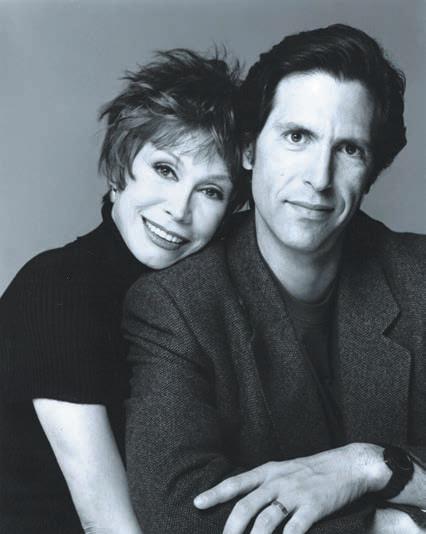
Will you provide an overview of the Mary Tyler Moore Vision Initiative Roadmap?
Our “Creating a World Without Vision Loss from Diabetes Roadmap” has three principal phases:
Phase 1 (Our “Cure Platform”) is designed to provide our global collaborators in academia and industry with critical path resources and tools, such as a bio-bank of human eyes for detailed study, to overcome barriers to progress and accelerate the translation of scientific advances into benefits for people with or at risk for DRD.
Phase 2 assembles large databases of retinal images, visual function data, and clinical information to enable artificial intelligence-generated insights into the more effective diagnosis of DRD and a better understanding of its progression and best candidates for specific treatments. Phase 2 will also establish a core research resource for identifying therapeutic targets for new drug development discovered and validated in human tissue via cellular and molecular-level analysis.
Phase 3 will include seeding specific “sciencewith-a-mission” programs focusing on protecting
the retina from the deleterious effects of diabetes and restoring lost visual function via retinal regeneration or replacement.
Will you discuss Mary Tyler Moore Vision Initiative’s programs?
Through our Workshops and Symposia –which have brought together global leaders from academia, industry, government agencies, nonprofits, and people personally affected by diabetes – we are uniquely bringing a new focus to the unmet needs and scientific challenges in better understanding DRD origins and impacts, predicting its progression, and developing new therapeutic approaches to preserving and restoring vision in people with diabetes. We are further leading in building collaborative networks willing to share their data to more quickly meet these needs and overcome the challenges.
In Phase 1 of our Roadmap, we have launched three major, field-changing programs:
1. To better define DRD, we are leading a global undertaking to update the 50-year old “staging system and severity scale” for DRD. Our update will be a multidimensional and modern staging system, which uses advanced testing technologies and AI tools to enhance diagnosis, improve care and outcomes, and accelerate the development of new therapies and will include measures of visual function, retinal nerve vitality, systemic and social factors, and, importantly, the patient perspective. The early output of this program has been the publishing of six papers (one from each of our six working groups of global experts, including over 50 KOLs from 12 countries) in the influential, peer-reviewed journal, Ophthalmology Science, which describe the state of our knowledge and identify promising measures of retinal health and function that might be included in a new staging system.
2. To lead in enabling the study of the human condition, we have built a bio-bank of human ocular biospecimens (from postmortem donors) at the University of Michigan’s Kellogg Eye Center and Caswell Diabetes Institute, creating a unique and highly valuable research resource and database which we will share with our academic and industry collaborators for their research.
3. To validate promising measures of retinal health identified in our staging update program and which have the potential to be used to improve diagnosis and care, and accelerate drug development research (by establishing new regulatory pathways), we have partnered with the federally funded DRCR Retina (Clinical Trials) Network and developed our first two clinical trials to better assess selected, objective measures of visual function identified by our Visual Function Working Group. We picked promising measures of visual function to be our first variables tested based on preliminary unpublished data from one of our collaborators which suggests that as many as 30 percent of children, adolescents, and young adults with diabetes and normal retina images/ ophthalmologic exams (no DRD per current staging system) already have measurable loss of visual function.
To leverage the value of our Phase 1, we are organizing a public-private consortium through which academic and pharmaceutical industry partners will be able to access samples and data that we are generating, contribute their relevant data to enhance the power and utility of our shared databases, and participate in the planning of new projects and collaborative research.
We have brought together the best and the brightest researchers, data scientists, and clinicians in the world to help solve this life-changing complication of diabetes, the leading cause of blindness in working-age adults, globally. Our partners include JDRF (now called “Breakthrough T1D”), the University of Michigan’s Elizabeth Weiser Caswell Diabetes Institute and the Kellogg Eye Center, the Beetham Eye Institute at Joslin Diabetes Center, Harvard Medical School, and the Entertainment Industry Foundation (EIF).
We are challenging the global research community to do more to find cures and new ways to prevent vision loss and blindness from diabetes, including through earlier diagnosis and retinal protective treatments. We are calling attention to the fact that we don’t know what we must know about DRD to cure it, and must work together to achieve the goal of a world without vision loss and blindness from diabetes.
“Mary was a beloved actor and role model. She gave people with diabetes and their families hope. Young people with diabetes could aspire to ‘be just like Mary,’ succeeding in anything they chose to do and overcoming any limits imposed by diabetes.”
“There are still tens of millions of people in the world blinded by diabetes and hundreds of millions at risk of vision loss and blindness. We urgently need new advanced treatments for DRD.”
Have there been advances made in the treatment of diabetic retinal disease (DRD)?
While there have been important advances, they are not without issues of access, cost, side effects, and failure rates. For instance, Mary’s DRD required “pan-retinal photocoagulation (laser) therapy.” Her retina specialist had to literally “burn the village to save it” – burning out, with the laser, hundreds of tiny areas of her peripheral retina to save the central retina from the consequences of DRD. This preserved Mary’s ability to read for a time, but at the high cost of her peripheral vision and her related ability to navigate safely, particularly in low light. More recent advances include “anti-VEGF” drugs, which are injected directly into the eye to inhibit the genesis of the fragile blood vessels responsible for some of DRD’s blinding effects. However, these drugs are expensive, require monthly injections over prolonged periods, and have failure rates of up to 50 percent in preventing the progression of the vascular component of DRD.
There are still tens of millions of people in the world blinded by diabetes and hundreds of millions at risk of vision loss and blindness. We urgently need new advanced treatments for DRD. How critical are metrics to measure the impact of the Initiative’s efforts?
We have already made a significant impact in our field through several key efforts. These include engaging with leading global researchers and clinicians, collaborating with the premier U.S. retina research clinical trial network (DRCR Retina Network) and its international counterparts, and partnering with top U.S. academic medical centers and diabetes and eye research nonprofits. We also work closely with the National Eye Institute and the National Diabetes, Digestive, and Kidney Diseases Institute of the NIH. Our success is evident in our workshops and symposia, strengthened industry relations, publications in top ophthalmology journals, and collaborations with major media companies and the Entertainment Industry Foundation. Our efforts have raised interest and focus on the scientific and clinical unmet needs and challenges of DRD. We have mapped a path forward for the field to achieve a shared mission and purpose – accelerating the development of new ways to preserve and restore vision in people with diabetes and create a world without vision loss and blindness from diabetes.
Going forward, the metrics for our success will include the level of investment by biotech and major pharmaceutical companies in drug development pipelines aligned with our efforts. Further success metrics will consist of greater public awareness of the threat to vision posed by diabetes, improved rates of screening and specialist referral, earlier diagnosis, and better patient outcomes. Or, more simply, more people with diabetes know they are at risk for vision loss and blindness and seek early evaluation and care, and retina specialists and primary care clinicians have more tools and treatments to offer their patients with diabetes to preserve and restore vision.
You served as executive producer on the documentary, Being Mary Tyler Moore. What do you hope viewers will take away from the documentary?
For those familiar with Mary’s work, I wanted to remind them why they loved her and what she may have meant to them as a role model. For those unfamiliar with Mary, I wanted them to witness her brilliant talent, hear her voice, and appreciate her kindness, generosity, and grace. I wanted audiences to recognize the barriers of the prevailing attitudes about women’s roles in the ’60s and ’70s and how Mary broke through those barriers and modeled a new way of thinking for and about women. I wanted people to gain a broader understanding of who Mary was; she was a door opener for other women, an innovator, and an entertainment business entrepreneur. Beyond the Hollywood persona and studio owner, she was Mary – the person who suffered pain but remained optimistic and resilient. Mary was willing to take risks and determined to push through difficulties. She wrestled with her challenges and overcame them, all while sustaining what I call her “eternal smile.” I wanted people to know the Mary I knew and see her through my eyes, with love and gratitude.
There has been much written about the special bond that you and Mary Tyler Moore had during your more than 30 years of marriage. What made the relationship work so well?
We just “fit.” I was shy and cautious; she was more outgoing and willing to take risks. She drew me out; I gave her stability. We each had standing in our worlds and had our professional accomplishments, but we were both missing someone with whom we could just
relax and safely be ourselves, show our vulnerabilities, and share our strengths. We partnered well in purpose-driven efforts, such as our work together as diabetes research advocates, and each had our independent pursuits which were personally gratifying. Because we accepted one another, supported one another, provided a mirror for the other to enable reflection, and loved one another without judgment – because, if you have seen the documentary, Being Mary Tyler Moore, I made her a tuna sandwich in the middle of the night, just because.
Mary Tyler Moore faced many challenges during her life. What was it like to be by her side as she displayed such resilience and strength throughout her life?
Mary did not have an easy life growing up. A distant father and alcoholic mother created a chaotic home and pressed her to find safety and stability elsewhere. She found it in dance at the Ward Sister’s School of Dance Arts. There, she learned a dancer’s work ethic and discipline. She loved ballet and understood what every ballerina knows: to succeed, to create something that audiences have never seen, to be a “star,” your toes will get bloody. This dancer’s determination and dedication to the craft and the other members of the troupe – despite whatever personal pain she felt – defined Mary. Her optimism, refusal to give in no matter the challenge, and willingness to always lead with a smile inspired me, millions of her fans, and countless children with diabetes and their families. She worked tirelessly for the cause of finding cures, all while suffering greatly from diabetes’ many ravages. This included the near blindness that robbed her of the ability to dance, read, and maintain her independence, and ultimately stole her joy. Yet, when others might have given in, Mary always said, “I’ve looked at the alternative, and I choose to push on.”
At her memorial, I had etched into the stone covering her resting place this tribute:
Her spirit a beacon
Her smile eternal
She made us better
Her strength, resilience, refusal to give up, and urgency in completing the work she started –doing what she could to help find cures for diabetes and its complications – motivated me to found the Mary Tyler Moore Vision Initiative as a way to make her dream of a world without vision loss from diabetes a reality.•

There are many sides of care at Baptist Health. And each one stays true to our values. Bringing humanity, warmth and understanding to every person that comes through our doors. Which is why we’re here to stand by you, through all of life’s moments. Welcome to Baptist Health.
An Interview with Robert Zito, Founder, Zito Partners and Managing Partner, IPZ
EDITORS’ NOTE Robert Zito has more than 35 years’ experience as a brand communications, advertising and public relations executive in the sports, financial, pharmaceutical, and entertainment industries. Best known for bringing television to the floor of the New York Stock Exchange, creating the excitement of the opening and closing bells, and building the NYSE brand into one of the best known in the world, Zito’s management committee experience spanning three decades helps clients develop marketing and communications strategies, build their brands, and manage crises with targeted and creative solutions. Zito serves as Vice Chairman of the FDNY Foundation, Chairman of Cento Amici, and serves on the board of the Robert Wood Johnson University Hospital. He was also responsible for the New York Stock Exchange and Bristol-Myers Squibb Foundations. In 1998, he started the NYSE Fallen Heroes Fund, and in 1991, the Zito Family Scholarships at St. Peter’s Prep. He is a 1998 recipient of the Ellis Island Medal of Honor. Zito earned a BS degree in English from Fairfield University and attended the Advanced Management Program in International Studies at Harvard University.
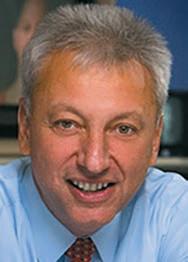
Robert Zito
through an issue. Thus, Zito Partners was born.
Our mission is simple – help our clients both build their brands against a targeted demographic and help clients when issues impact their businesses. I love developing those strategies, and our team has done an excellent job assisting me and executing.
What have been the keys to Zito Partners’ strength in the industry?
Experience and understanding. And the ability to tell stories.
At Sony, the NYSE and BMS, our consultants and agencies did an excellent job supporting us, but none had people who had been in our shoes. None had sat on a corporate management committee and understood the issues like we on those committees did. And none understood the impact an issue could have on the individuals on that management team.
entertainment – two of the most visible industries in the world – can impact a brand is vital. When Akio Morita at Sony decided to buy CBS Records and Columbia Pictures, which we rebranded as Sony Music Entertainment and Sony Pictures Entertainment, it was thought to be a necessary acquisition of content. But what it did was eventually change the perception of the company from a Japanese electronics company to a global entertainment company.
At the NYSE, athletes and sports teams were an important part of our marketing, and when we created the Partnership Program, enabling our listed companies to take advantage of the media coverage we provided, many used celebrities in their efforts to garner brand exposure.
At BMS, athletes and celebrities were at the heart of our Prevail campaign. So IPZ helps provide that access for our clients when it becomes part of a marketing strategy.
FIRM BRIEFS Zito Partners (zitopartners.com) is a public relations and marketing communications firm that builds strategies targeting clients’ most important audiences.
IPZ (ipzusa.com) is a family-focused management, representation, and consulting firm, built on the integrity of its professionals, and developing whole life solutions for its clients.
What led you to create Zito Partners and how do you define its mission?
Necessity and opportunity. Having spent 25 years in the C-suites of three great companies – Sony, New York Stock Exchange, and Bristol-Myers Squibb – and 17 of those on the Management Committees of the NYSE and BMS, you realize that every CEO wants his or her own team. I reported to seven different CEO’s during those 25 years. Each had his own personal style and personality, and each had his own priorities. When the last corporate chapter ended, a senior executive at a leading financial company asked if I would help them
I believe that gives us an ability to help clients develop their strategies, with an understanding of “more than” the black and white issue. It also helps us shape the stories our clients need to tell their target audiences. We bring that understanding to our clients and we have a team of people, with media, advertising, corporate communications, and IR experience who can execute to support and build client brands.
What was your vision for launching IPZ and how has the firm evolved?
Marketing and brand building. To help clients build their brands, we often need to think outside the box. Understanding how sports and
How has the role of a leading communications company evolved?
Content development and targeting. Knowing who you need to reach, how often, and using what tools is imperative. That starts internally. Every employee at every company should know exactly what his or her company stands for and the benefit it provides. And every employee needs to be able to tell “stories” about their companies – about the people they work with, the lives they impact, and the difference they make. Emotion is key.
At the NYSE, Dick Grasso understood that. For more than 200 years, the NYSE was a “closed door.” He joked that when you saw the façade, it looked like an amalgamation of the
“And every employee needs to be able to tell ‘stories’ about their companies – about the people they work with, the lives they impact, and the difference they make. Emotion is key.”
“Our mission is simple – help our clients both build their brands against a targeted demographic and help clients when issues impact their businesses. I love developing those strategies, and our team has done an excellent job assisting me and executing.”
Vatican and the Pentagon. You knew something important happened there, but you had no idea what it was. He let us change that, by not only approving, but championing our strategy to allow television networks to broadcast from inside our building. That enabled investors to see and learn about what was happening on that trading floor and helped make the NYSE one of the best-known brands in the world.
Seeing those opportunities, suggesting them strategically, and delivering is vital. Obviously, social media has become more important than ever. The content companies push through their channels – to employees, constituents, or media – needs consistency and relevancy. It also needs to be engaging and – yes – at times fun. What do you feel are the keys to staying relevant and continuing to lead as you look to the future of communications?
Flexibility and personality. Change happens so quickly today. Companies need to adapt at the drop of a hat. Remember hearing stories about a company being “too old and set in their ways” and thus couldn’t adapt and adjust quickly to a changing market or environment? That can’t happen today.
And creativity will take on additional importance. It always has been, but the ability to adapt, to understand, to listen to constituents and employees, and to react quickly to issues and opportunities will only increase in the future.
How have clients’ expectations evolved and what are clients looking for in a communications firm today?
Understanding and commitment. I truly believe our client management teams want us to understand their issues and goals just
as much as they want their own teams to. I believe they value our experience of having been through difficult situations, and helping their teams understand what we did in those instances. And they want to believe that we are as committed as their management teams are to helping – whether that’s a strategy to build a brand, launch a product, or handle a crisis.
What do you tell young people about the type of career the communications industry offers?
Agony and ecstasy. The industry can offer excitement – it can offer tremendous opportunities – but it can also offer tremendous frustration. I had an assignment at Sony that came directly from our founder, CEO and Chairman –Akio Morita, a true visionary. Over a six-month period, I got that assignment to the goal line, but never scored the touchdown. I remember sitting in Morita-san’s office and telling him what I had done and why it couldn’t be completed. Instead of being stern and disappointed, he smiled and said, “Zito-san, if you don’t understand failure, you will never relish victory.” He commended me on what we had done even without the “touchdown.”
Athletes – or those who understand team athletics – have great opportunities in this profession, as they did on the floor of the New York Stock Exchange. Understanding how to work as part of a team and, equally importantly, understanding how the different pieces that make up a brand – from employees, to regulators, to media, to advertising, to investors, to customers, to vendors – all fit as part of the strategy is vital.
“The content companies push through their channels – to employees, constituents, or media –needs consistency and relevancy. It also needs to be engaging and – yes – at times fun.”
One of my daughters was a successful high school and college soccer player who studied mechanical engineering in college. In one of her first classes, a professor called on her and said, “I understand you’re on our soccer team, and that you’re a striker. Why? If you want to be an engineer, you should be a defender. Because you need to see the entire field.” That struck me as being a comment about this profession as well. It’s so important to see the “whole” picture. When you can do that, this profession presents tremendous opportunities.
I also counsel people looking at a communications profession that they need a great spouse and partner. This is not a “9-to-5” job. It involves late nights, travel, and early mornings. It involves tremendous “ups” and debilitating “downs.” At Sony, it was not uncommon to get phone calls from Japan at 3:00 AM. I always tell them to be prepared for everything and anything.
With all that Zito Partners has accomplished, are you able to enjoy the process and celebrate the wins?
When a client celebrates, we celebrate. Back to the agony and ecstasy conversation, we live and die with our clients’ successes and failures. That’s a benefit of being a smaller firm where every one of our partners can know and understand our clients.
Does anything stand out over the years as being the “biggest” success?
We have been fortunate to work with some clients on some amazingly exciting things, where we helped with both strategy and execution. In a couple of cases, clients have asked me to join their Boards, which was extremely rewarding for me personally and for our firm.
Over the years, helping with the re-brand of Sony, building the NYSE’s brand into one of the most dynamic in the world, bringing television to the trading floor, helping manage the reopening of the markets after 9/11, and helping with the transformation of BristolMyers Squibb into a pure biopharma has all been rewarding.
But the most important thing to me has been helping the FDNY Foundation post 9/11, and helping build Cento Amici into an important organization that funds need-based scholarships in New Jersey. My wife, daughters, and sons-in-law have all helped with that, and for that I am extremely grateful.•
EDITORS’ NOTE Joel Zuckerman (gratitudetiger.com) has learned gratitude from the ground up, from a granular level. He’s written some 250 Letters of Gratitude over the last decade, commencing, appropriately enough, around Thanksgiving, 2013. Zuckerman is the only two-time winner of the International Network of Golf’s Book of the Year Award (Pete Dye in 2009, Pro’s Pros in 2013). He has written ten books in total, contributed to more than 110 publications worldwide, and has made repeated appearances on Golf Channel, Sirius XM Radio, and PBS Radio. His entertaining and informative speaking presentations have been enjoyed by appreciative audiences in Boston, Bora Bora, Scottsdale, Scotland, Fiji, Florida, and many points in between. His clients include corporate groups, high-end country clubs, and luxury cruise liners.
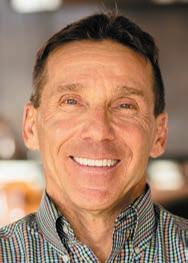
Joel Zuckerman
mention a thousand feature stories for a hundred different magazines, newspapers, and websites – I slowly started to turn my focus to gratitude. Now I speak to audiences about a subject far more important and life-enhancing than golf could ever be – the concept of proactive or expressive gratitude.
Where did you develop your interest and passion for the concept of gratitude?
situation – not always easy, by the way. To coin a phrase, Gratitude is the Glass Half-Full.
Will you discuss your life journey?
Mine has been circuitous, to say the least. For the first 15 years post-college, I tried on and rejected different careers like so many ill-fitting suits. In brief, I sold Yellow Pages in Manhattan, then moved on to magazine advertising. I spent a number of years on the New York Mercantile Exchange, then returned to my roots in Western Massachusetts and started a small business which had the dual distinction of being uninspiring and unprofitable concurrently. When I relocated my young family to Savannah, Georgia in 1997, I managed to land a job as the golf columnist for the Carolina Morning News on Hilton Head Island, South Carolina, one of the true Meccas of the game. It was pure serendipity, considering I hadn’t written much more than a grocery list in the preceding decade-and-a-half.
I could feel in my bones from the outset that writing was what I was meant to do. I quickly parlayed that job, which I kept for a decade, into magazine work. First local, then regional, then airline, and finally national. I wrote my first book in 2003, followed in quick succession by seven others in 12 years, two of which captured Book of the Year in the golf business. While my profile was raised, I started speaking professionally –luxury cruise ships, corporate retreats, country clubs, conferences, etc. After saying all I could possibly ever think to say about golf – the books alone comprise a total of 2,000 pages, not to
I wrote my first Letter of Gratitude in November 2013, just prior to Thanksgiving. After reading about the concept in a book, I decided to try my hand, simply as an intellectual exercise. At the time, it never occurred to me I would write a second letter. However, I was so taken aback by the feeling of warmth and accomplishment it gave me, within a week I wrote another letter. Then a third. Eventually it was a dozen, then a hundred. Now, little more than ten years after that initial attempt, I’m closing in on 250 Letters of Gratitude written and sent. No other writing I’ve done – not the books, the magazine covers, the fiction, the travelogues, the long form features, etc. – have ever provided the same level of satisfaction that the Letters of Gratitude have.
How do you define the meaning of the word gratitude?
It would be easy to use a dictionary definition, but let me spin it differently: Having gratitude is when you’re able to see the good in any
Let me expound on my current circumstances. I’m writing this with a large brace covering most of my left leg. I managed to tear my quadriceps tendon, in the Peruvian Andes of all places, and surgical repair is scheduled. I focus on the fact that I made it down safely – via horseback, mountain stretcher, ATV, then three flights back home – and that my wife continued on with my encouragement, enjoying this “bucket list” adventure in the company of other friends and traveling companions after my sudden departure. I’m grateful I can drive, as my right leg is unaffected. It’s fortunate that my family is close by and can assist during this temporary invalid stage. These “waves of gratitude” that I focus on help to ameliorate the inevitable sadness, anger, self-pity, FOMO, that are the inevitable byproducts of this rotten luck – at least a little bit.
Can gratitude be taught or is it something a person is born with?
It can definitely be taught. However, it will come easier to some than others. It’s no different than those with a facility for foreign language, or those who grasp algebra or trigonometry more easily than their classroom peers.
I’m an East Coaster by birth, “Type A” personality, impatience is in my genes. Resentment, part of my DNA, like hazel eyes, seethes just below the surface. But focusing on gratitude, specifically proactive or
“No other writing I’ve done – not the books, the magazine covers, the fiction, the travelogues, the long form features, etc. – have ever provided the same level of satisfaction that the Letters of Gratitude have.”
expressive gratitude, can soften a personality’s rough edges. To me, the main course, the crux of this matter, is to write letters of gratitude to those who have made a difference in your life. I can say this from personal experience. It will have positive effects on equanimity, well-being, sleep patterns, and even blood pressure.
What interested you in writing the book, Grateful , and what are the key messages you wanted to convey in the book?
I’m currently in the process of completing my tenth book, and Grateful, which was the ninth book chronologically, is the only book in my oeuvre that wasn’t conceived and written as a commercial endeavor. It was a “love letter” to the hundreds of individuals to whom I had written Letters of Gratitude. I decided to bind these first 180 letters into a beautiful hardbound 400-page book and give it away to those I cared about.
It was meant as a “legacy book,” so people who have impacted me from youth to deep middle age could see how I felt about them, how grateful I was to know them. At the same time, by perusing the text, they could peer into other relationships I’ve enjoyed, in many cases, because these circles intertwine with people they also knew personally or had at least heard about previously.
“My deep understanding of gratitude is not because I’m a PhD or a clinical psychologist. It’s simply because I’ve composed and sent some 250 Letters of Gratitude to an incredibly diverse array of individuals who have helped, mentored, befriended, loved, or shown me kindness.”
You mentioned that you are currently completing another book, Gratitude Tiger. Will you discuss this book?
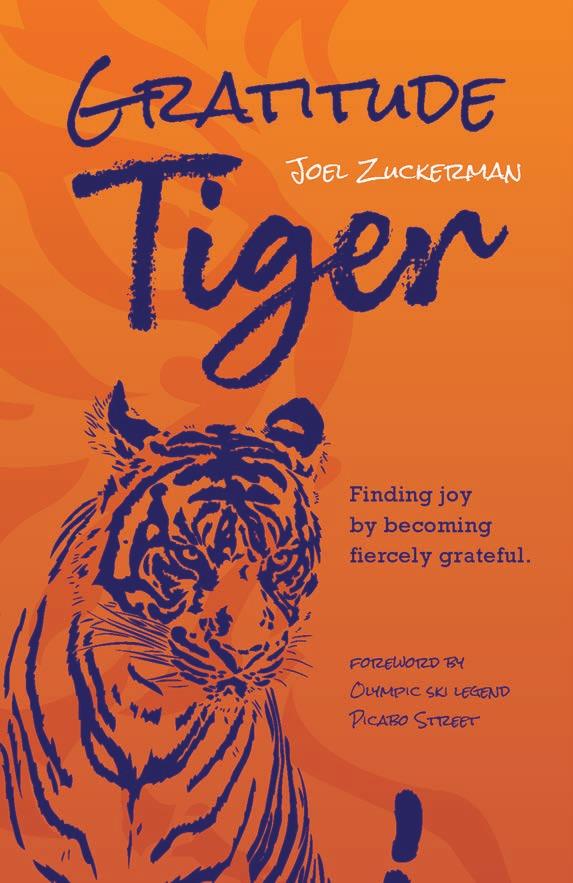
I truly thought Grateful was my literary swan song, and a good note to go out on. But recently, in the last month or two, I realized I have this intrinsic knowledge that I wish to share with anyone –which would theoretically be everyone – who wants to improve their equanimity, mindset, and personal relationships through the process of focusing on proactive, as opposed to reactive, gratitude. That is why I’m hard at work and excited to share my unique understanding of gratitude in Gratitude Tiger – Finding joy by becoming fiercely grateful Let me make a crucial point: My deep understanding of gratitude is not because I’m a PhD or a clinical psychologist. It’s simply because I’ve composed and sent some 250 Letters of Gratitude to an incredibly diverse array of individuals who have helped, mentored, befriended, loved, or shown me kindness. I’ve written to those I’ve known for 60 years and those I’ve known less than six weeks. Letters have been sent to people in my regular, if not daily orbit, and to those who I’m likely to never see again. I’ve even written a few letters to individuals I’ve never seen, or in a few odd cases, spoken to. This ever-expanding collection has changed and improved me. It can do the exact same for anyone else who chooses to embrace this simple, yet incredibly enriching, philosophy.
The crux of the book will be The Seven Pillars of Expressive Gratitude, which are the seven vital reasons why writing letters is so life-enhancing. However, this will be a comprehensive, yet entertaining look at all the nuts-and-bolts surrounding letter writing – and I do mean letter writing. These are not texts, emails, memes, emojis, gifs, tik-toks, or any other dross. Other chapters include: “Acknowledge you probably won’t be acknowledged.” “Grateful…not Ghandi.” “Finishing this text with a word about texts.” And other irreverent, easy-to-digest, but informative and thoughtprovoking concepts surrounding proactive, or expressive, gratitude.
What advice do you offer to young people beginning their careers?
In researching Gratitude Tiger, I am discovering some interesting truths about younger workers (Millennials, Gen X, etc.) that I wasn’t aware of. Career development, better work/ life balance, greater autonomy, more wellbeing opportunities, and the option to work remotely are among their top priorities as they seek employment. So much different than when I was starting out four decades ago, when the first, second and third goal was initial compensation, opportunities for advancement, and earning the chance to increase one’s salary dramatically.
Since money doesn’t seem to be the priority it was a few decades ago, I would advise a young person to tread carefully, find a company that aligns with their personal values, has a management team that values ethical behavior and endeavors to treat both customers and employees with the respect they deserve. They’re not solely focused on the bottom line and increasing revenue. Either working on their own, forming a partnership with a friend, several friends, or like-minded individuals, or even if they choose to enter the corporate universe, it will ultimately be more enriching to work to help society and repair the world, in whatever capacity that means. For that reason alone, they can and should be grateful. •
EDITORS’ NOTE Steven Friedman is the Founder and President of Santangel’s Review. Prior to founding the company, he worked at a hedge fund in New York. He holds dual degrees from the Wharton School and the College of Arts and Sciences at the University of Pennsylvania and holds the Chartered Financial Analyst® designation.

FIRM BRIEF Santangel’s Review (santangelsreview.com) is dedicated to finding and analyzing undiscovered investors. It is the creator and organizer of the Santangel’s Investor Forum® and the Santangel’s Roundtable. From 2010 to 2012, it eponymously published original research on outstanding money managers who were not well-known to the wider community of fund allocators.
Steven Friedman
How do you define Santangel’s Review’s mission and purpose?
We are essentially talent scouts in the investment management space. We are trying to find truly outstanding investors who are either young and emerging or what we call “undiscovered” which we define as investors with top-tier track records of outperformance who are not well known. They usually live in off-the-beaten path locations and don’t market themselves. We then introduce this talent to highnet-worth individuals, family offices, endowments, and foundations.
Will you provide an overview of Santangel’s Review’s events?
some of what we do to be unique and, perhaps more importantly, has led us to have a learning mindset. Even after over a decade, I haven’t lost that. I am always trying to improve the events.
One thing I decided early on was that I wanted the events to be exceptionally high quality, and that meant keeping them small. I think you have to choose whether you want to be the largest or the best. I don’t think you can do both. We want to be the best. People really love what we’ve put together and I’m really proud of that. I’m also incredibly protective of what we’ve built, and I am careful about not outgrowing what makes the events special.
Where do you see growth opportunities for Santangel’s Review?
What was your vision for creating Santangel’s Review?
There is a unique quirk in the investment management industry. What makes a great investor? Someone extraordinarily dedicated to the art and science of stock picking. This is a person who lives and breathes managing their portfolio – reading, researching stocks, and turning over rock after rock to find rare, extremely mispriced securities. Great investors rely on their own diligence, and because of that, they’re likely to have a contrarian bent. They’re not easily swayed by what the crowd is doing. All of these incredible traits don’t always go hand in hand with developing a large network and marketing a fund. Many times, phenomenal investors end up with small funds comprised of friends and family. They often put up incredible returns, but few know outside of a small circle.
On the other hand, you have family offices, endowments, and foundations all looking for the best investing talent in order to place capital. I don’t know if this is still true, but at one point there were more hedge funds than there were stocks on the major U.S. exchanges. Capital allocators are constantly bombarded by funds looking for capital and it is really hard to sift through all the noise.
The vision for Santangel’s Review was to fill this gap. We are devoted to finding the most talented “undiscovered” investors and introducing them to capital allocators.
Our events have evolved over time. We started by doing “best ideas” conferences, but flipped the traditional model on its head. Attendance was by invitation-only and instead of having famous investors presenting, we had undiscovered doing so. The speakers were undiscovered talent presenting stock pitches and ideas. It has been 12 years since our first event, and over that time, several of our previously undiscovered investors have become famous in their own right. The most prominent example is probably Mark Leonard, the CEO of Constellation Software. As far as I know, our event is the only place he has ever spoken publicly. We have also hosted retreats in Miami and Nantucket, but the main focus now is what we call the Santangel’s Roundtable. We host these three times per year, twice in New York City and once in Boston. These are cap-intro conferences where we highlight around 40 under-theradar hedge funds and set up meetings for them with high-net-worth individuals, family offices, endowments, and foundations.
What are the keys to producing a successful event that has impact and drives action?
I am completely and utterly focused on quality. The most important component of this is the quality of our events’ attendees. Every attendee is vetted to make sure they are a great fit for the rest of our audience. In addition, we want to make sure the venue, the food and the overall experience is outstanding. We solicit feedback after every single event and use almost all of it to improve. We are constantly improving.
I had no event experience when I first launched the business so I had no preconceptions about how it should be done. This has led
We have historically stayed in the hedge fund space, but I think our model and relationships can allow us to expand into other sectors of finance like private equity and venture capital. The key will be finding the right partner or partners to make sure we keep the quality of these managers as high as we have for the hedge fund events.
We are also becoming more focused on sourcing deals in addition to marketing undiscovered managers. We have a large network of smart and fantastic investors. When they find something they think is the best idea they have found in the last three to five years, we want them to let us know so we can help find additional investors. These ideas range from public companies to litigation finance to venture capital and even finding a buyer for a professional sports team. We have a very high bar for the quality of opportunities.
Did you know at an early age that you had an entrepreneurial spirit and desire to build your own business?
Yes, definitely. From buying candy in bulk and reselling by the piece on the school bus to starting a snow shoveling business in my neighborhood, I always had little businesses as a kid. In college, I studied entrepreneurship and after working for a hedge fund for several years, I started Santangel’s Review when I was 29.
What are your priorities for Santangel’s Review as you look to the future?
First and foremost, I want to maintain and improve the quality of our events. That is paramount. If we can grow the number of our events per year while maintaining the quality, that would be great, but we won’t sacrifice quality to grow. I also want to continue to source incredible underthe-radar investing talent and continue to refine our process and grow our network.•
Standard treatment for Kelly's cancer would have saved her life but left her unable to have any more children. Because of a breakthrough clinical trial and research funded by SU2C, she is now cancer free and has a beautiful baby girl.





EDITORS’ NOTE Michael Dowling is one of healthcare’s most influential voices, taking a stand on societal issues such as gun violence and immigration that many health system CEOs shy away from. His leadership has been invaluable to Northwell’s consistent expansion and prominence. In March 2020, he successfully navigated the health system through the first COVID-19 epicenter in the U.S., detailing Northwell’s experiences in a book titled, Leading Through a Pandemic: The Inside Story of Humanity, Innovation, and Lessons Learned During the COVID-19 Crisis. Overall, Northwell treated over 300,000 COVID patients – more than any other U.S. health system.

Island Association. He is past chair and a current board member of the National Center for Healthcare Leadership (NCHL), the Greater New York Hospital Association, the Healthcare Association of New York State, and the League of Voluntary Hospitals of New York. Dowling was an instructor at the Center for Continuing Professional Education at the Harvard School of Public Health. He earned his undergraduate degree from University College Cork (UCC), Ireland, and his master’s degree from Fordham University. He also has honorary doctorates from the prestigious Queen’s University Belfast, University College Dublin, Hofstra University, Dowling College, and Fordham University.
vast network of more than 890 outpatient facilities, including 220 primary care practices, 52 urgent care centers, home care, rehabilitation, and endof-life programs, and 21 hospitals. Northwell also pursues pioneering research at the Feinstein Institutes for Medical Research and a visionary approach to medical education highlighted by the Zucker School of Medicine, the Hofstra Northwell School of Nursing and Physician Assistant Studies, and one of the nation’s largest medical residency and fellowship programs.
What are your views on the current state of healthcare?
Prior to becoming CEO in 2002 and joining Northwell in 1995, Dowling served in New York State government for 12 years, including seven years as State Director of Health, Education, and Human Services and Deputy Secretary to the Governor. He was also Commissioner of the State Department of Social Services. Earlier, he was a Professor of Social Policy and Assistant Dean at the Fordham University Graduate School of Social Services and Director of the Fordham campus in Westchester County. Dowling has been honored with many awards and recognitions over the years, including the Ellis Island Medal of Honor, the Presidential Distinguished Service Award for the Irish Abroad, the Alfred E. Smith Award from the American Society for Public Administration, the National Human Relations Award from the American Jewish Committee, and the Foreign Policy Association Medal Award. In 2017, he was selected to serve as the Grand Marshal of New York’s St. Patrick’s Day Parade. In 2022, he was named the most influential leader in healthcare by Modern Healthcare , ranking #1 in its annual list of the “100 Most Powerful People in Healthcare,” making it the 16th consecutive year he was featured.
Dowling is past Chair of the Healthcare Institute and the current Chair of the Institute for Healthcare Improvement (IHI). He is a member of the Institute of Medicine of the National Academies of Sciences and the North American Board of the Smurfit School of Business at University College, Dublin, Ireland. He also serves as a board member of the Long
INSTITUTION BRIEF Northwell Health (northwell.edu) is a clinical, academic, and research enterprise with a workforce of more than 87,000 and annual revenue of $18.0 billion. Northwell is the largest healthcare provider and private employer in New York State, caring for more than two million people annually through a
There is always a tendency to focus on the negative – the pessimism reflex. So, let’s be more positive to begin with. We have made extraordinary progress over the past 50 years or so. I actually wrote a book to emphasize this point. It’s title is Healthcare Reboot: Emerging Trends Energizing Healthcare . In almost all areas – pediatrics, heart disease, cancer, transplant, muscular skeletal – there has been incredible advancement. What we can do today, the lives that can be saved and/or extended, is a fabulous success story. What we can do today
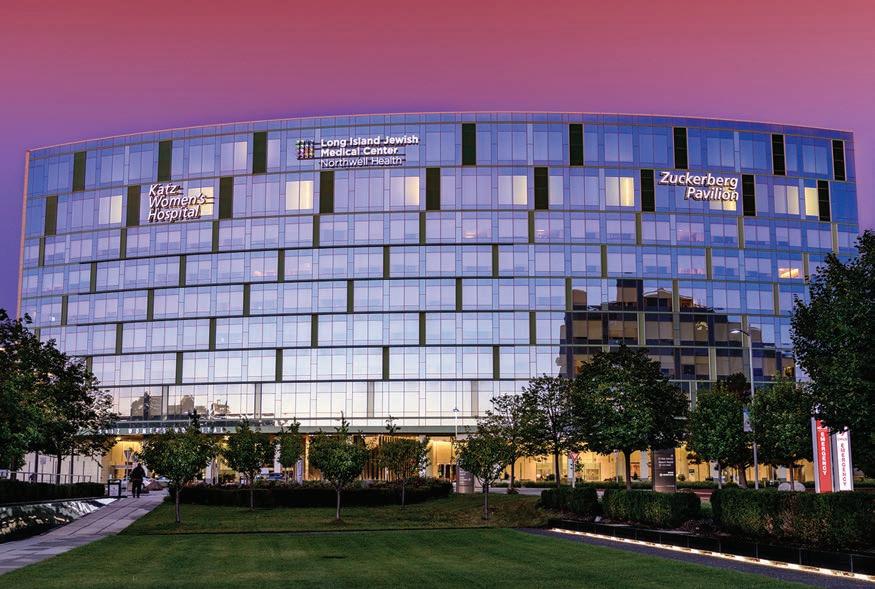
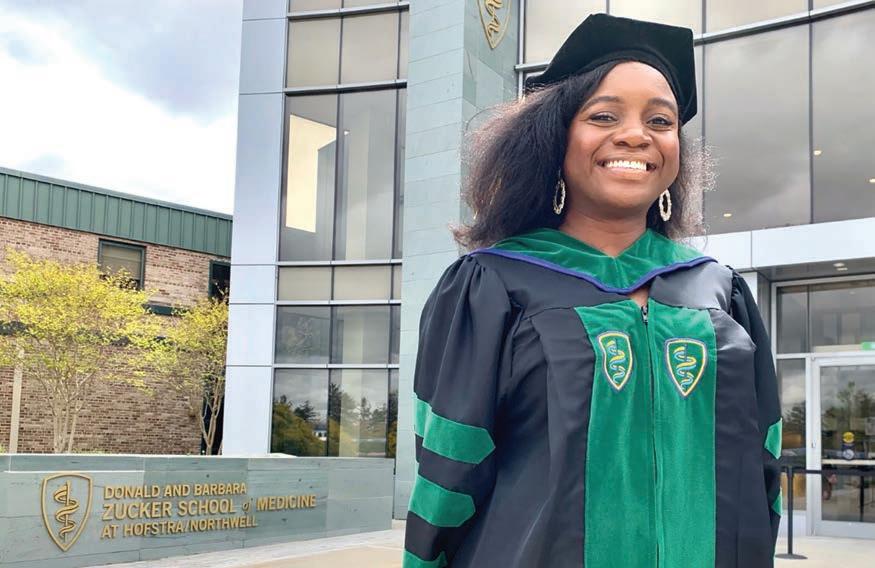
was unimaginable 40, 50 years ago – as a result of science, research and discovery. We are also living longer. This progress needs to be celebrated – and it is continuing. Those of us on the front lines of healthcare witness it each day.
Like all disciplines and professions, we have deficiencies that need to be solved. We have access, insurance coverage and equity issues. These require a concerted focus and leadership by all. Government of course has a major role since government reimbursement – especially the low Medicaid payment system – is a contributor to much of the inequities in healthcare delivery.
It is important to understand that most ill health is due to lifestyle, behavior and social circumstance. Housing, poverty, gun violence, limited employment opportunity, food insecurity etc. all contribute to varying degrees of illhealth. We in the care delivery side deal with the results (and too often get blamed for it) but we are not the cause. We must, however, be part of finding the solutions.
What are the keys to driving impact when it comes to the issue of equity and access to care?
You have to start with the adequacy of government reimbursement, as mentioned earlier. It is very difficult to get people or organizations to fully commit and sustain the effort when the payment does not cover the cost –when you end up in continuous financial deficit. This must be recognized and addressed.
Despite that, however, we at Northwell are partnering with community and religious leaders and developing joint projects to address many of these issues. It is part of our mission. We are working with high schools, providing mental health and nutrition services, providing educational scholarships and employment opportunities. The overall health of the community is central to what we do.
Will you discuss Northwell’s commitment to research?
Innovation, a core cultural value at Northwell, is the creative process of reimagining research, discovery and creating a better future. The Feinstein Institutes for Medical Research is at the epicenter of this effort. Its discoveries have launched a new field of bioelectronic medicine, produced new drugs and medical devices and created new treatments that have improved the lives of millions of patients worldwide. Most recently, we have developed interventions that have allowed a patient who was completely paralyzed to move his arms and have the sense of touch.
Without research and a culture of exploration and discovery, there is little progress.
Will you discuss the impact that the medical school and nursing school have made for Northwell Health?
Education has always been a core component of our mission. We are, at present, one of the largest academic teaching institutions in the country with 2,000 residents and fellows. The creation of the medical and nursing schools was a major enhancement of that focus and they have been extraordinarily impactful and successful. They have enhanced the Northwell brand, helped enormously in top-notch clinical recruitment and accelerated the culture of innovation across the organization. They are also different and unique in how they educate – in the nature of the curriculum. At the Zucker School of Medicine, for example, all students are trained as EMTs in the first nine weeks. They ride the ambulances and participate in seeing and treating patients from the very beginning (under supervision). They are not sitting in a classroom – which is customary. They learn by witnessing and experiencing the circumstances that patients and families live in. This enhances their knowledge and evolves their
perspective on the true meaning of health. We broke with tradition and the status quo and as a result, I believe, we are creating better practitioners for the future.
The creation of these schools – in participation with Hofstra University – has been one of our more important initiatives. It’s been a win-win. It’s not static, however. We continue to innovate, evolve and learn. We like to lead, not just follow.
How broadly do you define the meaning of health?
I define health very broadly. Health is much more than the delivery of medical care. People’s health is impacted by lifestyle, behavior and the environment and circumstances that people live in. It’s impacted by business behaviors, government policy, etc. Gun violence is a public health issue, as is poor housing, inferior education, lack of employment opportunity, etc. We are now learning of the negative health consequences of the growing addiction to social media – the growing rates of anxiety, depression and suicide among adolescents. We have an HBO documentary coming out shortly on our efforts to prevent high school and college kids from committing suicide. It’s a new frontier – social media as a contributor to ill health.
If you desire to be a leader in healthcare, with the goal of improving health, you have a responsibility to be a catalyst in positively affecting as many of these factors as possible. We at Northwell are attempting to do this in gun violence, food insecurity, climate change, educational opportunity for high school students, and access to care in many of our most vulnerable communities.
What have been the keys to building such a strong and effective management team at Northwell?
It has evolved and improved over the years and, of course, the process of learning how to do it best continues.
We choose smart people with an optimistic attitude and a passion for making a positive difference. They must be team players who are focused not only on their own success, but on the success of all those around them. They must be able to inspire and be able to build followership. I care less about what school people went to or what grade point average they attained –there is little correlation between those and ultimate success. I focus on attitude, personality, and interrelationship skills. I often ask “what motivates you” – is it power, title, status, money, or is it making a positive difference in the community around you? If the answer to the question is the desire to make a positive difference – I have a good candidate.
Most of our leaders come from inside the organization as a result of a very comprehensive training and succession development process. We create “ladders of opportunity” and we rotate potential leadership candidates to various roles across the organization. As a result, we have a strong “farm team” whom we meet with on a regular basis. Through our Center for Learning & Innovation (CLI), we help create a culture of continuous learning and leadership development.•

An Interview with Kevin J. Tracey, MD, President and Chief Executive Officer, Feinstein Institutes for Medical Research
EDITORS’ NOTE As President and CEO of Northwell Health’s research arm, the Feinstein Institutes for Medical Research, Dr. Kevin Tracey oversees research for the health system. He is a leader in the study of the molecular basis of inflammation, bioelectronic medicine and vagus nerve stimulation. He discovered how the brain and vagus nerve control the inflammatory response to infection and injury, and invented a method to use electronic devices to replace anti-inflammatory drugs. Since 1992, he has directed the Tatyana and Alan Forman Family Laboratory of Biomedical Science in Manhasset, where in 2005 he was appointed President of the Feinstein Institutes. He lectures nationally and internationally – including the Harvey Society lecture, New York, and lectureships from Harvard, Yale, Rockefeller University, the National Institutes of Health – on inflammation, sepsis, the neuroscience of immunity, and bioelectronic medicine. He is the author of Fatal Sequence and more than 400 scientific publications, and an inventor with more than 100 United States patents. The recipient of numerous awards and honors, including most recently the 2023 Hans Wigzell Research Foundation’s Science Prize, he holds Doctorates honoris causa from the Karolinska Institute, Stockholm, Sweden and Hofstra University, New York, and the Boston University Distinguished Alumni Award. Dr. Tracey is a Fellow in the American Association for the Advancement of Science, and a member in the American Society for Clinical Investigation, and the Association of American Physicians. He received his BS degree in chemistry, summa cum laude, Phi Beta Kappa, from Boston College and his MD from Boston University. He trained in neurosurgery from 1983 to 1992 at the New York HospitalCornell University Medical Center and was a guest investigator at the Rockefeller University before moving in 1992 to the Feinstein Institutes. His memberships include the American Society of Clinical Investigation (2001), the American Association of Physicians (2009), the Long Island Technology Hall of Fame (2012), Alpha Omega Alpha (2014), the American Association for the Advancement of Science (2014), and the American Institute for Medical and Biological Engineering (2020).

Kevin J. Tracey
Will you highlight the work of the Feinstein Institutes for Medical Research?
The Feinstein Institutes for Medical Research celebrates a special focus on mission and on excellence. Recall Albert Einstein’s quote, “If we knew what it was we were doing, it would not be called research, would it?” So when you think about doing research in the context of curing disease, we have to confront the reality that there is much we do not understand about many illnesses, and this puts cures out of reach. However, at the Feinstein Institutes we, and our collegues in science worldwide, are creating new and more powerful tools that we can use to reveal the mechanisms of disease. That is the point – to cure a disease, you need to focus on unraveling the underyling molecular mechanisms. At the beginning of the process, there are many unknowns, and you go up a lot of alleys to find out if they are, indeed, blind. But by focusing on a problem that we are trying to solve, and persisting for years or decades, my colleagues at the Feinstein Institutes bridge the knowledge gap in four important ways:
• Produce knowledge to cure disease
• Publish and share expertise with the global scientific and medical communities
• Collaborate across labs, disciplines, and with other institutions
• Deliver new discoveries to the bedside through clinical trials
Will you provide an overview of the five Institutes that make up the Feinstein Institutes for Medical Research?
The Feinstein Institutes was founded in 1999 as a research home for what was then North Shore-LIJ Health System, which grew and expanded to become Northwell Health. The Feinstein Institutes has expanded and grown to consist of approximately 100 research labs and programs, 3,000 clinical research studies, and 8,000 researchers and staff. We have organized this work around five institutes: The Institute of Behavioral Science which looks at the scientific basis for mental health disorders; The Institute of Bioelectronic Medicine which is using advanced technologies to target neurological mechanisms and signals to treat diseases without drugs; The Institute of Cancer Research which is looking at new paths to shape the future of cancer therapy as part of an important collaboration with Cold Spring Harbor Laboratory; The Institute of Health System Science looks to harness big data to transform healthcare and medical decision making, not only for individuals but across the whole community; and The Institute of Molecular Medicine looks at discovering the molecular mechanisms for disease as the basis of making new therapies.
How critical has it been to maintain the culture of the Feinstein Institutes for Medical Research as the organization has grown and expanded its work?
“Our Institute of Bioelectronic Medicine’s work in neuroscience, immunology, and biomedical engineering led to clinical trials of new devices to treat inflammation, and to reverse serious illnesses, including rheumatoid arthritis, inflammatory bowel disease, and depression.”
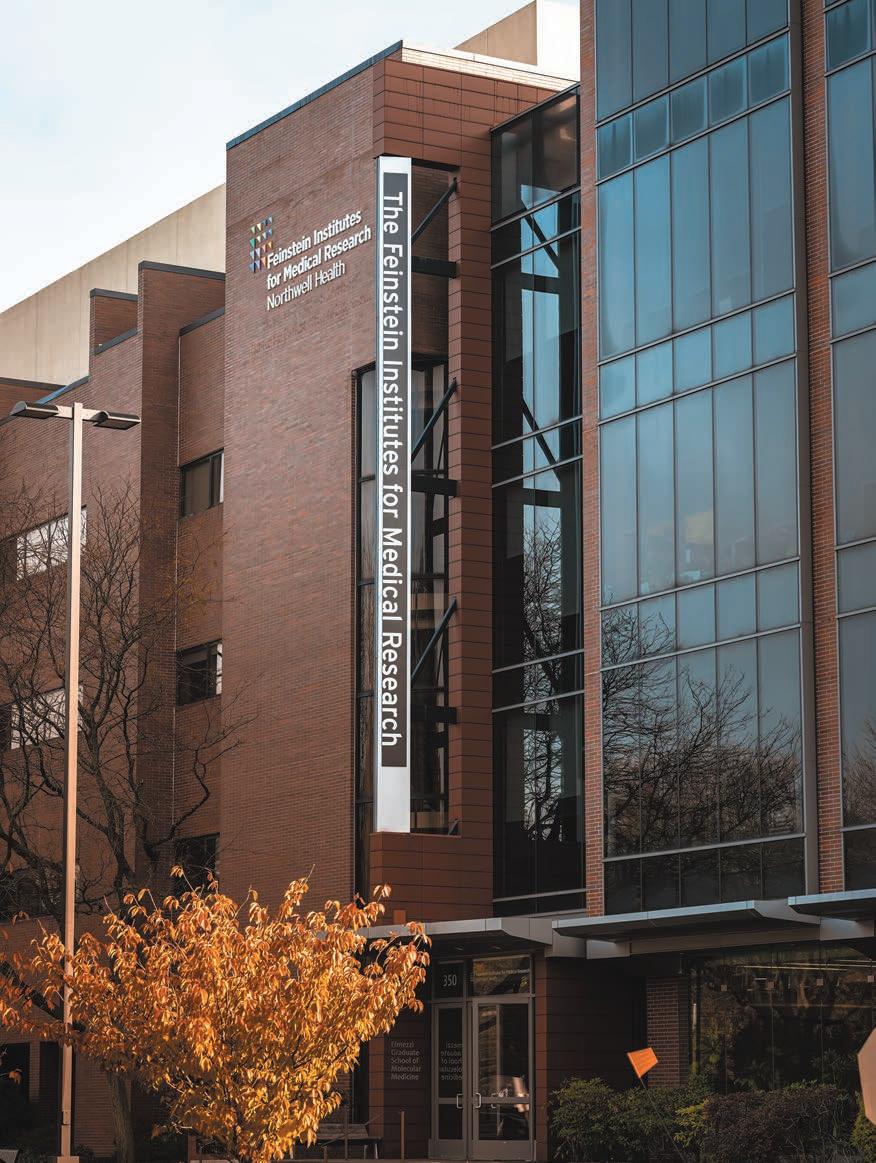
The Feinstein Institutes is known for two things: its focus on mission and its collaborative culture. In order to maintain this over nearly 25 years of growth and expansion, it has been critical to maintain a focus on excellence. This happens by recruiting leaders in their field who are committed to the mission themselves, are excellent in what they do, and who are collaborative. When we recruit and hire, we focus not so much on the position they play, or the role they fill, but on who is the best talent committed to the mission and collaboration. We are constantly looking for the best of the best, and equally persistent in our commitment to sustaining an environment that supports the Feinstein Institutes
faculty to be maximally productive as a valued team member.
Will you provide an example of the exciting research taking place at the Feinstein Institutes?
The Feinstein Institutes are well-known for its leadership in the areas of focus for the five Institutes. One example that has garnered a great deal of interest recently is in bioelectronic medicine. Our research shows that inflammation can be controlled through the vagus nerve, the main “highway” of neural information between the brain and body. Our Institute of Bioelectronic Medicine’s work in neuroscience, immunology, and biomedical engineering led to clinical trials of new devices to treat
inflammation, and to reverse serious illnesses, including rheumatoid arthritis, inflammatory bowel disease, and depression. One exciting aspect of using bioelectronic medicine devices is that this has the potential to supplement or even replace some drugs, and to eliminate or reduce their high cost and potentially debilitating side effects.
What excited you about the opportunity to join the Feinstein Institutes for Medical Research and has it been what you expected?
My tenure at the Feinstein Institutes has exceeded my own high hopes for organizational success. It has been wonderful to work with colleagues in science, medicine, and administration dedicated to helping others by seeking knowledge and cures. These are the best people in the business, collaborating together, bound by a shared mission, and working to accomplish a special goal. If you think back at what has happened in the last 25 years, whether it was a recession, financial collapse, pandemic –many of the obstacles that have been encountered along the way were quite significant, but when you look at the growth and accomplishments of our five Institutes, I believe we had the advantage of being relatively new. We built and grew unburdened by hundreds-year-old traditions and ancient precedents. We built a new, collaborative culture, in current times, so that our work could bring us all into a future with new cures.
How valuable has it been to have such an engaged and committed board for the Feinstein Institutes for Medical Research?
The irreplaceable support that has been the wind beneath the wings of the Feinstein Institutes has been the support of the Northwell Health system under the leadership of Michael Dowling and his passion for the Feinstein Institutes’ work and mission, and the support of our board members. When you put all this support together, you have tremendous, irreplaceable assets that have made all the difference for our success.
What do you tell young people about a career in medical research?
I tell them that the world changes one individual at a time. I tell them the story of Joseph Meister who was nine years old when he was bitten by a rabid dog in Paris. Before Joseph Meister, every person that contracted rabies died. But young Joseph Meister was fortunate, because he was treated by Louis Pasteur, who had invented a new therapy, and Joseph lived. I tell young people today, because of not only the rabies vaccine, but all the other vaccines that have come from that, we live in a different world. Every first research patient starts a new world, and the Feinstein Institutes have lots of first patients.
I tell young people that it is a blessing and a privilege to pursue this career – a career where you learn something new every day, in a collaborative environment, that produces knowledge to help people. There is no more noble career path, one that is not only fulfilling and rewarding, but is committed to making the world a better place.•

EDITORS’ NOTE As Senior Vice President of Community and Population Health, Dr. Debbie Salas-Lopez oversees Northwell Health’s community and public health strategy, including community health equity, community relations, strategic community partnerships, corporate social responsibility, and the Community Health Needs Assessment. Dr. Salas-Lopez joined Northwell in 2019 as Senior Vice President for Transformation, responsible for system value-based initiatives that improve health and care delivery. She assumed her leadership role after serving as the Chief Transformation Officer at Lehigh Valley Health Network. In 2021, Modern Healthcare named her to its annual Top 25 Women Leaders as a “Woman to Watch.” She also received the 2021 Tribute to Excellence in Healthcare award from the United Hospital Fund. Dr. Salas-Lopez was recognized in 2021 by the Hospital Association of New York State with a Community Health Improvement Award. She also has earned a Hispanic Chamber of Commerce Leadership Award, the Long Island Coalition for Homeless Key of Excellence Award, and the 2021 Empire Whole Health Heroes Award.
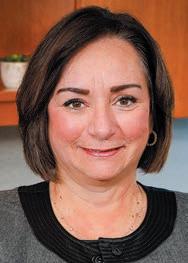
Dr. Debbie Salas-Lopez
What are the keys to driving lasting change in addressing the social determinants of health and how is Northwell Health tackling this issue?
The social determinants of health existed before the pandemic, but were also clearly worsened by the pandemic. It is a complex issue, and I have found that the most important way to address the social determinants of health is to go out into the community and listen to what they believe is important for their health and well-being. We have taken this approach at Northwell, and we meet with leaders from all parts of the community to ask them what their priorities are and what they believe is needed to improve the health and wellness in their community. These are the four things that they have told us, and continue to tell us even today, are important for them and for their communities:
supplier diversity program, and we have committed to dedicate 10 percent of our Northwell spend to women-owned businesses and minority-owned businesses. We also launched a program called Communities-at-Work where our human resources team partners with faith-based leaders and community leaders to meet people where they are in the community. For example, we go to Harlem and provide support with how to interview for a job opportunity, how to dress when going on an interview, and how to write a resume. It is critical to focus on economic vitality to support our communities.
Will you highlight your career journey?
I was born and raised in the Bronx, and moved to New Jersey in my teens. I started my career in real estate, but met a person who asked me a question that would change the course of my life. I had just sold her a house and she asked me, “Is this what you wanted to do when you were growing up?” I replied, “No, I wanted to be a doctor.” I told her I didn’t know how to become a doctor since I grew up at a time when the Bronx was burning, and my main focus was on getting to and from school safely. Now that I had become a successful real estate agent, it was possible for me to pursue this passion, but I needed to figure out how. She guided me on the process, and I found my way to take the MCAT while I continued to sell real estate, and when I received my scores, I applied to medical school and was accepted on a scholarship.
My father was a minister and he raised me and my siblings to care for others and take care of others. I followed this value that he instilled in me to take care of others as a physician, and since then have dedicated my life to taking care of the underserved, communities of color, and those that are vulnerable.
The first is education and youth because young people are our future, and in many underserved communities where there are social issues related to health, education is key. There were setbacks during the pandemic, particularly for youth in underserved communities because remote learning was not something these communities were used to. One initiative that was launched in 2021 in partnership with the community was the Northwell Community Scholars program. This program provides support, mentorship, and opportunities for students from 10th grade through 12th grade in communities where there are high social vulnerabilities, high uninsured rates, lack of mental health services – we can tell you where our most vulnerable communities are today based on those criteria. We are partnering with high schools and when students graduate 12th grade, we support them to attend a two-year community college with tuition, books reimbursement, and any other social needs, such as a laptop, a MetroCard to help them get to school, and a food subsidy card to purchase food. This year 37 students are graduating from Nassau Community College and Suffolk County Community College and are successfully moving on to a four-year school to continue their studies or starting employment. This program is in seven high schools and by the end of this year we will be supporting 240 students within these vulnerable communities.
The second is economic vitality. Our communities are telling us that many businesses have gone out of business and there are high unemployment rates in vulnerable communities. Northwell has a
The third area is the neighborhood and physical environment where we focus on issues such as gun violence and human trafficking. We are also very focused on addressing the issue of food insecurity and access to healthy food which is a major factor in the social determinants of health. We have a Farm-To-Table initiative in partnership with Queens County Farm Museum, which is the oldest working farm in New York State, where everyone is welcome to learn healthy eating habits and purchase food at an affordable price since it is well-known that healthy eating is important in preventing chronic illness in the future. Our hospital chefs go to the farm to teach people how to cook and eat healthy, providing on-site education to students and members of the community who visit the farm. We also feel that hospital food should be quality food and at Northwell we hire Michelin-starred chefs to cook for our patients while they are here.
The fourth area is health and healthcare disparities. The main priorities we focus on in this area are mental health, diabetes and obesity, cancer screening and prevention, and maternal health, particularly for Black moms and birthing persons since mortality is so high. In the area of mental health, for example, we are working with faith leaders since we learned that they are trusted ambassadors in the community, and we host forums with them about mental health because mental health is the new pandemic, and like COVID, it is invisible, particularly affecting our youth. We are training faith leaders on the issue of mental health so they can provide guidance and low intensity behavior therapy to people dealing with a mental health concern.
These are examples of ways that Northwell Health, as a mission-driven organization, is partnering with our communities to move the needle on the health-related social needs of our communities.•

EDITORS’ NOTE Dr. John Q. Young is Professor and Chair of the Department of Psychiatry at the Zucker School of Medicine and Senior Vice President and Chair of Behavioral Health at Northwell Health. He is also Chair of the Department of Psychiatry at Zucker Hillside Hospital. Previously, he served as Vice Chair for Education in the Department of Psychiatry at the Zucker School of Medicine and Zucker Hillside Hospital. He also directed the Psychiatry Residency Training Program at Zucker Hillside and chaired the Curriculum Committee. Prior to joining Northwell, Dr. Young served as Associate Professor of Psychiatry at the UCSF School of Medicine. He held several roles including Associate Director of the Residency Training Program in the Department of Psychiatry, Director of the Medication Management Clinics at the Langley Porter Psychiatric Hospital and Clinics, and Chair for the Advanced Studies Committee at the School of Medicine. While based at the Kaiser Permanente Oakland Medical Center, he was the Associate Director for the Kaiser-UCSF Longitudinal Integrated Clerkship and a physician investigator with the Behavioral Health Research Initiative at Kaiser’s Northern California Division of Research. Dr. Young has held leadership roles in numerous national and international medical education organizations. Prior to his career in medicine, he did human rights work in southern Africa and Asia, community development work in the South, and served as legislative director for an assemblywoman in the California State Legislature where he helped lead several important and high-profile health policy initiatives. He received a BA degree magna cum laude from Harvard University with a double concentration in social studies and the comparative study of religion. He earned a master’s degree in public policy from the UC Berkeley Goldman School of Public Policy and a PhD in Health Professional Education from Utrecht University in the Netherlands. He obtained his MD from the University of California at San Francisco School of Medicine, where he also completed residency training in general adult psychiatry.
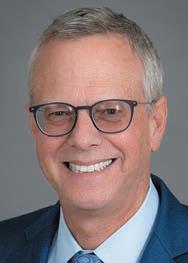
Will you highlight your role and areas of focus?
I am the Chair of the Department of Psychiatry at the Zucker School of Medicine, Senior Vice President and Chair of Behavioral Health Services at Northwell Health, and Chair of the Department of Psychiatry at Zucker Hillside Hospital. I oversee all of behavioral health at Northwell, including our clinical, educational, and research missions.
Will you discuss the psychiatry program at The Zucker School of Medicine?
We focus on training students how to engage with patients, express empathy, and build alliances – all the key conditions for effective care. For example, our Introductory Clinical Experience (ICE) course places students in small groups where they practice interviewing real patients in the presence of a faculty member and peers, and then give each other feedback. This is a powerful experience for students – to learn from patients who are suffering from serious psychiatric illness. We also have an Advanced Clinical Experience, which is offered in their third year, where every student learns how to diagnose and treat major psychiatric illnesses. Each year, around 10 percent of the graduates go into psychiatry – which is exceptional. As importantly, for those students who are not going to be psychiatrists, they learn how to engage with their future patients many of whom will have a psychiatric illness.
Northwell Heath has been a leader in addressing the mental health crisis. What are the keys to driving lasting change in tackling this crisis?
A big part of what excited me about coming to Northwell was our CEO, Michael Dowling, and our COO, Mark Solazzo, who are absolutely committed to addressing the mental health crisis. It is rare for the highest levels of leadership at a health system to make this commitment because the reimbursements from payors for behavioral health services do not cover the costs. While many health systems are trying to minimize their exposure to these losses, we have leadership who are committed to make a difference and treat mental health as a key component of overall health.
Northwell is growing a full continuum of care that will address the mental health crisis in a very meaningful way:
• Digital/Self-Directed care – For those who do not need to see a therapist or psychiatrist but are experiencing stress, sadness, worry, grief or difficulty sleeping, we offer apps with text-based coaching, peer support, and educational resources.
• Integration – We are also embedding behavioral healthcare where people live and work. This includes our school mental health program for children and adolescents, our collaborative care program in medical settings, and our partnerships with faith-based leaders where we train clergy in counseling and embed therapists in churches and mosques to help address mental health for their constituents.
In order to help patients and their families get to the right care in a timely manner, we are building a navigation center which will use digital assessments, AI, and engagement with a clinician to navigate the patient to the right solution which can in turn alter the trajectory of psychiatric illness and literally save lives.
And as the number of children and adolescents in need of mental health support continues to increase at alarming rates, Northwell is investing $350 million over the next five years to expand pediatric behavioral health services, including creating a new model of care and building a preeminent center of mental health excellence that will bridge the gap between physical and mental health services for children.
Will you discuss how research is an important part of addressing the mental health crisis?
We need to develop better treatments and bring best practices directly to our patients. When we embark on a research endeavor, we make a promise to patients to improve their lives. To help Northwell become a regional leader in depression, we are launching a mood disorders research program. Our department has pioneered new treatments for schizophrenia and first-episode psychosis and literally set the modern standard of care. Our current work in neuroimaging and genetics is identifying biomarkers that will allow earlier identification and treatment of mental illness. Similarly, we are studying how AI can help us analyze a 60 second clip of a person’s voice and language to screen for mental illness.•

An
EDITORS’ NOTE Stacey E. Rosen, MD is the Executive Director for Northwell’s Katz Institute for Women’s Health, the Partners Council Professor of Women’s Health and Professor of Cardiology at the Donald and Barbara Zucker School of Medicine at Hofstra/Northwell. Dr. Rosen is a leading expert in women’s cardiovascular disease and oversees women’s health services at Northwell with a focus on the elimination of healthcare disparities through comprehensive clinical programs, gender-based research, community partnerships and education. Dr. Rosen has been a practicing cardiologist for over 30 years. She co-authored the book, Heart Smarter for Women: Six Weeks to a Healthier Heart published in 2022 and co-produced the documentary Ms. Diagnosed which premiered at the Cinequest film festival in 2020. A longtime volunteer for the American Heart Association (AHA), Dr. Rosen will serve as the AHA President-elect beginning July 1, 2024. Dr. Rosen received the 2018 AHA Women in Cardiology Mentoring Award and, in 2021, she received the AHA’s Physician of the Year Award. She is also the 2023 recipient of the WomenHeart Wenger Award for Excellence in Medical Advocacy. Dr. Rosen graduated from the six-year medical program at Boston University School of Medicine and is a Fellow of the American College of Cardiology, the American College of Physicians, and the AHA.

Stacey E. Rosen
How closely is the Katz Institute for Women’s Health integrated within Northwell Health?
The Katz Institute amplifies, augments, and aligns the work of every department within Northwell. We have more than 800 medical professionals who are focused on women’s health, seamlessly integrated into our health system. Has progress occurred when you look at addressing health disparities for women?
I am by nature an “impatient” cardiologist – although great strides have been made, I do not think we have come far enough. There has been progress over my 30-year career, however we have not done enough to improve health outcomes for women or adequately understand the importance of sex and gender on health. We are learning that we need to better support research in this area, identify ways to provide more focused clinical care, and partner with all communities for better health outcomes.
percent of health outcomes are determined outside of a doctor’s office or hospitals. For this reason, we focus on community partnerships. When it comes to research, if we don’t ask the questions about these disparities, we are not going to have the answers. Additionally, clinical programs need to align around women’s evolving healthcare needs. All of these components are critical to get it right. Will you discuss the strength and expertise of the team at the Katz Institute?
Healthcare is a team sport. We have over 800 clinical members and they are clinicians and researchers across every specialty – they are practicing doctors and nurses; they are investigators; they are therapists; they are radiologic technologists and so many other medical professionals. We also have what we call Katz Ambassadors. Northwell’s strength is its 86,000-plus team members and these are colleagues across the health system who partner with us to expand the mission. This team approach is critical to our success.
How critical are metrics to measure the impact of Katz Institute’s work?
Will you provide an overview of your role and areas of focus?
I have been at Northwell Health for almost 30 years. I still have an active practice in cardiology, and I now oversee Northwell’s Katz Institute for Women’s Health. As you may know, the U.S. healthcare system was not designed by or for women. Historically, we always had a male model for healthcare and research that assumes women’s health is equal to men’s health, which is completely wrong. The Katz Institute for Women’s Health defines women’s health more broadly. There are conditions that are unique to women, such as reproductive and other gynecologic conditions, and certain conditions that are more common in women, such as autoimmune diseases and migraines. Also, there are diseases which manifest differently in women, like heart disease, and certain forms of lung cancer. We are focused on research, clinical care, and education around the unique health needs of women.
“We have more than 800 medical professionals who are focused on women’s health, seamlessly integrated into our health system.”
How important is it for the Katz Institute to take a comprehensive and integrated approach to women’s health?
This is a requirement. Our founding dean, Dr. Lawrence Smith reminded me that this comprehensive approach must begin with medical education and training that prioritizes sex and gender as foundational elements in how we practice medicine. The Katz Institute for Women’s Health prioritizes ongoing professional education for clinicians and researchers in these topics. We know that 80
Metrics are critical. At the end of the day, I am a clinician scientist who knows that data matters. Too frequently in the past, we failed to ask how outcomes were different between women and men, but we know the importance of establishing metrics and putting systems into place to better track and measure our work. It has to be nimble, and it has to be timely, since we can’t wait years to see and act on the data.
What has made your experience at Northwell so special for almost three decades? I came to Northwell over 29 years ago, and it was just different. I have had the opportunity to work in so many exciting and dynamic areas of healthcare within Northwell. People often talk about culture, but you really need to be inside Northwell to experience it. Northwell’s culture is fearless, agile, and collaborative. It starts at the top with our CEO, Michael Dowling, and our entire leadership team. It is a true pleasure to work at such a mission-driven organization.
What do you tell young people about the types of careers the profession offers?
I cannot imagine a better profession than healthcare. I am always learning and intrigued –it is never boring. I have patients that I have cared for since I started practicing 30 years ago; they are part of my family. Then you get the aspect of science and discovery which is fascinating. There is no other profession like it.•

EDITORS’ NOTE Chef Bruno Tison is the Vice President of Food Services and Corporate Executive Chef within Northwell Health’s Office of Patient and Customer Experience. Committed to delivering a worldclass food experience for Northwell’s patients, and building a healthy workplace for employees, Tison is responsible for promoting consistency and elevating the quality of food and beverage throughout the expansive organization. As a 30+ year hospitality industry veteran that includes Executive Chef of the legendary Plaza Hotel in New York City, Tison’s nouvelle cuisine has earned extensive critical acclaim. Tison comes to Northwell from the Fairmont Sonoma Mission Inn and Spa in California – a Condé Nast “Top Ten” rated spa and resort. There he successfully led the team in receiving the celebrated Michelin Star recognition for three consecutive years. Prior to joining the Plaza Hotel, Tison trained with several of France’s legendary master chefs including Bernard Waterlot, Roger Verge, Michel Guerard, and Alain Chapel. He also worked in some of America’s most prestigious kitchens in New York City as well as San Francisco, such as Ernie’s Restaurant and Pierre at Le Meridien, Alain Chapel’s first venture in the United States. A native of northern France, Tison began his culinary education at Belgium’s prestigious Institut Technique Des Metiers De L’Alimentation, where he graduated with highest honors and was awarded first prize for excellence in culinary achievement. Tison is also a member of the Société Culinaire Philantropique in New York City.

Bruno Bazin Tison
people who were in the most need of it, and Northwell Health provided the opportunity to cook great food for patients during a difficult time in their lives, and to make a difference on a large scale since Northwell has 21 hospitals and is the largest healthcare provider and private employer in New York State.
Was it challenging to change the mentality around food, service, and hospitality in healthcare?
I want to be transparent – this was a challenge. The truth is that in healthcare the food and the service of the food was never looked at as an asset; it was looked at as a cost. When I started on this journey, there were people who did not believe that what we were doing was important or that it would work, which is something I expected. I looked at it as an opportunity to show people the importance of food in healthcare and to prove the value it would create. It’s about creating a new culture around food and nutrition in healthcare and making sure that culture and that vision goes through the entire system.
also upgraded the kitchens and partnered with the hospitals’ dieticians so the new staff could produce a range of culturally diverse meals –from Asian to Latin American to Kosher – with all the nutritional requirements for patients and their various treatment plans.
Northwell does amazing things every day for its patients in regard to the treatment of illness and providing high-quality healthcare, and it was my responsibility to bring our food, and the service of the food, to those same standards. I knew that Michael Dowling, the CEO of Northwell, and the management team were supportive in this effort and would provide what was needed for me to drive change. I have been here for almost seven years, and while change can take time, we have made great strides in our food offering and how we provide service and hospitality at Northwell.
How are you able to provide consistent quality and service at all of Northwell’s hospitals?
What excited you about the opportunity to join Northwell Health and made you feel it was the right fit?
I felt that the opportunity to redefine food in healthcare was an amazing challenge which is something that I had been looking for in my career. I was in the hotel and restaurant industry for over 35 years, working in Michelin 3-star restaurants and 5-star hotels and resorts, and cooking for celebrities. I worked for people who were able to afford my style of cooking, which was for a very exclusive clientele, but I always thought about how I could help the community and serve people who could not afford to eat well. I wanted to give joy to the
“I looked at it as an opportunity to show people the importance of food in healthcare and to prove the value it would create.”
I started recruiting top chefs from around the world who had never worked in a hospital kitchen but knew how to use fresh ingredients to create healthy, made-to-order dishes. We
I visit a hospital every week personally, and I test the food and meet regularly with our executive chefs and the entire team. I need to be at the hospitals with my teams to get a true feeling of what is happening and how we are performing. With my 35 years of experience in hotels and restaurants, I can tell just by walking into a kitchen from the vibe and smell and looks on the faces of the staff whether the food is going to be good. Regarding service, when I see a member of our team delivering food to a patient and looking in the patient’s eyes, giving them a smile, asking them how they are doing, if they are enjoying the food – this is how I can see if we are delivering on our service promise. My focus is on bringing the hospitality industry into the hospital.
When you look at the success that you have achieved transforming Northwell’s food service, are you able to take moments to reflect on what you have accomplished?
I enjoy so much what I am doing – it doesn’t feel like work. While I am focused on what is next and am always looking at our food quality (86 percent) and service scores (54 percent) which are now the highest ever at Northwell, when you receive a letter from a patient saying that you helped change their life and provided something that they never expected in a hospital, it is a special feeling. There is nothing more fulfilling than having the opportunity to touch someone’s life and make a difference – that is the true meaning of joy.•










































Italian Palette Knife Painter








British Contemporary Artist
PTOLEMY MANN


Findlay Galleries celebrates 154 years in the art business. A family business founded in 1870 representing over 100 artists and artist estates, with gallery locations in both Palm Beach and New York. Specializing in Impressionism, European Modernism, l’École de Rouen, l’École de Paris and 20th Century American Art, with exclusive representation of contemporary artists and artist estates.
Palm Beach (561) 655-2090 165 Worth Avenue Palm Beach, FL 33480

French Post-Impressionist Painter











French Post-Impressionist Painter

New York (212) 421-5390
British Contemporary Painter

La Societe Parisienne


Ilya Bolotowsky / John Ferren / Ward Jackson






Croatian Contemporary Hyper-Realist Painter




An Interview with Anne Chow
EDITORS’ NOTE Anne Chow is a transformative business leader whose trailblazing corporate career spans over three decades in the technology and business sectors. She is currently Lead Director on the Board of Directors of FranklinCovey, a company dedicated to organizational transformation through leadership, culture, and execution. Additionally, she serves on the Board of Directors of 3M, a company focused on applying science in collaborative ways to improve lives and solve the world’s toughest challenges; and CSX, a leading supplier of rail-based freight transportation in North America. Chow is also a Senior Fellow and Adjunct Professor of Executive Education at Northwestern University’s Kellogg School of Management and actively supports numerous local and national organizations, including serving on the Dallas Mavericks Advisory Council and Georgia Tech’s President’s Advisory Board. In her prior role, as the first woman of color CEO in AT&T’s 140+ year history, Chow led AT&T Business, a $35 billion global operating unit comprised of over 35,000 people. Appointed to this role in 2019, she guided this team through the pandemic amid unprecedented market upheaval around the world to serve customers with communications solutions across all sectors including small- and medium-sized businesses, global multinational enterprises, the public sector as well as nearly all of the Fortune 1000. Chow’s leadership experience spans product management, marketing, sales, strategy, customer service, operations, network engineering and more. As a lifelong learner committed to inspiration and impact, Chow engages with local, national, and global audiences through keynotes, panel discussions, and published works. She is the best-selling co-author of The Leader’s Guide to Unconscious Bias: How to Reframe Bias, Cultivate Connection, and Create High-Performing Teams and author of LEAD BIGGER: The Transformative Power of Inclusion, due out in September 2024 by Simon & Schuster. Chow holds BS and MEng degrees in electrical engineering as well as an MBA with Distinction from Cornell University, and is a graduate of the Pre-College Division of the Juilliard School of Music.
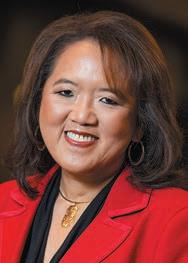
Anne Chow
I was taught to believe in the power of education and lifelong learning, the importance of striving to be your best, the imperative of giving back and being in service of others, as well as the realities of immigrant paranoia. In my early years, I felt that I never quite fit in – so I developed an awareness of the relevance of belonging and the role of leadership in creating it.
After completing my university studies, I went on to have a robust career in corporate America, starting out in technical roles and evolving into more business and leadership ones. I strived to create growth at the intersection of people and technology. Over the decades, I’ve often been “the first” or “the only” in what is done or accomplished, but this was never a top-of-mind objective for me. Rather, I leaned into my own development of what I believed leadership should be – very much human-centric in every way.
You spent more than 30 years of your career at AT&T. What made the experience at AT&T so special for you?
Never did I imagine that I’d work for the same “brand” in this first long chapter of my career. At first, I was drawn to the company because of my familiarity with it and its compelling role in society as more than just “the phone company.” As an engineer, I understood the importance of networking and what the power of connection could do in shaping not only our lives for the better, but industries, companies, and organizations around the world. I was driven to constantly learn, innovate, and lead, seeking greater opportunities for contribution. I
wanted to grow the business, but I also wanted to grow myself as a leader.
AT&T afforded me the chance to do that – 17 different roles with 26 different bosses over the course of over 32 years. I was fueled by AT&T’s purpose, the people, and the potential for impact with customers and the market at large.
Of course, there were many highs and many lows, but at no point did I ever feel bored nor faced with a lack of opportunity. I’ll be forever grateful to all of whom I worked with over those years. The collective experiences we’ve shared have shaped me into the leader and person I am today.
What interested you in writing the book, Lead Bigger, and what are the key messages you wanted to convey in the book?
I have a fundamental belief that leadership is a choice and the one common requirement for progress. Leadership takes on different forms, and each of us can choose to be a leader, not only in our jobs, but in our lives. While leadership truly transcends time, culture, and more, it, like everything else, must evolve with the times. Throughout my leadership journey, I’ve learned the importance of having a people, relationship, and connection-based approach which I feel now, more than ever, is required in all facets of society. While the world is becoming more interconnected, we see too much evidence of people being more divided.
In a growingly polarized world, inclusive leadership is necessary to move us forward. And I have a very strong point of view as to what inclusion is all about. I wrote Lead Bigger to help current and future leaders. Simply put, leading
Will you discuss your life journey?
I’m a proud second-generation American, the daughter of Taiwanese immigrant parents. Through my simple origins and upbringing,
“Through my book, I’m hoping to help people reframe their views of inclusion and embrace the fact that if you choose to be a leader, then by definition, you must be an inclusive one.”
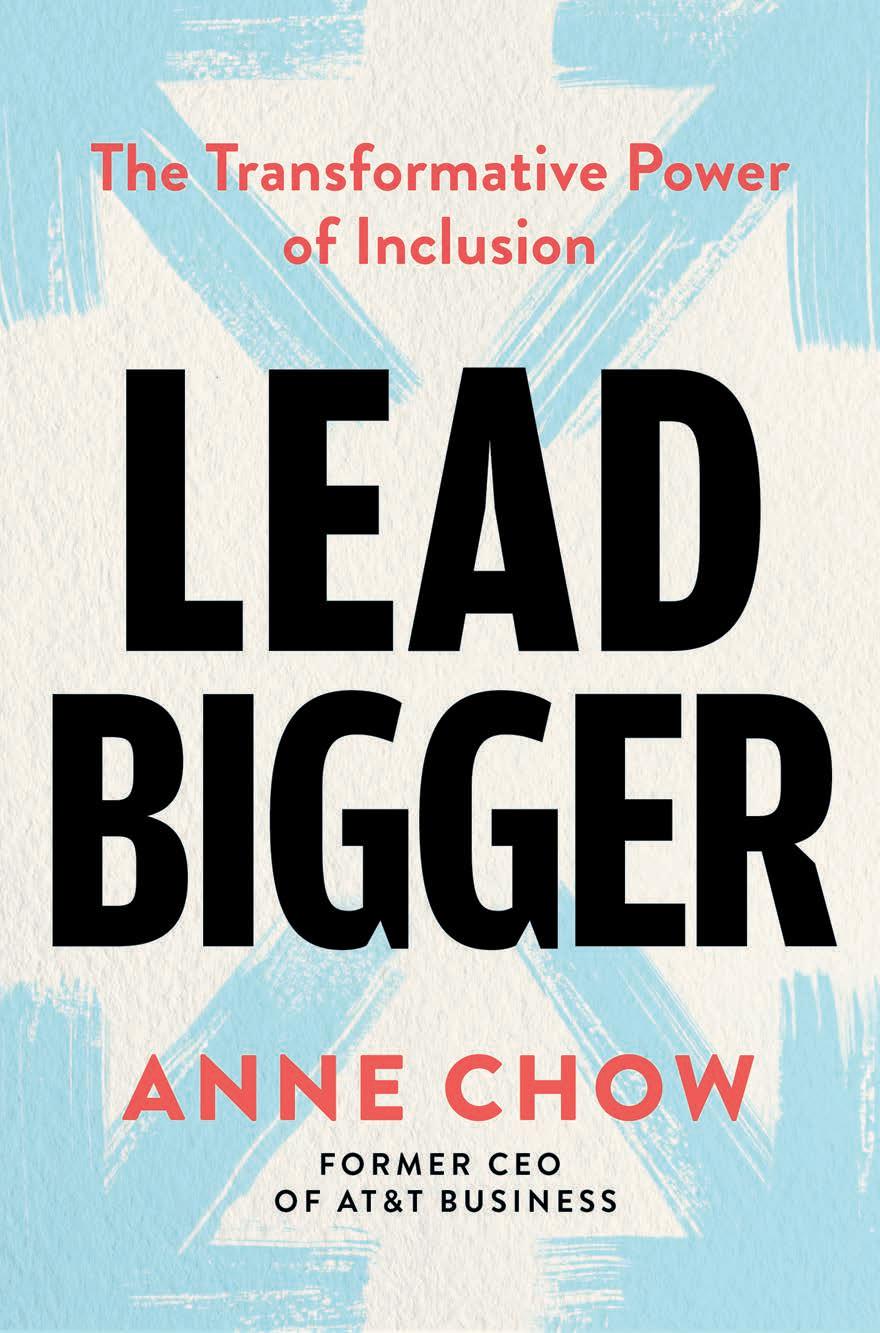
bigger is all about widening your perspectives for greater performance and impact. Through my book, I’m hoping to help people reframe their views of inclusion and embrace the fact that if you choose to be a leader, then by definition, you must be an inclusive one.
You placed a major emphasis on diversity and inclusion throughout your career. How critical is it for leading companies to build diverse and inclusive workforces?
My emphasis on diversity and inclusion is not separate from my leadership practice. Diversity is simply a reality of the modern world and goes far beyond solely issues of gender and race. As leaders we want the best teams – for our performance today and to ensure a successful future. To do so, we must lean into the people of today and those of tomorrow – which requires expanding our sources of talent as well as our own perceptions of what talent should “look/be like.”
Diversity includes an infinite array of dimensions and attributes we have, embracing the fact that no two people are the same. In the pursuit of diverse perspectives, it stands to reason that we must pursue and develop an understanding of diverse peoples. Inclusion requires action, representing thought processes and actions that aspire to yield greater innovation with greater results. Inclusion goes way beyond simple representation. Inclusion requires that you give voice to your people, and ultimately, also share your power and influence. If you do not lead inclusively, you’ll eventually lose to a leader who does.
Do you feel that there are strong opportunities for women in C-suites and on corporate boards?
There are strong opportunities for women and other currently underrepresented groups in the boardroom. When we consider boards, the type of opportunities are vast – public or private companies, PE or venture-backed, family owned, startup to scale, pre-IPO, small/mid/large cap, not-for-profit, Foundation, and more.
The reality is that the path to these board opportunities is not often clear nor ever linear. As with any type of tenured governance constructs, there are systemic issues which exist that can serve as barriers to entry. This bodes for the help of organizations such as NACD, Women 50/50 on Boards, Women on Boards and others who have not only access to those who have secured opportunities, but also a vast array of allies and influencers. Those who want to pursue board service as part of their career should start their learning early and recognize the importance of building sustained meaningful – versus transactional – relationships.
What do you feel are the keys to effective leadership and how do you approach your management style?
In my early days of leadership, I believed that one of the most important attributes of a leader was interpersonal flexibility. A leader must pragmatically and personally meet people where they are and also recognize systemic realities (processes, politics, biases) where they are. This approach is a connected one and serves as a foundation for positive change with greater probability of alignment and success. As my leadership skills and perspectives have evolved, I’ve developed something I call the “7 Cs of leadership” which captures my management style as well as serves as a framework for some of the core characteristics I look for in leaders. They are: character, competence, collaboration, communication, courage, curiosity, and caring. What advice do you offer to young people beginning their careers?
Seek growth opportunities and open your mind to learning and new perspectives. Realize that your career is a journey, not a destination. Embrace the fact that every business is a “people” business. Seek and foster meaningful relationships. Stay humble. Hustle. Save as much as you can now because your older self will thank you. Treat your health as a top priority. Recognize that your job and career are only part of your life – albeit a necessary and substantive part – not your whole life.•
EDITORS’ NOTE Wendy Stewart is President of Global Commercial Banking for Bank of America and is a member of the company’s executive management team. In this role, Stewart oversees Global Commercial Banking, one of the firm’s eight lines of business, which delivers integrated financial solutions to public and private companies with annual revenues of $50 million to over $2 billion across Middle Market Banking; Real Estate; Healthcare, Education and Not for Profit; and Dealer Financial Services. Previously, she was co-head of Global Commercial Banking for the Southeast region. She also served as Chief of Wholesale Credit Strategy for the company, responsible for strategy, data and analytics, business controls, and quality assurance across the Wholesale Credit organization, which delivers end-to-end credit solutions for the bank’s wholesale clients globally. Stewart joined Bank of America’s predecessor, NationsBank, in 1996, serving in both its national consumer and commercial organizations. After time away starting in 2000 for family and other opportunities, she rejoined Bank of America in 2007. Stewart is Vice Chair of Bank of America’s Global Diversity & Inclusion Council and leads women’s initiatives for the company, which focuses on key constituencies, including female employees, clients and communities. Stewart serves in a variety of leadership roles in the Atlanta and wider community. She is on the Board of Directors and Executive Committee for the Metro Atlanta Chamber and the Board of Directors for Paradigm for Parity. Stewart is a director of the Buckhead Coalition and is leading the workforce development efforts for the Atlanta Committee for Progress. She is chairing the Grove Park Foundation capital campaign, tasked with raising $20 million for Atlanta’s Grove Park neighborhood. Stewart holds a BS and BA degree in accounting and finance, political science, and history.

Wendy Stewart
3,800 retail financial centers, approximately 15,000 ATMs (automated teller machines), and award-winning digital banking with approximately 57 million verified digital users. Bank of America is a global leader in wealth management, corporate and investment banking and trading across a broad range of asset classes, serving corporations, governments, institutions and individuals around the world. Bank of America offers industry-leading support to approximately 4 million small business households through a suite of innovative, easy-to-use online products and services. The company serves clients through operations across the United States, its territories and more than 35 countries. Bank of America Corporation stock is listed on the New York Stock Exchange.
How do you describe Bank of America’s culture and values?
At Bank of America, we are guided by a common purpose that we refer to as Responsible Growth. Through the vision and leadership of our CEO, Brian Moynihan, we’ve transformed Bank of America into a simpler, more efficient company that combines two crucial areas: helping to grow the economy and creating value for our clients and the communities we serve. We’re helping create jobs, develop communities, and foster economic mobility.
Will you provide an overview of your role and areas of focus?
I am President of Global Commercial Banking (GCB) at Bank of America, leading one of the firm’s eight lines of business. We deliver integrated financial solutions, consultative advice, and a client-centric approach to support middle market companies in all sectors, including healthcare, education, not-for-profit, restaurants, technology, sports, and automotive dealers – providing exceptional service and seamless experiences to help them thrive.
leaders from all lines of business, focused on growing the diverse representation of our workforce, promoting an inclusive workplace and being a place where all employees can achieve their goals and meet the needs of our customers.
In addition, I lead women’s initiatives for the bank, with a focus on key constituencies, including female employees, clients, and communities. Previously, I served as President of Bank of America Atlanta and am now its Market Sponsor.
What have been the keys to the strength and leadership of Bank of America’s Global Commercial Banking business?
In 2023, we deepened our relationships with existing clients and saw opportunity for new relationships. We believe clients choose Bank of America for our advice, strength, stability, and innovative solutions. We deliver value for our clients by leveraging the full capabilities of the bank, including credit, treasury and payments, wealth management, employee benefits, global research, and more. We achieved significant growth by attracting hundreds of new clients and reached $195 billion in commercial loans. This resulted in a 77 percent year-overyear increase in clients acquired and 8 percent year-over-year revenue growth.
We accomplished this by keeping the client at the center of everything we do. Whether it’s our investment in technology or banker training, we position the GCB team to be ready and able to serve our clients through all stages of their company lifecycle. Our team strives to grow and enhance client relationships through banker effectiveness. The launch of our Advisory Excellence Framework unified our investments in training, technology, and tools to help our bankers deliver innovative ideas, creative solutions, and valued advice to support client and prospect priorities.
COMPANY BRIEF Bank of America (bankof america.com) is one of the world’s leading financial institutions, serving individual consumers, small and middle-market businesses and large corporations with a full range of banking, investing, asset management and other financial and risk management products and services. The company provides unmatched convenience in the United States, serving approximately 69 million consumer and small business clients with approximately
GCB serves one-in-five U.S. middle market companies with annual revenues of $50 million to $2 billion. This includes approximately one-third of U.S. Fortune 1,000 companies. We deliver innovative solutions and business planning tools in more than 100 U.S. and Canadian cities and 15 countries around the world.
I also serve as a member of the company’s executive management team and as Vice Chair of the Bank of America Global Diversity & Inclusion Council (GDIC). The GDIC is comprised of senior
Clients also benefit from having a trusted, local partner during moments of disruption. Whether it’s rising inflation and interest rates, threats of recession or supply chain interruptions, our bankers were there to provide guidance and stability for our clients. In early 2023, the U.S. banking industry experienced turbulence, and GCB bankers provided reassurance and steadiness to clients throughout it. We recognize that uncertainty is unsettling, so we made it a point to stay closely connected with clients. BofA has a long-standing commitment to our clients and their financial safety and security.
Will you highlight Global Commercial Banking’s solutions and capabilities?
Our commercial banking team works under a relationship management model, wherein local
and specialty bankers provide advice and a full range of commercial banking services – including credit, treasury, investment banking/advisory, international, global research, wealth management, and more – to our clients in their local communities.
Businesses benefit from having access to a single point of contact at BofA who intimately understands their company and can tap into our global suite of products and services. To this end, J.D. Power recognized the BofA commercial banking teams for the 14th consecutive year for our ability to provide “An Outstanding Customer Service Experience.”
At BofA, our clients inspire the sophisticated technologies and powerful solutions we create. We believe that innovation is only valuable when it generates value for our clients. In 2023, we also continued to enhance our digital banking platform, CashPro®, which helps businesses manage payments, receipts, liquidity, investments, foreign exchange, and trade all in one place. We introduced our Erica® proprietary technology to CashPro® Chat for automated and intelligent support for frequently asked questions and navigational support. Overall, adoption of BofA’s digital capabilities continues to grow, with 75 percent of SME clients digitally active at year-end.
How critical is it for Bank of America to build a diverse and inclusive workforce to mirror the diversity of its clients and the communities it serves?
At Bank of America, we value diversity in background, experience and viewpoints, including race, national origin, religion, age, gender, gender identification and expression, sexual orientation, ethnicity, disabilities, and veteran status.
We want to mirror our communities at all levels of our company. The diversity of our management team highlights our progress, with 55 percent diverse members, including seven women, two Asian leaders, two Black/African American leaders, one Hispanic-Latino leader and two leaders with a military service background.
In 2023, we continued to narrow the gaps at all leadership levels, with improvements in representation of Asian, Black/African American, and Hispanic-Latino teammates in all key categories, such as management levels 1–3, managers, executive/senior level and mid-level. We invest in talent acquisition programs and community partnerships to help create a strong and diverse talent pipeline that mirrors the clients and communities we serve.
And we continue to improve the diversity of our leadership, management and global workforce, as reflected in our 2023 numbers, including:
• 62 percent of our Board is diverse, including 38 percent women
• 55 percent of our management team is diverse, including 32 percent women
• 50 percent of our global workforce are women and 51 percent of our U.S. workforce are people of color
• People of color in executive/senior level positions have increased 67 percent since 2015
• Since 2009, representation of people of color in our campus classes has increased 72 percent.
What do you see as Bank of America’s responsibility to be engaged in its communities and a force for good in society?
Bank of America is focused on building financial security and wealth across diverse communities through a comprehensive approach. Internally, this means being a great place to work, hiring and recruiting diverse talent, and aligning policies and accountabilities. Externally, it’s our client-driven approach, delivering products and services that meet the diverse needs of our clients, and investing our resources to support our communities and the issues impacting them.
This includes our work to connect more individuals and families to affordable housing and home ownership, capital to start and grow small businesses, good jobs with living wages, and better access to healthcare.
To drive progress, we recognize that we share in the responsibility to do more. We also know we can’t solve these challenges alone, so BofA partners with other corporations, local nonprofits and community leaders across the country who want to create meaningful change.
efforts for the Atlanta Committee for Progress; and Chair of the Grove Park Foundation capital campaign, tasked with raising $20 million for Atlanta’s Grove Park neighborhood.
Do you feel that there are strong opportunities for women in leadership roles in the industry?
Some of the biggest challenges women in finance face today include underrepresentation in leadership roles and maintaining work/life balance. Helping women see what is possible for their careers, while also successfully managing family responsibilities, is essential. Companies like BofA realize that supporting women also means providing well-rounded benefits programs that include childcare, elder care, and mental health resources to balance the ongoing demands women face as professionals, spouses, mothers, and daughters.
“Bank of America is focused on building financial security and wealth across diverse communities through a comprehensive approach.”
The company has built a wide range of programs and resources to support female employees at all levels. Women-led initiatives like Power of 10 and the Leadership, Education, and Development (LEAD) for Women network are inspiring deep connections, innovative ideas, and priming the workforce for the next generation of women. Through self-led, small group interactions, Power of 10 groups focus on shared experiences and expertise in a safe, confidential, and encouraging space. LEAD for Women has more than 50,000 memberships around the world and is dedicated to promoting professional interactions that help attract, develop, retain, and advance women throughout the company.
You have spent much of your career with Bank of America. What has made the experience so special for you?
I have had so many amazing opportunities to grow and develop professionally and personally at Bank of America. I appreciate the opportunities to become a more effective leader, learn new things every day, and help to positively impact my colleagues, our clients, and the communities around the world where we live and work.
I started my career with a predecessor bank in 1996, working in both consumer and commercial banking roles. In the early 2000s, I stepped away from the bank to focus on raising my two young daughters. During this time, I started a nonprofit dedicated to reading readiness.
We deliver value for our clients by leveraging all that Bank of America has to offer. As an example, the Bank of America Community Development Banking team provides financing for affordable housing and economic development for individuals and families across the U.S. In 2023, this team delivered more than $7.1 billion in lending and investing to help create more than 9,000 affordable housing units.
In my own community, I strive to be part of the change I want to see. I serve in a variety of leadership roles in Atlanta, including: the Board of Directors and Executive Committee for the Metro Atlanta Chamber; the Board of Directors for Paradigm for Parity; Director of the Buckhead Coalition; leading the workforce development
In 2007, I was recruited back to Bank of America and quickly grew my career in commercial banking from a coverage banker to leadership roles with expanding responsibility. These included Georgia market executive to co-head of the Southeast Region and head of wholesale credit strategy.
In 2021, I was named President of Global Commercial Banking. We were deep in the pandemic and still working from home. Again, I was challenged to be creative in how I took on this huge, new role and communicated with a national team that I couldn’t meet with face-to-face.
What advice do you offer to young people beginning their careers?
Be very curious and ask thoughtful questions; volunteer to take on additional responsibilities and leadership roles; be flexible and open to new opportunities that come your way.•
EDITORS’ NOTE Catapulting South Carolina into the national spotlight when she was hired in May 2008, Dawn Staley has made the Gamecocks a mainstay in the battle for SEC and national championships. Under her leadership, the Gamecocks have reached many firsts – National Championships, NCAA Final Fours, #1 rankings, SEC regular-season and tournament titles, SEC Players of the Year, National Players of the Year, WNBA #1 Draft picks, an undefeated regular season, and #1 recruiting classes – to name the most notable. While her coaching career is in full bloom, Staley is still recognized for her body of work as one of the most decorated participants in United States women’s basketball history. The Naismith Memorial Basketball Hall of Fame solidified that legacy with her enshrinement as part of the Class of 2013. The Phoenix Club of Philadelphia established the Dawn Staley Award recognizing the nation’s top guard in women’s Division I basketball in 2013 as well. Staley was inducted into the Women’s Basketball Hall of Fame as part of the Class of 2012 and was one of the final nominees for induction to the U.S. Olympic Hall of Fame the same year. Also a force in USA Basketball, Staley was named the U.S. Women’s National Team head coach for 2017-21, leading the U.S. to 2018 FIBA World Cup gold to earn USA Basketball National Coach of the Year honors that year, adding gold medals at the 2019 and 2021 FIBA AmeriCups and stretching the U.S. Olympic gold medal streak to seven straight at the 2020 Tokyo Olympic Games, for which she again earned Coach of the Year honors. Prior to that appointment, Staley led three other U.S. teams to gold medals – 2015 FIBA U19 World Championships, 2014 FIBA U18 Americas Championship, 2007 Pan Am Games –and served as an assistant on the Senior National Team 2006-08 and again 2014-16, during which the U.S. claimed gold in the 2014 FIBA World Championship and the 2008 and 2016 Olympics. At the helm of the Gamecocks over the last 16 seasons, Staley has been named National Coach of the Year five times (2014, 2020, 2022, 2023, 2024) with her 2020 unanimous selection making her the first former Naismith Player of the Year to earn the Naismith Coach of the Year award. In 2024, she became the first men’s or women’s basketball coach to win that award in three consecutive seasons. She is a seven-time SEC Coach of the Year

and was the 2012 BCA Female Coach of the Year. She is the only Gamecock basketball coach – men’s or women’s –to amass 300 victories at South Carolina and became the fastest coach to 200 wins in program history, needing just 277 games at South Carolina to reach the plateau. She is the program’s all-time winningest coach (440) with a programrecord 13 postseason appearances and is the only Black head coach in men’s or women’s basketball to win multiple national championships. In the vaunted SEC, Staley’s 199 league wins are the most among active league coaches and third alltime. Prior to taking the helm of the Gamecocks on May 10, 2008, Staley made her coaching debut at Temple, helping the Owls reach the postseason seven times in her eight seasons on the bench, including six NCAA Tournament appearances.
As a player, Staley’s success came early in her career, beginning with being named USA Today’s National High School Player of the Year in 1988 as a senior at Dobbins Tech. She went on to a four-year career at the University of Virginia that featured three trips to the NCAA Final Four, including a
championship game appearance in 1991 after which she was named Most Outstanding Player. A two-time National Player of the Year (1991, 1992) and three-time Kodak All-American (1990, 1991, 1992), Staley was the ACC Player of the Year in 1991 and 1992 and the league’s Rookie of the Year in 1989. Finishing her career as the only player in ACC history – male or female – to record more than 2,000 points, 700 rebounds, 700 assists and 400 steals, Staley is one of three players at Virginia to have her jersey retired. She was named to the ACC’s 50th Anniversary Women’s Basketball Team in 2002 and earned a spot on ESPN.com’s “Top Players of the Past 25 Years.” In April 2008, she was inducted into the Virginia Sports Hall of Fame. On the international scene, Staley made her first appearance in a USA Basketball uniform as a member of the 1989 Junior World Championship Team and 15 years later played her final international game after helping the organization to a 196-10 record. Olympic gold medals in 1996, 2000 and 2004 highlight her collection of 10 gold medals and one bronze on the world stage. Staley was also on two FIBA World Championship goldmedal teams (1998, 2002). Twice named USA Basketball’s Female Athlete of the Year (1994,


2004), Staley counts carrying the U.S. flag in front of the United States delegation in the 2004 Olympic Games Opening Ceremony among her most gratifying moments on the international stage.
Following the 1996 Olympic Games, Staley joined the Richmond Rage of the ABL, one of two women’s basketball professional leagues started in the wake of USA Basketball’s success on the world
stage. After two all-star seasons with the organization, she switched leagues, signing with the WNBA’s Charlotte Sting in 1999. Including the 2005 and 2006 seasons with the Houston Comets, Staley played in the WNBA All-Star game five times and was the first player in league history to represent both the East and West teams during her career. A member of the WNBA’s All-Decade Team,
as selected by a panel of national and WNBAmarket media as well as the league’s players and coaches, Staley twice earned the Kim Perrot Sportsmanship Award (1999, 2006) and won the WNBA Entrepreneurial Spirit Award in 1999.
Following her retirement from the league, the WNBA began awarding the Dawn Staley Community Leadership Award in 2007, honoring the player who best exemplifies the characteristics of a leader in the community in which she works or lives. In July 2013, Staley founded INNERSOLE, which aims to provide new sneakers to children who are homeless and children who are in need. Remembering the feeling of confidence and pride she felt as a child whenever she wore new sneakers, Staley initially launched the organization via social media, and her broad network of friends, fans and colleagues immediately leapt into action. Shoes poured in from all around the country, and a movement was born. Local and national organizations have recognized Staley’s commitment to giving back, most recently with the 2020 Jefferson Award for Outstanding Public Service, The Columbia Chamber naming her its 2017 Ambassador of the Year and, in 2013, thenSouth Carolina Governor Nikki Haley tabbed Staley to receive the Order of the Palmetto, the highest civilian honor from the governor bestowed on those who have displayed significant achievement and service to the state. Staley has twice been presented the Wanamaker Award (1997, 2005), presented annually to the athlete, team or organization that has done the most to reflect credit upon Philadelphia and to the team or sport in which he/ she excels. She is the only individual woman to ever win the award and joins Joe Frazier and Steve Carlton as the only individuals to capture the honor twice. In 2007, the Rotary Club of Tulsa named Staley its female recipient of the Henry P. Iba Citizenship Award, which is presented annually to the male and female athlete who has excelled in both their sport and their service to others.
Staley was honored by the University of Virginia Women’s Center in 2006 with the Center’s Distinguished Alumna Award, which honors a female graduate of the University who has demonstrated excellence, leadership and extraordinary commitment to her field and who has used her talents as a positive force for change. The University further recognized Staley’s standing in the community when it asked her to give the valedictory address at the 2009 Valedictory Exercises.
Following South Carolina’s 2017 National Championship, both of Staley’s hometowns renamed streets in her honor with Columbia Mayor Steven K. Benjamin renaming Lincoln Street from College Street to Blossom Street, Dawn Staley Way, which leads directly to the Gamecocks’ homecourt, Colonial Life Arena, in April 2017. In December 2017, the City of Philadelphia named the twoblock stretch of Diamond Street from 23rd to 25th Street, which was the path from Staley’s house in the Raymond Rosen Projects to the Moylan (now Hank Gathers) Recreational Center where she began her basketball career, Dawn Staley Lane. In 2023, the City of Columbia announced that a statue of Staley would be created and is expected to be installed in Fall 2024 across from the South Carolina State House.

Did you know early on that you would spend your career in the game of basketball?
I didn’t think about it as a career, since I was so focused on being a player and just thought about playing. At that time, there was not an outlet to play professionally that I knew about and when you are young, you think that you will be able to play forever so you don’t focus on what comes next.
When I became a coach, I think I was prepared, having come from North Philadelphia which helped shape me, and from all my years as a player. I grew up in a disciplined household, and I have never been afraid of working hard. I think it is pretty simple and straightforward. Sometimes people make things difficult and complicated, but if you are consistent, focus on what makes you successful, take notes along the way, and work on the things that you need to improve, good things happen.
When you are recruiting players, while you are looking for the best talent, how important is personality and character?
It is super important. I look at the relationship that they have with their parents. That is a prerequisite for me. If they do not have a strong relationship with their parents, that is a tell-tale sign.
What are your views on the state of college sports today, especially with the transfer portal and players moving from school to school?
The transfer portal is making college basketball transactional, and I have not had to go there. I probably never will because that is my standard and my moral compass. I treat players coming and going as a relationship – no matter how long I have a player, it will always be a relationship.
Even after my players are done with their college careers, I keep caring for them and wanting the best for them. I have strong relationships with my players, whether they transfer to our school or transfer out to another school. Many players transfer because of playing time, and I am fine with that. You have to do what is best for you, and young people are going to do what is best for them. I understand that, so I don’t get too high with the highs or too low with the lows.
Are you surprised to see the way women’s college basketball has grown and what the game has become?
I did not see it coming because I think that women’s basketball has been held back. When I played at the University of Virginia, we had many fans attend our games, so I didn’t know at that time what I didn’t know. We thought everything was good and we were getting opportunities and that we were being loved on. There was an appearance that we should be appreciative of what we were getting. Then you grow up in the game and you find out that there was some intentionality to holding our game back.
Today, the women’s game is bursting at the seams, and you have to try to keep up – it is supply and demand. I hope that our game continues to move in the right direction, but make no mistake of the fact that the playing field is far from even. The playing field will not be even for a long time, but it does feel better. There is no way to deny the strength and power of women’s basketball any longer.
How do you describe your coaching style, and do you enjoy the recruiting process?
I am probably a little Dr. Jekyll and Mr. Hyde. I give the pertinent emotion that is needed – if someone turns the ball over in practice, I will go off for a second; and when someone makes an incredible pass or dives for a loose ball, I am their biggest cheerleader. It happens in a matter of seconds. I am not sure who would say recruiting is fun. I do enjoy the competitive nature of recruiting and the challenge of it, but it is not something that I will miss when I hang my shoes up. I will miss coaching and I will miss the game, but I will not miss the recruiting process.
Do you miss being a player?
I never missed playing from the minute I stopped playing, because I played one year longer than I should have. I got it all out of my

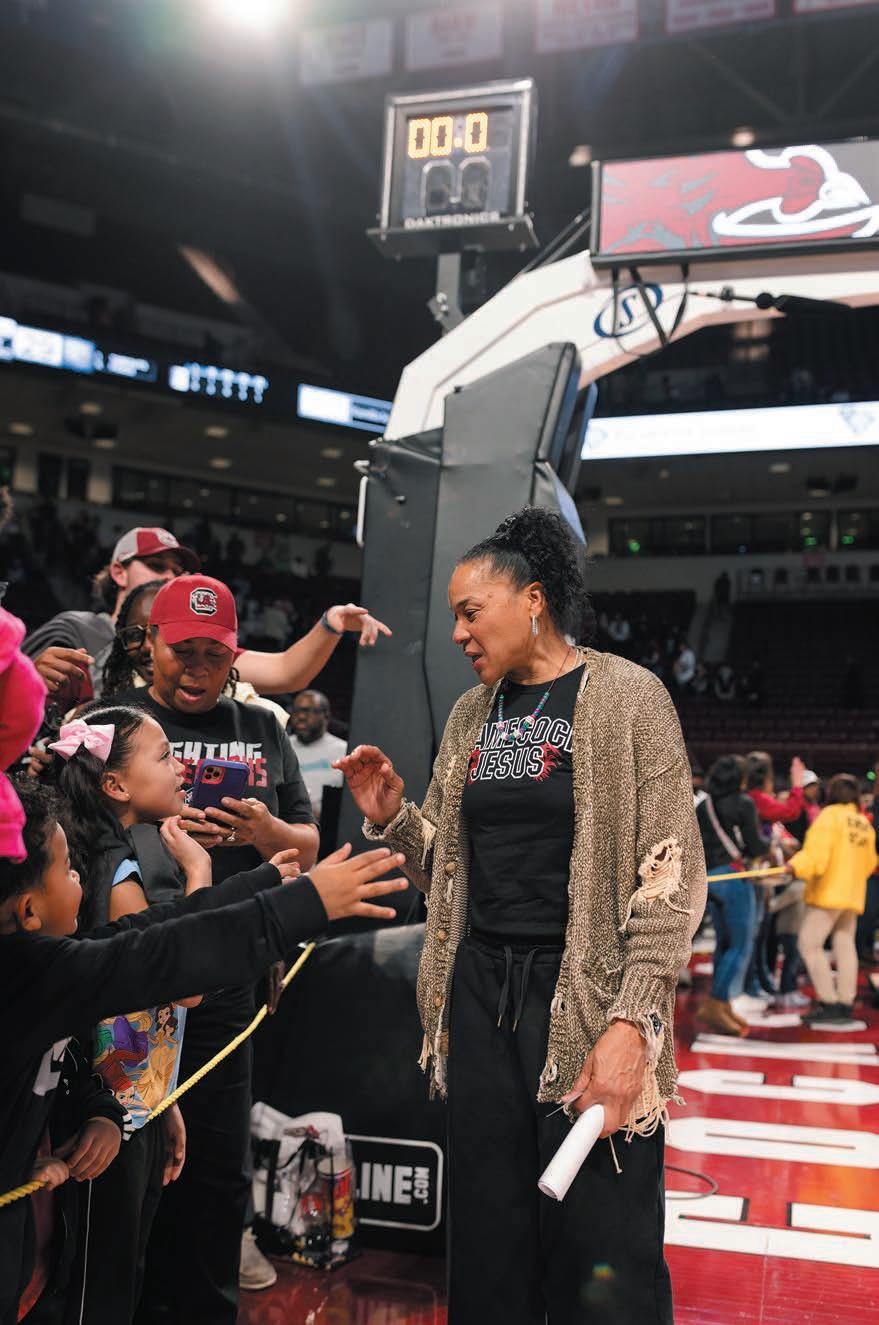
system. I am good. I love what I am doing, and I love being a dream merchant for young people. I love seeing when a player gets it and plays up to their standards, and I love the challenge of helping a player reach their potential when they are not doing so. I enjoy the dynamics of working with and teaching young people.
Will you reflect on your feelings about this past season and winning another National Championship?
I enjoyed this season. My players made me enjoy it. Our players had no care in the world and just played. We took on all the pressure as coaches, and that is how I want it to be.
You mentioned hanging up your shoes. Is that time still a long way off?
No. I am not a coach that is going to still be there when I am 70 years old.
How has faith played a role in your life?
My mother “worked in a vineyard” when it came to church so I was forced into church. I was the youngest in the family, and she wasn’t going to leave me alone all-day on Sundays when she went to church. A good thing about having to go with her to church all day was that I was able to get anything I wanted – I hit her pockets a lot. There were three services each Sunday, and between every service I would ask her for money to get some candy, so I was good for the whole week.
My mother was a believer until the day she died, and she set an example for me as a youngster which has stayed with me for my entire life. I have a true understanding of what God can do. As I got older and read scripture, it allowed me to realize that I can’t explain what my career has been. Yes, I work hard, but a lot of people work hard. People will say that God doesn’t choose who gets gifts, but I think he does. I am truly thankful for what I have received in my life. I am not someone who wants to talk about religion because I do not want to offend anybody or throw my religion on other people, but I really can’t help it because my cup runneth over. When I do talk about my faith, I do not mean to be offensive to anybody by saying that I am blessed.
Will you discuss your relationship with your mother?
My mother was my role model. I am a simple person, and I lead a comfortable, simple life. Sometimes basketball complicates it, but I am fine with that because I know that it doesn’t take much for me to be happy. I am good being at home and just chilling watching television. I get pleasure out of washing clothes. I wish I could iron my sheets every weekend, but I really don’t have enough time. My mother grew up ironing our sheets in the house, and when I do get a chance and have the time in the offseason, I do it because it makes me think of her. I am more like my mother than anything, and I actually didn’t like my mother growing up because she was such a disciplinarian and such a stickler for the way she needed things to be done. And now I am her – I am fully her.
She was able to see us win our first National Championship, and she passed away that year. She used to come to the games, and when she would see me get on the officials, she would run down from her seat to yell at me for yelling at the officials. Now she is just sending down the blessings.
Are you able to turn off the game and just have Dawn Staley time?
I protect my peace. I would not have been able to do it as long as I have without being able to protect my peace. I have a great staff who are always thinking about basketball, so when I take off for a few hours I know someone is working. It is a team effort.•



Nemacolin is a can’t-miss golf and resort destination in southwestern Pennsylvania’s Laurel Highlands. Here, you’ll find Mystic Rock and Shepherd’s Rock, two world-class courses designed by the legendary Pete Dye. With thrilling shot values, sweeping views, a state-of-the-art golf academy, and award-winning offerings for spa, dining, art, and adventure, your next golf getaway awaits at Nemacolin.
nd o erings
EDITORS’ NOTE Karen Dunn is one of the nation’s leading trial lawyers and co-chair of Paul, Weiss’ Litigation Department. She is widely recognized for securing courtroom victories in difficult cases. She also helps companies, public figures and boards of directors navigate reputation-threatening investigations, government inquiries and media scrutiny. Dunn earned a BS degree in political science and government from Brown University and a JD from Yale Law School.

Karen L. Dunn
FIRM BRIEF Paul, Weiss, Rifkind, Wharton & Garrison LLP (paulweiss.com) is a premier firm of more than 1,000 lawyers with diverse backgrounds, personalities, ideas, and interests who provide innovative and effective solutions to its clients’ most complex legal and business challenges. The firm represents many of the world’s largest and most important public and private corporations, asset managers, and financial institutions, as well as clients in need of pro bono assistance.
Will you discuss your career journey?
My first career was in communications and politics; after college, I worked in television news, then took a job on Capitol Hill as a staffer for then-Rep. Nita Lowey. I went on to serve as press secretary for Hillary Clinton’s 2000 Senate campaign and later as her communications director.
Eventually, I realized I could combine my passion for communications with my interest in public service by becoming a lawyer and trying cases as a prosecutor. But my path to trial work was not linear. After graduating from Yale Law School, I clerked for Judge Merrick Garland in the D.C. Circuit and then for Supreme Court Justice Stephen Breyer.
After President Obama’s election in 2008, I served in the White House counsel’s office. From there, I joined the U.S. Attorney’s Office for the Eastern District of Virginia as a prosecutor, where I learned how to be a trial lawyer – and discovered that I loved it.
After leaving that job in 2012 to run President Obama’s debate prep for his reelection campaign, I moved to private practice at Boies Schiller. There I tried high-stakes cases on behalf of clients like Uber and Apple before joining Paul, Weiss in 2020.
I’m incredibly grateful that my path ultimately led me to Paul, Weiss, a firm filled with brilliant, thoughtful, and fun colleagues. Last year, I was honored to take on a new role as the firm’s Litigation Co-Chair.
Will you provide an overview of your leadership responsibilities and current practice focus?
As litigation co-chairs, Jessica Carey, Kannon Shanmugam, and I work closely with firm Chairman Brad Karp and Deputy Chair Valerie Radwaner to oversee the strategic
“My matters have always been diverse, spanning several substantive areas of law, including high-value commercial disputes, class action work, trials and sensitive investigations, among others.”
direction of our Litigation Department, which includes nearly 400 lawyers handling more than 30 substantive areas of law.
I focus on two key areas: trying high-stakes cases, and advising companies, public figures, and boards on crisis management matters. My matters have always been diverse, spanning several substantive areas of law, including highvalue commercial disputes, class action work, trials and sensitive investigations, among others.
On the trial side, I represent some of the world’s best-known companies in their most business-critical litigation matters. Whether we’ve mapped out the courtroom strategy from day one or been brought in solely for trial, I lead our teams and first-chair at trial.
In my crisis management practice, I advise companies and boards navigating serious PR crises, governmental investigations, congressional inquiries and other potential or actual threats to their businesses – drawing not only on my legal background, but on my high-level experience in communications and in government service.
What are some of your biggest trial achievements in recent years?
One of my biggest trial achievements in recent years was for Uber Technologies, where I tried and won a bench trial in a $750 million case, the biggest case Uber has tried to a judgment. Boston’s largest taxi conglomerate had claimed Uber was running an illegal, unregistered transportation enterprise in Massachusetts before a law in 2016 authorized ride-sharing in the state. We came in just six weeks before trial, right after the judge had ruled against Uber on summary judgment. Ultimately, he found that the cab companies couldn’t show that Uber did anything wrong.
Last year, I led Oracle’s defense against a massive copyright infringement suit brought by a longtime software support services provider, Rimini Street. That case, which revolved around complex technical and damages issues, culminated in a federal jury trial and a total victory for our client.
And in 2021, alongside my co-counsel, I won a landmark victory for plaintiffs in the first private suit targeting the leadership of the white supremacist movement behind the deadly Unite the Right rally in Charlottesville in 2017. After a month-long trial that featured hateful rhetoric, explicit racist propaganda, and searing witness testimony, the jury issued a forceful
condemnation, finding each of the defendants liable for racially motivated civil conspiracy. It was among my proudest achievements that we could help provide some measure of justice and accountability for our clients.
What have been the keys to the strength of Paul, Weiss’ Litigation Department?
Paul, Weiss’ Litigation Department is known for our commitment to excellence and collaboration at every level. The department is filled with fantastic lawyers who are also great leaders and who care deeply about the law, and it’s truly a pleasure to be able to work with them every day and now help steer the department.
We truly operate as a unified team, from our most seasoned litigation partners to our newest associates. We strive to cultivate an environment where everyone, regardless of seniority, is empowered to contribute their best ideas and thinking, and there’s a consistent ethic here of rolling up our sleeves, scrutinizing every detail, and doing whatever it takes to position our clients for success.
Importantly, we invest year after year in our litigation talent to ensure that we have the best lawyers for not only what concerns our clients today, but what will be important tomorrow. To stay ahead of the curve, we recruit lawyers from the top echelons of government who are the leading authorities in the areas of emerging public scrutiny and debate – whether the concern is related to AI, cyber or national security, data privacy, cryptocurrency, antitrust or other areas.
How are you preparing the next generation of lawyers to lead significant litigation matters?
Developing the skills of our junior lawyers is a top priority for me and for our firm. We have a truly unparalleled curriculum that provides rigorous training experience on everything from deposition tactics to storytelling to trial advocacy. Our associates get hands-on experience through practice exercises, mock trials and hearings, and workshops with retired judges and seasoned litigators.
Of course, the most impactful training happens on live matters. Our associates are in the trenches with us, playing active roles on our case teams from the start. This immersive approach is the secret to developing great legal talent.
“Supporting
women’s advancement in the legal profession is “about ensuring that women associates are getting the critical feedback, coaching, advocacy, and sponsorship they need to continue progressing. It’s also about leading by example and showing that you can unapologetically bring your fullest, most authentic self to this profession.”
I’ve tried to take this a step further in my own practice by cultivating what I jokingly refer to as a “trial SWAT team” with a core group of incredible associates and younger partners. We’ve tried numerous major cases together in recent years, and have forged a tight-knit dynamic where we can anticipate each other’s needs, divvy up roles nimbly during the heat of trial, and learn from every experience as a cohesive unit.
Paul, Weiss is a firm that is deeply committed to pro bono work, and it’s also been a big part of your practice recently. Will you highlight this work?
Paul, Weiss lawyers have played important roles in some of the last century’s most impactful and landmark civil rights cases. The firm’s commitment to pro bono was one of the key reasons I was eager to come here in 2020, and it remains a fundamental part of Paul, Weiss’ identity.
For example, when I came to Paul, Weiss, the lawsuit against the neo-Nazi and white supremacist groups responsible for the violence in Charlottesville was approaching trial. But without a moment’s hesitation, the firm supported my involvement 100 percent –a courageous act in itself. In the end, all the defendants were held liable for conspiracy to commit racially motivated violence and jurors awarded significant compensatory and punitive
“Paul, Weiss’ Litigation Department is known for our commitment to excellence and collaboration at every level. The department is filled with fantastic lawyers who are also great leaders and who care deeply about the law, and it’s truly a pleasure to be able to work with them every day and now help steer the department.”
damages, and the case, Sines v. Kessler, now serves as a playbook for holding violent extremist groups accountable. Other suits have been brought based on our model. The trial, and a documentary on our case released last year by HBO, helped focus many more people on the very real threat white supremacist violence poses to our fundamental values as a nation.
In May, the firm launched the Paul, Weiss Center to Combat Hate, greatly increasing its institutional commitment. With the Center, we hope to take our anti-hate work a step further by facilitating even closer partnerships with civil rights organizations, clients, and academic institutions in bringing impact litigation to confront hate-based extremism through the court system and other avenues of legal advocacy.
What should law firms be doing to support women lawyers in their advancement, and what advice do you give young women litigators on how to achieve success in the profession?
During my career, I’ve been incredibly fortunate to have brilliant, generous female, as well as male, mentors and advocates, and I think a big part of the solution needs to come from women lawyers empowering each other and paying it forward. I try to pass that on by creating opportunities for my more junior women colleagues. It’s more than just giving substantive assignments; it’s about ensuring that women associates are getting the critical feedback, coaching, advocacy, and sponsorship they need to continue progressing. It’s also about leading by example and showing that you can unapologetically bring your fullest, most authentic self to this profession.
Sometimes, I’ve found that people hold themselves back out of anxiety that they will fail. My advice is to start from a place of “yes.” Often, the opposite of yes is not “no” – it’s fear. So oftentimes when people are saying “no,” and that they can’t do something, it’s because they’re worried they won’t be able to do it. You can’t make the fear go away, but the lawyers who develop into the most successful litigators are the ones who shove their fears aside and take on things they think they can’t do.•
EDITORS’ NOTE Alison Mass is Chairman of Investment Banking and leads the Office of Alumni Engagement for Goldman Sachs. She is an advisor to corporate and private equity clients globally and is a member of the Investment Banking Executive Committee. Previously, Mass served on the Management Committee from 2018 to 2023. Prior to her current role, she was global head of the Financial and Strategic Investors Group (FSIG) in the Investment Banking Division and was co-head of FSIG in the Americas from 2003 to 2015. Mass joined Goldman Sachs as a partner in 2001. Prior to joining the firm, she worked at Merrill Lynch from 1990 to 2001 and held several senior management positions in the securities and investment banking areas. Earlier in her career, she worked at Drexel Burnham. She serves as a member of the New York University Stern Executive Board and is a member of the Board of Directors of the New York City Ballet. Mass earned a BS degree and an MBA from New York University.
FIRM BRIEF

Alison Mass
How do you describe Goldman Sachs’ culture and values?
The firm’s core values are partnership, client service, integrity and excellence – and that is how we operate.
We have a culture of excellence, and we strive to deliver that in everything we do for our clients which sets the tone of the firm. With that, our holistic client service is unmatched, and you would be hard pressed to find an organization that delivers for their clients across businesses and geographies the way Goldman Sachs does on a consistent basis.
We also pride ourselves on having the best people and we have a very deep bench of talent who are all focused on achieving the same goals for our clients each and every day.
What have been the keys to Goldman Sachs’ industry leadership and how do you describe the Goldman Sachs difference?
In my almost 45 years looking at the financial services industry, I can honestly say that Goldman Sachs has always been the gold standard. The reason for that is simple – it’s the culture of our partnership, which is something I don’t believe any other firm has.
someone in Tokyo in public equities or in New York in commodities, you hear the same about Goldman Sachs. The same values, same way of communicating, intelligence, ethics, and energy.
I always say there is only one speed here and it is “on.” Our people walk into the building with a seriousness of purpose to help our clients. Everyone is on the field suited up and we come in every day to deliver the best. Having that true north of delivering excellence for our clients and pairing that with our focus on hiring, retaining, and investing in the development of our people is a differentiator because it sets the foundation for a consistent culture that no one can replicate.
That also extends to the initiatives we run in the communities in which we live and work –whether that is our 10,000 Small Businesses initiative, our 10,000 Women program, or our One Million Black Women program. Broadly speaking, these flagship programs are aimed at inclusive economic growth. By leveraging Goldman Sachs’ knowledge and expertise to make a difference for those who need it, we can drive lasting impact in our communities.
Will you highlight your role and areas of focus?
Goldman Sachs (goldmansachs.com) is a leading global financial institution that delivers a broad range of financial services to a large and diversified client base that includes corporations, financial institutions, governments and individuals. Founded in 1869, the firm is headquartered in New York and maintains offices in all major financial centers around the world.
Goldman Sachs has preserved its partnership in a way that hasn’t been possible for many of our peers who have gone through large scale mergers. We have a partnership of senior leaders who are always working together, rowing in the same direction towards the same goals. As a result of that, if you speak with anyone who engages with us regularly the feedback is very consistent. Whether you talk to
I am the chairman of Investment Banking and am responsible for some of the firm’s most important corporate and private equity client relationships. That includes day-to-day coverage of clients like IBM, Procter & Gamble, KKR, Bain Capital, Warburg Pincus, and Carlyle. My focus is to continue to bring in new business for the firm, meet with new clients and mentor our people. Simply put, I am a banker and have been covering the private equity industry
“In my almost 45 years looking at the financial services industry, I can honestly say that Goldman Sachs has always been the gold standard. The reason for that is simple – it’s the culture of our partnership, which is something I don’t believe any other firm has.”
“Having that true north of delivering excellence for our clients and pairing that with our focus on hiring, retaining, and investing in the development of our people is a differentiator because it sets the foundation for a consistent culture that no one can replicate.”
for over 40 years – I met some of my current clients back in the early ’80s – and have had the privilege of growing up alongside the PE industry. Prior to becoming chairman of Investment Banking, I ran the financial sponsors business at Goldman for 15 years.
In addition to my banking responsibilities, about a year and a half ago I was asked to run the Office of Alumni Engagement on behalf of the firm to increase our connectivity with our 110,000plus alumni spanning nearly 120 countries. This includes over 1,000 partner alumni and many influential business executives, elected officials, leading investors, nonprofit leaders, sports team owners, authors, professors, and Olympic athletes, to name a few.
I also spend a great deal of my time helping the next generation of talent at the firm transition into being the greatest leaders they can be, which is an important part of our culture. We consider our people our greatest asset, so investing in the future of the firm to ensure our culture continues to thrive is incredibly important to me.
Will you elaborate on your role leading the Office of Alumni Engagement?
I have a small but formidable team that is fully dedicated to this initiative. We also have the good fortune of having a task force of senior people across the firm who are incredibly engaged in our strategy and who care deeply about our alumni, many of whom are our clients. Fostering our alum’s connections to the firm and our leadership is also incredibly important to our brand and reputation.
Each week, we have a 90-minute team meeting where we go through everything we are doing commercially, engagement through events, our monthly newsletter, and so many other initiatives that support our strategy. The team then spends the next week executing on our strategy and I have to say, our task force of over a dozen senior leaders really enables our team to operate as part of the One Goldman Sachs ethos, which is a more integrated and comprehensive approach to serving our client franchise.
Our task force includes senior leaders such as our Global Co-Head of Private Wealth Management and Co-Head of One Goldman Sachs, Meena Flynn; Global Head of Investment Banking Services, Aasem Khalil; our Chief Technology Officer, Atte Lahtiranta; Global Head of Corporate Communications, Tony Fratto; and our Chief Marketing Officer, Fiona Carter. These are senior leaders of the firm who raised their
hands to be part of this initiative because it is so important to them.
The combination of our great core team and these senior leaders is critical to driving forward our efforts on behalf of the firm.
How critical is it for Goldman Sachs to build a diverse and inclusive workforce?
It is mission critical for a variety of reasons. Our clients are diverse themselves, so they want to have a diverse group of people who advise them. It’s proven that diverse groups make better decisions.
Our people also want to work in an environment with diverse leadership where they can bring their genuine selves to work. It has been a journey and is something we continue to focus on and prioritize every day. We still have plenty of work to do as an organization, but it is also great to see the strides we have made.
It is a virtuous cycle when done properly because you can retain diverse talent if you embrace and celebrate diverse talent, letting people truly be their genuine authentic selves at work – and that talent then yields great results for our clients.
What do you see as Goldman Sachs’ responsibility to be engaged in the communities it serves and a force for good in society?
We are a global corporation and I feel that comes with a responsibility to be engaged in the communities in which we operate. Goldman Sachs makes it easy for our people to give back through a variety of programs and initiatives like Community TeamWorks, which enables our people to partner with nonprofits to contribute their ideas, time, and expertise to drive tangible progress in our communities. The firm gives all employees a day off the desk to volunteer in their communities – a real differentiator for our organization, and I think this defines the culture of giving that underpins so much of what we do.
The best people coming out of colleges and universities globally also want to work for a corporation that has a sense of purpose. Giving back and staying engaged is not only the right thing to do – it is needed to attract the best talent.
Do you feel that there are strong opportunities for women in leadership roles in the industry?
I do. From my perspective, if you are in your early to mid-30s and a woman in our
industry, it is the best time to be in our business. When I started out, I just felt fortunate to have a job in investment banking as a woman.
It started to change about 20 years ago as the women who had made it into the room began to advocate and serve as role models for other women who deserved to be there. There were many times where I was the only woman on an executive committee or an operating committee. Simply being at that table raised awareness and gave me the voice to push for other women to be given opportunities. Over time, what we saw is that there is strength in numbers and that women in leadership positions beget more women leaders.
Today, it is more about substance than gender. Show up with excellence, give great advice to clients, and earn your spot. The next 10 to 15 years will be an extraordinary environment for women in our industry and a number of firms will have women leading in the C-suites. You joined Goldman Sachs more than 20 years ago. What has made the experience so special for you?
This is a surprisingly easy answer – the people. It is all about the people to me. There is just an extraordinary collection of talented and diverse individuals at Goldman Sachs. I am in awe that after over 40 years in this business, I still learn so much from my colleagues whenever I set foot in the office. If there is something I don’t know, I call a colleague and get an immediate crash course from one of the brightest minds in the industry. It is not just a privilege to be in a place with so many smart people who you can learn something new from every day, it’s also a lot of fun.
There were certainly a number of opportunities from outside of Goldman Sachs over the years, but I never wanted to go. I get my energy from walking into our buildings around the globe and seeing people who I really like and admire. That is truly a special quality to have in a workplace.
What advice do you offer to young people beginning their careers?
Invest in relationships with people. Every opportunity I have ever had in my career either with a client, internal stakeholders, or to join a board has been because of a relationship I developed and maintained.
Spend the time to really invest in relationships and you will see continued benefits throughout your career.•
EDITORS’ NOTE Rashmi Madan is a Senior Managing Director and Head of EMEA in Blackstone’s Private Wealth Solutions Group. Private Wealth Solutions’ mission is to bring institutional quality products across a broad spectrum of alternative asset classes to individual investors and their advisors. Madan joined Blackstone in 2011. Prior to her current role, she was Chief Operating Officer of Institutional Client Solutions (ICS) in Europe, as well as Head of ICS Europe for Blackstone Credit. Before joining Blackstone, Madan worked for eight years in Credit Sales and Structured Credit at JPMorgan where she focused primarily on raising capital for CLO managers, hedge funds and private credit funds from European institutional investors. Prior to that, she spent five years at Morgan Stanley working in Leveraged Finance and Debt Capital Markets in London and New York, respectively. Madan received a BS degree from Cornell University where she majored in industrial and labor relations.

equity, opportunistic, non-investment grade credit, real assets and secondary funds, all on a global basis.
What defines culture at Blackstone?
If you speak to any leader at Blackstone, they will tell you that our culture has been a critical driver of our success. Our Co-founder and CEO, Steve Schwarzman, often refers to two pillars that define our culture: excellence and integrity. Excellence means giving it your all, striving, staying focused, and playing as a team. Integrity is about operating to the highest standard, and never compromising on treating each other nicely.
training to mentorship programs, accessible resources, and external partnerships. So the firm really lives and breathes our culture every day –and I see that as quite unique in this industry.
FIRM BRIEF Blackstone (blackstone.com) is the world’s largest alternative asset manager. It seeks to create positive economic impact and long-term value for its investors, the companies it invests in, and the communities in which it works. It does this by using extraordinary people and flexible capital to help companies solve problems. Its $975 billion in assets under management include investment vehicles focused on private equity, real estate, public debt and equity, infrastructure, life sciences, growth
It’s also about creating an environment that’s inclusive and helps people learn. This really comes through in how we work together. I remember when I was still relatively new at the firm, Steve said that if a colleague calls you with a question, you should always take the time to help them. That advice stuck with me, and you can see the focus on collaboration throughout the firm. We can be individually great, but together we are much more powerful – that is crucial.
What makes Blackstone an industry leader when it comes to culture?
The concept of “corporate culture” can quickly lose its meaning when it is treated as a box-ticking exercise or becomes an afterthought. At Blackstone, the culture is set right at the top by Steve and Jon Gray (President and COO), and filters from there throughout the business. We devote significant time and resources to cultivating that culture – from
The other point I would make is that as the business has grown globally, the firm has done a remarkable job to ensure our culture is preserved. Scaling globally and having offices in many different countries around the world can be a real challenge for a business when it comes to maintaining culture. At Blackstone, we prioritize leaders spending time with colleagues in different offices when traveling – in fact, part of the reason I was asked to take on this role to grow our business in Europe was to anchor our existing culture and integrate a new team, as I was able to draw on my long-standing experience in the firm.
Will you provide an example of Blackstone’s culture in action?
The moment I really saw us stand apart and flex our culture was during COVID. From day one, it was evident that protecting our culture would be a non-negotiable regardless of the circumstances, and the firm went to great lengths to ensure even when we weren’t able to be together, we were working as a cohesive unit globally with clear direction. Each individual team also made an effort not only to get the work done, but to ensure all teammates were doing well.
Early on in the pandemic we launched BXTV, a weekly morning meeting for the whole firm, chaired by Steve and Jon. It’s a way of staying connected on activity across the firm, with a healthy dose of fun thrown in as well, and it really became a common touchpoint and connection for everyone. It’s been so popular
“We devote significant time and resources to cultivating that culture –from training to mentorship programs, accessible resources, and external partnerships. So the firm really lives and breathes our culture every day – and I see that as quite unique in this industry.”
“Perhaps one of the most striking things about Blackstone is that while this experience has been so special for me, it is not unique to me. It’s within the fabric of our firm to provide people with the opportunity to do great things, so anyone you speak to at the firm has a similar story to tell.”
that we kept it to this day even after COVID. The team building that occurred during this time is a real testament to the resilience of our culture at Blackstone.
How critical is it to build a diverse and inclusive workforce?
For Blackstone, it’s core to what we do. Our people are our most important asset, which means we need to attract and retain the brightest minds.
Teams with varied backgrounds and experiences make better business decisions. My colleague, Joan Solotar, who leads our Private Wealth Solutions business globally, often says that the diversity of thought in our team not only benefits us, but also the outcomes and results we can produce for our clients, which is the most important factor for us at the firm.
Do you feel that there are strong opportunities for women to grow and lead in the industry?
In short – yes. I think that applies to the industry as a whole, but let me focus on Blackstone. We empower diverse perspectives at the firm wherever we can and group our efforts in two main ways – recruitment and retention.
On recruitment, our early career programs help us build a broad and robust talent pipeline and we also run programs to help expose students to Blackstone. One example of that is our Future Women Leaders Program, which each spring gives first- and second-year university students an insight to the world of finance through seminars, technical training, networking events, and mentorship in Blackstone’s offices.
On retention, we have numerous employee resource groups internally at the firm to nurture
and retain talent. For example, the Blackstone Women’s Initiative is our employee resource group supporting gender diversity that was started in London in 2008 and is spearheaded by the top leaders in our organization. The Initiative runs programs focused on fostering connectivity across our businesses and helps encourage organic mentorship and shape our recruiting strategy. Another example is our Working Families Network – an initiative which supports all caregivers by building community and providing a platform for dialogue, resources, and strategies on integrating work and caregiving responsibilities.
You have been with Blackstone for more than ten years. What has made the experience so special for you?
The special thing for me has been experiencing the firm grow and mature as an organization, and the many opportunities that have resulted for me. Since joining, I have had the chance to be a part of some of the most innovative ideas at the firm becoming reality: From launching the first direct lending funds in Europe and growing our private credit business, to now leading Private Wealth Solutions in EMEA and rethinking the way individual investors access private markets. Each of my roles has been about building something new – businesses and products – and I’ve relished each of these opportunities.
Perhaps one of the most striking things about Blackstone is that while this experience has been so special for me, it is not unique to me. It’s within the fabric of our firm to provide people with the opportunity to do great things, so anyone you speak to at the firm has a similar story to tell.
I have also always worked with incredible people, and I would like to give special mention to Joan Solotar and Beth Chartoff, who are both inspiring women that taught me a lot during my time. Joan and Beth are both founding members of the Blackstone Women’s Initiative.
What advice do you offer to young people beginning their careers?
What I would say to anyone during the transition from school to work, is play to your strengths. In school, we often are told to spend time improving the areas where we aren’t as strong. In your working life, you will have the opportunity to follow the path that you gravitate towards and areas you naturally excel at. If you choose a career that matches your skills and interests, that’s where you will shine.
It is also helpful to remind yourself that careers aren’t linear. If something is not what you expected, make a move. If that move is not upwards in a straight line, but sideways or across into a new area, that can be a good thing. In the end, the jagged edges – not the straight line – are the experiences that will benefit you when you get into a more senior position.
One final point to mention is the importance of networking with intent. We all know the importance of a strong external network, but it is just as important for your career to think about how you manage your internal network. I encourage any young person starting out in a new career to get involved in their firm outside of their day-to-day, take part in the initiatives and social events that are offered. It’s an effective and simple way to get to know other business leaders and understand the business as a whole.•
“Excellence means giving it your all, striving, staying focused, and playing as a team. Integrity is about operating to the highest standard, and never compromising on treating each other nicely.”
EDITORS’ NOTE Michelle Wu is the first woman and first person of color to be elected Mayor of Boston. Wu got her start in public service interning at City Hall under Mayor Tom Menino while studying at Harvard Law School. She is an alumna of the Rappaport Fellows Program in Law and Public Policy, the recipient of the Massachusetts Democratic Party’s Franklin and Eleanor Roosevelt Award, and was named one of The Boston Globe’s 2021 Bostonians of the Year.
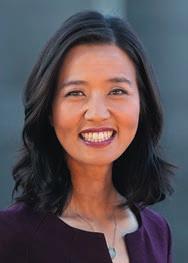
What interested you in public service?
Growing up in an immigrant family, I felt the invisible barriers that my parents always had to overcome – language, culture, stereotypes. They were skeptical of government and worked to stay as far away as possible. When my mom began to struggle with mental illness and I became her caregiver and guardian to my younger sisters, there was no avoiding many of the systems that didn’t seem to be designed for people like my family.
Then, as a law student, I interned for Mayor Tom Menino at Boston City Hall. Sitting on the other side of those big government counters for the first time, I realized I had an opportunity to change the experience of interacting with local government for our residents – I could help people feel seen and heard and valued, and directly make a difference in people’s daily lives. City government is closest to the people, and where real change can take root.
You are the first woman and first person of color to be elected Mayor of Boston. What has this meant to you?
There is a lot of emphasis put on firsts. Firsts are important insofar as electing women is correlated with an increase in the attention paid to issues important to women – and an increase in the actual delivery of services that address those issues.
But research has also shown that negative stereotypes about women as leaders are largely unchanged by first-time women leaders. So, more important than being first is making sure you’re not the last. I’m grateful to women like Senator Elizabeth Warren, Congresswoman Ayanna Pressley, Mayor Kim Janey, and so many others who opened the door for me.
In building the best possible team for Boston, we’ve made sure that all of our residents see themselves represented in our administration – from our first responders, public works crews, and BPS faculty and staff, to inspectional services, the City Clerk’s office, and our senior leadership teams.
Will you highlight the priorities and initiatives for your administration?
Our administration’s top priority is to make Boston a home for everyone, in every sense of the word. That doesn’t just mean making Boston a city where all our residents’ basic needs are met, where our communities are happy, healthy, and safe – it also means making Boston the city with the greatest possible opportunities for every family and every generation.
This starts with housing. Last year, we permitted the highest ratio of affordable housing in over a decade. The year before that, we permitted the highest number of housing units since 2018, including 1,300 affordable units – the most in a generation. We’re converting vacant offices into downtown residences, updating our
zoning code to make it easier to build more housing in neighborhood centers, and giving away lots to developers who pledge to build affordable homes on the land.
We’re also determined to keep Boston the safest big city in the nation. For two years in a row, our Boston Police Department officers and community members have managed to drive gun violence down to record lows. But any instance of violence is one too many, so our community safety team is taking a holistic, trauma-informed, and data-backed approach to prevention, intervention, and healing to ensure that we’re proactively addressing the root causes of violence. We also know that making our city’s streets safer isn’t just about ending violence – it’s about protecting drivers, cyclists, and pedestrians, too. This is why, in the last five months, we’ve built more speed humps in more neighborhoods across Boston than in the six years between 2016 and 2022, combined.
Finally, we’re focused on making Boston a fun, exciting, enriching place for families of all kinds. We’ve made it easier to build accessory dwelling units to keep families together, we’ve
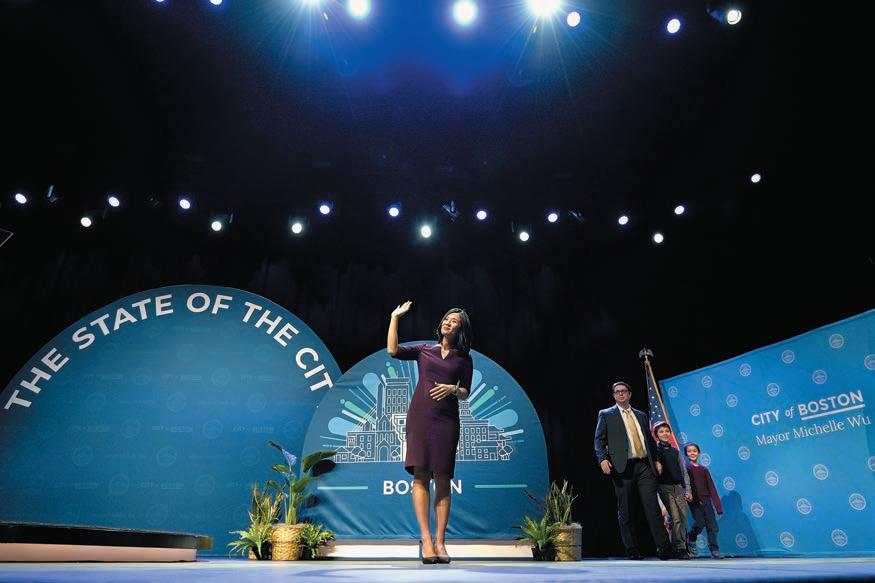
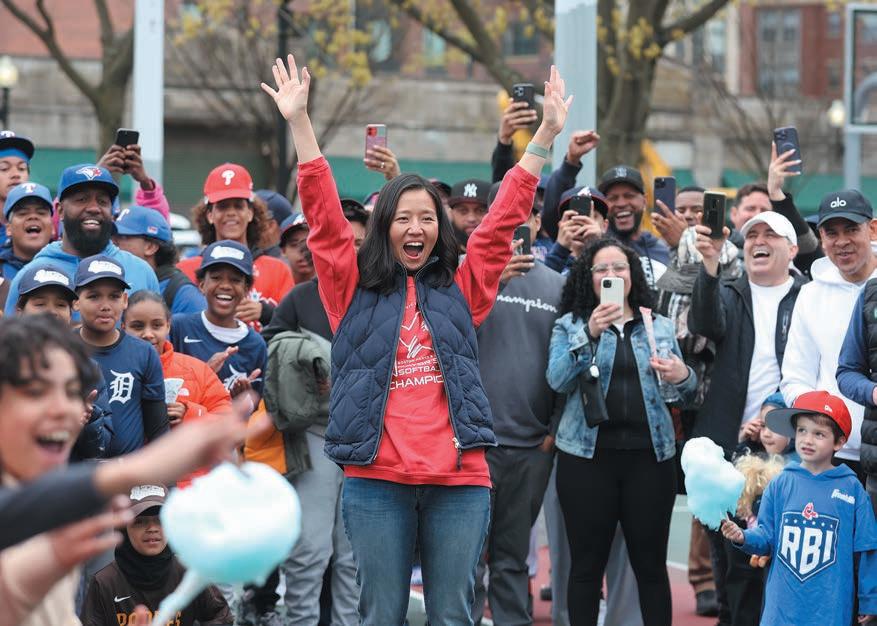
expanded universal Pre-K to reach nearly 1,000 more three- and four-year-olds, and, alongside our community partners, we’ve helped teach 2,000 young people how to swim, ride a bike, or play an instrument. And we’ve joined forces with Boston’s leading cultural institutions to open their doors to Boston Public School (BPS) students and families for free every first and second Sunday through August, with ongoing conversations about how we can extend the success of our BPS Free Sundays program.
What are the keys to being successful in reforming K-12 public education?
Centering our students, investing in and engaging them from the very beginning, and establishing systems to nurture and sustain their learning. All the research shows that it’s critical to start early, so we focus on fostering curiosity in our littlest learners – the three- and four-year-olds in our nationally celebrated Pre-K programs – to set them up for long-term success in grades K-12.
We also foster that curiosity through a laser-focus on literacy. Literacy is so much more than English class – it’s the gateway to excellence in every subject across every grade. We’ve studied the latest science on how students learn to read, and used that research to inform our curriculum and instruction to ensure that all of our students have the foundational skills they need to explore widely.
We’re also expanding bilingual education so that our multilingual learners get the education they need without having to give up their connection to other languages and cultures.
Since we know that learning doesn’t just take place inside the classroom, we take a “Community Hub Schools” approach to education. That means the education of every child
isn’t just their teacher’s responsibility – it’s a responsibility shared by the entire community. Delivering on that responsibility requires collaboration – between families, neighborhood leaders, community organizations, administrators, businesses, and the students themselves –to create the best possible conditions for success.
Together, we’ve developed more challenging coursework that reflects the diversity of our BPS families; partnered with our worldclass higher education ecosystem to pioneer
groundbreaking early college and dual enrollment programs; and leveraged Boston’s fastgrowing and future-focused industries to build out the strongest youth jobs program in the nation.
Will you discuss your commitment to address climate change?
In Boston, we recognize that climate touches everything: energy and transportation, housing and health, jobs, and infrastructure. Our goal to make Boston a home for everyone includes future generations, too. So, to keep Boston livable for our grandkids, and their grandkids after them, the very first bill I signed as Mayor required Boston to fully divest from fossil fuels by the end of 2025. And, since 2021, we have invested $400 million in environmental, social, and governance – or “ESG” – funds.
We’re equipping our 47 miles of coastline with the infrastructure necessary to withstand flooding, protecting Boston’s homes and businesses, and through our Building Emissions Reduction and Disclosure Ordinance, we’re taking significant steps to reduce building emissions in our city – which account for more than 70 percent of our total emissions, citywide.
We’ve launched two green energy retrofit pilot programs to make it easy to decarbonize residential buildings as well, and we’ve added a building operations career pathway to our PowerCorps green jobs program to ensure that our young people are set up for sustainable, wellpaying jobs as building owners look to bring on skilled workers capable of helping them update their energy systems to meet emissions targets. So far, we’ve distributed 80 certificates to graduates of our urban forestry and building operations tracks. Our current PowerCorps cohort includes a third track, Urban Greening, focused on green infrastructure, urban agriculture, and natural resource management.
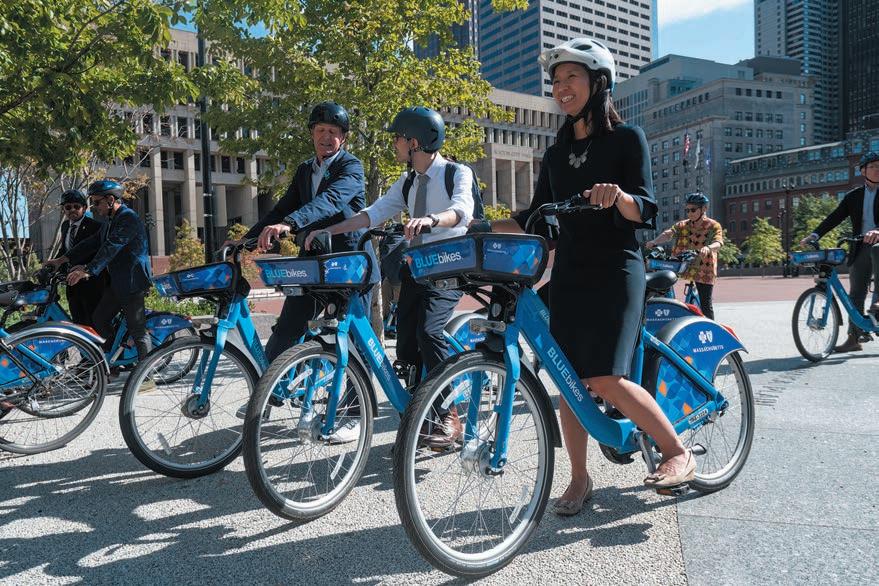
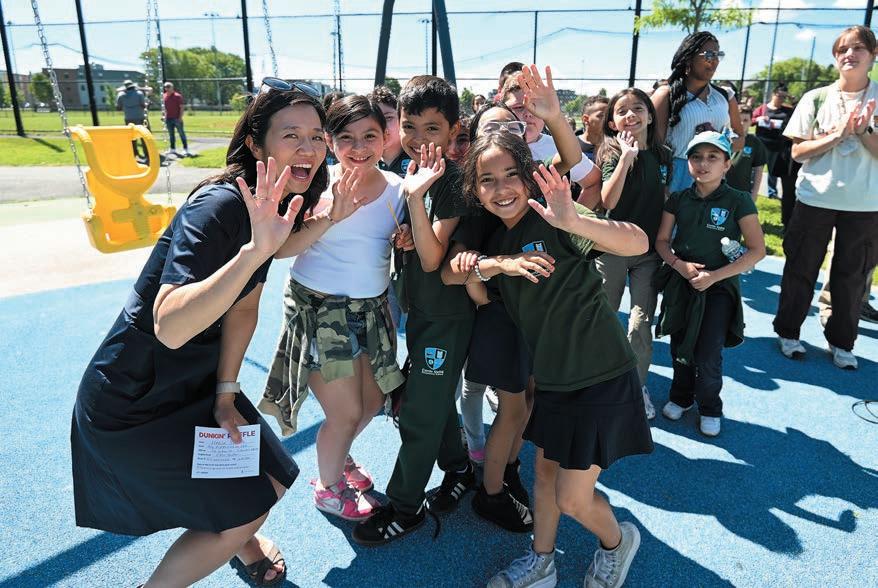
We’re also committed to making every neighborhood greener – literally. Trees are some of our best tools when it comes to fighting climate change. They clean our air, cool our streets, and bring natural beauty to our communities. So, we’ve grown our Parks Department’s Forestry Division to preserve and expand our tree canopy on public land, and we’ve launched an alliance of nonprofit partners to help us maintain trees on private property.
And to dispel the notion that “going green” isn’t for everyone – that it’s a luxury reserved for a certain class that can afford to pay a lot more to minimize their impact – we created Boston’s Community Choice Electricity program, (BCCE) –a municipal energy aggregation program that leverages the City’s collective buying power to purchase cleaner, locally-sourced electricity in bulk, and passes those savings on to residents and businesses.
From electrifying our school buses and banning fossil fuels in municipal construction and renovations, to replacing gas stoves with electric in public housing and making investments in permeable paving materials and green infrastructure technologies to reduce flood risks, we’re tackling climate change from every possible angle here in Boston. Because no matter how old you are, what neighborhood you live in, or what you do – all of us have a stake in saving our planet. So, we’re taking every action we can, and we’re making it easier for everyone to get involved in our ongoing efforts to make Boston the engine of innovation for climate resilience.
How has your administration addressed ethics and transparency in government?
It’s challenging to trust a system that doesn’t make any effort to understand or involve you. The challenges our administration is focused
on addressing – housing, safety, education, climate – are too big to tackle alone. They require all of us, working together, and that takes trust. So, we’ve dedicated additional resources to processing public records requests, and we have modernized our processes to ensure that all the information about City policies and programming is available online in more than a dozen different languages. Even more importantly, our community meetings – where residents are invited to share their perspectives and opinions to inform the creation of our policies and programs – are also multilingual.
Last year, for the first time in Boston’s history, residents and community members were invited to share their direct feedback for the City’s bargaining process with our biggest police union. And the results speak for themselves: our officers voted overwhelmingly to approve a contract that holds our department to the highest standards of accountability, setting a national precedent for community policing.
Earlier this year, I was proud to sign an ordinance establishing a Planning Department in the City of Boston for the first time in 70 years. The move restored planning as a core function of City government – accountable to the people of Boston.
How do you define Boston’s strengths as a leading business city?
We are blessed to have a business ecosystem here in Boston where all the different pieces come together in a way that’s mutually beneficial. Our world-class healthcare and biotech institutions and leading colleges and universities have – and share – talent, space, equipment, and knowledge that drive the groundbreaking innovations that Boston is known for.
We are the city where the COVID-19 vaccine was created, where breakthroughs in medical
treatment and climate technology happen every day. It’s no coincidence that Boston was the first and only American city to be chosen to host the prestigious Earthshot Prize, and the city where President Biden chose to announce his administration’s ambitious goal to end cancer.
Our people are the engine behind all of it. We are one of the most educated cities in the world – and, in particular, we have one of the highest shares of young people with college degrees. We also have a vibrant immigrant community here in Boston – drawn to our city by the opportunities our education system and economy offer to build a better life and shape a brighter world. Boston is the place where people come to do good in the world. Our communities love this city and care deeply about making it the best possible home for every one of our residents.
How critical is a strong public-private partnership and will you highlight your work with business leaders and the private sector?
Partnerships are at the heart of everything we do in Boston. Like I said earlier, the challenges we’re focused on tackling are big and complicated – and have been around for a while. Band-aids are easy to apply, but real, long-term solutions take teamwork to deliver.
It’s thanks to public-private partnerships that we’re able to provide well-paying jobs in emerging industries for our residents. Through our partnership with MassBio, we launched a life sciences workforce initiative, committing to bringing 1,000 Boston residents into life sciences careers by the end of next year. Our Office of Workforce Development’s partnership with the Private Industries Council has helped us guarantee a summer job to every Boston Public Schools student who wants one through our nation-leading summer jobs program, FutureBOS. And, with funding from Bloomberg Philanthropies, we partnered with Mass General Brigham to create new talent pipelines at BPS’ Edward M. Kennedy Academy for Health Careers. Through our partnership with the Green Ribbon Commission – which goes back more than a decade – we’ve made great strides on curbing Boston’s carbon emissions, developing and executing on plans to improve our city’s coastal resilience, and generally accelerating the City’s transition to a cleaner, greener future. And, in our work at the Planning Department, we rely on public-private partnerships to create beautiful open spaces; strong, sustainable infrastructure; and more affordable housing through collaborative development projects.
What advice do you offer to young people beginning their careers?
We need your leadership now more than ever. When the challenges around the world can feel so daunting, we need every community to be empowered and represented in the solutions. Whatever you choose to do – whatever problem you’re trying to solve in the world –take the time to really understand what it feels like, first. Learn from and listen to those who will be most impacted. And stay true to your vision and values.•





An Interview with Salimah Velji, MPH, MBA, Unified Executive Administrator, Department of Psychiatry and Behavioral Sciences, Montefiore Health System
EDITORS’ NOTE Salimah Velji is Unified Executive Administrator in the Department of Psychiatry and Behavioral Sciences at Montefiore. In 2023, she was also selected as the inaugural Executive Director of Strategy and Operations in the Department of Medicine. Prior to joining Montefiore Einstein, Velji served as Program Administrator in the Smilow Cancer Hospital at Yale New Haven, Senior Administrative Director for Clinical Operations and New Initiatives in the Department of Psychiatry at Massachusetts General Hospital, and Departmental Administrator/Chief Financial Officer in the Department of Urology at Columbia University Irving Medical Center. She earned her undergraduate degrees in business administration and health sciences from Ivey Business School of Western University in Ontario, graduating with honors. She later received her MBA from Yale School of Management and her Master of Public Health from Yale School of Public Health.
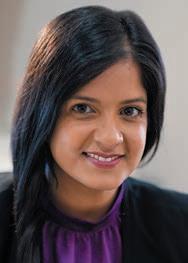
Salimah Velji
to serve immigrants regardless of their background or means. Albert Einstein College of Medicine was one of the first medical schools in the country to educate students of diverse backgrounds. Together, Montefiore Einstein became a model for how healthcare can promote social justice. At Montefiore, we are relentless in our pursuit to tackle hard problems in imaginative ways to best serve our complex and diverse patient population. We embrace humanity, innovation, teamwork, diversity, and equity across every problem we solve.
What have been the keys to Montefiore Health System’s industry leadership and how do you define the Montefiore difference?
Our values lead the way and help us attract and retain outstanding clinicians, educators, scientists, and administrators who are not just extraordinarily talented, but also driven by and devoted to our social justice mission.
Will you provide an overview of your role and areas of focus?
I serve as the executive administrator in the Departments of Psychiatry and Behavioral Sciences and the Department of Medicine at Montefiore Health System. I work closely with my Chairs/ physician partners and senior administrative leadership teams to advance the clinical, educational and research missions in these departments.
My work in clinical operations, human resource management, financial management, strategic planning, project management, and new program development empowers our team to do more and care more efficiently for the communities we serve. I work in partnership with our physician leaders to shape and move ideas from conception to implementation and evaluation.
The parts of my role that I enjoy the most include data-informed decision-making, mentoring high-potential individuals, problem-solving, and being surrounded by exceptionally smart and passionate people.
INSTITUTION BRIEF Montefiore Medicine (montefiore.org) is a leading academic medical organization comprised of Montefiore Health System and Albert Einstein College of Medicine. Together they are pioneering patient-centered research and providing exceptional personalized care with over six million patient interactions a year in communities across the Bronx, Westchester and the Hudson Valley. Montefiore Health System is comprised of 10 member hospitals, including the Children’s Hospital at Montefiore, Burke Rehabilitation Hospital, White Plains Hospital, and more than 200 outpatient ambulatory care sites that provide coordinated, comprehensive care to patients and their families. Albert Einstein College of Medicine, home to nearly 1,000 students in its MD, PhD, and combined MD/PhD programs, is one of the nation’s preeminent centers for research, medical education and clinical investigation.
How do you define Montefiore Health System’s culture and values?
Montefiore Health System’s leaders and staff strive for excellence while maintaining compassion, integrity, and a deep appreciation for remaining humble. You can tell a lot about an institution or individual by the problems they choose to solve. From the beginning, Montefiore was one of the first hospitals in New York City
Designing and implementing patient-centered models of care within the Bronx that challenge the status quo has been key to our success. With patients at the center of our work, we quickly recognized the importance of co-locating medical and psychiatric services to improve access and outcomes. Montefiore was one of the first organizations to integrate mental health expertise into primary care settings, and to add primary care into our mental health settings (reverse integration).
The Montefiore difference is not shying away from the most complicated healthcare challenges but embracing them using creativity and problemsolving to help the people who need us most. Our optimism, focus and passion move us forward and we are guided by the knowledge that public health is health, mental health is health, and every human being has a fundamental right to healthcare.
Will you discuss Montefiore’s focus on expanding quality care across the Bronx, Westchester, Rockland, and Orange counties?
Montefiore’s values define our philosophy of care and are at the heart of all we do. As an institution, we “double down” to improve the health and wealth in the communities we serve across the Bronx, Westchester, Rockland, and Orange counties. Having spent many years in different academic medical centers, I am so proud to be part of Montefiore and our commitment to serve diverse communities.
We are always looking for ways to improve access to quality care across our footprint. Recently, we obtained $7 million in funding from the New York State Office of Mental Health and a designation as a Behavioral Health Center of Excellence. This program affords us the opportunity to develop new initiatives in

the Bronx and to improve transitions of care from our emergency rooms or inpatient units to community settings and expand critical outpatient services.
Ensuring all of those we serve, including traditionally under-resourced communities like the Bronx, have access to the latest treatments is at the center of all we do. As an example, we launched our first transcranial magnetic stimulation (TMS) program for treatment resistant depression at Montefiore Behavioral Health Center in the Bronx. We have also launched an intensive outpatient program for adolescents and a new behavioral health virtual urgent care.
In Westchester, many would travel to the city to access specialty expertise. At Montefiore Einstein Advanced Care (MEAC) in Elmsford, we added access to dermatology, behavioral health, allergy and immunology, weight management, and gastroenterology to name a few. Our Comprehensive Brain Health Center (CBHC) brings together experts to address the full range of brain and spine disorders including support for the behavioral, cognitive, and emotional dimensions of these illnesses in adults and children.
Our continued innovation and expansion will further our reputation as a leading academic medical center with distinguished clinical specialty expertise, advanced research, and training that is poised to effectively serve our communities.
Will you highlight your focus on identifying new models of care and boosting recruitment and retention efforts to improve the patient experience and outcomes?
As part of our Behavioral Health Center of Excellence program, we will build additional support for hospitalized high-risk patients staffed by certified peers with lived mental health experience. Peers will meet patients prior to leaving the hospital and offer services like in-person support to accompany patients to appointments and help navigate medication refills. We expect this program will bolster outcomes for patients and reduce the chances of avoidable readmissions, which will safeguard capacity at the highest levels of care.
In Emergency Departments across the country, patients who require days or weeks of treatment for psychiatric illness face long wait times. To streamline the administrative steps needed to transfer a patient from the emergency department or medical floors into an open inpatient psychiatry bed, we implemented a huddle across locations. Daily communication across our multidisciplinary teams, data collection on acuity, presentation of priority patients, and revamped workflows means we can move our patients to the right level of care in a more timely and efficient manner.
As part of the planning stages for our future 21-bed child and adolescent inpatient psychiatry unit in the East Bronx, we are testing new compensation models including extensive investments in training and professional development to recruit staff.
To better serve children, adolescents, and their families, we are piloting extended hours of care for child psychiatrists and psychologists during evenings and weekends. We are working directly with our clinicians and patients to inform our approach and create a mutually beneficial model.
How important is it for Montefiore Health System to build a diverse and inclusive workforce to mirror the diversity of its patients and the communities it serves?
Delivering culturally attuned care requires Montefiore to train, build and retain a diverse workforce that is open to continuous learning. Our departments have robust Diversity, Equity, and Inclusion (DEI) and Well-being Committees with membership across a variety of roles, identities, and religious and cultural backgrounds. DEI and Well-being Committees continue to inform departmental leadership and strategies to enhance systems that promote building a diverse and inclusive workforce. For example, we have refined our recruitment and promotion processes to ensure our committees represent the diversity in our communities. We offer providers relevant training and professional development opportunities, whether for learning a new language or attending a training on implicit bias.
It is of utmost importance to us to listen and learn, and to better understand the unique needs of our communities and ensure our teams and care reflects these needs.
Do you feel that there are strong opportunities for women in leadership roles in the industry?
Individuals with a strong work ethic, the ability to manage multiple, competing priorities, who lead with influence and empathy, and create structure around ambiguous problems tend to excel in this industry. In healthcare, there is immense opportunity for women with these skills and drive.
As a mom of two young children, I am deeply inspired by the female leaders at Montefiore and other major academic health systems; they succeed in roles of great responsibility both at home and work. Professional fulfillment for me includes having leaders and teammates I trust and admire, feeling empowered, interesting projects, growing high-potential teams, mentoring, and the opportunity to make an impact on people and our community.
Montefiore values families, excellence, and well-being and has offered the flexibility to embrace a “work-life integration” that I deeply value in this stage of my life. As the framework of the “work-day” becomes more flexible, and technology moves forward, people can contribute fully at different times of the day and week. I have been able to show up for my family in ways I had not anticipated, while still being present, energized and stimulated by my career. With more autonomy, and flexibility, I am a fuller parent, professional and human being. For these reasons, this industry is wellsuited for women to excel as leaders in the right organization.
Did you know at an early age that you had a passion to work in healthcare and what has made the industry so special for you?
I grew up in a family of hospitality entrepreneurs who emigrated from Uganda and Pakistan to evade challenging social and political circumstances. My father often told me that I could choose to be anything I wanted, but only if I aspired to be the very best.
As a young person, I spent time at our family motel business in London, Ontario. One of my “projects” was developing partnerships with our local hospital system to allow patients and their families discounted room rates for longer stays, offering comfortable spaces to rest as they supported loved ones. Together, my grandmother “Mama Velji” and I would set up coffee and breakfast in the mornings and add welcoming touches to their rooms to offer them comfort.
After college, I worked in pharmaceutical/medical devices consulting and realized I wanted a career at the intersection of healthcare and business administration. I pursued my Master in Public Health with a focus in healthcare management at the Yale School of Public Health and my Master in Business Administration at the Yale School of Management. Following my Administrative Fellowship at the Cleveland Clinic, I worked across several academic medical centers, learning the true impact of excellence in hospital administration from role models and this became my career goal.
This industry has been so special for me, from my time in Ontario when I started working with hospitals at my family’s motel, to interacting with administrators and physician leaders who embody excellence. I believe there is great opportunity for integrating established business concepts more effectively in the healthcare setting. At Montefiore, we aspire to create a future where data-driven decision-making, results-oriented project management and talent management concepts become a natural part of our day-to-day experience in healthcare.
What advice do you offer to young people interested in pursuing a career in healthcare administration?
My advice for young people interested in pursuing a career in healthcare administration is to:
1. Develop a strong analytical foundation – to be an effective healthcare administrator, you need to understand the current state before embarking on projects that aim to make an impact clinically, operationally, and/or financially. Understanding data is essential as it drives accountability, performance improvement and provides you and your team direction and credibility.
2. Learn about all branches and stakeholders in healthcare – this includes, but is not limited to, providers, insurance companies, state and federal governments, pharmaceutical/ medical device companies, and startups. Next, understand how the system works differently in various regions and appreciate the importance of each stakeholder in the broader system.
3. Follow-up and follow-through – there is no task too big or small for a healthcare administrator. You will often create structure around ambiguous problems, identify the key steps and stakeholders for designing the right solution, and be responsible for bringing these programs and projects to completion.
4. Work for and alongside people who care about and inspire you – healthcare is a complex field with many opportunities and challenges – your physician partner, colleagues, and managers can single-handedly transform your day-to-day experience and your career.•
EDITORS’ NOTE Meghann Gill has been a member of the SL Green team for more than 20 years, joining in July 2002. Over the years, she has held the position of Property Manager at various properties, and served as Vice President, Portfolio Manager, where she oversaw over a dozen properties. As Vice President, she played an integral role in major redevelopment properties such as 280 Park Avenue and 10 East 53rd Street and spearheaded the company’s transition into residential management. Most recently serving as Senior Vice President, she has been responsible for SL Green’s newest residential development, 7 Dey, where she oversaw the building’s Leasing and Management program, as well as the 421a Affordable Housing efforts for the property. Gill earned a BA degree in international relations at Tufts University.

Meghann Gill
COMPANY BRIEF SL Green Realty Corp. (slgreen.com), Manhattan’s largest office landlord, is a fully integrated real estate investment trust, or REIT, that is focused primarily on acquiring, managing and maximizing the value of Manhattan commercial properties. As of December 31, 2023, SL Green held interests in 58 buildings totaling 32.5 million square feet. This included ownership interests in 28.8 million square feet of Manhattan buildings and 2.8 million square feet securing debt and preferred equity investments.
How do you describe SL Green’s culture?
SL Green’s culture is dedicated to its people and its city. The success of New York City as a whole influences the culture of SL Green, as our team represents the diversity, drive, and innovation that make New York City the greatest city in the world. SL Green fosters a culture in which city wins are company wins, and I am honored to work alongside the top professionals in the real estate industry in making my home city better.
What have been the keys to SL Green’s industry leadership and how do you define the SL Green difference?
Key to our industry leadership is staying resilient and pushing boundaries. The pandemic ushered in a chain of unprecedented events that deeply impacted the real estate
market, yet we are stronger than ever as our developments continue to breathe life into New York City. We continue to innovate with strategic investments that strengthen our portfolio which has not only led to us hitting our targets, but exceeding them. Our resilience puts us at the forefront of our business, as we are strategic problem-solvers who work tirelessly to better New York City each and every day. I am honored to have overseen the drive of our operations team in delivering the highly anticipated One Madison Avenue three months ahead of schedule, and significantly under budget. Not only did we invest in the building to create a leading workplace experience, but we also invested in and gave back to the neighborhood through our commitment to Madison Square Park. SL Green has an unwavering commitment to New York City that propels us forward in all moments of adversity, and the One Madison Avenue development is a perfect example of this commitment.
Will you highlight your role and areas of focus?
I am the Senior Vice President of Operations at SL Green, where I am responsible for budgeting, capital planning, code compliance, contract management, risk mitigation, and operational procedures. Recently, I oversaw our operations team in delivering One Madison Avenue, our new neighborhood-defining office tower in Midtown South.
Will you provide an overview of One Madison Avenue and how the office tower will be positioned in the market?
Located adjacent to Madison Square Park, the 27-story, 1.4 million-square-foot Midtown South office tower will provide the highest standard for today’s workplace with forwardthinking amenities and a cutting-edge healthy work environment. This building features a stunning 11,000-square-foot roof deck with panoramic views of Manhattan, connected directly to a 7,000-square-foot tenant-only amenity space, “The Commons.” In line with the positive feedback we’ve received from tenants on the incredible F&B offerings at some of our other buildings, such as the success of


Le Pavillon and Joji at One Vanderbilt Avenue, we are thrilled to extend our partnership with Chef Daniel Boulud to launch his first ParisianAmerican steakhouse, La Tête d’Or. As a result of these unprecedented retail, wellness, and hospitality-focused amenities, in addition to SL Green’s commitment to its tenants, the building is truly one-of-a-kind in the market, home to notable anchor tenants such as Chelsea Piers Fitness, IBM, and Franklin Templeton.
Will you discuss SL Green’s commitment to the neighborhoods surrounding its developments?
Without thriving neighborhoods, buildings are mere structures that lack life or community. That’s why at SL Green we are immensely committed to contributing to the health and wellness of New York City’s neighborhoods. For example, most recently, as part of the development of One Madison Avenue, SL Green donated $250,000 to the Madison Square Park Conservancy, the nonprofit organization licensed by the New York City Department of Parks and Recreation to manage Madison Square Park. The donation facilitated the completion of a new dog run and helped ensure the ongoing upkeep and maintenance of one of New York City’s most vibrant and historic parks. I had the great honor of attending the ribbon cutting ceremony for Jemma’s Dog Run, which officially opened last July and has quickly become a coveted destination in Flatiron.
As part of our construction of One Vanderbilt Avenue, we invested $220 million in upgrades to Grand Central Terminal, which not only enhanced safety measures, but made a significant social impact on the surrounding area. The package we invested for this initiative facilitated the widening of 4,5,6 train platforms, the addition of new subway entrances, and the widening of staircases. These improvements
not only helped the MTA accommodate thousands more people per hour through the subway system, but also eased the transit experience for both New Yorkers and tourists alike. It is of the utmost importance to us to ensure that our developments contribute positively to the neighborhoods they are part of, fostering vibrant, thriving communities for generations to come.
How critical is it for SL Green to build a diverse and inclusive workforce?
It is absolutely imperative. Our success is built on our commitment to creating a team that reflects the microcosm of the city in which we develop, which is exemplified in our recruitment
strategy. Diversity is a core focus in our workplace culture, and as such, we are focused on recruiting, developing, and retaining the best talent to ensure that all voices are reflected in SL Green’s decision-making.
Our People Experience team has also incorporated employee programming focused on diversity, equity, and inclusion which directly shapes SL Green’s company culture and contributes to our success within the industry.
Do you feel that there are strong opportunities for women to grow and lead in the industry?
While real estate has been a male-dominated field for decades, major strides have been made in recent years across the industry to support the implementation of female representations across all sectors of firms. I am deeply grateful for the opportunities SL Green has presented to me which have helped me advance in my career. SL Green has made it a priority to invest in its female employees and support the growth of those in leadership roles, which is evident in our workforce demographics. I am fortunate for the guidance and support I have received here, along with my own commitment to inspire the same of the incredible women who I work with. Guidance and mentorship propel careers, and SL Green embodies these values wholeheartedly and makes them accessible to the women on our team.
You have spent more than 20 years of your career with SL Green. What has made the experience so special for you?
The people at SL Green have really made my experience working here so special. They have catapulted me forward and provided encouragement throughout, in challenging and triumphant moments alike. I am lucky to get to learn from my incredibly talented colleagues every day. SL Green is a company I am proud to work for, and I am excited to see what the future holds for our footprint on New York City.•

Greenberg Traurig Shareholders Ethel J. Johnson, Sarah Mahood, Daniella Silberstein, and Marwa Al-Siyabi share how they became leaders and inspirational role models in the legal profession
FIRM BRIEF Greenberg Traurig, LLP (gtlaw.com) has more than 2,750 attorneys in 47 locations in the United States, Europe and the Middle East, Latin America, and Asia. The firm is a 2022 BTI “Highly Recommended Law Firm” for superior client service and is consistently among the top firms on the Am Law Global 100 and NLJ 500. Greenberg Traurig is Mansfield Rule 6.0 Certified Plus by The Diversity Lab. The firm is recognized for powering its U.S. offices with 100 percent renewable energy as certified by the Center for Resource Solutions Green-e® Energy program and is a member of the U.S. EPA’s Green Power Partnership Program. The firm is known for its philanthropic giving, innovation, diversity, and pro bono.
Greenberg Traurig Executive Chairman Richard A. Rosenbaum discusses how the firm’s commitment to its core values allows everyone the opportunity to succeed and ultimately contribute to the firm’s tremendous growth:
Wherever we open our doors across the globe, in cities and countries with their own unique culture and customs, one thing is sacred inside Greenberg Traurig: our core values of respect for the individual, integrity, commitment to excellence, and inclusion, remain steadfast. Following these every day, everywhere, is one of the keys to our success because it gives us the powerful advantage of seamless collaboration. Working together across industries, practices, and markets makes each one of us stronger and provides more comprehensive, timely, and valuable service for our clients. Today with more than 2,750 attorneys in 47 locations around the world, we proudly operate as one united family.
Supreme Court Justice Ruth Bader Ginsburg, the Notorious R.B.G. (a moniker she embraced) famously said, “Women belong in all places where decisions are being made. It shouldn’t be that women are the exception.”
Here are profiles of four standout leaders who embody our core values and generously and passionately contribute to the success of our firm and the advocacy of women.
“Collective thinking from diverse perspectives drives creativity and innovation, which results in critical problem-solving for clients.” Ethel Johnson
“Our team is privileged to be involved in the shaping of the legal framework for multiple projects which will be the cities of the future and create modern urban areas focused on livability, wellness, tourism, and clean energy.” Sarah Mahood
“I believe that being treated on an equal footing provides everyone the opportunity to advance their own career according to their drive, the quality of their work, and client satisfaction.” Daniella Silberstein
“Greenberg Traurig, through its awardwinning DEI efforts, works to ensure equity and inclusion for all.” Marwa Al-Siyabi

Ethel J. Johnson, Shareholder, Houston Office, Litigation Practice
INTRODUCTION Ethel Johnson is a trial lawyer with 33 years of experience and notable victories for clients, including some of the world’s largest companies and household names. She has tried nearly 40 civil cases (jury and bench trials), in state and federal courts across the United States. Johnson holds the distinction of being Board Certified in Labor and Employment Law by the Texas Board of Legal Specialization.
You have achieved great success and notoriety as a trial lawyer in Big Law. How do you advocate for the advancement of women and people of color?
As a woman, I have had to dispel tropes during my career such as the presumption that women lack the time or fortitude for high stakes litigation. My hope is that with over three decades in litigation – having tried nearly 40 civil cases and arbitrated over 100 cases – my example allows other women and people of color to see what is possible.
At Greenberg Traurig, it is understood that we each have the responsibility to be an excellent example by providing the best quality service and value to clients. In addition, we have a personal obligation to take others under our wing to support their path to success. I feel fortunate to have the support of the firm’s leadership in my advocacy for women and diverse attorneys, including my participation in the firm’s mentoring program, the Greenberg Traurig African American Inclusion Network affinity group, and the Greenberg Traurig Women’s Initiative.
Leaders must be generous and intentional in their efforts to recognize and embrace employees’ differences. Therefore, when staffing each team, I make it a priority to surround myself with strong lawyers who have a diversity of lived experiences, backgrounds, identities, and beliefs.
Collective thinking from diverse perspectives drives creativity and innovation, which results in critical problem-solving for clients. Sometimes the mere presence of a woman or person of color makes others feel seen, heard, and accepted. That too drives creativity, innovation, and enhanced problem-solving.
Growing up as a reverend’s daughter, acceptance of all people was ingrained in my core as early as I can remember. I saw how diverse voices of people with different life experiences could be more impactful than any single voice. The fact that diversity is also core to Greenberg Traurig’s origin story makes this firm a great fit for me.

Sarah Mahood, Co-Managing
UAE Office, Co-Head, Regional Real Estate & Hospitality Practice
INTRODUCTION Sarah Mahood has more than 25 years of experience advising master developers, sub-developers, hotel operators, landlords, tenants, lenders, and investors on the legal aspects of development, hospitality, and commercial real estate in both London and the Middle East. She has built a prominent reputation in hotel and branded residences developments – an area experiencing explosive
growth in the region – advising on iconic and high-profile projects across the Middle East and Africa including the United Arab Emirates (UAE), Kingdom of Saudi Arabia (KSA), and Egypt. She also advises clients in the United States and worldwide. Mahood was recently recognized by Business Today in its 2023 Lawyer Awards as a pioneering real estate lawyer in the UAE.
The UAE and KSA are experiencing unprecedented inflows of investments, sports and entertainment events, and development. How does this trend affect your work and your decision to join Greenberg Traurig?
We are advising clients who are building major complex and mixed-use communities which include hotels, residential developments, stadiums, infrastructure, and iconic landmarks. We are also assisting with drafting laws to support and accommodate this growth. Our team is privileged to be involved in the shaping of the legal framework for multiple projects which will be the cities of the future and create modern urban areas focused on livability, wellness, tourism, and clean energy. It is an exciting time to be a real estate attorney here.
Joining a top-tier global law firm with a worldwide reputation as a leader in real estate like Greenberg Traurig allows us to expand the firm’s global presence and collaborate with the firm’s talented attorneys across multiple practices and locations and enhance their ability to provide their clients with on the ground support and advice for the entire region.
You are leading groundbreaking projects. How are you helping to ensure others can follow you?
Greenberg Traurig’s Diversity, Equity, and Inclusion (DEI) initiative greatly supports women leaders in the legal profession worldwide. As a lawyer, I have the responsibility to use my position to support those who have not had privileged beginnings or easy paths. In the Dubai office, I am proud to head a unique Middle East Female Leadership initiative focused on gender diversity and career development. I am also committed to promoting awareness of other issues including mental health and social mobility to widen the pipeline for talented attorneys from all backgrounds.
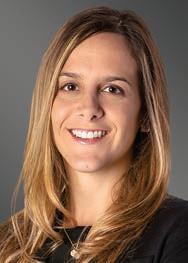
Daniella Silberstein, Shareholder, Miami Office, Corporate Practice
INTRODUCTION When Daniella Silberstein joined Greenberg Traurig in Miami four years ago, she quickly established herself as a leader. She has spearheaded or co-managed complex corporate transactions exceeding $23 billion in value since 2020. Her work spans U.S. and cross-border mergers, acquisitions, divestitures, carve-out transactions, recapitalizations, joint ventures, and spin-offs. In addition to her legal contributions, Silberstein co-chairs the Greenberg Traurig Women’s Initiative locally and dedicates time to organizations empowering women and unhoused individuals.
You have achieved great success as a prolific mergers and acquisitions attorney. What were your early influences, and how do you pay this forward?
I was fortunate to have a strong role model in my mother, who maintained a thriving legal practice while raising five children. I learned skills that I have applied to my own life as an attorney at one of the world’s leading global law firms and as a mom of four young children. I hope that by my own example I can pay the lesson forward that women do not need to make a binary decision between career and family; you can bridge these two worlds successfully.
I regularly put together and lead deal teams on large complex transactions comprising talented attorneys from the firm’s multidisciplinary practices and industries around the country and the world. On quite a few occasions, I have led all women attorney teams. However, it is never about gender; it is about skill sets, relationships, and capabilities when selecting the people who will be the most beneficial.
Greenberg Traurig has an environment in which people are respected for being their authentic selves. The firm is committed to investing in the personal growth of all attorneys and staff through
mentorship, collaboration, and professional development programs. I believe that being treated on an equal footing provides everyone the opportunity to advance their own career according to their drive, the quality of their work, and client satisfaction.
I am honored to be a co-chair of the firm’s Miami Women’s Initiative, which focuses on informal, internal mentorship by providing a forum where women bond, collaborate, and support each other. In addition, locally and firmwide, we have a more formal program which helps women hone their skills to develop business and engage in the community.
Greenberg Traurig’s senior leadership takes an active role in making sure that the firm has a strong female representation across all levels and positions. Women head many offices and practices and are included in the firm’s highest governing body. Here, everyone is given both the respect and runway to determine the path of their own career.
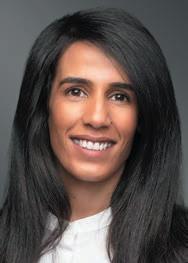
Marwa Al-Siyabi, Shareholder, KSA Office,
Marwa Al-Siyabi advises clients across the Middle East on cross-border mergers and acquisitions, equity capital market transactions, joint ventures, and restructuring. Al-Siyabi’s experience includes working with ministries and government entities in the KSA, Oman, and the UAE, advising on legal matters including the structuring and implementation of government initiatives and the legal implications of strategy reforms. For example, she advised a KSA Ministry in relation to transferring companies owned by government bodies falling under the Ministry to the Public Investments Fund as part of KSA Vision 2030.
GCC countries are experiencing a huge movement of investments in and out of the region. How does this trend affect the relevancy of your work?
It is exciting to be a part of the evolving, beneficial, and growing relationship between businesses in Gulf Cooperation Council (GCC) countries and the rest of the world. I have advised on legal aspects of projects including the representation of government and semi-government entities, and private GCC investors on sales and acquisitions in energy, real estate, franchises, waste, and mining, to name a few. Now, as part of the Greenberg Traurig family of attorneys –already global leaders in many of the practices which are important to our legal work here – the opportunities to help my clients seem limitless.
As a committed and successful leader in high-profile projects, how do you promote the advancement of women in law?
At Greenberg Traurig, I have the advantage of being at one of the world’s largest global law firms that despite its size and geographic diversity across countries and continents, successfully operates as one united family. Since joining last year, I have seen the firm’s incredibly strong emphasis on collaboration in action across practices and locations. Additionally, the firm invests in its attorneys and staff through a robust, formal professional development program and formal and informal mentorship.
I feel fortunate to be a part of this firm and take advantage of the opportunities here to help my clients and advance my legal career. In this spirit, I also feel a responsibility to help the next generation of future leaders.
Greenberg Traurig, through its DEI efforts, works to ensure equity and inclusion for all. Personally, I am committed to initiatives that support women. I served as a member of Young Arab Leaders, nurturing the entrepreneurial and professional development of Arab youth. My pro bono work has included providing legal support to Evolvin’ Women, a social enterprise that focuses on providing opportunities to women from underprivileged backgrounds in Africa. In addition, I was proud to have spoken at the Global Women’s Forum Dubai organized by Dubai Women Establishment.
I am honored to be practicing law during this historic time.•




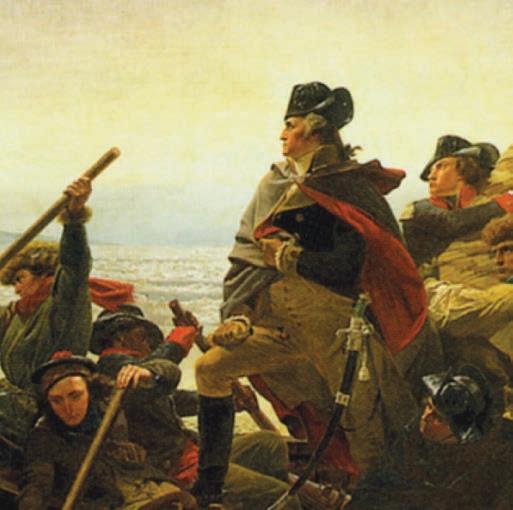











One of our largest projects was a hand-carved and gilded frame for Washington Crossing the Delaware by Emanuel Leutze. This frame is now the focal point of the extraordinary American Wing at The Metropolitan Museum of Art in New York City.
The detail on this 14 x 23 foot frame is spectacular and is surmounted by an elaborate crest twelve feet across displaying a carved eagle, flags, pikes, a banner and other regalia.
Visit our website for the fascinating history of this frame. The world’s finest art collections feature Eli Wilner frames.


EDITORS’ NOTE
Dr. Beth Oliver, DNP, RN, FAAN is responsible for the practice of nursing across Mount Sinai Health System and collaborates with the senior executive team as well as Chief Nursing Officers throughout Mount Sinai. For more than 29 years, Oliver has been a transformational cardiac nurse leader at Mount Sinai, currently also serving as the Senior Vice President of Cardiac Services for the Health System. In this role, she leads cardiovascular service line strategy and operations for the Health System while also ensuring the delivery of quality care to Mount Sinai Heart patients. In addition to her Mount Sinai leadership roles, Oliver directs numerous cardiovascular health-related community outreach programs in partnership with the American Heart Association. In July 2018, Oliver was appointed President of the American Heart Association’s Board of Directors in New York City, becoming the first nurse to hold the position of Board President. She received her MS from Columbia University and her DNP from Case Western Reserve University. Oliver is a Fellow of the American Academy of Nursing.
INSTITUTION BRIEF
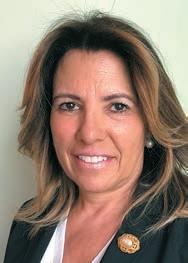
nurses choose to work, and patients want to receive their care. These core values and guiding principles are in alignment with our relationship-centered care nursing professional practice model and is the foundation of our culture, which has helped steer us towards our employee value proposition; “Mount Sinai Nurses: Creating Excellence Together.”
What have been the keys to Mount Sinai Health Systems’ industry leadership and how do you define the Mount Sinai difference? Our leadership in healthcare really comes down to our strong dedication to innovative medical research and the latest technologies. At Mount Sinai, we bring this to life with our multidisciplinary teamwork. By bringing together experts from different fields, we ensure the best patient outcomes and set new
industry standards. This collaborative approach is crucial because it combines our collective expertise, creating an environment where innovation can flourish through teamwork and shared goals.
Building on this teamwork, Mount Sinai Nursing shows our commitment to innovation with our specialized Innovation Units. These units are like testing grounds for new ideas and technologies, helping us refine and validate our approaches before rolling them out across the system. Our current projects include using artificial intelligence to predict potential complications, improving our processes for better efficiency, and trying out different care models through virtual nursing.
Will you provide an overview of your role and areas of focus?
As the Chief Nurse Executive, my role centers around overseeing the nursing strategy and ensuring that it aligns with our broader
Mount Sinai Health System (mountsinai.org) encompasses the Icahn School of Medicine at Mount Sinai, the Mount Sinai Philips School of Nursing and eight hospitals, as well as a large and expanding ambulatory care network. The eight hospitals – Mount Sinai Brooklyn, The Mount Sinai Hospital, Mount Sinai Queens, Mount Sinai St. Luke’s, Mount Sinai South Nassau, Mount Sinai West, New York Eye and Ear Infirmary of Mount Sinai and Mount Sinai Beth Israel – have a vast geographic footprint throughout the New York metropolitan region.
How do you describe Mount Sinai Health System’s culture and values?
Mount Sinai Health System is grounded in core values that include Equity, Safety, Teamwork, Empathy, and Agility. These values are integral to guiding our mission and shaping our vision. Our mission is to promote health and wellness by bridging relationships within our local, national, and global communities through advocacy, education, and scientific nursing research. Our vision is to be the place where


organizational goals. Given the current workforce challenges, I am acutely focused on recruitment and retention. Successfully attracting and maintaining a dedicated nursing staff is crucial for enhancing engagement within our teams. Full engagement among staff is essential, as it directly influences their ability to provide compassionate, safe, and high-quality care, which is our ultimate aim.
Will you highlight Mount Sinai Health System’s national reputation for excellence in nursing services?
Unique among health systems, Mount Sinai includes the Phillips School of Nursing and the Center for Nursing Research and Innovation. These institutions are pivotal in strengthening our national nursing pipeline and advancing evidence-based research. The Phillips School of Nursing cultivates skilled nursing professionals, while the Center for Nursing Research and Innovation (CNRI) focuses on conducting groundbreaking funded studies that enhance clinical practices and patient care. Together, these entities enable Mount Sinai to lead in both educational excellence and clinical innovation, furthering our mission to transform healthcare on a national scale.
How is Mount Sinai Health System supporting and advancing the professional development of its nurses?
At Mount Sinai Health System, we are deeply committed to the professional development of our nurses, recognizing that their growth is fundamental to the advancement of our healthcare services. To support this, we have recently launched a pioneering program called the “‘Nurse Leader Academy.” This initiative is designed to equip nurse leaders
with crucial business skills such as drafting business plans and managing large-scale projects, skills that are essential for today’s healthcare environments.
Furthermore, we are enhancing our staff’s practical skills through cutting-edge simulation learning. Our new simulation center represents a significant investment in hands-on education, providing nurses with a safe, realistic environment to hone their skills, practice complex procedures, and improve their clinical capabilities before interacting with patients. This approach not only boosts their confidence, but also ensures that we maintain the highest standards of patient care.
Will you discuss Mount Sinai’s commitment to build a diverse and inclusive workforce?
Mount Sinai Health System is steadfast in its commitment to cultivating a diverse and inclusive workforce, a pledge that is deeply rooted in our core value of equity. This value compels us to create a diverse and inclusive environment for our patients, students, and colleagues free from bias, racism and favoritism, to foster optimal care and just opportunities based on one’s individual needs and abilities.
In collaboration with Mount Sinai’s Department of Diversity, Equity, and Inclusion, our nursing department has implemented several key strategies to strengthen this commitment. For instance, we have established a committee named “Nurses Against Racism,” which addresses and works to eliminate racial prejudices and challenges that our nurses may encounter. Additionally, we have introduced a high school “Nursing Pathway Program.” This six-week paid internship offers
high school students hands-on experience in an inpatient hospital setting, fostering a multigenerational exchange of ideas and perspectives that enrich our understanding and approach to patient care. It is also noteworthy that well over half of our CNRI funded studies are DEI focused.
Do you feel that there are strong opportunities for women in leadership roles in the industry?
In the healthcare industry, particularly within nursing, which is predominantly female, women are well-represented in nurse leadership roles at the executive level. However, there is still considerable room for growth, especially in the highest ranks of healthcare administration, such as CEO and COO positions.
At Mount Sinai Health System, we acknowledge this gap and are committed to fostering an environment where women have equal opportunities to ascend to these top executive roles. We actively support the advancement of women in our workforce through leadership training, mentorship programs, and by creating pathways that ease the transition to higher executive roles.
Did you know at an early age that you had a passion for nursing and what has made the profession so special for you?
From a young age, I felt a profound calling to help others, which ignited my passion for nursing. My journey in healthcare began in my teenage years when I first started working as a housekeeper in a nursing home. I soon transitioned to a nurse’s aide, learning from licensed practical nurses. It was there that I observed the pivotal role nurses play in patient care. This experience was instrumental in shaping my career path. What truly makes nursing special to me is the significant impact we have on the health and well-being of our patients. Nursing transcends traditional medical treatment; it involves holistic care that considers the physical, emotional, mental, and spiritual health of each individual. The ability to contribute positively to someone’s life in such a comprehensive manner is deeply fulfilling and continually reinforces my commitment to this noble profession.
What advice do you offer to young people interested in pursuing a career in medicine?
As Chief Nurse Executive at Mount Sinai Health System, I would advise young individuals considering a career in medicine to start by volunteering in a hospital setting. This exposure is invaluable as it allows you to immerse yourself in the medical environment and understand the day-to-day responsibilities and challenges faced by healthcare professionals. By volunteering, you gain firsthand experience that can help you determine if a career in medicine aligns with your interests and personal strengths. Additionally, this experience not only enriches your understanding, but also strengthens your future applications to educational programs in the medical field. Engaging directly with the healthcare setting is indeed key to discerning whether this path is the right fit for you.•
EDITORS’ NOTE Jacqui Canney is the Chief People Officer at ServiceNow, leading all talent strategies for the company’s rapidly growing global workforce. She is focused on constantly improving employee experiences by putting people at the center and enabling them through technology. Prior to joining ServiceNow in September 2021, she served as Chief People Officer at WPP and Walmart, driving complex transformations. Canney worked at Accenture for 25 years, where she played a pivotal role in supporting the rapid growth of the business. Canney serves on the Board of Directors for Project Healthy Minds, the Chief HR Officer Board for the Institute for Corporate Productivity (i4cp), and the Board of Trustees at Boston College.
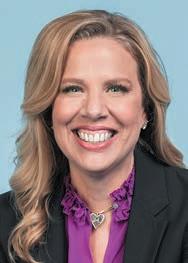
Jacqui Canney
COMPANY BRIEF ServiceNow (servicenow.com) makes the world of work, work better for people. The company’s cloud-based platform and solutions help digitize and unify organizations so that they can find smarter, faster, better ways to make work flow so employees and customers can be more connected, more innovative, and more agile, and we can all create the future we imagine.
How do you describe ServiceNow’s culture?
At ServiceNow, we love to solve the toughest problems for our customers. We share a relentless curiosity and desire to make the world work better for everyone. It’s a culture of continuous learning. It’s a culture that thrives on diverse perspectives and it’s why ServiceNow continues to innovate at the highest levels.
At our core is our People Pact: our commitment to every employee that we’ll help them
do their best work, live their best life, and fulfill our purpose together. We are creating a culture that people want to be part of and it’s why we saw one million people apply to work at ServiceNow last year.
Our values keep our culture healthy and thriving. If you’re part of the ServiceNow team, you add something unique and different that makes us stronger. You share our sense of purpose in our communities. You create belonging. You dream big, wow the customer, and believe in winning as a team. Throughout it all, you stay hungry and humble. Our company is growing so fast, but we always have something to learn. And our best work will always be what we do next.
What have been the keys to ServiceNow’s industry leadership and how do you define the ServiceNow difference?
It’s a simple principle: our people strategy is our business strategy. We’re building a talent system at scale and using our own platform, which gives our people what they need while also benefiting our customers.
Our culture is our biggest competitive advantage. We put our people at the heart of everything we do, and we empower them to grow themselves, their teams, and the business. We know that diversity, equity, and inclusion drive innovation. We’re constantly improving the employee experience. We’re providing every employee with opportunities for career advancement, mobility, and upskilling. And all of this helps us build the best teams and fuel our growth as a company.
We’re an AI-first company because we know AI is reshaping business, work, and life as we know it and we want to make AI work for
people. That’s why, at ServiceNow, HR plays a critical role in responsible AI implementation, because AI is a human challenge as much as it is a technology challenge. We believe AI should set people up for success, make their jobs easier, and enable learning and growth.
We have a clear purpose and vision for everyone to stand behind; a CEO who inspires us; a supportive board of directors; a winning talent strategy; a great management team; and exceptional, differentiated products. We stay ahead because our employees are comfortable taking risks to propel transformation. They test our solutions before our customers try them. By bringing our talent strategy together with our technology, we can see around the corners and prioritize the right things. This is why ServiceNow is becoming the defining enterprise software company of the 21st century.
What excited you about the opportunity to join ServiceNow and made you feel it was the right fit?
It all started with this question from Bill McDermott: “Do you want to make the world work better?” When your company’s purpose instantly becomes your personal mantra, that’s when you know it’s the right fit.
Making the world work better is a powerful proposition. You can only imagine the innovation and culture that enables you to deliver on that promise. It was clear to me that this was a once-in-a-generation opportunity. No other company is better positioned to shape the way we work for years to come, and I say this as someone who was a ServiceNow customer before I joined. I saw firsthand how our technology simplifies work, drives business transformation, and creates better experiences throughout an organization, from the C-suite to frontline workers.
“At our core is our People Pact: our commitment to every employee that we’ll help them do their best work, live their best life, and fulfill our purpose together.”
“It’s a simple principle: our people strategy is our business strategy. We’re building a talent system at scale and using our own platform, which gives our people what they need while also benefiting our customers.”
Here is what I found most exciting: ServiceNow is growing like a fast-moving startup with the profitability of a global market leader. That’s a remarkable strength. It also makes the role of a chief people officer incredibly fascinating.
I have never had a role quite like this because there is no company quite like ServiceNow. Fast forward, we’ve added 13,000 new employees, more than doubling our workforce, since 2019. I feel so fortunate to be part of this evolution. We keep growing and building – and I’m learning and having a lot of fun along the way.
Will you provide an overview of your role and areas of focus?
As Chief People Officer, my role is to scale and grow our global workforce of over 23,000 employees so we can make work better for our people, our customers and their teams. And our team is empowered by the same platform, tech, and solutions we offer our customers.
The role of the CPO and HR leadership is more important than ever and has changed radically in recent years, especially with AI/GenAI. CEOs are expecting more of us as we align our people strategy to our business strategy to drive long-term profitable growth. My team is focused on constantly improving employee experiences by putting people at the center and enabling them through technology.
For ServiceNow, we are driving our people strategy based on three pillars: people-led, datadriven, and AI-powered. With this foundation in place, we can scale and innovate, create an inclusive employee experience, build leaders for the future, and prepare our teams, partners, customers, and communities with the skills they need to thrive in this ever-changing digital workplace.
Working alongside a remarkable group of leaders and business partners, I strive to create
a people-centric agenda that is as unique as the people we serve and as ambitious as our company’s vision.
How critical is it for the Chief People Officer role to be engaged in business strategy?
It’s paramount to the success of any business. To win as a business, leaders know they must commit to the development, growth, and well-being of their people.
There are three things that all of the world’s most successful companies do. They embrace human ingenuity and digital transformation. They create remarkable experiences for their people and customers. And they help their teams grow to their fullest potential. None of these things would be possible without a CPO at the table, actively driving business strategy. I’ve seen it time and time again throughout my career.
Employee satisfaction directly drives customer satisfaction and business performance. You might have great products, but without putting your people at the center, you will not be successful. A CPO is critical when it comes to setting the strategic compass and ensuring you have the right foundation in place for your business to thrive.
Will you discuss ServiceNow’s commitment to building a diverse and inclusive workforce?
DEI is a moral imperative and it’s embedded in everything we do at ServiceNow. We are doubling down. Nearly 50 percent of our new hires for leadership roles in the U.S. were women in 2023. We launched a leadership development program for early-in-career and mid-level employees of underrepresented groups, resulting in lower attrition and higher promotion rates compared to the broader employee base. These are just two of many examples.
We need a diverse workforce because we firmly believe that’s how innovation thrives. That means fostering a sense of belonging and creating a space for dialogue through our values, behaviors, and ongoing programs. We’re making it our business to create a better, more inclusive experience for everyone and to contribute to a world that is more caring, fair, and just.
Do you feel that there are strong opportunities for women to grow and lead in the industry?
There is certainly more work to do, but I’m also encouraged to see how far the tech industry has come. At ServiceNow, we are proud to be at the forefront, setting new benchmarks not just in tech, but for businesses across industries, across the globe.
We are the only company to be recognized in the latest American Opportunity Index with top scores across four crucial categories: parity, pay, promotion, and culture. The Index assesses how the largest companies in America are developing their people to foster career growth and drive business performance. We’re also honored to be recognized consistently among Fortune’s Best Workplaces for Women. That matters because enterprise and culture change always start at the top. It is inspiring to be surrounded by incredible women and to be part of a culture that values and celebrates everyone.
What advice do you offer to young people beginning their careers?
Be authentic to yourself – always. The courage to challenge assumptions is the key that will unlock your greatest potential. When you’re curious and willing to learn, the future is limitless. But remember that you don’t get anything you don’t ask for. So, raise your hand, speak up, and make yourself seen and heard.•
“Employee satisfaction directly drives customer satisfaction and business performance. You might have great products, but without putting your people at the center, you will not be successful.”
EDITORS’ NOTE Neera Shetty currently serves as Chief Legal officer and Executive Vice President, Social Responsibility, for the PGA TOUR and its affiliates and subsidiaries including PGA TOUR Enterprises. She has been with the PGA TOUR since January 2008. As Chief Legal Officer, she is responsible for overseeing and advising on all legal matters for the PGA TOUR and its properties throughout the world. As the leader of the Office of Social Responsibility, she oversees the PGA TOUR’s efforts with respect to diversity, equity and inclusion as well as its efforts with respect to environmental sustainability. She is also the chair of the PGA TOUR’s Inclusion Leadership Council. Prior to joining the PGA TOUR, Shetty was a partner in the labor and employment department of McGuireWoods LLP in its Jacksonville, Florida office. She has also served as in-house lawyer and human resources vice president for employee relations with Sabre Holdings, a world leader in technology solutions for the travel industry. Shetty received her BA degree from Duke University and her JD from the University of Texas School of Law. She is a member of the Florida and Texas bars.
ORGANIZATION BRIEF
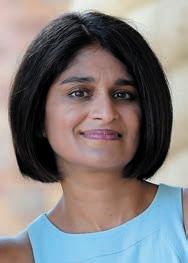
where I wanted to be. Though I had joined a law firm and become partner, I was drawn to the PGA TOUR’s efforts to have a positive impact in communities where it played. After being given an opportunity to join the TOUR, I was so impressed by their efforts to establish an inclusive culture where employees felt both heard and empowered to grow, and I feel that energy every day I enter our Global Home headquarters now. Everyone loves a good acronym, and here at the TOUR we use “DRIVEN” to showcase our core values – Diverse, Respectful, Innovative, Vigilant, Energetic, and NeverCompromising. Those principles are reflected throughout our organization, where employees are uplifted and encouraged to be authentically true to themselves. It’s easy for companies to thrive when everyone pulls in the same direction, and that’s certainly the case here at the PGA TOUR, where we’re all invested in seeing our teammates flourish.
Will you provide an overview of your role and areas of focus?
In April, I assumed the role of Chief Legal Officer from Len Brown, who after nearly two decades has been promoted into the role of Chief, Global Business Ventures. While I take great pride in heading up our global legal function, I’m equally as honored to also lead the PGA TOUR’s commitment to diversity, equity and inclusion and environmental sustainability as Executive Vice President of Social Responsibility. I tell people I am truly humbled to have a position that feeds both my brain as well as my heart.
How important is it for the legal function to be engaged in business strategy?
The PGA TOUR’s legal arm is playing a critical role this year following the launch of PGA TOUR Enterprises, a new for-profit entity that houses our commercial assets while establishing a new player equity program – a first in professional sports. Of course, with such significant structural change comes additional challenges from a legal perspective. It’s an honor for our first-class legal team to play a small part in shaping the direction of our organization and the game of men’s professional golf.
The PGA TOUR (pgatour.com), headquartered in Ponte Vedra Beach, Florida, co-sanctions tournaments on the PGA TOUR, PGA TOUR Champions, Korn Ferry Tour, PGA TOUR Americas and administers PGA TOUR Q-School presented by Korn Ferry and PGA TOUR University. TOUR members represent the world’s best players, hailing from 28 countries and territories. Showcasing the biggest moments in the sport with history and legacy on the line, the PGA TOUR has long-term domestic distribution partnerships for broadcast coverage on CBS, NBC, and Golf Channel and video streaming service on ESPN+. Internationally, PGA TOUR coverage is available across 200+ countries and territories in 28 languages via 44 broadcast and digital partners. Virtually all tournaments are organized as nonprofit organizations to maximize charitable giving, and to date, tournaments across all tours have generated more than $3.93 billion.
How do you define the PGA TOUR’s culture and values?
From the day my husband and I first arrived in Jacksonville, I knew that the PGA TOUR was
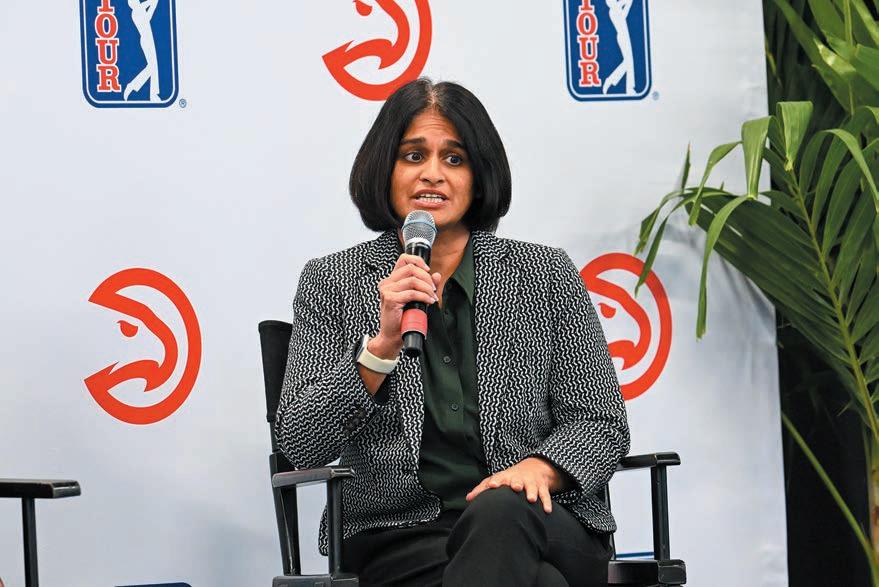
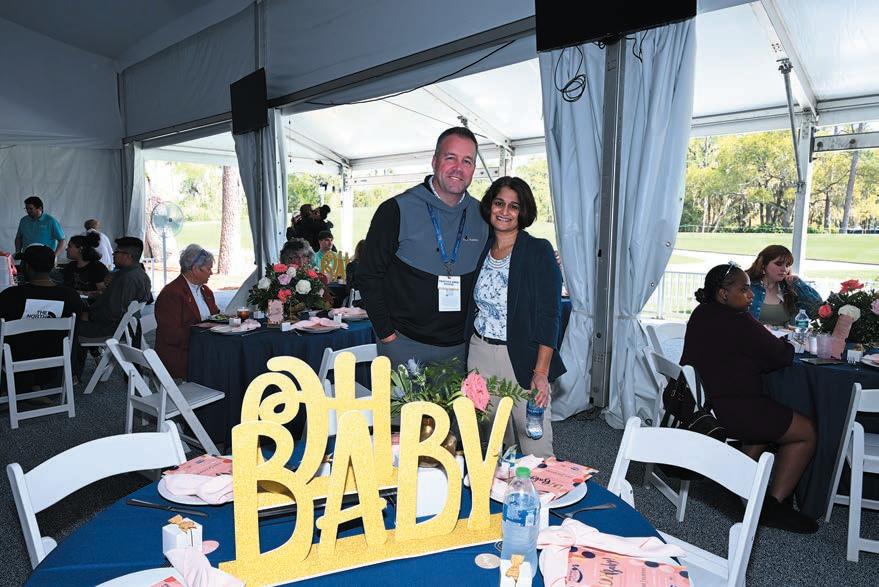
Will you discuss the PGA TOUR’s commitment to build a diverse and inclusive workforce to mirror the diversity of its players and the communities it serves?
Change doesn’t happen overnight, but it’s been inspiring to see the evolution of our workforce throughout my tenure, led by our talent and culture team. I believe the cause of this is two-fold: for one, our sport has never been more popular, with the National Golf Foundation estimating some 45 million Americans played golf in 2023. We’ve been able to build upon that growth at the TOUR through our Inclusion Leadership Council, which since 2019 has identified and executed the TOUR’s key inclusion initiatives. The ILC – which I chair – is comprised of some of our brightest and most passionate senior leaders across the PGA TOUR, and our focus is on improving not only our business, but our sport as a whole and the impact it makes worldwide. We’re also proud of our participation in Make Golf Your Thing, an industry-wide initiative led by the PGA TOUR, PGA of America, LPGA, and USGA that ensures individuals from all backgrounds know the opportunities in golf from a career, business, and participation standpoint. There’s much work left to do, but the PGA TOUR has made tremendous progress in weaving diversity, equity, and inclusion into the fabric of our business.
Will you highlight the PGA TOUR’s efforts with respect to environmental sustainability?
The PGA TOUR is committed to playing its part when it comes to environmental sustainability, implementing credible initiatives that reduce negative environmental impacts while driving positive change in the communities where we work and play under the leadership of our Director of Sustainability, Brazos Barber. Whether at our tournament venues, TPC Network
golf courses or offices across the globe, we are leading a collaborative effort to reduce emissions, conserve water and divert waste from landfill. With guidance from partners and experts, the TOUR is also identifying areas of improvement, innovating new processes, and implementing creative programs that achieve measurable results. We are committed to leading, partnering, and inspiring to take climate action and promote nature, doing so through four strategic pillars: Leaderships and Influence, Climate Action, Purpose-Drive Partnerships, and Promotion of Nature.
You have spent over 15 years with the PGA TOUR. What has made the experience so special for you?
It’s really the same thing that separates every great job from all the rest of them – the people that you share it with. I’m truly fortunate to work alongside bright, energetic colleagues that make every day fun and different from the one before it. Rarely are two days ever the same. It’s particularly rewarding to do it all for an organization that’s committed to leaving our world better than we found it, both here at our home in Northeast Florida and across the globe in the communities where we play. Everyone here takes personal pride in the fact that the TOUR will soon approach $4 billion in all-time charitable giving, and it’s all those stories of generosity and goodwill over the years that help get us out of bed every morning.
What advice do you offer to young people beginning their careers?
Had you asked me 20 years ago what my career path would look like, working in the legal department for a major sports league would probably not have been my answer. No one in my family practiced law in the United States before I walked through the law school doors at the University of Texas, but I didn’t let unfamiliarity stop me from what I set out to achieve. There is so much pressure these days to have a master plan all figured out and to hit each step in the process at the exact right moment, but we miss out on so many unique opportunities in life when we’re laser-focused on only one or two things. I believed in myself enough to try my hand at all sorts of new things, and never allowed an avenue to close because it wasn’t part of the pre-described “plan.” My advice would be to always venture behind Door #2 –you never know what adventure awaits on the other end.•

COMPANY BRIEF Windstar Cruises (windstarcruises.com) operates a fleet of six boutique all-suite and sailing yachts carrying 148-342 guests. Small ship cruises sail throughout Europe, the Caribbean, Costa Rica and the Panama Canal, Asia, New England and Eastern Canada, the Middle East, and the South Pacific, including a ship year-round in Tahiti. Windstar launched the $250 Million Star Plus Initiative to transform the three all-suite Star Plus Class yachts with new suites, restaurants, and a world-class spa and fitness center. The award-winning line is known for immersive experiences, destination authenticity, port-intensive itineraries, exceptional service, and an innovative culinary program.

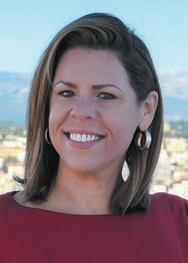
EDITORS’ NOTE Cuban born and Miami raised, Janet Bava found her love for travel at a young age. She had her first taste of cruising at the age of 15 when she celebrated her quinceañera onboard a Royal Caribbean cruise ship and never looked back. She describes herself as a cruise lifer and internationally travel driven – she even met her husband while traveling through Italy during her college years. Prior to joining Windstar Cruises during the summer of 2023, Bava was most recently the Chief Marketing Officer for AmaWaterways River Cruises and she has spent upwards of 20 years working in the travel industry. Most notably, prior to AmaWaterways, Bava was the VP of Marketing (The Americas) for Silversea Cruises where she fell in love with small-ship luxury cruising. Bava graduated from Florida International University with a marketing and international business degree.
Will you provide an overview of your role and areas of focus?
As Chief Commercial Officer, I’m responsible for driving strategic growth initiatives. It’s a multifaceted responsibility that encompasses a
range of vital revenue generating functions within our organization leading marketing, sales, reservations, revenue management and deployment teams to achieve our overarching objective: to elevate our company’s position in the global cruise market.
How do you describe the Windstar experience?
At Windstar, we like to say that we are 180 degrees from ordinary. You can take all our guests and crew off one ship, and they would not even fill one lifeboat on a modern mega ship. Windstar is a cruise line where likeminded cultured, social, and worldly people come together with attentive and friendly staff. Our cruises are unregimented and relaxed, but they are also port-intensive, as our guests love to explore the world around them.
Windstar’s small but nimble yachts can access places and waterways large ships simply cannot. Even in big cities like London, Windstar sails up the Thames and berths at Tower Bridge; we get to dock in Dubrovnik and Venice when big ships are turned away, and we can access ports other ships could never dream of, like Gustavia on gorgeous St. Barts.
What do you feel are the keys to Windstar’s industry leadership and how do you define the Windstar difference?
Many of our top executives at Windstar worked their way up through the ranks, beginning their careers at sea, from Windstar’s president, who started out as a waiter on a small cruise ship (now Windstar’s Star Legend), to other top Windstar executives who also worked as servers, entertainment leaders, and even captains on ships. That experience is rare in today’s corporate world and brings with it knowledge and know-how, plus a deep appreciation for service and attention. This very much has shaped Windstar’s leadership style. It’s a team that is humble, extremely guest-centric, and focused on service anticipation, and it results in an onboard experience that is unmatched for deeply personalized service without pretension.
Where do you see the greatest opportunities for growth for Windstar Cruises?
We just completed our most successful Wave Season ever and have announced the expansion of the company with two new small ships joining our fleet – one in 2025 and another in 2026. These new ships allow Windstar not only to grow, but also to go back to favorite destinations that we’ve been to before, and to add new destinations. But while we are expanding and will have more capacity for guests across the fleet, we’re still keeping our ships small to maintain our signature Windstar style of cruising – growth for sure, but keeping our culture intact.
“Windstar is a cruise line where likeminded cultured, social, and worldly people come together with attentive and friendly staff.” - Janet Bava

EDITORS’ NOTE Patricia Gonzalez is a senior marketing leader and passionate advocate for the transformative power of travel. With more than 15 years of experience in the travel and marketing industries, she’s currently leading the charge as Vice President of Marketing for Windstar Cruises. Before joining Windstar, Gonzalez held the position of Head of Marketing for Azamara Cruises, and she has also held key marketing roles with Royal Caribbean Group, Celebrity Cruises, and Unique Vacations Inc. (Sandals Resorts). Gonzalez earned a BS degree in advertising with a minor in business administration from the University of Florida and an MBA from Florida International University – College of Business.
Will you provide an overview of your role and areas of focus?
As the Head of Marketing at Windstar Cruises, I lead an incredible team focused on sharing our unique story. We highlight what sets us apart, like our intimate yacht-style ships, personalized service, and carefully curated itineraries. My focus areas include brand positioning, storytelling, digital and traditional marketing strategies, and travel advisor and customer initiatives, all aimed at conveying the message that Windstar Cruises offers a 180-degree departure from ordinary travel experiences.

How do you describe Windstar’s culture and values?
At Windstar, we believe in being welcoming, innovative, and present in the moment. Our culture is all about making guests feel like part of our family and taking responsibility for our impact on the environment and the communities we visit. We aim to create unforgettable moments that ignite a passion for travel.
How important is it for Windstar Cruises to build a diverse and inclusive workforce?
We understand that having a diverse team helps us better serve our diverse guests. That’s why we’re committed to building a team that reflects the world around us. By embracing different perspectives, we can provide even better experiences for everyone who sails with us.
How do you define the power of travel and its ability to change lives?
Travel isn’t just about seeing new places; it’s about inspiring personal growth. At Windstar, we believe travel has the power to change lives by connecting people, cultures, and ideas. Whether it’s experiencing breathtaking natural wonders, exploring historical landmarks, or simply enjoying moments of tranquility at sea, travel has the power to transform lives by opening hearts and minds to new possibilities. We are proud to facilitate these life-changing experiences for our guests, creating memories that last a lifetime.

EDITORS’ NOTE Dianna Rom is a seasoned travel industry executive with more than 25 years of experience. As Vice President of Sales, she is responsible for Windstar Cruises’ overall global sales efforts, developing sales strategies, and leading teams that support travel advisor communities worldwide, with a focus on North America, Europe, the United Kingdom, Australia, the Middle East, and Latin America. Rom’s journey in the travel and tourism industry began early, and she has built her entire career working in hospitality, including roles at renowned brands such as Omni Hotels, Hilton Brand Hotels, Holiday Inns, and boutique branded hotels. Joining Xanterra in 2000 as the Director of Sales and Marketing for eight resorts, she transitioned to Windstar Cruises in 2014, continuing her career with the Xanterra Travel Collection.
Will you provide an overview of your role and areas of focus?
In my role, I oversee the Sales Division for Windstar Cruises and am responsible for driving revenue growth through strategic partnerships and initiatives. My area of focus includes developing sales strategies and relationships with our charter and trade partners, implementing sales programs, and identifying opportunities for growth.
Will you highlight Windstar Cruises’ commitment to excellence and customer satisfaction?
Our commitment to excellence and customer satisfaction is simple –personalized service and unforgettable experiences. Our staff strives to exceed expectations at every touch point on land and at sea ensuring a memorable and enjoyable cruise experience.
Do you feel that there are strong opportunities for women to grow and lead in the industry?
Yes, absolutely. I believe there are opportunities for women to grow and lead in the industry. Windstar Cruises has strong female leadership team members in addition to many other positions within our company, including Captaining our ships. Windstar Cruises sponsors ASTA’S Icon Award honoring female leaders in travel. This award will inspire and empower other women in the travel industry.

Did you know at an early age that you had a passion to pursue a career in the hospitality industry?
I have been in hospitality my entire adult working career. Although my dream was to become a traveling nurse, fashion designer, lawyer, and who knows what else, I ultimately did none of those things once I started working at a hotel as my first adult job and fell in love with the hospitality industry. I could not imagine my life without the excitement of this industry. The opportunity for career advancement, the satisfaction of making people’s travel experiences unforgettable, and the chance to travel and see the world have made this career decision an unbelievable journey. I have had opportunities I could not even have dreamed about.

EDITORS’ NOTE
Jaymi Fiveash has been a part of the Windstar team for over a decade, first coming aboard in 2013. Initially joining the team as a Voyage Service Agent who excelled at connecting guests with their dream vacations, she soon realized she had a passion for leading through mentorship. Now serving as Senior Director of Vacation Planning, her favorite aspect of her profession is her team –she enjoys helping her team members grow professionally and watching them excel to their highest capabilities. In addition to her time experiencing Windstar behind the scenes, Fiveash has also spent plenty of time enjoying the cruise line as a guest. In fact, she got engaged on the back of Wind Spirit, and if you ask her what her favorite place in the world is, she’d tell you it’s the deck of a Windstar ship.
Will you provide an overview of your role and areas of focus?
As Senior Director of Vacation Planning, I am responsible for and oversee the Vacation Planning Sales and Services Teams and the Guest Services Operations Team. The Reservation Vacation Planning Team consists of an Inbound team (both Trade and Direct), Outbound Direct Sales, Groups Trade and Direct Sales, and Onboard Future Cruise Sales. Our department also houses the Passenger Air team, Guest pre-cruise Operations team, and the department’s personal Training team.

Will you highlight the strength of the Windstar team?
One of the biggest strengths we have among our senior leaders is the fact that they have worked onboard and spent the beginning of their careers interacting directly with the guests and other crew members. This brings balance to the overall company values and decisionmaking guiding principles.
Vacation planning specifically finds strength in the fact that our team spans a huge variety of people, positions, experiences, and walks of life. We have entry level positions that allow new to the industry individuals an opportunity to find a new home in a new workforce, and expert level positions requiring industry proven expertise and managerial skill sets. We are a tenacious and eager group that is passionate about travel and providing the best customer experience.
You have been with Windstar Cruises for more than ten years. What has made the experience so special for you?
This truly is a family. A lot of companies can say they are a family, but I don’t know if everyone else truly embodies that. We are open, collaborative, encouraging, and truly want to see people succeed whether that be long term with Windstar or somewhere else. I feel that we are a human first employee brand and I have always felt supported to grow and encouraged to be myself along the journey. One would be remiss not to acknowledge the amazing travel opportunities I have had, from Tahiti to Greece, from Sail Ships to Power Ships, I have traveled the world and look forward to the continued destinations we explore and take our ships to.
What advice do you offer to young people interested in pursuing a career in the cruise industry?
Work hard, and then work harder. Work ethics will outshine degrees and titles every single time. Find your personal work ethic. Also, you must be flexible and adaptable to succeed in the ever-changing world of international travel. You must find comfort in discomfort, as the impacts of social climates, economic challenges, and extreme weather changes are out of your control but will impact you drastically. Learn to thrive in chaos, not survive chaos.

EDITORS’ NOTE Cris De Souza’s career in the travel industry started with Royal Caribbean Group in Revenue Management, piloting and pioneering the cruise line’s revenue performance and business intelligence modeling initiatives in addition to leading yield management teams to maximize revenue. Her career grew into sales and marketing leadership roles with Celebrity Cruises and transitioned to the travel agency distribution channel as Vice President of Marketing and Sales with Travel Leaders Group. In 2021, during the “great pause,” she was retained by the boutique influencer agency Advance Your Reach as Head of Business Development, developing the agency’s strategic consulting division offering digital event marketing and management services retaining clients including Michael Phelps, Tony Robbins, Bethany Hamilton, and Dwayne Johnson. In 2021, De Souza returned to the travel industry and joined Windstar Cruises as the Director of Revenue Performance, leading the cruise line’s inventory, pricing, business intelligence and strategy team. De Souza holds a bachelor of business administration in marketing management and an MBA in international business from Florida Atlantic University, and a MA degree in sustainability and environmental management from Harvard University.
What excited you about the opportunity to join Windstar Cruises and made you feel it was the right fit?
I had the pleasure of rejoining the travel industry with Windstar Cruises after a 2-year hiatus during the pandemic. Windstar, and our parent company, Xanterra Travel Collection, were on my shortlist of travel organizations I was targeting for re-entry into the travel industry.
One of the unique things about our ownership is a strong focus on preservation, sustainability, and revitalizing iconic cruise ships and hotels versus tearing down and building new from scratch. This combined philosophy and approach carries into the fabric of the culture of Windstar, where under the leadership of our President, Christopher Prelog, the company honors and builds on the time-honored traditions of the past with our crew and staff and ships, combining the new with innovative products and services built on a fresh leadership approach with our 180 degrees from ordinary way of being.
Will you provide an overview of your role and areas of focus?
As Director of Revenue Planning, my team’s role is twofold: to maximize revenue for the company through a blend of pricing and inventory management decisions across our fleet of six ships and acting as catalysts for the sales enablement process with our trade and direct sales organizations. We pride ourselves in Windstar revenue planning to always find “a path to yes” wherever possible. Our sales and guest services teams along with our valued guests are our customers, and our role is to reduce friction, increase sales, and keep the guest experience front and center with every decision we make.
How important is it for the revenue management function to be engaged in business strategy?
Our team analyzes various data sources and trends daily and weekly to make informed decisions rooted in data science. External factors also play a critical role in our business and go-to-market strategy, including volcanic eruptions, geo-political conflicts, and economic trends. It is our collective responsibility to be plugged into travel and cruise industry trends and the competitive landscape. It’s critical for us to be both inwardly focused on data trends and on what’s needed to support and enable our teams, as well as stay keenly focused on the outer industry and global environment.
What are your priorities for Windstar’s business as you look to the future?
Our team’s priority for Windstar is to build on our team’s collective success and evolve into the best revenue performance organization in the cruise industry. Continuing to push the envelope beyond the ordinary, solving complex problems to drive future business and relationships, resulting in the financial outcomes our ownership has tasked us collectively to deliver on. Maximizing revenue, over-delivering on the guest experience, and embracing change and the exciting times ahead that we will create together here at Windstar.•




Paul, Weiss has been home to pioneering women lawyer leaders for over 75 years. In 1946, Paul, Weiss became the first major New York-based law firm to have a woman partner. Today, we continue to invest deeply in promoting and supporting women in all aspects of their careers, holding fast to our unwavering commitment to diversity, equity and inclusion. Through devoted mentorship, our women partners continue to shape future generations of women leaders.

























EDITORS’ NOTE Nancy BatistaRodriguez has served Baptist Health in various roles since 2002, and has held numerous progressive leadership roles in Baptist Health diagnostic imaging, sleep centers, endoscopy and surgery sites. Batista-Rodriguez leads the strategic growth initiative for Baptist Outpatient Services, working collaboratively with Baptist Health’s hospitals and Centers of Excellence to provide integrated care services to the South Florida community. She held positions in a physician group practice and local hospital prior to joining Baptist Health. She serves as the executive lead for the Emergency Department Operations Council and the executive chair of the Hispanic Business Resource Group (BRG) for Baptist Health. BatistaRodriguez earned a bachelor’s degree in business administration and a master’s degree in Health Services Administration from Florida International University.
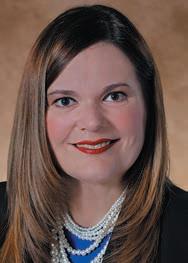
fundamental in all aspects of our work. As a nonprofit healthcare system, we prioritize giving back to the community and providing quality care to those in need. We establish relationships with our communities long before they need our services by emphasizing preventative care and wellness.
We strive for excellence at the highest level and always focus on quality and performance, challenging ourselves to improve. We continuously innovate and find new ways to bring care closer to home. This dedication to excellence is a core value that I share with our employees and the organization.
And lastly, we are a highly ethical organization that always does what’s right. We proactively address areas of opportunity and work to continuously improve. This commitment to transparency and ethical behavior fosters a strong sense of trust and community between the organization, our employees, providers, and our patients.
come to expect. We analyze different markets to understand current services and explore new opportunities within our regions. We are continuously assessing current healthcare trends and the evolution of outpatient care to keep Baptist Health at the forefront of healthcare delivery.
As a provider, Baptist Health created and redefined the urgent care category in South Florida, expanding a network of convenient locations to fill a gap in primary care availability. Today, we are expanding the off-campus emergency model, providing patients with access to emergency care in a convenient setting. If and when patients need to be admitted, they are transferred from our facilities to an inpatient bed at one of our Baptist Health hospitals.
Will you highlight how Baptist Health’s Outpatient Services is bringing care closer to home?
ORGANIZATION BRIEF Baptist Outpatient Services (baptisthealth.net) is an innovative and rapidly growing entity within Baptist Health South Florida that aims to bring care closer to home. Conveniently located throughout South Florida, Baptist Health’s outpatient facilities provide cutting-edge diagnostic, surgical, endoscopy, and sleep services, as well as urgent care and emergency care in Miami-Dade, Broward, and Palm Beach counties. The organization’s array of same-day care services includes Express Care and Urgent Care and immediate online doctor visits with Baptist Health Urgent Care Online. Baptist Outpatient Services also includes Baptist Health Hospital / Doral, a 15-bed facility in the heart of Doral.
How do you describe Baptist Health’s culture and values?
At Baptist Health, we truly understand the importance of putting people first. From our providers to our employees, we are dedicated to providing an intimate service that focuses on caring for people. We recognize that it is not our buildings, equipment or technology that our patients remember; it’s the service and the people who cared for them during a difficult moment.
Our values of people, belief, compassion, excellence, and integrity and transparency are
Overall, Baptist Health’s values align with our stakeholders and my own; they foster a strong sense of community and purpose. It is not just a workplace; it is a place where people come together to positively impact the lives of those in need. Over the past 22 years, I’ve seen the organization evolve and find that we remain anchored by our mission and values, which makes Baptist Health so special.
Will you provide an overview of your role and areas of focus?
Baptist Outpatient Services oversees Baptist Health’s outpatient operations in three counties – Miami-Dade, Broward, and Palm Beach County. These services are provided outside of the traditional hospital setting and include diagnostic imaging, urgent and emergency care, ambulatory surgery and endoscopy, virtual urgent care, and diagnostic sleep services. We also have oversight of a 15-inpatient bed community hospital in Doral.
We are charged with the organization’s continued growth from an outpatient perspective, identifying service gaps in our markets where Baptist Health can make a difference and provide convenience to our patients by bringing services closer to home. We ensure that our existing operations exceed performance standards and continue to provide the high-quality care that our communities have
Baptist Health has always been forwardlooking in delivering outpatient care. Early on, the executive leadership team believed in the potential of the outpatient service line. Recognizing the continued shift of care to the outpatient setting, a strategic decision was made to assign a separate CEO and board of directors to oversee the business’ unique challenges and opportunities. This strategy has paved the way for the outpatient division to thrive, and over the past three decades, it has emerged as a market leader in the region.
Our outpatient services play a unique role in our health system. We often serve as the front door to Baptist Health, creating the first impression and an affinity to our brand. Patients are more likely to schedule a diagnostic imaging appointment or walk into an urgent care center than be admitted to a hospital. As such, our role in providing care closer to home and delivering an array of services is critical to our presence in the community.
The outpatient division has been designed to match every patient’s needs, offering various services ranging from the least acute to the most convenient through our virtual, express, and urgent care models. Differing from other community urgent care centers, our facilities have robust offerings including CT scan capabilities, full lab services, medication dispensing, and referrals to our institutes. The expansion of off-campus emergency departments has succeeded in providing patients with a fully equipped emergency department whose goal is to treat our patients and discharge them home
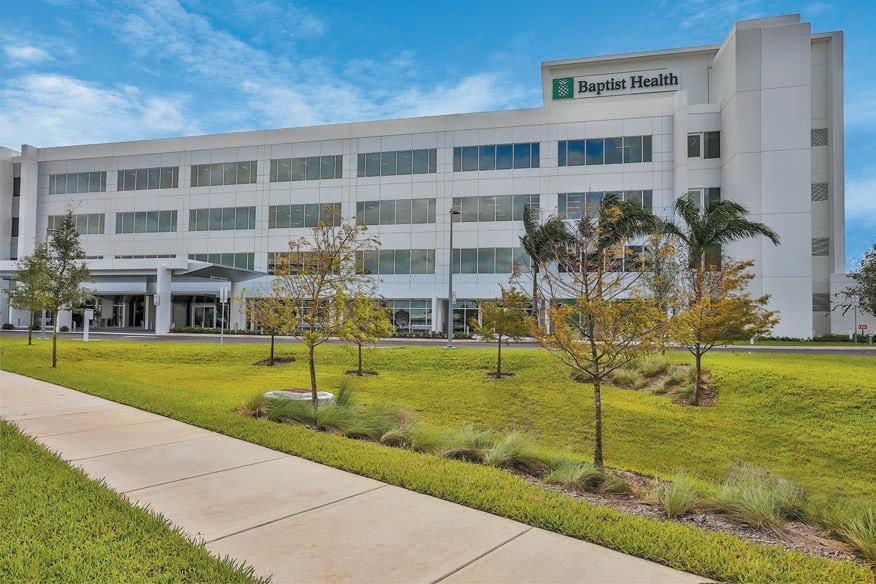
in 160 minutes or less from registration through discharge. The goal is to continue innovating, growing, and changing to ensure patients are delighted with their care, making Baptist Health the healthcare provider of choice.
Where do you see continued opportunities for growth for Baptist Health’s Outpatient Services?
We continue to see a trend of medical procedures shifting to the outpatient setting. We recently opened a free-standing cardiac ambulatory surgery center (ASC) fully dedicated to cardiac care. The evolution of technology has allowed us to safely perform diagnostic cardiac catheterizations and electrophysiology procedures in an outpatient setting, providing convenient, cost-effective, and high-quality care.
Additionally, the integrated care center model offers a complete range of services under one roof, including emergency or urgent care, diagnostic imaging, physical therapy, primary care, and specialists under one roof. Once a patient enters the Baptist Health network, we ensure all their follow-up care needs are met.
Outpatient infusion is another area that is evolving rapidly. We can now treat complex diseases at our outpatient infusion centers and provide at home infusion therapy, which is more convenient and accessible for patients. Technology remains a key driver. We have successfully introduced Baptist Health’s specialty institutes – brain and spine, cancer, orthopedic, and cardiac and vascular care – to new markets such as Plantation. Our goal is to make state-ofthe-art technology and renowned experts accessible to our patients so they can benefit from the best possible care without having to travel far.
How critical is it for Baptist Health to build a diverse and inclusive workforce?
An organization should reflect the diversity of the community it serves. At Baptist Health,
we understand the importance of adapting to better serve our patients, employees, and the community. Our Diversity, Equity and Inclusion department oversees structured business resource groups (BRGs) that focus on culture, career, company and community. They’ve been an integral part of our organizational strategy to foster inclusivity and raise awareness about the unique needs of our population.
As an executive sponsor for the Hispanic BRG, I am passionate about creating career connections and mentorship opportunities for our employees. As a Hispanic woman in leadership, I value the opportunity to connect and inspire those around me and show them it’s possible to make a difference and achieve personal career goals. As a group, we are focused on educating our employees and bringing awareness about our unique culture, creating professional development opportunities, giving back to the community, and partnering with local Hispanic organizations whose mission and values align with those of Baptist Health.
We believe that educating our workforce is instrumental in providing personalized, compassionate care. For instance, we know the Doral community is predominantly Hispanic. We have adopted different processes to better serve our patients and their families in this market. As an organization, we strive to proactively identify these values and adapt our care model to provide better care and services.
What do you see as Baptist Health’s responsibility to be engaged in the communities it serves?
It goes back to our nonprofit mission to give back. We conduct community needs assessments to evaluate health priorities in the areas we serve, committing resources to help reduce disparities and advance the health and
wellness of our communities. Our responsibility is to not only take care of people when they’re sick, but also to show them the path to wellness and staying well. Through our Community Health department, we offer community exercise classes and programs about nutrition and healthy eating, stress reduction strategies, and chronic disease management, and address mental health among various populations. We seek to empower our patients to take better care of themselves. Engaging with patients long before they need our services ensures we build loyalty and trust for Baptist Health.
Do you feel there are strong opportunities for women in leadership roles in the industry?
Healthcare is an industry that does meaningful work, and if you put in the effort and demonstrate commitment, there are advancement opportunities. At Baptist Health, we support and encourage professional development through various resources, including tuition reimbursement, mentorship opportunities, our emerging leaders program, leadership development and talent management. For Baptist Outpatient Services, it’s even more important to develop our teams to ensure we can foster our culture as we expand into new markets and open new facilities.
As a woman in leadership, I feel it’s my responsibility to pay it forward. It takes time and energy to develop talent. Individuals who display the right core competencies have the capacity to advance with support. I think, at times, women must consider their circumstances. I often had to evaluate my family’s needs to ensure it was the right time to push forward and pursue the next position or promotion. This takes communication with your partner and family and understanding that you can have it all, but perhaps not all at once.
Individuals seeking professional growth must always be open to feedback. Successful people know what they do well and where they have opportunities. Self-awareness is key to professional and personal growth. As women, we have the potential to achieve everything we desire; it takes perseverance and commitment.
My mission as a leader is to develop talent and encourage professional advancement. By doing so, we can grow our own employees and benefit from their loyalty and commitment towards Baptist Health’s mission.
You have been with Baptist Health for over twenty years. What has made the experience so special for you?
I value the relationships I have built with physicians, employees, and patients throughout the years. They’re at the core of everything I do. I have had the privilege of cultivating future leaders and collaborating with my peers to make a positive impact on people’s lives. Our legacy can be seen in the numerous outpatient facilities that are now available throughout South Florida. We are continuously striving to innovate and enhance the way healthcare is delivered, making it more accessible and convenient for our patients. It is purposeful work that has made my 22-year journey at Baptist Health so fulfilling.•
An Interview with Louisa Greco, Partner, McKinsey & Company
EDITORS’ NOTE Louisa Greco is a leader in McKinsey’s Transformation Practice. She joined McKinsey with more than 15 years of senior leadership experience, having previously led the transformation and growth of multiple businesses in healthcare and consumer products. Greco specializes in commercial improvement, innovation, and organizational effectiveness. She is actively involved in the broader professional and public community, serving as co-chair of 30 percent Club Canada and as an academic mentor for the Rotman School of Management MBA program at the University of Toronto. She serves in an advisory capacity on an expert panel of the Council of Canadian Academies and has served as a board member and board chair for two Canadianbased companies in consumer goods and health technology. Greco is also a licensed member of the Ontario College of Pharmacists. She holds a BS degree in pharmacy from the University of Toronto and an MBA from Ivey Business School, Western University.

Louisa Greco
sectors to solve complex problems and create positive change for all its stakeholders. The firm combines bold strategies and transformative technologies to help organizations innovate more sustainably, achieve lasting gains in performance, and build workforces that will thrive for this generation and the next.
How do you define McKinsey’s culture and values?
McKinsey operates with a dual mission – to improve our clients’ performance, and to develop our exceptional people. This defines our culture. As a leader in our Transformation practice, this culture comes to life as we work in partnership with our clients to deliver meaningful impact. We feel deeply committed to the success of our clients, measuring our own performance through the lens of our clients’ performance. Their scorecard is our scorecard.
I’ll add that there’s an invaluable collegiality and outsized impact that comes from working in a global partnership. People are incredibly supportive and open with one another; colleagues want to see each other achieve great things. Additionally, we have so many experts from across the globe on deeply specialized topics. Bringing them together has an inspiring multiplier effect.
What have been the keys to McKinsey’s industry leadership?
We remain obsessed with understanding the issues that keep our clients up at night, and the ones they haven’t considered yet. While issues at the surface may be similar, every client context has unique characteristics. We seek to understand the needs of our clients and take a proactive lens to helping them navigate an increasingly complex macroeconomic environment.
FIRM BRIEF McKinsey & Company (mckinsey. com) is a global management consulting firm committed to helping organizations accelerate sustainable and inclusive growth. It works with clients across the private, public, and social
In parallel, our people are the magic of McKinsey. Our culture is deeply tied to a rigorous way of working, creating room for every colleague to achieve their full potential. Consistent with one of the foundational tenets of transformation, we take capability-building seriously. We endeavor to continually develop talent, enabling and expanding impact and thought leadership.
The prevailing narrative on consulting relies on an antiquated view, one where we drop in with a PowerPoint deck and a six-point strategy and move on to the next topic. In my work as a leader in McKinsey Transformation, we work in close partnership with our clients, as one team with common goals. We place emphasis on building new capabilities and skills, and helping clients to form a “change muscle” that allows the organization to continually improve for the long-term. We seek to help our clients achieve important and lasting impact that continues long after the transformation is complete.
“Our culture is deeply tied to a rigorous way of working, creating room for every colleague to achieve their full potential. Consistent with one of the foundational tenets of transformation, we take capability-building seriously. We endeavor to continually develop talent, enabling and expanding impact and thought leadership.”
“We remain obsessed with understanding the issues that keep our clients up at night, and the ones they haven’t considered yet. While issues at the surface may be similar, every client context has unique characteristics.”
Will you provide an overview of your role and areas of focus?
As I’ve mentioned, I’m a partner and leader in McKinsey’s Transformation practice. I help companies unlock their full potential through a longitudinal effort to deliver step change in performance and organizational effectiveness. Day-to-day, it means I counsel CEOs and Boards on the “what” and “how” of their value creation agenda. I typically work with the executive team, including the chief transformation officer (CTO) who helps make the value creation vision a reality. Internally, as part of my remit on both our Global Transformation Operating Committee and Transformation Knowledge and Assets Committee, I help to surface insights related to our clients’ experiences, foster assets and solutions, and build awareness of our latest thinking on transformation.
Will you highlight McKinsey’s Transformation Practice?
McKinsey Transformation was founded in 2010 to provide an alternative to traditional approaches to large scale change. Over the last decade we have worked with leaders of more than a thousand organizations around the world and across sectors to drive radical, sustainable step changes in results. Most of our clients are driven by a desire to capture untapped potential. Some clients face significant external challenges, while others are in what we call “good to great” situations. Regardless of the starting point, we work side by side with leaders to deliver exceptional impact on a rapid timescale.
We have a proven methodology that fundamentally shifts the way the organization works, leaving our clients with net new capabilities that allow them to extend their gains and adapt to future challenges. Many of our practitioners and transformation specialists are leaders who have “been there, done that” and are experienced in the art and science of driving change and making it stick. It’s inspiring to be able to walk in step with our clients, and see the impact really brought to life. It’s this level of radical partnership that is truly distinctive.
You serve as co-chair of 30 percent Club Canada. What interested you in getting involved with the organization?
There is a host of thought leadership that shows that diversity contributes to better performance. Many of the challenges companies face today are not things they have seen before. From Gen AI to COVID-19, solving unprecedented issues requires bringing diverse experiences, perspectives, and leaders to the table.
The 30 percent Club aims for women and gender diverse people to hold at least 30 percent of chair and senior independent director roles, as well as executive committee roles – particularly CEO and CFO roles. By creating more inclusive spaces, we also improve the way companies operate and create value.
Do you feel that there are strong opportunities for women in industry leadership roles?
There is reason to be optimistic. Women’s representation in the C-suite is the highest it
has ever been; this was reflected in McKinsey’s annual report on Women in the Workplace. We also recognize lagging progress in the middle of the pipeline, and a persistent underrepresentation of women of color. There is still much to do.
That’s why mentorship and sponsorship are more critical than ever in helping women succeed in the workplace. It has been my experience that sponsorship is 100 percent owned by the sponsor and 100 percent owned by the sponsee. It’s not 50/50. A great sponsor advises and guides, while also creating real opportunities and advocating for their sponsee. A great sponsee works to grow, building experiences, skills, and a network, while seeking guidance and support from their sponsor. It’s a shared responsibility, one that each fully owns, and this trust-based relationship drives progress.
What advice do you offer to young people beginning their careers?
Fully invest in the opportunity that you’re in, and be squarely focused on doing good work and delivering impact. Learn to embrace the opportunities within your role that may scare you or stretch you. This is part of building new capabilities. In your career journey, look for ways to build your network along the way. Build and nurture a diverse network. And have a cabinet – the close set of two or three people who will give you straight feedback and counsel. Gratitude is multilingual – use it generously.•
“Regardless of the starting point, we work side by side with leaders to deliver exceptional impact on a rapid timescale. We have a proven methodology that fundamentally shifts the way the organization works, leaving our clients with net new capabilities that allow them to extend their gains and adapt to future challenges.”
An
EDITORS’ NOTE Sherrese Smith is the Global Managing Partner of Paul Hastings. In this role, she helps direct the growth, management, and strategy of the firm. Smith previously served as the Vice Chair of the Data Privacy and Cybersecurity practice. She is known as one of the country’s preeminent Data Privacy and Cybersecurity and Media and Technology attorneys. Consistently ranked as a leading lawyer in Chambers USA and Legal 500 , she is recognized throughout the legal, media, communications and technology industries for her leadership, business acumen, and dedication to clients. Her work includes data privacy, cybersecurity and breach response issues, crisis response, regulatory investigations, and enforcement proceedings, as well as counseling on global privacy and cybersecurity matters. Smith is also renowned for superior advisement on crisis issues and, as a result, is regularly sought after by corporate board members and the C-suite. Before joining Paul Hastings, Smith served as Chief Counsel to Chairman Julius Genachowski at the Federal Communications Commission (FCC). Prior to joining the FCC in 2009, Smith was Vice President and General Counsel of Washington

Post Digital. She was in charge of all legal and policy matters across 10 different business units in this role. Smith serves on the Board of Directors of Gen and Cable ONE. Smith is a graduate of the University of South Carolina and holds a law degree from Northwestern University.
With widely recognized elite teams in finance, mergers and acquisitions, private equity, restructuring and special situations, litigation, employment, and real estate, Paul Hastings (paulhastings.com) is a premier law firm providing intellectual capital and superior execution globally to the world’s leading investment banks, asset managers, and corporations.
How do you describe Paul Hastings’ culture and values?
We are a culture of excellence. We pride ourselves on being entrepreneurial, collaborative and collectively ambitious. We compete against the most elite firms in the world for market share and our success has been underscored by our ability to provide clients intellectual capital and superior execution on their most challenging and complex matters globally.
What have been the keys to Paul Hastings’ industry leadership and how do you define the Paul Hastings difference?
We have a clearly defined strategic vision and have been very disciplined and deliberate in our execution. We have added elite talent across a wide variety of practices to better serve our clients and to elevate our global platform. One of our key differentiators is the diversification of our practices. While many firms may be stronger in corporate or litigation, we have invested strategically to be at the top of the market in both. Our diversification provides stability and enables us to weather market volatility better than our competitors. It has also fueled our record financial performance over the last several years. Will you provide an overview of your role and areas of focus?
As Global Managing Partner of Paul Hastings, my role is central to steering the firm’s strategic direction and ensuring our continued success and growth. I am involved in a wide range of critical functions, from shaping our strategic vision to cultivating and growing our client relationships to enhancing financial performance and operational efficiency to fostering talent development.
My role spans the entire spectrum of firm activities, including business development and profile raising; lateral partner recruiting and
“One of our key differentiators is the diversification of our practices. While many firms may be stronger in corporate or litigation, we have invested strategically to be at the top of the market in both. Our diversification provides stability and enables us to weather market volatility better than our competitors.”
“At Paul Hastings, we have a long-standing commitment to creating an environment that fosters engagement, inclusion, and belonging. This commitment extends from our hiring practices to our team structures to our promotion and retention strategies.”
integration; growth in technology and innovation; and promotion and retention of our intellectual capital.
In my specialty as a data privacy and cybersecurity partner, I also continue to handle critical, high-stakes and often “bet the company” matters for my clients. This includes guiding them through cybersecurity and breach response issues, crisis response, regulatory investigations, and enforcement proceedings, as well as other global privacy concerns.
How important is it for Paul Hastings to build a diverse and inclusive workforce to mirror the diversity of its clients and the communities it serves?
Simply put, it is business critical. At Paul Hastings, we have a long-standing commitment to creating an environment that fosters engagement, inclusion, and belonging. This commitment extends from our hiring practices to our team structures to our promotion and retention strategies.
We believe that a diverse workforce enriches our perspective and enhances our ability to deliver excellent legal services to our clients.
Do you feel that there are strong opportunities for women to grow and lead in the legal profession?
Yes. We are witnessing more women take on significant roles within law firms, the
judiciary, in government, in public and private companies, as well as in education and the not-for-profit sector. We are seeing more women in the C-suite and on Boards than ever before.
However, there is still vast room for improvement. Women need to continue to actively advocate for themselves and those of us in leadership positions – both men and women – share the collective responsibility to help ensure these opportunities continue.
Growth and leadership can manifest in diverse ways and at different phases in one’s career. My advice is to remain open-minded and adaptable. I’ve also had many wonderful mentors, colleagues and friends that have mentored and sponsored me along my journey. Find your people – the ones that promote you when you aren’t in the room.
In addition to my role as Global Managing Partner at Paul Hastings, I serve on the Board of Directors of Gen (NASDAQ:GEN) and Cable ONE (NYSE: CABO). I am also the Vice Chair of the Northwestern Pritzker Law Board, a member of the board of the University of Maryland’s Journalism School and a member of America’s Public Television Stations executive board.
Paul Hastings is a firm that is deeply committed to pro bono work. Do you see this as a responsibility for leading law firms?
Pro Bono is a responsibility of our entire industry, but more importantly it is a cornerstone of our profession. Leading law firms have both the resources and the obligation to give back, to provide access to justice for those who might otherwise be excluded.
At Paul Hastings, pro bono is at the heart of who we are. Giving back to the communities where we operate and using our legal expertise to advocate for those who are underrepresented is integral to our professional ethos and a vital component of our brand. Our commitment to pro bono work is exemplified by our involvement in high-impact cases. Our lawyers dedicate thousands of hours annually to pro bono work, impacting countless lives and communities.
What advice do you offer to young people interested in pursuing a career in law?
My advice for young people is three-fold. First, find and stay true to your passion – even as your career takes twists and turns, it tends to always lead you back to your original passion. Second, be intellectually curious. Your success in the legal field will hinge on your never-ending drive to learn more. Third, trust in knowing that you don’t need to know today exactly where you are going in order to end up exactly where you are meant to be.•
“Growth and leadership can manifest in diverse ways and at different phases in one’s career. My advice is to remain open-minded and adaptable. I’ve also had many wonderful mentors, colleagues and friends that have mentored and sponsored me along my journey. Find your people – the ones that promote you when you aren’t in the room.”
An
EDITORS’ NOTE Alex Littlejohn is Executive Vice President and Managing Director, Alliant Retail Property and Casualty. In this capacity, she leads Alliant’s property and casualty brokerage as well as expands and cultivates relationships with insurance companies on behalf of Alliant clients. As part of Alliant Property & Casualty leadership, Littlejohn has responsibility for solving complex client problems, strategizing on large-scale insurance programs and broker multi-faceted placements, as well as enhancing sales efforts and trading partner utilization. Over the course of Littlejohn’s career, she has served as a Managing Director for two global brokerages. Her most recent role prior to joining Alliant was Corporate Risk and Broking – West Region leader for one of the largest brokerage firms in the world.

Alexandra Littlejohn
FIRM BRIEF Alliant Insurance Services (alliant.com) is one of the nation’s leading distributors of diversified insurance products and services. Operating through a national network of offices, Alliant offers a comprehensive portfolio of services to clients.
Will you highlight Alliant’s culture and values?
As a privately held company with majority employee ownership, the entrepreneurial culture and values of Alliant are centered upon delivering client-first service. Our collaborative culture brings teams together to work toward the shared goal of achieving excellence and delivering extraordinary value to our clients. And we want this process to be fun, dynamic, and interesting.
What have been the keys to Alliant’s industry leadership and how do you describe the Alliant difference?
Specialized industry knowledge and high-caliber talent are our key differentiators. We hire top-tier talent with deep expertise in the industries we serve; talent that understands the unique risks our clients face and continuously deploys best-in-class services and innovative solutions to help them succeed. This specialized approach begins with our leadership and flows through the entire organization.
Will you provide an overview of your role and areas of focus?
I am responsible for leading the property and casualty brokerage while overseeing and
cultivating our carrier relationships. This role includes solving complex client problems, strategizing on largescale insurance programs, and brokering multi-faceted placements, as well as enhancing sales efforts and trading partner utilization. I’m also responsible for optimizing data tools and technology to deliver unparalleled value-adds that my colleagues can bring to our clients.
Will you discuss Alliant Retail Property & Casualty’s offerings and capabilities?
Alliant P&C provides comprehensive insurance offerings while leveraging our specialized industry knowledge and robust data to optimize our services and value to clients. This includes risk retention, purchasing of limits, and customized coverages. We are constantly optimizing and embedding technology to enhance the decision-making process for our clients.
Alliant Insurance Foundation, which is dedicated to expanding access to opportunities for career growth and advancement for individuals with diverse backgrounds and life experiences. The Foundation is highly engaged with college students and recent graduates with the goal of attracting them to careers in the insurance industry. I am also actively involved in our Women at Alliant employee resource group, which provides a community of mentorship, leadership, and career development for women in our organization. Alliant continues to take a proactive role in promoting diversity, equity, and inclusion with the goal of shaping the future for both our organization and the greater insurance industry.
Do you feel that there are strong opportunities for women to grow and lead in the industry?
Absolutely. It is my personal goal to ensure that we are creating clear and identifiable paths for women to hold leadership roles in their areas of focus. Women are currently taking on more senior roles in our industry and are being viewed as leaders in their areas of expertise, which is refreshing. It is critical to focus on the next generation, preparing these women to take on more leadership roles as they progress through their insurance journeys.
“Specialized industry knowledge and highcaliber talent are our key differentiators.”
How critical is it for Alliant to build a diverse and inclusive workforce to mirror the diversity of its clients and the communities it serves?
It’s critical to the health and vitality of our organization as a leading national P&C brokerage firm and an employer of choice within the insurance industry. I currently sit on the board of the
What has made the insurance industry so special for you?
Insurance is one of the most unique industries in that it employs practical knowledge –the things you learn on the job apply directly to life outside of the office. Insurance is rapidly evolving in new and interesting ways, including the advent of AI and the changing face of client solutioning. I have also had the unique opportunity to live in different countries and work all over the world, something made possible by a career in insurance.
What advice do you offer to young people interested in pursuing a career in the industry?
Be patient – a career in insurance is truly a journey. You must continuously learn the job, no matter which side of the business you’re on, with the goal to obtain the practical skills needed to take you to the next level. It is also crucial to develop a strong network. While the industry is changing and will look very different in the future, your network will always stay with you. Finally, you need to have a voice and use it. Stand up, ask good questions, have a seat at the table, and always know your subject matter.•







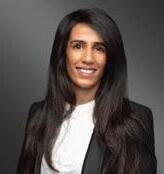


EDITORS’ NOTE Dr. Lara Jehi is professor of neurology at Cleveland Clinic Lerner College of Medicine, and Chief Research Information Officer for the Cleveland Clinic Health System. In this role, she works closely with information technology, research, finance, and other departments to organize and optimize the Cleveland Clinic’s digital infrastructure and computational research strategy to better support research activities and accelerate new treatments for patients. She is the principal investigator of Cleveland Clinic’s Bio-repository, and the Executive Program Lead for the Discovery Accelerator, a strategic partnership between Cleveland Clinic and IBM to accelerate research and innovation leveraging high performance computing, artificial intelligence and quantum computing. She is the Chair of Cleveland Clinic’s Center for Computational Life Sciences, and Chair of Cleveland Clinic’s Data Advisory Council. She chairs several key commissions in national and international professional societies, has more than 200 peer-reviewed publications, 10 book chapters, and is a regular reviewer for NIH study sections. In addition to her medical training in epilepsy, she holds a master’s degree in healthcare delivery science from Dartmouth College.
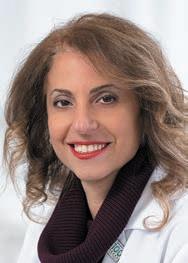
Dr. Lara Jehi
more than 275 outpatient facilities, including locations in northeast Ohio; southeast Florida; Las Vegas, Nevada; Toronto, Canada; Abu Dhabi, UAE; and London, England. In 2022, there were 12.8 million outpatient encounters, 303,000 hospital admissions and observations, and 270,000 surgeries and procedures throughout Cleveland Clinic’s health system. Patients came for treatment from every state and 185 countries.
What have been the keys to Cleveland Clinic’s industry leadership?
We are an institution that is very clear about its North Star, which has always been putting patients first. This commitment goes for the person who cleans the hallways to the C-suite. Our decision-making, our behavior, and our engagement are all driven by a focus on the patient. This shapes our commitment to research, innovation, and discovery, because
as one of the founding fathers of Cleveland Clinic said, our responsibility is to take care of the patients of today, and also to focus on the patients of tomorrow.
The one common thread that binds everything we do at Cleveland Clinic is putting patients first.
Will you discuss your role and areas of focus?
My overall vision for research at Cleveland Clinic has three pillars: first is building our assets for research; second is enabling and growing those assets; and third is transformative partnerships with the community, policymakers, and other institutions to translate what we discover.
I am still a clinician, as you can tell from the white coat I am wearing. This week happens to be hospital service week which means I take care of patients in the hospital. This is important for me even though I have a lot of responsibilities in administration and research, since being with patients keeps me
Cleveland Clinic (cleveland clinic.org) is a nonprofit multispecialty academic medical center that integrates clinical and hospital care with research and education. Located in Cleveland, Ohio, it was founded in 1921 by four renowned physicians with a vision of providing outstanding patient care based upon the principles of cooperation, compassion, and innovation. Cleveland Clinic has pioneered many medical breakthroughs, including coronary artery bypass surgery and the first face transplant in the United States. Cleveland Clinic is consistently recognized in the U.S. and throughout the world for its expertise and care. Among Cleveland Clinic’s 77,000 employees worldwide are more than 5,650 salaried physicians and researchers, and 19,000 registered nurses and advanced practice providers, representing 140 medical specialties and subspecialties. Cleveland Clinic is a 6,699bed health system that includes a 173-acre main campus near downtown Cleveland, 23 hospitals,

“Our decision-making, our behavior, and our engagement are all driven by a focus on the patient. This shapes our commitment to research, innovation, and discovery, because as one of the founding fathers of Cleveland Clinic said, our responsibility is to take care of the patients of today, and also to focus on the patients of tomorrow.”
grounded. I also spend a lot of my time developing programs, such as the biorepository for the health system.
How important is close coordination and collaboration within Cleveland Clinic for its research efforts?
This is key and nothing replaces it. A main differentiator for Cleveland Clinic in research is that we are a clinic so the translation of a bench researcher’s idea into something that can make a difference in the lives of patients is seamless, compared to the more traditional siloed approach where often the research happens in a university, and then there is the hospital which is a separate entity, and these two entities don’t communicate.
Cleveland Clinic is unique because the research organization and the hospital are one entity – we are all Cleveland Clinic. This makes the process of administering research much easier. The research teams that are successful talk and collaborate, and it is critical that we work together to meet our goals.
Cleveland Clinic is a global organization, and we have a presence in London, Abu Dhabi, Canada, as well as other parts of the United States besides Ohio, and coordination is critical across our global footprint. It is not just about what happens in Cleveland – all of these locations have as much to bring in terms of research as we do in Cleveland. We are continuing to build an operating model that allows us to work closely together globally in our research efforts.
Research is a continuous effort with no end. How important is it to take moments to pause and celebrate the successes along the way?
Research is about repeating – doing things over and over again. This can be frustrating to someone who is focused on getting an answer, as opposed to the process. In research, you never think your answer is good enough and we are constantly focused on making it better, always learning from our mistakes and looking forward. It is very important to pause at times to celebrate
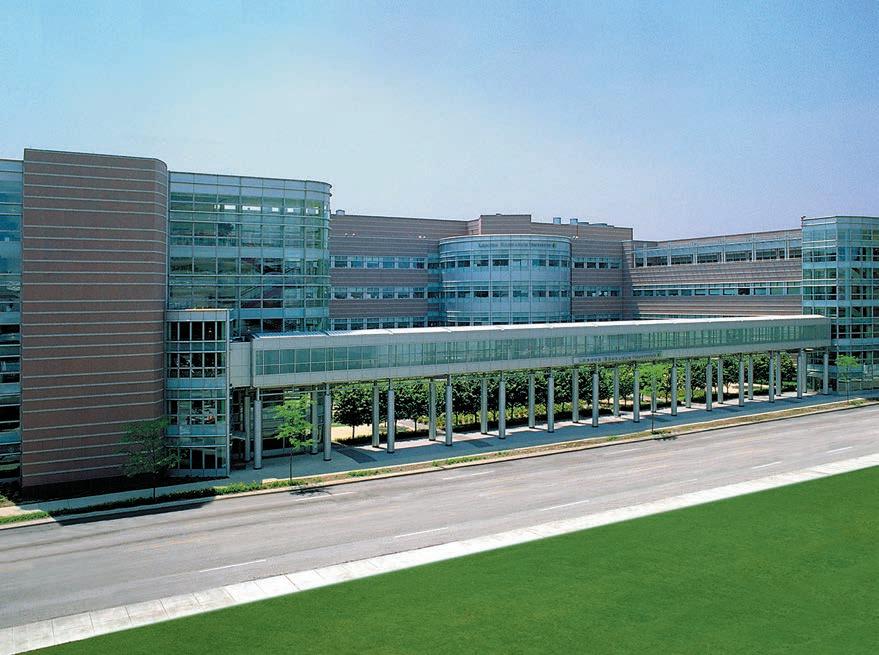
what we have done, since this rejuvenates you and excites you about continuing your work.
It is important for leaders of the organization to set the tone and make it acceptable to take those moments to celebrate, and to acknowledge the work of the team. I try to do this regularly with my group, since it takes the entire team to be successful.
Do you feel that there are strong opportunities for women in leadership roles in the industry?
There has definitely been progress, but we are not there yet. It really varies among institutions. I remember when I joined Cleveland Clinic in the early 2000s to do my residency, there were no women on the executive team. I would look up and it was all men. Now, 24 years later, our enterprise chief of staff, Beri Ridgeway, is a woman; our chief caregiver officer, Kelly Hancock, is a woman; our chief research and academic officer, Serpil Erzurum, is a woman; and there are many other women leaders in the institution. This is uplifting and a clear demonstration of visionary leadership at Cleveland Clinic.
While there clearly has been progress, it does take women longer to get to the same place that men do. I have always felt that if we want to get more women into leadership positions, we just need to “get more women in leadership positions.” It is easier for them to see the potential in women like them and pull them up too, creating a virtuous cycle. My hope is for a time where the best person for a job gets it, regardless of whether they are a man or a woman, and this becomes a non-issue in the decision-making process.
What advice do you offer to young people interested in pursuing a career in medicine?
The most important thing is to focus on your craft, be open, and don’t shy away from taking chances. To be successful in medicine, you need to be passionate about it because that will fuel the energy necessary for the hard work and dedication required to succeed. You need to wake up in the morning excited to go to work and excited to put in the hours. You need to be as excited about the success of others as you are about yours in order to build a great team, and be a great team-member yourself. Medicine is such a fulfilling profession since there is nothing more gratifying than making a difference in a patient’s life.•
EDITORS’ NOTE Teresa Tung is the Global Lead of Data Capability at Accenture. Her current interests include edge computing, data mesh, digital twins, and robotics. She brings strategic expertise in helping clients bring in first of its kind new technology capabilities to create a differentiated digital foundation for their businesses. Tung regularly speaks at technology industry conferences like Strata and IoT Solutions World Congress on topics including AI, digital twins, DataOps and ModelOps, and innovation. Tung leads her team in bringing together the best-of-breed next-generation cloud architecture solutions from industry, start-ups and academia to build Cloud First’s capability and assets by working on pioneering pilot projects. She is Accenture’s most prolific inventor with over 225 patents and applications, and received Accenture’s Invention of the Year award in FY19. Tung has had several leadership roles in her career with Accenture. Previously, she led Accenture Labs research and development activities for cloud, big data, the Internet of Things and APIs, creating a wide range of key assets that are still in use across Accenture and with clients today. Tung holds a PhD in Electrical Engineering and Computer Science from the University of California at Berkeley.

Teresa Tung
What have been the keys to Accenture’s industry leadership?
The true power of Accenture is our people, who possess a broad range of expertise – like our 53,000 skilled data and AI practitioners and more than 200,000 people with cloud skills – and our deep experience across industries. I’m consistently impressed with the quality of talent we can bring to any project across industry, function, technology, and region. Our talent in terms of depth, breadth, and scale – which span creative, systems integration, marketing, and manufacturing, to managed services across the enterprise – makes us unique. Beyond being tremendous in each area, we’re special in how we come together as one Accenture team to create innovative, repeatable industry solutions to help our clients solve their greatest challenges.
Maintaining this level of expertise takes work, and we’ve industrialized that: we’re continually investing – in research and development, in the learning and professional development of our people, in emerging technology companies, in co-development with our partners, and in new capabilities via strategic acquisitions – so that we can anticipate and harness ongoing waves of technology innovation to help our clients reinvent their businesses.
technology and human ingenuity. We have a culture of shared success, which is about success for our clients, our people, our shareholders, our partners and our communities. It’s all underpinned by our core values and Code of Business Ethics, which safeguards the trust our clients and partners place in us – it’s our job to do the right thing. This includes our focus and commitment to ensuring that innovative technologies like generative AI are designed and deployed responsibly.
Our team of leaders invest in our employees’ growth and challenge them to reach new heights. My mentors at Accenture helped me dream bigger and strategize on how to make it happen, and I help my team do the same, for themselves and for our clients.
For me personally, my 18 years at Accenture is one of the longest relationships in my life – even older than my three children. I’ve gotten to work on first-of-its-kind projects for cloud, big data, edge, and digital twins. Accenture has helped me shape and personalize a career path to take on bigger leadership roles, to lead at the cutting edge of technology, and to balance needs in my personal life.
Will you provide an overview of your role and areas of focus?
Accenture (accenture.com) is a leading global professional services company that helps the world’s leading businesses, governments, and other organizations build their digital core, optimize their operations, accelerate revenue growth, and enhance citizen services – creating tangible value at speed and scale. It is a talent- and innovation-led company with approximately 742,000 people serving clients in more than 120 countries. Technology is at the core of change today, and Accenture is one of the world’s leaders in helping drive that change with strong ecosystem relationships. The company combines its strength in technology and leadership in cloud, data, and AI with vast industry experience, functional expertise, and global delivery capability. Accenture is uniquely able to deliver tangible outcomes because of its broad range of services, solutions and assets across Strategy & Consulting, Technology, Operations, Industry X, and Song. These capabilities, together with its culture of shared success and commitment to creating 360-degree value, enables it to help clients reinvent and build trusted, lasting relationships.
How do you describe Accenture’s culture and values?
Accenture is a purpose-driven company, committed to delivering on the promise of
As the global lead of data capability at Accenture, my role revolves around building the vision, assets, and talent needed to help our clients become data-driven businesses. As every business becomes an AI business, data is the competitive advantage that fuels differentiation.
“Recent Accenture research finds that organizations that have an advanced digital core – the critical technology capability that uses cloud for agility, data and AI for differentiation, applications and platforms to accelerate growth, and has security baked in by design – can drive continuous reinvention.”
Today, I’m working with clients to rethink what data readiness means in the age of generative AI. Most enterprise data foundations have been built for technical users; they mainly focus on structured data packaged for reporting and answering pre-determined questions. Generative AI changes the game – with an ability to allow non-technical users to work with data directly, with the capability to dynamically contextualize and connect data across organizational silos, and with the flexibility to extract insights from unstructured data like documents, voice, and video. Data is no longer a technology project, but an asset to be treated like a product with measurable value to the business.
Will you highlight Accenture’s work with industry, start-ups, and academia to build cloud, data, and AI capabilities?
Accenture forges strategic partnerships with leading technology companies, start-ups and academic institutions, not only to gain advanced insights, but to shape a future enabled by technology. We have a unique vantage point from working with thousands of clients ranging from global industry leaders to start-ups. We’re hyper-attuned to their needs and opportunities and can maximize this perspective to guide the application of emerging technology to help our clients go further and faster.
For example, we’re working with Stardog, a start-up that enables enterprise knowledge graphs (the same technology that underpins internet search) to connect digital twins with operational data and expert knowledge to create an automated AI-powered warehouse. And we’re working with a generative AI platform start-up, Writer.AI, to personalize communications for tone, insight, and channel from a trusted corporate knowledge base.
We’re also working with world-class universities to augment our capabilities. In 2022, we became an inaugural member of the Corporate Affiliate Program at Stanford Institute for Human–Centered AI to help guide and build the future of AI. Through the program, we are supporting a number of faculty research programs around AI safety and trust. In addition, Accenture has created a Foundation Model Scholar Program to provide certifications related to large-language model skills.
As a proud alumnus, I’m also excited about our work with UC Berkeley’s Sky Lab to augment our foundation model architect capabilities and provide certifications on foundation model finetuning and engineering. This collaboration will help us stay on top of the next generation of cloud and data architectures.
How is Accenture helping its clients bring in first of its kind new technological capabilities to create a differentiated digital foundation?
Recent Accenture research finds that organizations that have an advanced digital core –the critical technology capability that uses cloud for agility, data and AI for differentiation, applications and platforms to accelerate growth, and has security baked in by design – can drive continuous reinvention.
We identified three tenets to achieve reinvention-readiness. The first step is to build
“Accenture provides tremendous support for inventors – anyone can submit an idea for consideration for a patent to tap into the creativity and unique perspectives of our approximately 742,000 employees. I have been doing just that throughout my career.”
cutting-edge digital core maturity that matches industry needs. Second, companies need to shift more resources toward innovation. And third, it’s important to balance technical debt liabilities with future investments. When companies follow all three tenets, they can grow revenues by approximately 60 percent and profits by nearly 40 percent.
I lead a team focused on helping our clients build out data as part of a strong digital core, specific to their industries. This includes updating the data foundation including knowledge graphs, vector databases, and more use of unstructured and synthetic data needed to implement generative AI across the enterprise –as well as using generative AI to more rapidly migrate, modernize, and work with data.
I’m looking at new technologies like specialized infrastructure that will enable data processing in new ways. For example, we’re seeing GPUs enable foundation models, and there are also ultra-low power processors that are perfect for use cases like voice activation to open the trunk of my car, even if it’s been parked at the airport for over a month. Right-sized infrastructure allows us to process data whether at generative AI scale, or when embedded into everyday things and places.
As another example, there’s confidential compute and privacy preserving technology that enables new programmatic protections for data sharing that protect both the data and the algorithm through encryption. This is essential for data sharing, especially when using a managed foundation model with sensitive data.
Do you feel that there are strong opportunities for women in leadership roles in the industry?
Absolutely. This is an exciting and important time for women to leverage their unique skills and perspectives. As technology rapidly evolves, women can bring a fresh outlook and can anticipate new opportunities that will drive the industry forward.
As a female leader, it is my job to help foster an environment of trust and change as technology levels the playing field. For example,
I am the lead sponsor of our internal Women in Quantum initiative, which is focused on growing our capabilities and prioritizing training and opportunities for females around this disruptive technology. Whether it’s quantum computing, generative AI, edge computing or robotics, emerging technologies are new to everyone and offer a great way to be purposeful in maximizing diversity and perspectives.
You have more than 225 patents and applications, and received an Invention of the Year award in 2019. Are you able to take moments to reflect on your accomplishments and celebrate the wins?
Accenture provides tremendous support for inventors – anyone can submit an idea for consideration for a patent to tap into the creativity and unique perspectives of our approximately 742,000 employees. I have been doing just that throughout my career. I am proud to be Accenture’s most prolific inventor with over 225 patents and applications in my name. My patents span various technology domains, including artificial intelligence, edge computing, digital twins, and data architectures.
In 2019, one of my patents was honored with the coveted Invention of the Year award at Accenture. This annual competition celebrates the most technically innovative and businessimpactful patents across Accenture globally.
I am grateful to have the opportunity to be creative in whatever work I am doing, to have an idea, and to have Accenture’s support in getting my inventions documented and protected.
What advice do you offer to young people beginning their careers?
My advice to young individuals just starting out is to fully embrace every opportunity. Lean into what makes you special and identify how you can bring a unique perspective –remember that much of this technology is new for everyone, so we’re all starting at the same time – and use your voice. It’s important to have a clear vision of your goals and aspirations, but also to remain flexible and adaptable as the industry continues to evolve.•
An Interview with Jennifer McCollum, President and Chief Executive Officer, Catalyst
EDITORS’ NOTE Jennifer McCollum is President and Chief Executive Officer of Catalyst. An expert on advancing women’s leadership, McCollum has long been dedicated to challenging and changing the status quo for women in the workplace. A nationally recognized speaker, consultant, coach, and author, McCollum is a thought leader with expertise on closing the gender equity gap and inclusive leadership. She is the author of In Her Own Voice: A Woman’s Rise to CEO, which offers advice based on McCollum’s own experiences on how to challenge gender biases in the workplace. McCollum most recently served for nearly six years as the CEO of Linkage, Inc., a top-20 global leadership development firm dedicated to advancing women and creating inclusive leaders and organizations. She led the transformation of the organization, culminating in the sale and integration into SHRM through 2023. Prior to Linkage, McCollum spent a decade growing businesses within Corporate Executive Board (CEB), now Gartner, and Korn Ferry. At CEB, she led product management within the leadership division, driving innovative solutions that helped organizations select, develop and place leaders at all levels. She also ran CEB’s Leadership Academies business, which developed more than 30,000 professionals in 2,100 companies throughout 50 countries. McCollum also served as CEO of IntraVision, a leadership consultancy she founded and grew over the course of eight years. McCollum holds an MS in management and communications from the University of Stirling in Scotland and a BA in communications and psychology from Wake Forest University.

(catalyst.org) is a global nonprofit supported by many of the world’s most powerful CEOs and leading companies to help build workplaces that work for women. Founded in 1962, Catalyst drives change with preeminent thought leadership, actionable solutions, and a galvanized community of multinational corporations to accelerate and advance women into leadership –because progress for women is progress for everyone.
How do you define Catalyst’s mission and purpose?
Catalyst’s mission is to accelerate progress for women through workplace inclusion. Catalyst’s research and tools have helped companies for 62 years drive equity at every level, and our impact is measured through equitable pay and representation.
Will you provide an overview of Catalyst’s work and programs?
Catalyst promotes gender equity through workplace inclusion, and our work is rooted in unique research and actionable solutions. Together with more than 400 leading companies around the world, we help create workplaces that work for women. Our programs focus on five key areas:
• Advancing Women: Increasing the representation of women, including women from racially and ethnically marginalized groups, in corporate leadership and promoting equal access to career opportunities.
• Women and the Future of Work: Developing solutions for women and underrepresented groups to have full participation and equal opportunity in the 21st-century workplace.
• Lead for Equity and Inclusion: Deepening understanding of workplace inclusion and equipping global companies to remedy inequities across intersections of identity, such as gender, race, ethnicity, culture, sexual orientation, and gender identity.
• MARC (Men Advocating Real Change): Engaging men to leverage their influence to advocate for gender equity in the workplace.
• Frontline Employees Initiative: Creating respectful and rewarding workplaces, so all women thrive.
We offer actionable guidance and community through our workshops, courses, and webinars, as well as our signature Catalyst Awards Conference & Dinner and Catalyst Honours events. Our Catalyst CEO Champions For Change initiative shines a spotlight on CEOs and their organizations that exemplify what it takes to create and sustain inclusive workplaces.
What excited you about the opportunity to lead Catalyst and made you feel it was the right fit?
When I wrote my book, In Her Own Voice, last year, I focused mostly on what women could do to overcome the real hurdles that hold them back. That’s important work focused on supporting the women themselves, but it’s even more effective when organizations and executives help break down the systemic barriers that exist, like representation, pay equity, male allyship, and inclusive cultures. Now, with this
“Catalyst promotes gender equity through workplace inclusion, and our work is rooted in unique research and actionable solutions. Together with more than 400 leading companies around the world, we help create workplaces that work for women.”
“Catalyst’s mission is to accelerate progress for women through workplace inclusion. Catalyst’s research and tools have helped companies for 62 years drive equity at every level, and our impact is measured through equitable pay and representation.”
opportunity at Catalyst, I get to lean in on this other critical side of the issue, working alongside a committed staff and 400+ companies and their executives who are equally committed to our mission.
The other thing I’m excited about is that Catalyst is so research-driven. Everything hinges on leading-edge metrics around where we’ve been, where we are now, and where we need to go to achieve gender equity. Measurable data is crucial. And I love that Catalyst doesn’t only focus on the problems, but also on the best practices, tools, and training around the problems.
For example, Catalyst actively engages men in the process of systems change – because we can’t achieve gender parity without them. We invite them to see their role in the solution, not just to support or sponsor women, but to be true partners and advocates for real change. Most men want to help. When we provide the foundation of understanding and practical skills, they can do so effectively.
One more point: Catalyst brilliantly rewards and recognizes the people and organizations who do this work well through our prestigious Catalyst Awards. What we measure and reinforce, we get more of, and our award winners are living proof of that.
Do you feel that there are strong opportunities for women in C-suites and on corporate boards?
There is a tremendous opportunity for women to lead in the C-suite and on corporate boards. We have 39 trailblazing women CEOs compared to 461 men running companies on the S&P 500. Men still fill more than 90 percent
of CEO roles and fill two-thirds of board seats. We’re approaching critical mass for women on boards, where their presence is finally considered a norm and not an exception. But that’s still just 33 percent.
The progress is too slow, and yet there are encouraging bright spots. Catalyst’s CEO Champions for Change is a unique community of more than 80 global CEOs committed to advancing women across racial and ethnic groups into leadership roles and onto boards of directors. They share organizational data on their efforts to advance women in the workplace with us each year, and our findings show that these companies are leading the advancement of women into senior leadership and outpacing their global peers. They are retaining women at all levels, including those who identify with marginalized racial and ethnic groups, at similar rates as men. And women are advancing to the highest levels at these companies.
What advice do you offer to young women beginning their careers?
There are now four generations in the workforce. At Catalyst, we’ve done a lot of work on generational differences, and we find that there is a lot of power in leveraging generational diversity. I would encourage young women to build their network early by accessing the wisdom of managers or seasoned employees who can help you with ongoing discovery and development. Find mentors with skill sets that will challenge your own evolution. Get curious and ask lots of direct questions. A good mentor can help you understand the unwritten rules about how work gets
done, about what does (and does not) lead to advancement.
Try to also create relationships where you can do some reverse mentoring and demonstrate your unique skills, too. It will help you build deeper connections with coworkers from different generations, which is good for you and for them. It will also make you more visible and give you the chance to hone your communication and leadership skills.
Advocate for yourself. Ask what the talent development program looks like. Let leaders know you’re interested instead of waiting to be asked. Also, don’t be afraid to speak up about your preferences on issues like flexible work options. Good companies know that this is important, not just for young people, but for everyone as they travel through different life and career stages. Now is the time to start getting used to asking for what you need.
Finally, be aware that unconscious bias is a real thing. People don’t always know how they come across to others. If someone offends you, don’t automatically assume it was intentional. I learned from Anne Chow, the first woman of color CEO in AT&T’s 140+ year history, that the best way to address it is to pull the person aside and gently let them know how what they did or said impacted you. Usually, they will be shocked and genuinely sorry.
This is not about giving bad behavior a pass, but about making it a habit to assume good intent. It’s better for building relationships, it’s better for your mental health, and it just creates a happier life.•
“Catalyst brilliantly rewards and recognizes the people and organizations who do this work well through our prestigious Catalyst Awards. What we measure and reinforce, we get more of, and our award winners are living proof of that.”
EDITORS’ NOTE Marissa Weidner is Chief Corporate Responsibility Officer of Webster Bank. In this role, she is responsible for the oversight and execution of a $6.5 billion Community Investment Strategy. Weidner most recently served as Chief Human Resources Officer at Sterling National Bank, where she was responsible for developing and executing human resource strategy in support of the overall business plan and strategic direction of the organization. Prior to joining Sterling, she served as President of the Westchester County Association, where she executed the BLUEPRINT for Westchester, a multi-million-dollar, multi-year privatesector initiative to revitalize Westchester’s economy. Before joining the Westchester County Association, she served as Vice President of the Hudson Valley Economic Development Corporation. Weidner serves as Co-President on the Board of Directors for the College of Westchester’s Charitable Foundation and also serves on the Junior Achievement of Greater Fairfield County’s Board of Directors. She has previously served on the boards of Volunteer New York, the United Way of Westchester and Putnam, the Westchester/Putnam Workforce Investment Board, the Advisory Board of Fordham’s School of Professional and Continuing Studies, and the Leadership Advisory Council of the YWCA White Plains & Central Westchester. A graduate of Fordham University, she earned a master’s degree in human resource management and organizational effectiveness from the Manhattanville College School of Business.
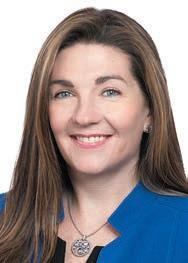
How do you describe Webster Bank’s culture and values?
At Webster Bank, our people come first. We’re passionate about creating a culture of respect and fostering an inclusive working environment for all our colleagues. Our core values: integrity, collaboration, accountability, agility, respect, and excellence represent our collective commitment to how we conduct business and work together with our clients, colleagues, and the communities we serve. Our commitment to ethical conduct, transparency and responsible business practices is what we strive for throughout the company, reflecting our dedication to building trust and creating long-term value for our stakeholders. What excited you about the opportunity to join Webster Bank and made you feel it was the right fit?
For more than 10 years, I worked in economic development which helped me pivot
into financial services at then Sterling Bancorp. I started on the municipal banking team, then served in a variety of roles and was leading Human Resources just as Webster and Sterling merged. Today, I’m Webster’s Chief Corporate Responsibility Officer (CCRO), reporting directly to our Chairman and CEO. The role is a custom fit for me, blending my economic development background with my passion for the community. This role energizes and excites me, especially when I see we are making an impact in the communities we serve every single day.
How do you approach the CCRO role?
As CCRO, I am responsible for the oversight and execution of Webster’s multi-year Community Investment Strategy. While this is my primary focus, I also oversee all of Webster’s community-facing activities, including Supplier Diversity; Community Reinvestment Act (CRA), and Fair and Responsible Banking; Community Investment, Engagement, and Philanthropy; Government Relations and Public Affairs; and ESG. Additionally, I oversee the community
COMPANY BRIEF Webster Bank (websterbank.com) is a leading commercial bank in the Northeast that provides a wide range of digital and traditional financial solutions across three differentiated lines of business: Commercial Banking, Consumer Banking, and Healthcare Financial Services, one of the country’s largest providers of employee benefits and administration of medical insurance claim settlements solutions. Headquartered in Stamford, Connecticut, Webster is a valuesdriven organization with $76 billion in assets. Its core footprint spans the northeastern U.S. from New York to Massachusetts, with certain businesses operating in extended geographies.
“In short, the focus of our Community Investment Strategy is providing access – to capital, to financing, to banking services. Whether that’s creating opportunity for affordable homeownership for first-time homebuyers, or specialized products and services for minority- and womenowned small businesses, we focus on the needs of our communities, allocating dollars where we understand there is the most need.”
activities of Webster’s Business Resource Groups, with a focus on community partnerships, volunteerism and charitable giving as well as our Enterprise Marketing and Corporate Communications functions. My role is multifaceted, but it is united by a common goal: to make a positive impact in our communities and uphold Webster Bank’s commitment to corporate responsibility and ethical business practices.
Will you highlight Webster Bank’s Community Investment Strategy and what you feel are the keys to effectively executing on this strategy?
In short, the focus of our Community Investment Strategy is providing access – to capital, to financing, to banking services. Whether that’s creating opportunity for affordable homeownership for first-time homebuyers, or specialized products and services for minorityand women-owned small businesses, we focus on the needs of our communities, allocating dollars where we understand there is the most need. We work closely with nonprofit partners in our communities to understand where there may be gaps in access, then create opportunities for unbanked or underbanked individuals and families to open bank accounts and learn how to manage their money.
We work closely with our Community Advisory Councils in each of our core market areas. These nonprofit partners provide insight into community concerns, helping us to adapt our products and services to better address those needs and be more successful in serving our clients and customers.
We also encourage our colleagues to volunteer their time and talent in assisting community nonprofits with programs that help us expand our work. Beyond donating money or extending loans, we want to work hand-in-hand with our nonprofit partners to ensure we’re making the right impact.
Our team works collaboratively with every one of our business lines. We partnered with the Credit team to develop a special purpose credit program; with the Consumer Banking team to launch BankOn products; our Minority and Women Owned Business Enterprise team to increase access to capital; and our Commercial Banking team to extend community development lending. This cohesive, enterprise-wide effort has helped to support economic vitality in the communities we serve.
What do you see as the responsibility leading companies have to be engaged in the communities they serve and a force for good in society?
Our success is intrinsically linked to the wellbeing of the communities where Webster Bank operates and that’s something we recognize and prioritize. That is why we are committed to leveraging our resources, expertise, and influence to address key social, economic, and environmental challenges, and to create positive change. For example, through our multi-year Community Investment Strategy, we have implemented a range of initiatives aimed at driving economic vitality and promoting financial empowerment. This includes our Finance Lab initiative,
“Our success is intrinsically linked to the wellbeing of the communities where Webster Bank operates and that’s something we recognize and prioritize. That is why we are committed to leveraging our resources, expertise, and influence to address key social, economic, and environmental challenges, and to create positive change.”
which provides tailored financial education and resources to individuals and businesses in lowto moderate-income communities.
Additionally, we are deeply committed to fostering community engagement and volunteerism among our colleagues. Each year, our colleagues volunteer thousands of hours of their time and talent to support local organizations and initiatives that align with our Community Investment Strategy and philanthropic programs. Whether it’s through financial education workshops, affordable housing initiatives or environmental conservation projects, our colleagues are actively involved in making a meaningful difference in the communities where we live and work. By aligning our business goals with the needs of our communities and embracing our role as a responsible corporate citizen, we are dedicated to building stronger, more resilient communities for future generations. We believe that is our responsibility.
How critical is it for Webster Bank to build a diverse and inclusive workforce?
It’s vitally important to our growth and success as a leading commercial bank to have a workforce that reflects the communities that we serve. We seek to attract and retain colleagues with different perspectives and diverse backgrounds. When we think about how we work with and look to make an impact in so many diverse communities, especially through our Community Investment Strategy, it’s important that we look at diversity on every level.
Do you feel that there are strong opportunities for women to grow and lead in the industry?
While there are still challenges that women may encounter, there is also increasing
recognition of the importance of gender diversity and inclusion in the workplace. We are committed to fostering a culture of gender equality and providing opportunities for women to advance and succeed. We do this through actively supporting programs and initiatives aimed at empowering women in the workforce, including mentorship programs, leadership development initiatives, and networking opportunities.
Webster supports eight Business Resource Groups (BRGs), which provide our colleagues with an authentic experience of diversity, equity, inclusion and belonging. Based on mutual respect and acceptance, these groups recognize and explore our individuality in an environment that fosters personal and professional growth. I’m proud to serve as an executive sponsor of the Webster Women’s Network (WWN) BRG, and I have had the opportunity to work closely with the WWN leaders and members, forging connections, providing direction and mentorship. By creating a supportive and inclusive environment, we are paving the way for women to thrive and lead in banking. What advice do you offer to young people beginning their careers?
Stay curious. Find ways to challenge yourself and be sure you are around people, in both your personal and professional life, who will challenge you. Surround yourself with people who have different viewpoints and different areas of expertise – that’s the way you learn and grow. Seek out opportunity, and don’t be afraid to take on something you don’t think you know because you may surprise yourself with how much you can learn. Show up, be yourself and be fearless.•

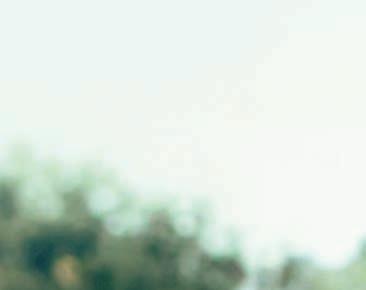






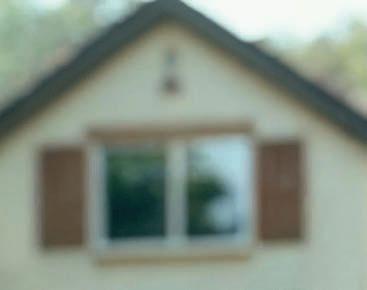
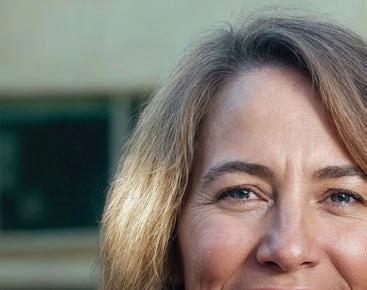











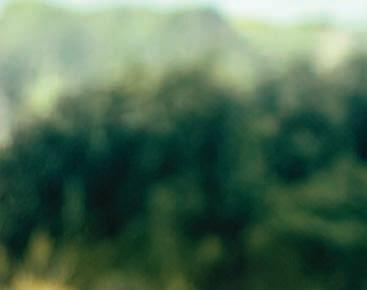

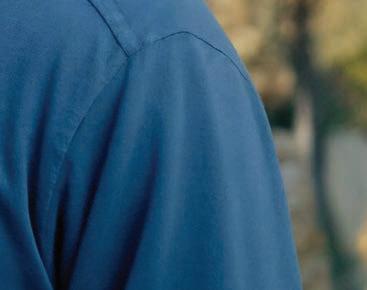
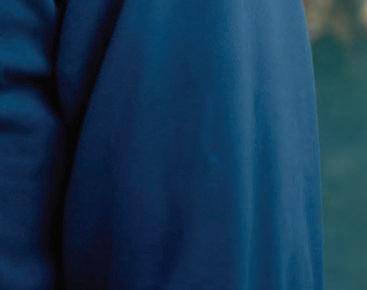








Donating it to Stand Up To Cancer (SU2C) is a meaningful way to give to our cause – and could result in tax benefits for you. Your property donation can support our mission to raise funds and accelerate the pace of groundbreaking research. This research can get new therapies to patients quickly and save lives now. You can avoid expensive repairs, liability, or a he y tax bill when you donate instead of sell.
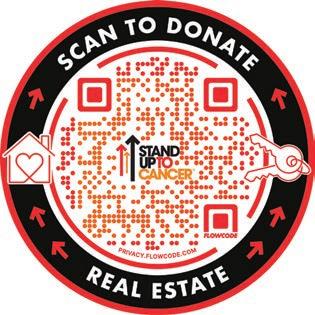
EDITORS’ NOTE Laura Wood is one of nursing’s leading healthcare executives, advancing the health and wellbeing of children and team members as Boston Children’s Hospital’s Executive Vice President for Patient Care Operations and System Chief Nurse Executive, and the Sporing Carpenter Chair for Nursing. As the senior nurse and a patient care leader dedicated to advancing child health via clinical care, research, innovation, education, and community engagement throughout the organization’s system of care, Wood brings a direct understanding of leader priorities in service to the organization and in alignment with the largest segment of the healthcare workforce – registered nurses and advanced practice registered nurses. Since joining Boston Children’s in 2013, Wood has co-led the implementation of a High Reliability Organization program with Boston Children’s President and CEO, Kevin B. Churchwell, MD, achieving a 50 percent reduction in preventable harm. She has brought a clear commitment to operational excellence, digital health innovation, and healthy work environments, consistent with priorities set during her 16-year tenure at Siemens Healthcare (now Oracle Cerner Corporation) where she served as Vice President, National Clinical Solutions and contributed to the effective adoption of healthcare IT. Earlier in her career, Wood held pediatric nursing and operational leadership roles at three leading academic health systems: The Johns Hopkins Hospital Children’s Center (Hopkins Medicine), The Children’s Hospital of Philadelphia (CHOP), and The University of Pennsylvania Health System (PennMedicine). An advocate for child well-being fostered through equity, diversity, and inclusivity as a foundation to nurture the health of individuals and communities, Wood previously served as a volunteer and subsequently as an officer of the Germantown Friends School, a Philadelphia-based Quaker independent school with an emphasis on community building that reflects the diversity in the world. Within Boston Children’s, she contributed to a multi-year effort culminating in the creation of Boston Children’s Office of Health Equity in 2016. Throughout her tenure at Boston Children’s, Wood has led focused efforts to attract and retain a diverse nursing workforce resulting in a doubling of the number of racially and ethnically diverse RN team members now serving the organization’s increasingly broad patient and family population. Wood

Laura J. Wood
earned her undergraduate degree from West Virginia University, magna cum laude, completed graduate preparation at the University of Maryland, Baltimore in maternal-child nursing as a pediatric oncology clinical nurse specialist, and completed a National Institute of Healthfunded Adolescent Health training fellowship within NIH’s Clinical Center, Pediatric Oncology Branch. Wood graduated from the Johns Hopkins University Doctor of Nursing Practice program and is a recipient of the school’s Fralic Nurse Leader Fellowship and Dean’s Award. She is a Robert Wood Johnson Foundation Executive Nurse Fellow Alumna and an elected Fellow of the American Academy of Nursing. Wood currently serves as President, American Nurses Credentialing Center (ANCC), a subsidiary of the American Nurses Association (ANA), providing governance as Board Chair in support of the organization’s focused certification, accreditation, and recognition initiatives, including the Magnet Recognition and Pathway to Excellence Programs. In addition to her ANCC board service, she also serves on the following boards and advisory groups: American Academy of Nursing (AAN) –Fellow Selection Committee; Boston Children’s Hospital (ex officio); Controlled Risk Insurance Company; Friends of the National Institute of Nursing Research; Greater Boston Chamber of Commerce Women’s Network Advisory Board; Greater Boston Nursing Collective; Pediatric Physician Organization of Boston Children’s; Simmons University; and The Joint Commission Chief Nursing Executive Advisory Committee.
Boston Children’s Hospital (childrenshospital.org) is dedicated to improving and advancing the health and well-being of children around the world through its life-changing work in clinical care, biomedical research, medical education, and community engagement. Ranked among the best hospitals in the nation by U.S. News and World Report and Newsweek, it is the largest recipient of NIH funding for pediatric medical research and is the primary pediatric teaching hospital for Harvard Medical School. Boston Children’s treats more children with rare diseases and complex conditions than any other hospital. For more than 150 years, Boston Children’s Hospital has maintained the same vision: to advance pediatric care worldwide. The hospital’s nursing and patient care excellence is reflected through numerous
external bodies, including four American Nurses Credentialing Center Magnet® designations and numerous specialty-specific nursing awards.
Will you highlight Boston Children’s history as a distinguished leader in both pediatric clinical research (curing) and family and child-centered models (caring)?
Curing: Clinical Research and Science-enabled Therapies – From its founding in 1869, Boston Children’s has always looked to the future. The organization has long demonstrated a commitment to discoveries and innovations that transform pediatric healthcare through rigorous research and scientific breakthroughs to save lives and improve health outcomes. Key examples include:
• culturing the polio virus, leading to the polio vaccine and earning the Nobel Prize
• performing the first surgery to correct a congenital heart defect in a child, launching the field of pediatric heart surgery
• developing the first effective treatment for childhood leukemia, establishing chemotherapy as a mainstay of pediatric cancer treatment
• developing the measles vaccine, earning another Nobel Prize
Our history of research and therapeutic breakthroughs continues to drive us. Today’s research and science are already foreshadowing how the next decade will be transformative in relationship to our ability to cure diseases once thought to be incurable, like sickle cell disease. We will also continue to advance our treatment of rare diseases and complex conditions, which affect more than 350 million individuals globally, more than 50 percent of whom are children.
Over the past six years, Boston Children’s has created a nurse-led, emerging therapies operational model to enable access and early adoption of gene therapies. Today, the hospital is the only children’s hospital in the U.S. to treat children with all seven of the currently available gene and novel therapies.
Caring: Nurse-enabled Family and ChildCentered Care – For the hospital’s first 70 years, a series of “nurse superintendents” oversaw hospital operations in alignment with physician leaders. Today, Boston Children’s has advanced a model that supports nurse executive contributions in all key decision-making settings including the hospital board and supports direct-care nurses as essential leaders through a professional governance model. More than a half century ago, the hospital was also one of the first to eliminate parent visitation hours, in favor of “rooming in” at the bedside of

their hospitalized child, promote parent presence during procedures, and establish a Patient Family Advisory Council to incorporate the perspectives and priorities of children, adolescents, and families more formally throughout the hospital’s care model.
With the onset of the COVID-19 pandemic in 2020, Boston Children’s immediately set aside existing protocols and pioneered ways to maintain the essential nature of family caregiving, allowing parents to continue full participation at the bedside. At Boston Children’s, cures and scientific discoveries go hand-in-hand with human caring.
How do you define Boston Children’s culture and values?
Our culture is one that strives to achieve scientific and care delivery innovation and is guided by a strong focus on our mission:
• Provide cutting edge, innovative care
• Be a leader in pediatric research and discovery
• Educate tomorrow’s leaders in child health
• Improve the health and well-being of children in our local communities
Our culture and shared values are reflected through a framework known as “The Boston Children’s Way”– holding ourselves to the highest values of respect, inclusivity, diversity, teamwork, and kindness to provide patients, families, and each other with an experience equal to the care we deliver. Our values are further translated through five High Reliability Organization principles: preoccupation with failure; reluctance to simplify; sensitivity to operations; deference to expertise; and commitment to excellence. Our culture seeks to support continuous learning and improvement, applying practices related to psychological safety within our teamwork.
What role do you envision Boston Children’s playing in demonstrating strategies to attract and retain nurses?
Long before the onset of COVID-19, Boston Children’s Hospital and its senior nursing and operational leaders understood the importance of the health of clinical work environments. Through
the adoption of a Healthy Work Environment survey tool over the past 15 years, coupled with the application of evidence-based standards to support frontline teams, we have maintained a low average RN annual nursing turnover rate of 5-6 percent for more than a decade, well below national averages.
Boston Children’s also continues to evolve clinical team and leadership structures to strengthen decision-making and teamwork at the point of care. An important 2023 study conducted by the American Organization of Nurse Leaders confirmed “connection is retention.” The study report, “Lessons from Leaders with Unusually High Nurse Retention” noted that RNs who worked for local leaders who offered care, growth and help were 80 percent more likely to continue their commitment to the organization and to nursing. Boston Children’s is committed to the empowerment of frontline nurse leaders, supporting their daily management practices to determine nursing and team resource needs. Effective nurse staffing resource allocation is critical to delivering high quality care and supporting healthy work environments. A competitive total rewards compensation and benefits model is foundational, as are professional development, learning, and career advancement opportunities. The hospital has long invested heavily in nursing professional development, professional advancement, specialty certification, tuition remission including loan forgiveness, a defined contribution pension plan, and the creation of multi-year learning opportunities via nurse scientist-led continuing education programs such as the hospital’s evidence-based practice and nursing science fellowships to elevate career development and advancement as a key retention strategy.
Attention to the safety and well-being of nurses is another key focus Boston Children’s has prioritized through the creation of a visitor code of conduct, implementation of staff duress buttons on ID badges, and formal trauma-informed de-escalation and communications preparation coupled with after-care programs when staff injuries occur.
How do you describe your core leadership practices and philosophy, and to what extent did these change during the COVID-19 pandemic?
I have long valued relationship-centric leadership and gravitated toward in-person collaboration. This proved extremely important in the first years of the pandemic when team members were understandably frightened for their personal safety and simultaneously impacted by so many life and family strains. I intentionally maintained an in-person presence throughout the pandemic together with other clinical leaders. While I strongly support the evolution of new hybrid work environments, it is critical that those who lead clinical teams providing direct care maintain a consistent presence and be available as unforeseen challenges arise. It is key to balance a relationship-focused leadership orientation with a results orientation, aiming to solve problems effectively through shared ownership of complex challenges and support of others.
I have long sought to exemplify the principle, “My job is to make good things happen for other people.” I try to ask colleagues how I can help them accomplish key priorities or solve vexing challenges.
How has your service as a board member and volunteer contributed to your own professional development and to the improvement of health and healthcare?
Community board service has been a meaningful way for me to contribute in some small measure to organizations where my personal and professional values strongly align. I am frequently asked why I elect to extend myself to serve as a volunteer given the significant demands related to my primary personal and professional roles. Board service has expanded my network of peers and leaders within my immediate community as well as nationally and internationally and supported my learning. Of note, only modest progress has been realized over the past several decades to appoint nurses to healthcare and industry boards. Despite nurses having substantial, direct knowledge of healthcare operations, there remains more to do to prepare nurses for board service and to convince healthcare organizations to appoint nurses to their boards.
Boston Children’s stands out for its commitment to ensuring nurses’ voices are heard. I serve on Boston Children’s Board of Trustees as an ex officio member, and on numerous board subcommittees including finance, audit and compliance, and the quality and safety board.
What system-level changes are most needed to evolve a more sustainable model of health and well-being for children and families?
The phrase, “The world needs nurses” has never been truer. Shortages of nurses seeking to work in healthcare have increased following the pandemic. The pandemic illuminated the vital role nurses play in direct care, leadership, and in the much-needed evolution of work environments to strengthen staffing practices and create new technology-enabled care delivery models. System-level changes are needed to stabilize and expand the overall nursing workforce. In many ways, nurses are the anchor of health and wellbeing not only for children and families, but for societies everywhere.•
EDITORS’ NOTE Veronica Miele Beard is from North Caldwell, New Jersey, and hails from the world of finance. She worked in sales and trading at multiple investment banks on Wall Street – and did a stint in ad sales at Vogue –before becoming a partner and Chief Operating Officer at technology hedge fund, Coatue, where she learned to take risks and build a business.
Veronica Swanson Beard grew up on both coasts – in San Francisco, California and Naples, Florida. Her career in fashion started at Narciso Rodriguez and Alberta Ferretti, in wholesale, and as a buyer for Marissa Collections in Florida. If not a fashion designer, she would be flipping real estate and designing interiors.
COMPANY BRIEF Veronica Beard (veronica beard.com) was founded by sisters-in-law Veronica Miele Beard and Veronica Swanson Beard in 2010. What began as a rack of dickey jackets has expanded into a full lifestyle collection for the women who make it happen. Their motto: Look good, feel good, do good.

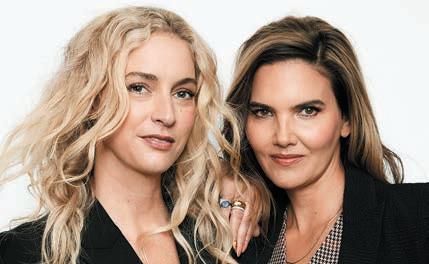
Will you highlight the history of Veronica Beard and how the brand has evolved?
VMB: I hail from Wall Street. I look at the world in the lens of supply/demand and what’s missing from the market. We started Veronica Beard with a bet on the dickey jacket and the

idea of creating a uniform for women. Men had a suit and tie and walked into their work feeling dressed and ready. The dickey jacket was the answer to a woman’s “wonder woman cape.” We think of that feeling of cool, classic and chic in every piece or category we design. Since we launched in 2010, we’ve evolved into a full lifestyle collection, including handbags, shoes, and denim – and we have more to come.
VSB: We found ourselves at family gatherings talking about fashion and our new favorite designers. We both quickly realized there was a void in the market for clothes that you actually wanted to wear and live in. So, we set out to change that.
What have been the keys to Veronica Beard’s strength and leadership in the industry?
VMB: I believe our strength in the industry is most importantly the success of our product, price/value, and the halo effect it has had in all that we do. We’ve been authentic in building our brand ethos and care about women and their daily plight.

VSB: Perseverance and patience. We built this business in a very old-fashioned way –getting out there, selling the product, and shaking hands. That is real. That is never going to go out of style.
How do you describe the Veronica Beard consumer?
VSB: We design for women who live full lives. They are multifaceted and multitasking, and making it happen every single day.
VMB: We like to say we are our customer. Every step of our design process is thinking about her lifestyle and how we can elevate her day.

Will you provide an overview of the Veronica Beard collection?
VSB : The Veronica Beard uniform has always been cool classics for the woman on the go: a tailored jacket, the perfect jeans, a great dress, and chic accessories.
VMB: Every collection is a carefully curated mix of head to toe looks. Veronica Beard is known for investment pieces that are classics with a twist. Collections are rich in texture and color and offer versatility, mixed media, and the perfect sets, suits and denim.
What can consumers expect from the pre-fall 2024 collection?
VMB: We wanted to capture the leisurely spirit of summer. We have amazing dresses, lightweight linen, effortless tailoring, colored denim, and transitional pieces for layering as the season goes on.
VSB : It’s all about simple sophistication, with notes of Americana – our designs are made to mix, match, and last.

Where do you see the greatest opportunities for growth for Veronica Beard?
VMB : We’re focused on expanding our footprint, both here and internationally. Our long-term retail strategy is about connecting with the customer on the local level, meeting her where she shops. Cultivating community is a key driver of our business.
VSB : But we never want to race into anything. Every step we’ve taken has been carefully considered – like with the launch of our handbag collection this year. People have asked us about handbags before, but we wanted to take the time to do it right.
Did you always know that you had an entrepreneurial spirit and desire to build your own business?

VSB: I’ve always loved fashion, art, and interior design. When I was younger, I was obsessed with magazines and models and knew everything about the fashion industry. I also grew up in a very entrepreneurial family and my parents always made us feel like anything was possible.
VMB: I learned that a third of entrepreneurs are inborn and two thirds of people are taught to think like an entrepreneur. I’ve always looked at the world differently. I don’t love rules, and I love when I’m told it can’t be done. I’m obsessed with voids in any market and with innovation, creation, and how we can make money at it.
What has made the working relationship between the two of you work so well?
VSB: We would not be where we are today if there weren’t two of us. Our two perspectives make this brand so unique and genuine. While we don’t always agree on every minute decision or design detail, we are always aligned on the big picture, and having each other makes our successes that much more rewarding.
VMB: The secret sauce is having that camaraderie and trust. We are also family, so failure is not an option. With two Veronicas, we can divide and conquer, which is a lifesaver when balancing our family and business lives.

With the success that Veronica Beard has achieved, are you able to enjoy the process and take moments to reflect on the journey?
VSB: We never lose sight of how far we’ve come. That’s why we’re so passionate about VB Gives Back. We’ve always felt that if we are lucky enough to have this company and this platform, then it’s important for us to do what we can to help others.
VMB: We live in gratitude for our customers, our team, our board, and our families. I try to celebrate the smallest wins every day. The universe is great. What advice do you offer to young people interested in pursuing a career in fashion?
VMB : Don’t build the stadium before securing the fans. Build organically through supply and demand. Find what you’re good at, work and learn and you will find your passion.
VSB: Your biggest failures can become your greatest successes. Be patient with yourself and recognize setbacks as part of the growth process. Dream big and believe in your vision.•

EDITORS’ NOTE Sonja Kostich brings with her both the knowledge and experience of having been a professional dancer for over two decades as well as significant business acumen derived from her business education and time working at Goldman Sachs. Through a unique and successful professional trajectory, she now merges her artistic and business experience as an arts leader. Kostich was hired by Mikhail Baryshnikov at the age of 17 to join American Ballet Theatre from The School of Classical Ballet, the training school for ABT created by Baryshnikov, consisting of only seven female students and five male students. She later danced with the San Francisco Ballet and the Zurich Ballet, Mikhail Baryshnikov’s White Oak Dance Project, and in multiple collaborations with opera/theater director Peter Sellars, before co-founding OtherShore, which she co-directed for six years. Her experience in ballet, contemporary, and modern dance resulted in a diverse international career that spanned across artistic disciplines. Upon retiring from dancing, Kostich returned to school, obtaining a bachelor of business administration (BBA) in accounting and business communication from Zicklin School of Business, CUNY Baruch College, where she graduated Salutatorian at the age of 42. She then began a full-time position at Goldman Sachs in the Finance Division with a focus on regulatory capital requirements. Simultaneously, she obtained an MA in arts administration, eventually returning to the dance world, first as the finance manager at Mark Morris Dance Group and then as program manager at New York City Center. From 2018 to 2022, she served as the Chief Executive and Artistic Officer at Kaatsbaan Cultural Park, a 153-acre artist sanctuary located in Tivoli, New York, where she led the successful rebrand and revitalization of the 30+ year organization, bringing it to award-winning status for its significant artistic and economic contributions to the Hudson Valley. In October 2022, Kostich joined Baryshnikov Arts as its new Executive Director. As a female Korean American, born in Seoul, Korea, and raised in Minnesota, her history, both personal and professional, lends itself to cultivating and supporting new perspectives as Baryshnikov Arts expands its capacity to create multi-platform and collaborative havens for artistic expression, innovation, and freedom, especially as the organization commits further to elevating and sharing the stories of artists of diverse cultures and histories.
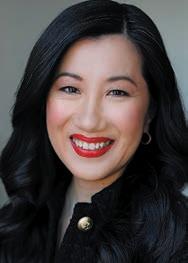
Sonja Kostich
The mission of Baryshnikov Arts (baryshnikovarts.org) is to inspire, incubate, nurture, and support courageous artists and adventurous audiences through residencies, community engagement, commissions, performances, production, and economic development. The organization’s world-class Center in New York City provides a comprehensive arts and cultural ecosystem that is a haven for inclusiveness, innovation, artistic freedom, and beauty.
Did you know at an early age that you had a passion for the arts?
I was fortunate to have parents who understood the value of the arts, and their deep appreciation and knowledge provided me entry to this incredible world of creativity and imagination as a young child. I played the violin, piano, danced, and did theater. I came to learn that I loved existing in the arts world – it felt like “home.” Eventually dance became my primary and only focus – it captured me completely. But being exposed to multiple artistic disciplines from the beginning instilled in me a curiosity that has driven me throughout my life.
Will you provide an overview of Baryshnikov Arts and how you define its mission?
Baryshnikov Arts exists to support artists in their creative endeavors and to provide audiences with a place to experience creative adventures. It’s been almost 19 years since Mikhail Baryshnikov founded this nonprofit arts organization, fulfilling a dream to provide financial, administrative, artistic, production, and physical space support to diverse artists working in multiple and intersecting artistic disciplines in both creative residencies and in performances. We are constantly revisiting what that means specifically for artists today in tandem with an ever-evolving and shifting world. Our focus is on cultivating and supporting new perspectives in order to expand our capacity to create multi-platform and collaborative havens for artistic expression, innovation, and freedom especially as the organization commits to further elevating and sharing the stories of artists of diverse cultures and histories.
Coming out of the pandemic, we are also working on new perspectives focused on how to structure our business, operations, fundraising, and partnerships to be uniquely impactful for
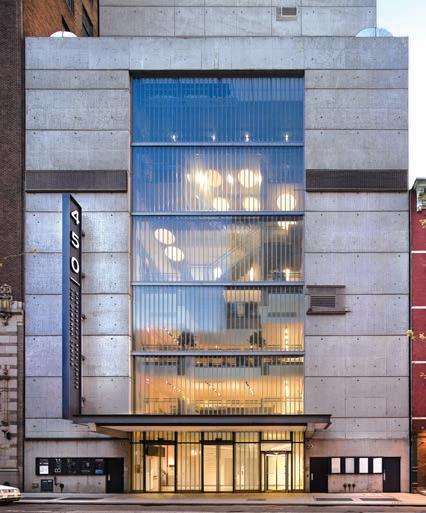
artists and audiences alike that is also viable and translates to both artistic and business success. Will you discuss Baryshnikov Arts’ work and programs?
As both an incubator and a presenter, Baryshnikov Arts is unique in that presenting theaters doesn’t necessarily also provide the resource of space to create. New York City space is extremely scarce and expensive. But Misha had the foresight to build an arts center in Hell’s Kitchen, before the area became Hudson Yards and one of the most sought-after areas for real estate in NYC, to ensure that the most beautiful studios and theater are available to provide space and time for artists which is an incredible combination. Artists can come here, they can work, they can create, and then, they can also preview or premiere their work. We also commission new works as well and like to connect artists from diverse backgrounds and disciplines. We feel it’s important to look at all generations, including the upcoming generation of new creators, at all stages of their careers, and provide support and a place for them to incubate, innovate, develop, and then potentially show their work without demands. We often refer to our programming as the “under construction” phase of an artist’s life. That is where artistic freedom and innovation exists.
What excited you about the opportunity to lead Baryshnikov Arts and made you feel it was the right fit?
Our Founder and Artistic Director is undoubtedly one of the most significant figures in not just dance, but arts and culture in general, both historically and geographically. His purpose in creating Baryshnikov Arts stems from his vision and life’s work. He has been a significant force, leader, mentor, and role model for decades, and Baryshnikov Arts reflects that by working every day to be the artistic and business force with a worthy mission that uplifts and serves.
Baryshnikov Arts is more than a single “place” – it is actually an international community headquartered in New York City, one of the most artistically and economically interesting cities in the world. Coming out of the pandemic, which allowed for and even promoted new ways of thinking, means that now is the perfect time to further strengthen our brand and get the word out about our spaces, our programming, and our future vision. Alongside our current programming, which has incredible artistic integrity, we are looking to further diversify our offerings, develop more interdisciplinary collaborations, and broaden our audiences and supporters. What is so wonderful about eclectic programming is that audiences may suddenly find themselves falling in love with an art form that they had previously not been exposed to or thought they’d be interested in. For example, people may come for a music concert, but they’ll stay for a dance show or culinary event. We value the potential to bring people together in unusual ways across the dance, theater, performance art, poetry, fashion, film, food, and music worlds. This sparks new interests and relationships and I find this truly exciting.
One of the things that dancers have always regarded with such awe and respect about Misha, and has always distinguished him from other dancers, is his ability to transcend the boundaries of artistic disciplines. The fact that many types of artists and people from other industries have been interested in working with him paved the way for future dancers to do the same, which we now enthusiastically witness more broadly. I think one of the most exciting things about the programming at Baryshnikov
Arts is the emphasis placed on cross-discipline collaborations and our curiosity about bringing seemingly unlikely artists together to create something undiscovered or beautifully new. This is something that we focus on and continue to hone as a core value in 2024 and beyond. The important work that Baryshnikov Arts does, which includes meaningfully supporting artists’ most ambitious creative endeavors, fiercely protecting artistic freedom, sharing transformative experiences, and providing a sense of belonging and community, moves the world forward and changes lives. This is what we strive to facilitate, and it is an honor and joy to be part of that endeavor.
How do you approach the role of executive director of Baryshnikov Arts and what are the keys to being effective in the role?
The knowledge and experience of having been a professional dancer for over two decades, combined with my business acumen derived from a business education and time working at Goldman Sachs, has enabled me to develop a deep understanding and appreciation of both the artistic and business sides of running an arts nonprofit which is a very unique balancing act. When you look at successful for-profit companies, its leaders must know their product better than anyone else, who their current audience is and who they want their audience to be, and have unparalleled business and finance skills to lead the product from an idea and a dream to a viable, successful, and profitable existence. Those are the assumptions from which I operate.
Though running an arts organization can be challenging on many fronts, primarily in that there is always a struggle to secure financial and

human resources, I believe limitations in and of themselves can promote innovation if one is creative and this inspires me. This is not to say that I don’t spend a considerable amount of time thinking about the arts nonprofit model and how we might innovate to lessen the day-to-day struggles in order to have time to focus on actually executing the vision while simultaneously building our community to share and enjoy it all with.
You were hired by Mikhail Baryshnikov at the age of 17 to join American Ballet Theatre from The School of Classical Ballet. What has made the relationship between the two of you work so well?
On my part, I have such an incredible respect for him as an artist and person. How he has lived his life, what he has accomplished, and what he has given back to others shows me that he truly cares and believes in what we are doing. So, I can believe 100 percent in what we are doing, which I think is imperative when in the position of a leader.
How valuable is it in the role to have such an engaged and committed board?
The board is a gathering of invaluable individuals who believe in and uplift what we do. Each brings with them a wealth of experience and knowledge from their respective fields and networks.
We are a small team at Baryshnikov Arts, comprised of just 10 full-time staff members including Misha who is our Artistic Director, and we operate on a relatively small scale. We are deliberate about each individual project that gets supported and strive to discover what is most unique and promising in order to allow each artist the time and space for real creative investigation. At the forefront of our thinking is the question about what is the artistic and cultural experience that we provide our audiences and supporters. Everything we do is for them – the artists and our community.
All of which is to say that our board is imperative and deeply appreciated. The depth and breadth of their engagement and commitment reveals itself in all that we do.
What advice do you offer to young people beginning their careers?
There is so much that one needs to just go through themselves to find the answers that are right for them. No life is like another, and the exploration will be and should be unique. It really depends on what you want from life, including a career. There are of course the routes that are tried and tested, but maybe you’ll discover you don’t want one of those routes, and that’s okay.
I think being curious is wonderful and lends itself to continuous development of oneself. I also think learning to persevere in the face of self-doubt or criticism from others is necessary.
No matter how challenging things can be or how discouraged you might find yourself at certain points in your life and career, I have come to learn that doing the hard work and developing real skill and mastery will ultimately provide a real sense of fulfillment, energy, and joy.•
An
EDITORS’ NOTE Dr. Colleen Koch is Group Senior Vice President and Chief Operating Officer of NewYorkPresbyterian/Columbia Division. In this role, she is responsible for the strategic direction, management, and day-to-day operations at NewYorkPresbyterian/Columbia University Irving Medical Center, NewYorkPresbyterian Morgan Stanley Children’s Hospital, and NewYorkPresbyterian Allen Hospital, working closely with each facility’s team to focus on patient experience, quality and patient safety, financial and operational strength, and team member, physician and community engagement. Over the past 20 years, Koch has served in leadership roles at top-performing healthcare organizations. She has extensive experience in medical operations and strategic planning, building research and education programs, enhancing quality and patient safety, and recruiting and retaining top talent. Prior to joining NewYork-Presbyterian in 2024, she served as dean at the University of Florida (UF) College of Medicine, as well as chair of the board for the Clinical Practice Association and the UF Health Proton Center. Earlier in her career, she held positions as Professor and Chair of the Department of Anesthesiology and Critical Care Medicine at Johns Hopkins Medicine; as Anesthesiologist-in-Chief for the Johns Hopkins Hospital; and as Professor and Vice Chair of Research and Education for the Department of Cardiothoracic Anesthesiology during two decades with the Cleveland Clinic. Koch trained in anesthesiology at the Brigham and Women’s Hospital. She earned a master’s degree in clinical research design and statistical analysis from the University of Michigan School of Public Health, and an MBA from Case Western Reserve’s Weatherhead School of Management.

Dr. Colleen Koch
Morgan Stanley Children’s Hospital, NewYork-Presbyterian Allen Hospital, NewYork-Presbyterian Westchester Behavioral Health Center, NewYorkPresbyterian Lower Manhattan Hospital, NewYork-Presbyterian Westchester in Bronxville, NewYork-Presbyterian Brooklyn Methodist Hospital, NewYorkPresbyterian Hudson Valley Hospital, and NewYork-Presbyterian Queens.
What excited you about the opportunity to join NewYork-Presbyterian and made you feel it was the right fit?
I am incredibly passionate about the role academic medical centers play within U.S. healthcare, so when the opportunity to support NewYork-Presbyterian and specifically the Columbia sphere came about, it resonated with me. I had always admired NewYork-Presbyterian from afar, especially the breadth and quality of research being done at its renowned affiliated medical schools, Weill Cornell Medicine and Columbia University Vagelos College of Physicians and Surgeons, and the remarkable reputation of the enterprise. As I’ve settled into my new role, I am impressed by so much, including the work being done through NewYork-Presbyterian’s
Ambulatory Care Network, community teams, and the Dalio Center for Health Justice. I want more of my peers within academic medicine to know about this work to address social determinants of health. It’s been inspiring to spend time listening to and learning from our teams in all areas of the hospital, specifically what is going well and where there are opportunities for us to grow.
Will you provide an overview of your role and areas of focus?
My formal title is Group Senior Vice President and Chief Operating Officer of NewYorkPresbyterian/Columbia Division, and that is inclusive of NewYork-Presbyterian/Columbia University Irving Medical Center, NewYorkPresbyterian Morgan Stanley Children’s Hospital, and NewYork-Presbyterian Allen Hospital. In my role, I oversee the quality, safety, patient and employee experience, and the efficiency of our operations. I care deeply about the patient care journey and want to ensure that we’re effectively optimizing all aspects of the patient experience and also that our teams have the tools they need to be successful in their professional duties and to provide the best patient experience possible.
Located in New York City, NewYork-Presbyterian (nyp.org) is affiliated with two of the nation’s leading medical colleges, Weill Cornell Medicine and Columbia University Vagelos College of Physicians and Surgeons. NewYork-Presbyterian provides state-of-the-art inpatient, ambulatory, and preventive care in all areas of medicine, and is committed to excellence in patient care, education, research, and community service at ten hospital campuses: NewYorkPresbyterian/Weill Cornell Medical Center, NewYork-Presbyterian/Columbia University Irving Medical Center, NewYork-Presbyterian
“I care deeply about the patient care journey and want to ensure that we’re effectively optimizing all aspects of the patient experience...”
“Listening tours” across the hospital and shadowing our teams in their various units has provided material for strategic initiatives; I recognize that the hospital is an incubator of ideas. I believe it is critical to include as many voices as possible to determine what change might be needed, and opportunities to implement that change. It allows the change to be more grassroots.
How do you describe NewYork-Presbyterian’s culture and values?
Our leadership has outlined five organizational values that are spot-on: respect, integrity, innovation, teamwork, and empathy. I was particularly pleased with empathy being included as one of the core values. Not all organizations specifically name empathy as a value, but it is a critical factor in delivering excellent patient care.
During my “listening tour” over the last few months, the team at all levels and specialties has repeatedly shared how much they love working for NewYork-Presbyterian. This love for NewYork-Presbyterian is bolstered by our culture of excellence.
Would you describe the NewYorkPresbyterian/Columbia University Irving Medical Center campus?
The best way I can explain the NewYorkPresbyterian/Columbia University Irving Medical Center in Washington Heights is vibrant. The

community is incredibly diverse and the team at the hospital is equally as diverse, something I think resonates with the patients and communities we serve.
There is also robust data that helps guide our decisions, measure progress, and contributes to our culture of continuous improvement. This data also allows us to partner with our patients to be more preventative with their care. Early detection and intervention are critical to improve patient outcomes.
How are you focusing on continuous improvement regarding quality, safety, patient experience, efficiency, and delivery of service at the NewYork-Presbyterian/ Columbia University Irving Medical Center campus?
I regularly talk to our teams, caretakers, patients, and their families to make sure the fundamentals of quality, safety, patient experience, efficiency, and delivery of care are well in place and solicit feedback on how we can improve from this baseline. NewYorkPresbyterian fosters a culture of innovation and collaboration, and I am focused on how we can best put together groups of inter-disciplinary team members who consider not only how we can improve care, but how we can
implement changes most effectively and with buy-in from each team. Academic healthcare systems are complex entities that involve critical decisions every day. It’s important to evaluate how we make those decisions to achieve the best possible experience and outcomes for our patients. As healthcare continues to grow more complex, from the hospital to the ambulatory space, we must make critical decisions to ensure efficient and streamlined access to care.
We also constantly explore new technologies, such as AI-enabled platforms, to enhance care. We are excited about the rollout of home monitoring by which, for example, metrics like blood pressure and heart rate can be monitored remotely and assessed by a provider, adjusting medication and care accordingly without the patient needing to travel to the hospital.
Do you feel that there are strong opportunities for women in leadership roles in the industry?
I believe there are strong leadership opportunities for women within medicine. Indeed, in recent years, female medical students have started to outnumber their male peers. In fact, in the 20232024 school year, women made up more than 55 percent of students in the country’s MD-granting medical schools.
Women, along with champions for women, currently in leadership roles are really helping to pave the way for others – particularly for young women who need exposure to role models early on to show them the possibilities.
Did you know at an early age that you had a passion to become a doctor?
My father was a vascular surgeon; he encouraged me to explore medicine at a young age. I was the only sibling who was not squeamish at the sight of blood, so I think by default it allowed my dad to talk about medicine and his work with me more in depth than with my siblings. I was also always intellectually curious. In addition to earning my medical degree, I earned my master’s degree in clinical research design and statistical analysis, along with an MBA. I love learning new things and bringing knowledge back to my field.
What advice do you offer to young people interested in pursuing a career in medicine?
There is nothing more rewarding than being able to change someone’s life and improve their health. If you’re thinking about going into medicine, go for it. Seek out mentors and ask questions to understand the steps.
It’s been an amazing journey being in this field. I love it and would do it all over again.•
EDITORS’ NOTE Zannie Giraud Voss is Director of SMU DataArts, as well as Professor of Arts Management and Arts Entrepreneurship in the Meadows School of the Arts and the Cox School of Business at Southern Methodist University. Prior to joining the SMU faculty, she was a professor at Duke University in Theatre Studies and the Fuqua School of Business. At Duke, she also served as producing director of Theater Previews, developing and co-producing over a dozen new plays and musicals, two of which transferred to Broadway. Before transitioning to academia, Voss served as managing director of PlayMakers Repertory Company, associate manager of the Alley Theatre, and assistant director of Audience Development at the Mark Taper Forum. She has served as a consultant for the Irvine Foundation, Theatre Development Fund, Philadelphia Theatre Initiative/Theatre Alliance of Greater Philadelphia, the National Endowment for the Arts, and Theatre Communications Group, co-authoring Theatre Facts since 1998. Voss earned her doctorate at Aix-Marseille III Graduate School of Management, IAE, France.
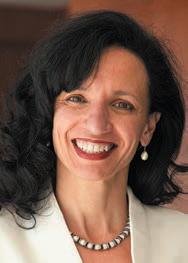
Zannie Giraud Voss
actionable insights shared directly with arts practitioners. Its programs provide business intelligence tools and resources to help arts leaders leverage data to answer critical management questions and connect research analyses to their own work. Recent publications include research reports on emergence from the COVID-19 crisis; the alchemy that drives highperforming arts organizations of color; audience diversity, equity, and inclusion in large performing arts organizations; impact of investments made in diverse creative communities, and more.
Will you provide an overview of SMU DataArts and how you define its mission?
SMU DataArts, a national center for arts research, exists to provide and engage organizations and individuals with the evidence-based insights needed to collectively build strong, vibrant, and equitable arts communities.
Will you highlight SMU DataArts’ programs?
• First, we work with a network of foundations, government agencies, and national service organizations to collect financial, operating, attendance, and workforce data on arts and cultural organizations using a combination of surveying and existing data integration.
• Second, we conduct rigorous academic research using that data plus data on the communities in which arts organizations reside. This advances a broader canon of knowledge about arts management and marketing, cultural policy, and cultural economics while attracting top-notch researchers to work with us.
• Third, we publish self-initiated and commissioned applied research reports for arts leaders and the public that are focused on actionable insights. Our mantra is that when we learn, the arts field learns.
• Fourth, we create mass customized tools and dashboards out of what we have learned through the research. That way, we help those running arts organizations put their data to work.
INSTITUTION BRIEF SMU DataArts (cultural data.org), the National Center for Arts Research, is a project of the Meadows School of the Arts at Southern Methodist University. SMU DataArts’ research efforts range from academic papers published in leading journals, applied research undertaken with community partners, and
It is important to me that we connect arts and cultural organizations to their communities in the data since the two are inextricably tied in reality. To provide the evidence-based insights core to our mission, we have created and maintain a data model of the nation’s arts and culture ecosystem. It is one of the nation’s largest and most unique arts data sets, and the fuel for our programs.
We have five main categories of major programs, all of which are geared to fostering thriving arts organizations and communities.
• Fifth, we work hard to engage the arts field and those who care about the arts with our insights and tools. In 2023, our work was featured in over 60 articles by national and various local press outlets, including NPR’s All Things Considered.
Will you discuss your work spearheading research efforts to help build strong, vibrant, and equitable arts communities across the U.S.?
To understand how to build strong, vibrant, and equitable arts communities, we need to first get a baseline of strengths and weaknesses to
“To provide the evidence-based insights core to our mission, we have created and maintain a data model of the nation’s arts and culture ecosystem. It is one of the nation’s largest and most unique arts data sets, and the fuel for our programs.”
“We strive to conduct our work without bias or preference, and we value input and creativity from diverse perspectives.”
identify what can be celebrated, what areas need reinforcing, and where opportunities lie. A great example of how we publicly share this information is our annual report on the 40 most arts-vibrant communities in the country and its companion heat map, as well as an assessment of arts vibrancy by state.
I have the distinct privilege of working with an outstanding team of talented colleagues, each of whom brings a unique perspective and depth of expertise. We listen closely to arts leaders and arts funders who share with us first-hand their most pressing issues. We partner with them to answer questions we find to be of mutual interest. We learn from them about how research insights make sense and make a difference in their day-to-day experience. Over time, we have published more than 60 research reports on findings that illuminate the strength, vibrancy, and equitability of arts and culture in the U.S.
How critical is Equity, Diversity, Accessibility, and Inclusion (EDAI) to SMU DataArts’ culture and values?
EDAI is core to our culture and to how we show up in the world. SMU DataArts is committed to making research, tools, and resources accessible to everyone. We strive to conduct our work without bias or preference, and we value input and creativity from diverse perspectives. We prioritize data collection and research projects that celebrate the arts and culture of communities of color. In fact, we are in the midst of a project with the L.A. County Department of Arts and Culture examining how workforce diversity, equity, and perceptions of
inclusion impact job satisfaction, willingness to recommend the organization as a workplace, and intent to leave. And, to see where there’s room for improvement, we are working with The Acacia Company on an internal DEI operational audit.
Will you discuss SMU DataArts’ partnership with the Chicago Department of Cultural Affairs and Special Events and Bloomberg Associates?
Chicago’s Department of Cultural Affairs and Special Events (DCASE) and Bloomberg Associates are wonderful thought partners. DCASE has been a long-time user of our data collection platform as part of its grantmaking, which provides us with robust data on that city’s arts and cultural organizations. In 2021, Bloomberg Associates contracted us to work with DCASE to answer five research questions. DCASE leveraged findings generated from one of these research streams, A Comparative Analysis of Contributed Revenue: Chicago and 4 Markets, for a six-fold increase in the agency’s budget in 2022. We published findings from another project showing evidence that local arts agencies are catalysts for arts vibrancy, spurring higher numbers of arts employees and independent artists per capita in their communities.
Fast forward to 2023, and again we worked with DCASE to examine the health of many of the city’s arts and cultural organizations before, during, and emerging from the pandemic. This resulted in the report Navigating Recovery: Arts and Culture Financial and Operating Trends in Chicago.
You have been with SMU DataArts for 12 years. What has made the experience so special for you?
One of life’s great joys has been creating an entity that meets a need, then having others embrace and appropriate its mission, and now seeing it live on. There was no cross-disciplinary national research focused on the health of the arts and culture field 12 years ago when I co-founded SMU’s National Center for Arts Research, which we merged with DataArts to become SMU DataArts in 2018. It has been special to have Southern Methodist University’s confidence and support of this initiative, and to have so many people and organizational partners inspired by the use of data to foster thriving arts organizations and communities.
In courses I have taught on strategic planning, I emphasized that part of being a responsible leader at a certain point in your career means planning for your succession. Now it is time for me to practice what I’ve preached. I feel very proud of what we have built and accomplished with SMU DataArts, but I also believe that change is a good thing.
It is with a heart filled with gratitude that I will retire at the end of August 2024. I am very excited that Dr. Jen Benoit-Bryan, SMU DataArts’ illustrious Research Director, has agreed to take on the role of Director at that time. She is an outstanding leader and talented researcher who is well-respected in the field and brings fresh ideas. Nothing gives me greater pride than knowing that this organization will be entrusted to Jen and a team of gifted and accomplished individuals who are passionate about our mission.•
“We listen closely to arts leaders and arts funders who share with us firsthand their most pressing issues. We partner with them to answer questions we find to be of mutual interest. We learn from them about how research insights make sense and make a difference in their day-to-day experience.”
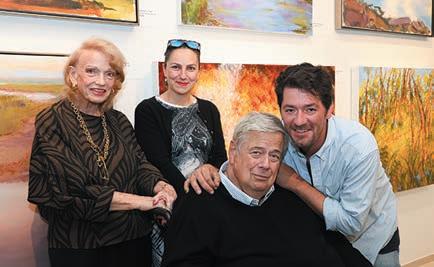
Where did your passion to be an artist develop?
I did not realize I had the passion at a young age, but I should have figured it out as my mother was a painter. I was her sketch model, and I associate much of my interest to her. My sister was a very good artist and did amazing work with pastels. When I was in college an art teacher pulled me aside and suggested that I choose art as a career. That set me on my path.
How do you define expressionist painting?
Expressionist painting cannot be defined, as it is so personal. I look for those perfect moments and special settings when the light is right, I am there, and the vista offers a great gift. The painter uses resource materials, photos, nature, the outdoors and more to be inspired by the colors, the movement, the atmosphere. As an expressionist painter, I deal with one thing – the emotion created in the painting. You see a tree, but the painter wants you to know how the artist feels about the tree. I want people to feel the way I do about nature, to stop and look and appreciate it, to fall in love with it again.

Where does the inspiration for your paintings come from?
I would love for people to look at my work and ask, what is the mystery? The whole world is my visual inspiration – spring green leaves against very blue skies; sun reflecting off houses of a distant shore; sun-dappled shadows below a tree; interplay of trees down the lane – all of this sends me to my studio. There is also the inspiration of championing a cause. My first five shows in Paris and subsequent U.S. shows were dedicated to drawing awareness to ecology.

Will you discuss your use of colors?
To me, color is magic. It is the joy in the painting. It is not just the color – it is how colors work together, which is often referred to as simultaneous contrast. I try to make the relationship of the colors more exciting than the individual color. For example, yellow against a certain blue, violet against light green. I like to say they “sing together.” The colors “vibrate” in a more exciting way and add a lot to the painting.
Will you discuss your recent show, “Come to the Light,” at the Sheen Center for Thought and Culture?
I wanted to showcase an exhibition of landscapes that exemplifies the spiritual power that light can bring in these trying times. I think that light has an incredible impact on people, and with all of the challenges people are facing in the world, I wanted to give some solace and rest to people through my work.
What are the keys to having a successful career as an artist?
Personal satisfaction – no one expects to get wealthy being an artist. What makes me so happy is when I get people to “participate” by looking at a paining longer that a minute, and they see the relationship of color, the mood of the painting, and the gesture lines defining movement at the relationship of the colors. I think that having a visitor view your work is the highest level of a compliment to an artist.
What advice do you offer to young people hoping to build a career as an artist?
For young painters, I tell them the arts record today’s culture and they must be a part of that. I suggest that they beat their own drum, listen to their hearts, and observe, observe, observe. No work of art is created in a vacuum. What you see and feel will allow your creative brain to do the work.•




Clockwise from the upper left:
Sunrise 36 by 48 inches, oil on canvas
Golden Flora 30 by 30 inches, oil on canvas
Winding Waterways 24 by 30 inches, oil on canvas
Romantic Birches diptych, each 24 x 36, oil on canvas
Warmth of Nature 24 by 30 inches, oil on canvas

EDITORS’ NOTE Reem Acra is a renowned international designer known for her breathtaking collections in ready-to-wear and bridal. She combines tradition with a modern aesthetic and leads the way by continuously redefining the boundaries of fashion. She launched her eponymous line Reem Acra New York (reemacra.com) in 1997 and after successfully establishing herself in the bridal market, expanded into ready to wear in 2003. Of Lebanese heritage, Acra graduated from the American University of Beirut with a business degree. She went on to study at the Fashion Institute of Technology (FIT) in New York and the École supérieure des arts et techniques de la mode (ESMOD) in Paris. Celebrities such as Angelina Jolie, Taylor Swift, Jennifer Lopez, Madonna, and Kate Hudson have worn her intricate designs to red carpet events such as the Oscars, Grammys and Golden Globes. Some of her notable accolades include being named the 7th Most Powerful Arab Woman in the World by Forbes magazine, which includes the likes of Amal Clooney, Nemat Shafik, and Zaha Hadid. She has also been the recipient

of the Building Bridges Award from the Bridges of Understanding Foundation, a nonprofit organization which seeks to improve relations between the Middle East and the United States. In 2012, she received an honorary award by the United Nations for her support of the work of the 66th session of the United Nations General Assembly. Acra is a member of the Council of Fashion Designers of America, the Bridal Council of America, the International Advisory Council of the American University of Beirut, and the Fashion Group International. She also


serves on the Honorary Board of the American Foundation for Saint George Hospital and the board of the Dubai Design and Fashion Council. In 2019, Acra was announced as Goodwill Ambassador for Tamanna, an organization that supports children in the Middle East suffering from critical illnesses by granting life changing wishes.
For four consecutive years, Acra has hosted the hugely successful Middle Eastern reality TV show, Fashion Star , where she mentor’s 12 aspiring up-and-coming designers.

What was your vision for launching the Reem Acra brand and how do you define its mission?
I do not think that I had a specific vision when I launched my brand. It was very much organic. I know I had a unique eye and aesthetic and that I could have my own voice. The mission has always been to help women express their own style by creating collections that are feminine and beautiful.
How do you define the essence of the brand?
The brand stands for femininity and for its roots defined by the aesthetic that blends the East and the West, the past and the future.
Will you provide an overview of the collection?
Each collection is defined by a theme that is expressed via color schemes and motifs or styles that are created with a specific inspiration.
How do you describe the Reem Acra client?
The Reem Acra client is:
• sophisticated
• knows what she likes
• has a sense of power
• is feminine and classical with a nod to modernism

Did you always know that you had an entrepreneurial spirit and desire to build your own brand?
I always wanted to explore my vision and my own imagination. I had a sense of belief when I was young that I was blessed by the power given to me to create beautiful things –all I want is to share it with the world.
Where did your passion for the fashion business develop?
When I was a teenager in 1977, I wrote in my prayer book a note to God. It said the
following, “Thank you God for giving me more than beauty. Thank you for giving me the power to create beauty.”
What advice do you offer to young people interested in pursuing a career in fashion?
My advice for young people interested in fashion is to identify your talent and follow your passion. Remember that success does not come easy – you really have to look to your passion. You need to be able to give up on a lot of other things so you can focus and work hard towards your ultimate goal.•



EDITORS’ NOTE Susie Klein is Miraval Resorts & Spas’ first-ever Director of Business Development. Klein has more than three decades of excellence in hospitality and a passion for wellbeing. In her new role, she is focused on strategically expanding the reach and engagement of transformational Wellbeing Retreats at Miraval Resorts & Spas, contributing to the brand’s growth. A Chicago native, Klein began her professional journey in 1987 at the city’s McCormick Center Hotel and held sales roles with The Tremont and The Whitehall Hotels before joining DoubleTree by Hilton in 1992. She entered the luxury sector in 1995 with Four Seasons Hotels & Resorts, most recently representing Four Seasons One Dalton Street in Boston and the Four Seasons New York Downtown hotels. Klein holds a BA degree in Communications from the University of Missouri-Columbia.
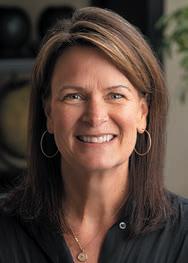
Resorts and progressed through various sales roles, most recently representing Four Seasons One Dalton Street in Boston and the Four Seasons New York Downtown hotels. I joined the Miraval Resorts & Spas’ team as its first-ever director of business development to support an observed need for groups to reconnect and collectively prioritize mental, physical, and spiritual wellbeing in new and meaningful ways. Through my role, I’m able to support groups of all sizes seeking a more intentional way to gather and connect through the lifechanging nature of the Miraval experience.
What have been the keys to Miraval Resorts & Spas’ industry leadership and how do you define the Miraval Resorts & Spas’ difference?
focused on whole-person wellbeing and fostering an environment for meaningful interpersonal connections, which has been key to our success and continued growth. The Miraval experience encourages the conscious exploration of the mind, body, and spirit to create a life in balance through mindfulness.
Will you provide an overview of Miraval Resorts & Spas’ properties?
COMPANY BRIEF The Miraval (miravalresorts.com) brand is a global leader in wellness resorts and spas. Miraval Arizona in Tucson, Arizona pioneered the destination wellness spa resort category more than 25 years ago with its comprehensive program of mindfulness activities, destination-inspired experiences, and spa treatments that incorporate modalities from around the globe. In 2017, Miraval Arizona joined the Hyatt portfolio bringing its in-depth approach to wellness to Hyatt guests and World of Hyatt members globally. In February 2019, Miraval Austin opened in Texas as the brand’s second wellness resort. The newest resort, Miraval Berkshires, located in Lenox, Massachusetts, opened as the brand’s first East Coast destination in July 2020. Together, all three Miraval resorts inspire guests to create a life in balance, foster positivity, and cultivate mindfulness.
Will you highlight your career journey?
The hospitality industry has always spoken to me as it combines everything I am passionate about – creating memorable experiences, impactful collaboration, and fostering personal and professional growth. I began my professional journey in Chicago, my hometown, at the McCormick Center Hotel in 1987 and later held sales roles with The Tremont and The Whitehall Hotels before joining DoubleTree by Hilton in 1992. I transitioned to the luxury sector in 1995 with Four Seasons Hotels &
The Miraval Resorts & Spas brand has pioneered the wellbeing space for nearly 30 years. The brand’s biggest differentiating factor is the transformative experience that guests get at each of our resorts. Miraval has always been
Miraval Resorts & Spas includes three fullservice resorts across the country – Miraval Arizona is the original Miraval Resort located in Tucson, Arizona; Miraval Austin opened in Austin, Texas in February 2019; and Miraval Berkshires is our newest location in Lenox, Massachusetts that opened in July 2020. Each resort celebrates its natural surroundings with its own distinct vibe, culinary offerings and experiences that align with the spirit of the destination while keeping the Miraval philosophy of creating a life in balance through mindfulness at its core. In fall 2023, Miraval Resorts & Spas expanded its footprint with the opening of the Miraval Life in Balance Spa Aviara within Park Hyatt Aviara Resort, Golf Club & Spa as the only


Life in Balance Spa location outside of a full-service Miraval Resort. On the horizon is Miraval The Red Sea, the brand’s first international resort, located on Saudi Arabia’s Shura Island.
Will you discuss Miraval Resorts & Spas’ focus on Wellbeing Retreats, a completely reimagined approach to corporate and social retreats?
Wellbeing Retreats at Miraval Resorts & Spas mindfully and intentionally bring corporate and social groups together to inspire growth, cultivate mindfulness and make authentic connections. Each full-service resort offers fully customizable itineraries based on the type of group and experience desired to build a once-in-a-lifetime experience. Our Wellbeing Retreats help weave the thread between personal and professional wellbeing and provide environments, tangible tools, and learnings that enhance leadership skills and encourage mindfulness in all aspects of life. Retreat experiences journey beyond conventional team building and create space for participants to nurture innovation, forge deeper, more impactful relationships and foster culture centered around balance and holistic wellbeing.
How do you approach your role leading business development for Miraval Resorts & Spas and what are the keys to being successful in the role?
Wellbeing is a very personal experience that looks different for everyone, and I approach my role with that in mind as I educate groups on the transformative power of the Miraval Resorts experience, the value from both personal and professional perspectives, and the lasting impact. Success in my role looks like helping companies evaluate, understand, and reimagine the way they’re approaching and supporting workplace and personal wellbeing for their employees and showcasing how Wellbeing Retreats at Miraval Resorts & Spas not only create mindful moments
for camaraderie, but provide impactful tools for individuals to thrive in all aspects of their personal and professional lives.
What has made the hospitality industry so special for you?
I have always thrived on making meaningful connections which is why I began working in hospitality. The more I learned about different areas of corporate and leisure travel and events, the deeper my love and appreciation for the industry became. As I progressed in my career and began making connections in the sales realm, I realized how significant the relationships I developed had
become. We became more than associates, celebrating life milestones together, finding common ground and nurturing connections. My role with Miraval Resorts & Spas has allowed me to foster new relationships and evolve existing connections to help deepen the understanding of the transformative nature and life-changing impact of the Miraval Resorts & Spas experience for groups.
Do you feel that there are strong opportunities for women to grow and lead in the industry?
Absolutely. The hospitality industry is evolving and there is a growing recognition of the value that women bring in shaping strategies, developing and scaling businesses, and fostering wellbeing in the workplace. Now more than ever, women are being recognized and celebrated for their unique perspectives, innovation, strong leadership, and clear ability to make a lasting positive impact in the industry. Women often excel in relationship building and identifying opportunities for growth and I am proud to work for a global leader like Miraval Resorts & Spas that has always championed women in leadership.
What advice do you offer to young people interested in pursuing a career in the hospitality industry?
Jump in with both feet and ask tons of questions. Be patient and learn so you can lead by example, and get to know your entire team, not just the people in your department. Make sure you cross-train and get in the short lines to help with things no one wants to do – it will give you more bandwidth as a leader and mentor in future roles. Bring your A-game and positivity every day and focus on what you can do next to anticipate the guest and client needs. Make sure that you find a way to say yes and make things happen – that will make you stand out. Anybody can say no. Be a client advocate as much as possible; it’s a delicate balance.•

EDITORS’ NOTE A traveler dating back to her earliest childhood days spent in Jakarta, Erina Pindar combines her rich multicultural background with a fervor for brand building in the luxury space. Pindar grew up with Southeast Asia as her backyard, but following schooling in Singapore, she relocated to the United States. After receiving her degree in marketing, she settled in New York City and, in turn, set the path for her multifaceted career in the travel industry. Around the same time that Pindar identified a lack of fellow millennials in the travel agency community, she met Michael Holtz, founder of SmartFlyer. Together, they saw an opportunity to build a company – backed by a powerful brand – that appealed to fresh talent with a knack for creating exceptional client experiences from start to finish. As a brand ambassador for a lifestyle rooted in seamless travel, Pindar has worked tirelessly since 2010 to create a globally diversified footprint for SmartFlyer. Its affiliate community has blossomed to include over 200 SmartFlyer travel advisors based across the United States, Europe, and Australia under her leadership. Today, she also manages strategic partnerships, and proprietary technology builds. In an effort to drive a better booking experience for all advisors, as well as a frictionless user journey for its clients, Pindar is the Chair of Sion’s Advisory Board and sits on the Board of Advisors for Lucia, two innovative technology companies revolutionizing the travel agency space. Pindar was the first SmartFlyer agent to be named to the Travel Agent 30Under30 list and has since been honored by Forbes as one of the Asian-Americans Who Are Shaping the Travel Industry. She is frequently quoted as a travel expert in CNN Travel, Vogue , Harper’s Bazaar , and Forbes . Pindar sits on the Travel + Leisure A-List Travel Advisory Board, Virtuoso Marketing Committee, ACCOR Travel Agent Advisory Board, IHG Global Sales Advisory Panel, and is the Founder of EQTR, a nonprofit mentorship program developing future BIPOC travel leaders and entrepreneurs.

through curated recommendations and continuous boots-on-the-ground research activated by decades of trusted relationships. SmartFlyer was founded in 1990 by Michael Holtz to offer clients a better, smarter way to book air travel. With several hundred SmartFlyer travel advisors based across the U.S., Europe, Asia, and Australia, today SmartFlyer is recognized as an Inc. Best in Business 2020 company.
Will you highlight your career journey?
Though travel has always been a part of my life, working in the travel industry was not something I instinctively knew I wanted to do. I spent a large part of my childhood in Southeast Asia, moved to the States during high school, and eventually found myself in New York after university. I took advantage of an opportunity to work at a public relations firm that specialized in luxury travel, and it was then that it all started to crystalize that the travel
industry is a viable career option. Soon after I transitioned into the travel agency space, I was working with a few large agencies when I met SmartFlyer’s Founder and CEO, Michael Holtz. Michael not only provided the arena for me to build a solid foundation in the industry, but has also consistently acted as a mentor throughout my career. 2024 marks my fourteenth year with the company and my second as a partner in the business as SmartFlyer’s COO – the best part is we are only at the beginning of this journey.
How do you define SmartFlyer’s mission and purpose?
SmartFlyer is focused on building a community of the best talent in the industry, focusing on the partners and destinations that our clients care about by embracing data-driven decision-making and providing thoughtful services that go beyond the transaction. Our purpose is twofold; as an agency, our role is to take our clients’ invaluable resource – their time – and provide for them a seamless journey
AGENCY BRIEF SmartFlyer (smartflyer.com) is a full-service luxury travel agency built for curious travelers. It specializes in creating exceptional experiences around the world
“Our advisors are our clients in that they share the same values, high expectations, and attributes of those they advise. They take tremendous pride in high-touch client service and treat each planning experience as if it were their own; crafting luxury experiences through vetted recommendations, cultivated relationships, and firsthand research. This approach allows them to support clients in uncovering new destinations and adventures that enhance their travel experiences.”
from start to finish that hopefully will become a memory that lasts a lifetime. With more than 250 travel advisors around the world, we’re able to leverage not only the collective buying power of our community, but also the personal expertise and relationships that make all the difference. As a platform for advisors, our role is to continually build an ecosystem that encourages stakeholder growth and freedom to create the kind of businesses that they envision for themselves. We understand our part within our advisors’ businesses and that is to support and empower our community with a best-in-class platform that allows a holistic work experience. Will you provide an overview of your role and areas of focus?
I oversee our overall operations, brand strategy, partnerships, affiliates, and marketing efforts. On any given day, I get to wear many hats and shift my area of focus across our multiple verticals. And, from time to time, I get to work with a handful of our clients – conceptualizing trips large and small – collaborating with our incredible advisory team to execute their travel. In addition to my daily roles within SmartFlyer, I maintain an active presence on the Travel + Leisure Travel Advisory Board, ACCOR Luxury Collective Advisor Board, while also advising for Sion and Lucia, two innovative technology companies that are truly revolutionizing the travel industry.


What have been the keys to SmartFlyer’s industry leadership and how do you define the SmartFlyer difference?
Our advisors are our clients in that they share the same values, high expectations, and attributes of those they advise. They take tremendous pride in high-touch client service and treat each planning experience as if it were their own; crafting luxury experiences through vetted recommendations, cultivated relationships, and firsthand research. This approach allows them to support clients in uncovering new destinations and adventures that enhance their travel experiences. One of our biggest differentiating factors is the access we provide to our executive team –it demonstrates our dedication to maintaining a prominent leadership presence in the day-to-day. Advisors have the ability to reach our executive team and ownership at any time for recommendations to elevate the planning and travel experience, which adds another layer of client service. This approach has allowed us to successfully grow the business over the years and proves that accessibility is key to doing so.
How is SmartFlyer addressing a lack of millennials in the travel agency community and appealing to fresh talent with a knack for creating exceptional client experiences?
When I joined SmartFlyer at 24, there was a serious lack of fresh talent in the industry. So, one of the questions that we aimed to answer was two-fold: how do we bring in advisors who care about travel as much as their travelers? And how do we showcase this incredible travel advisory space so that the next generation –or, at the time, my contemporaries – sees it as both a viable career option and also one that’s
dynamic, exciting, and with plenty of growth opportunities? Fourteen years later, SmartFlyer has established itself as not only the agency that some of the most elite advisors in the industry call home, but also a well-rounded one, with employees and advisors across all age ranges. I’m so proud to say that we are doing our part to grow future advisors and industry leaders.
What has made the travel industry so special for you?
The relationships and friendships built through the travel industry have been the most rewarding part of my career. There’s truly no other industry so globally connected and similarly focused as this one.
Do you feel that there are strong opportunities for women to grow and lead in the industry?
I wouldn’t be able to do what I do every day without the support of our leadership team, which is made up entirely of incredible female leaders who both grew up within the SmartFlyer ecosystem or joined us from agency, hotel, and consortia spaces. There are fantastic opportunities available for women in this industry, more than ever before. On the advisory side, the entrepreneurial spirit of the space also encourages the creation of powerhouse agencies, the majority of which are female-owned.
What advice do you offer to young people interested in pursuing a career in the travel industry?
This advice is true for just about any career path. Fail fast to learn faster, and be flexible and open-minded – sometimes opportunities come from unexpected places, and shoot your shot because you don’t get what you don’t go after.•
EDITORS’ NOTE Having started as General Manager in 2020, Brendan O’Connor has more than 21 years’ experience in the global premium hospitality industry. He joined the Adare Manor team in 2015 as Director of Food and Beverage. Prior to this, he held senior management roles with a host of prestigious hotels around the world, including Ritz-Carlton Grand Cayman, Sheen Falls Hotel in Kerry, and the Waldorf Astoria in New York. O’Connor has also held senior hospitality management roles during Summer and Winter Olympic Games giving him a depth of experience with high-profile sporting occasions. In 2024, he was appointed to Forbes Travel Guide’s Standards Advisory Committee (SAC) for the 2024-2025 term. This esteemed role is extended by invitation only to the most well-regarded experts in hospitality and luxury brands from around the world.
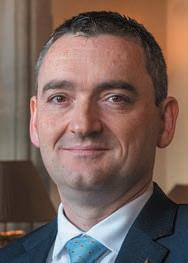
Brendan O’Connor
since relaunching, including nods from Michelin for the Oak Room restaurant, Forbes Five Star recognition for the Resort, and being selected as the host venue for the 2027 Ryder Cup.
Will you highlight the history of Adare Manor?
There is mention of a Manor House in Adare as far back as the 1200s. After that, there have been many owners throughout the centuries. However, in the late 1600s, Thady Quin became the owner of the estate, and his descendants remained as owners until the 1980s. Thady was the great grandfather to the first Earl of Dunraven, however it was the second Earl of Dunraven who undertook the significant redesign and works to the Georgian Manor House. From 1832 through to the 1860s, the Manor House as it stands today took its form. It was not until the 1980s that the estate changed ownership for the first time in centuries.
As a luxury resort, Adare Manor enjoys a distinct advantage in being privately owned and independently managed. This autonomy empowers our team to make decisions tailored to the unique needs of our resort, avoiding the potential homogenization of guest experiences often associated with larger brand or corporate decision-making. We are also a member of Leading Hotels of the World, and this connects us with hundreds of other independent hotels from around the world that share in the philosophy of being remarkably uncommon and unique to the luxury market. The experience at Adare Manor is unique, particularly due to its location and longstanding history.
PROPERTY BRIEF The five-star Adare Manor, Ireland (adaremanor.com) is situated in the heart of Adare Village in County Limerick, Ireland. Adare Manor is steeped in history and surrounded by medieval ruins. The 840-acre riverside demesne is home to a championship golf course designed by Robert Trent Jones Sr. and superb trout fishing on the River Maigue. This hallmark experience offers the best of contemporary food and an impeccable approach to hospitality that brings guests back, time and time again.
Will you provide an overview of Adare Manor?
Adare Manor is a centuries-old estate and Manor House. It remained a private residence until the 1980s when it was eventually developed into a luxury hotel and golf resort. In 2015, Adare Manor was purchased by a local family and a major restoration and redevelopment of the property was undertaken – one of the largest of its kind at the time in Ireland. In late 2017, the resort relaunched with a fresh new look. This included a newly designed Tom Fazio golf course and a meticulously restored Manor House that complemented the new landscaped estate grounds. Today it is well recognized as one of the leading luxury resorts in Europe, and it has continued to earn itself many accolades
What have been the keys to Adare Manor’s success and how do you describe the Adare Manor experience?
We celebrate where we are, and the sense of place is very evident to guests as they experience the resort. We are situated in the center of almost 900 acres of lush green Irish pastures and parkland. The architecture is from a time gone by, and its scale and detail are such that it sets an expectation with our guests, right at the moment of their arrival, that Adare Manor will be different. Most importantly, it is the people who make the Adare Manor experience, and the


team here are the finest ambassadors for Irish hospitality. It takes over 600 team members to look after the guests of the 103-bedroom resort. The experience leaves guests feeling like they have spent time at the home of an old friend, and that is remarked upon daily as guests depart.
How important is it for Adare Manor to continue to evolve and stay current while maintaining its tradition and heritage?
We’re constantly evolving, evident in our business approach as we venture into new markets and challenge industry norms. With the digital landscape changing rapidly, we focus on where our future guests are discovering travel destinations, and we adapt our marketing strategies accordingly. Sustainability and wellness are core to Adare Manor, and despite being redeveloped less than 10 years ago, we’ve continually invested to expand facilities and amenities that enhance our overall guest experience. Our newest addition, the Padel Club, nestled in our natural woodland, offers guests thermal suites, a vitality pool, and padel tennis courts. Despite embracing technology to enhance our operations, we remain committed to the core of our offering: the guest experience and the heritage of our estate. While we explore advancements like AI, we understand that true luxury hospitality thrives on human interaction, as articulated by one industry CEO: “Automate the predictable, so that you can humanize the exceptional.”
How is Adare Manor preparing to host the 2027 Ryder Cup and what does hosting this event mean to the property?
For some years now, we have already been preparing the resort to host the hundreds of thousands of visitors to the event. On the estate, we have been upgrading and preparing the site infrastructure to support the Ryder
Cup team and to deliver a truly exceptional Ryder Cup in 2027. What this event means to the resort has so much to it. The legacy of a Ryder Cup is something that will keep visitors returning to Adare Manor for decades to come. The positive impact to the business is already noted, as the host venue status has made our resort the choice of many individuals and organizations for hosting events. What it means to our team is also something incredibly special. Being part of the team to have delivered a global sporting event will be a great source of pride to people here.
How do you define a true luxury hotel experience today?
True luxury today is personal. It used to be only measured by high-thread-count cotton, extensive lists of rare wines, and opulent dining arrangements. While these are still the fundamental components of many fine resorts, today’s traveler expects us to adapt to their needs and tailor the experience to them. For example, the luxury bedding is now from natural fibers, we have wider beverage selections featuring biodynamic and low alcohol options, and our food offerings acknowledge wellness and health by design, rather than by request.
Did you know at an early age that you wanted to pursue a career in the hospitality industry?
I absolutely did. I was gifted a subscription to National Geographic at an early age – each month I got a glimpse into other cultures and regions that kept me inspired. I wanted to have a career that allowed me to explore the world and travel. Hospitality is the perfect career for that – it has allowed me to work and live around the world and has really enriched my life in more ways than one.
What advice do you offer to young people interested in working in the hotel business?
The hotel business is a vocation, and many paths lead to many different career destinations. Absolutely, one should travel and experience living and working in a different culture. It is incredible for personal growth and development. Pursue your passion and master it – you must enjoy what you do if you are to have a long, enjoyable career. It is not always about being the “manager” or “general manager.” There are so many options to take within hospitality – being an exceptional mixologist, sommelier, chef, Maitre D’, concierge or butler can all be very rewarding career paths and all influence and change our industry for the better.•

EDITORS’ NOTE Silmiya Hendricks was appointed Commercial Director for Iconic Luxury Hotels in January 2023. Prior to this appointment, she most recently served as Director, Member Services U.K. and Ireland for Relais & Châteaux. With more than 22 years of experience in the luxury hotel sector, she has also worked with Millennium and Copthorne Hotels and Hilton.
COMPANY BRIEF
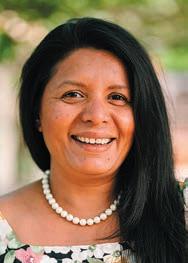
The ethos and purpose of Iconic Luxury Hotels (iconicluxuryhotels.com) is simple: to provide iconic luxury in its finest form. Staying at an Iconic Luxury Hotel is an experience that lives long in the memory. Service is thoughtful and discreet; food attains culinary perfection yet is delivered in a relaxed, comfortable environment; and rooms project opulence but make the guest instantly feel at home. Iconic Luxury Hotels each have their own stories, traditions and character which mark them as unique.
The Mayfair Townhouse (themayfairtown house.com), located on Half Moon Street alongside Piccadilly and overlooking Green Park in London, is a gloriously eclectic combination of 15 Georgian townhouses, 7 of which are listed. Engaging, witty, rich in history, and a haunt for colorful characters, The Townhouse is a place where Oscar Wilde meets Alice in Wonderland, delivering the unexpected and redefining what it means to be a London hotel. The Mayfair Townhouse is part of Iconic Luxury Hotels.
Will you provide an overview of The Mayfair Townhouse?
The Mayfair Townhouse is a new high-end neighborhood hotel overlooking London’s Green Park. Curious, engaging, witty – The Mayfair Townhouse delivers the unexpected and redefines what it means to be a London hotel. Part of Iconic Luxury Hotels, this is the fifth hotel in our portfolio and offers an unexpected new personality from what the brand was traditionally known for. Bringing a new lifestyle product into one of London’s most distinguished neighborhoods, The Mayfair Townhouse is the new, charismatic “kid on the block” – a product that has never been experienced in Mayfair. It is a carefully stylish, imaginative home for the modern traveler – the essence of the new Townhouse invites discerning
travelers who appreciate an intuitive, perceptive level of service and a guest who, above all, has a refined palette for curiosity.
At the heart and soul of the Townhouse is the aptly named Dandy Bar, inspired by the dandy characters of Mayfair’s past and present, The Dandy Bar is a theatrical, subtlety lit, sophisticated bar where you will find eclectic signature drinks paired with smaller shareable plates. It has the essence of a private club, without the frills of membership. Free from the constraints and traditions of a regular hotel, there is no room at The Mayfair Townhouse that has not been thoughtfully curated. The hotel bridges the gap between ritzy high-end lavish hotels and the corporate enterprise properties that currently stand in Mayfair.
Will you discuss your role and areas of focus for the Iconic Luxury Hotels portfolio?
I was appointed to the role of Commercial Director in January 2023 and lead the overall commercial strategy for Iconic Luxury Hotels, which was founded in December 2016 and is an expanding hotel company with an international focus. The collection of owned and managed hotels comprises an eclectic mix of properties, each of which celebrates distinctive architectural style, cultural heritage, and natural surroundings. Each property has its own character, traditions, and stories but they share a common commitment to delivering outstanding experiences.
The current portfolio includes some of the world’s most famous hotels from Cliveden House, one of England’s finest country estates, to the Hotel Excelsior in Italy which is the home of the Venice International Film Festival. The other U.K. hotels comprise the Chewton Glen, an English estate on the South Coast; The Lygon Arms, a 14th Century Coaching Inn in the Cotswolds; 11 Cadogan Gardens in Chelsea, one of London’s most prestigious residential neighborhoods; The Mayfair Townhouse which sits in the heart of exclusive Mayfair; and the newest addition to the collection, The Chelsea Townhouse, which opened its doors in September 2023. Later this year we will see the opening of the luxurious Palm House Hotel in Palm Beach, Florida.
Iconic Luxury Hotels is part of L+R Hotels, a family-owned global hotel investment and
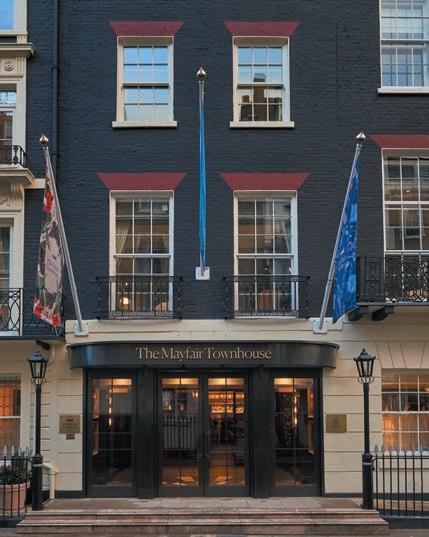
management company with an extensive portfolio of more than 115 hotels, with 23,000 bedrooms across the U.K., Europe, the U.S., and the Caribbean. It is an evolving collection, ranging from select service hotels in Europe’s most sought-after cities, to opulent, five-star assets, and breath-taking leisure resorts, many of which are in the world’s most exclusive locations, including Barcelona, Grand Cayman, Ibiza, London, Los Angeles, Mallorca, Monte Carlo, Turks and Caicos, Venice, and more.
Prior to my appointment, I held the role of Director of Member Services for the U.K. and Ireland for Relais & Châteaux, a global association of 580 individually owned and operated luxury hotels and restaurants, which included several of Iconic Luxury Hotels properties, including Chewton Glen, Cliveden House, and 11 Cadogan Gardens, and I have more than 22 years of experience in the luxury hotel sector in the U.K., Middle East, and Asia. I am commercially driven, energetic, and passionate about the hospitality sector, and my role is to support the growth of the Iconic brand and the Iconic portfolio.
Will you highlight The Mayfair Townhouse’s suite product and other offerings?
The suite product at The Mayfair Townhouse is surprising and unexpected like much of the property. When we began the complete renovation and refurbishment of the hotel, which comprises of 15 Georgian townhouses, 7 of which are listed, spanning two-thirds of Half Moon Street in the heart of London’s Mayfair, we made a very conscious decision to create a “townhouse” model that is without the constraints of a traditional hotel. We focused on giving our guests exactly what they wanted when choosing a city hotel, namely a brilliant location and well-designed and very comfortable rooms with exceptional basics, such as beds and bathrooms, that are noticeably better than the competitor set. We focused on delivering value for guests with luxury sustainable bathroom amenities, five-star towels and bed linens, and a generous complimentary
minibar offering. We focused on delivering an exceptional breakfast in The Club Room and an exceptional cocktail bar experience in The Dandy Bar. We focused on delivering exceptionally friendly and welcoming guest services, which are hard to find in London/city hotels, but we did not focus on creating ritzy suites that would be underutilized while our guests are out of the hotel enjoying this most distinguished neighborhood with its wealth of acclaimed restaurants, luxury shopping, art galleries, and museums. Out of a room stock of 172, we have created just 12 fabulous, individually designed suites, including Garden Suites with their private outside space and a Loft Penthouse suite with a rooftop terrace area and fabulous views.
How has The Mayfair Townhouse approached its food and beverage offering?
As previously mentioned, there is no traditional restaurant at The Mayfair Townhouse, as our neighborhood is brimming full of wonderful independent restaurants and bars and, rather than seeking to compete with these excellent establishments, our food and beverage offering complements them brilliantly. The Club Room was created to provide a generous breakfast offer and serve as an area for hotel guests and locals to meet, gather, and work in during the day, and then serves as an events venue for cocktail parties and private gatherings in the evening. But the heart of The Mayfair Townhouse is The Dandy Bar, aptly named, and inspired by the dandy characters of Mayfair’s past and present. A theatrical, subtlety lit, cozy atmosphere creates a place to see and be seen in the heart of Mayfair. Taking inspiration from the British Dandy actors of today, while serving the very best in classics, we tell imaginative stories through expressive cocktails. An extensive
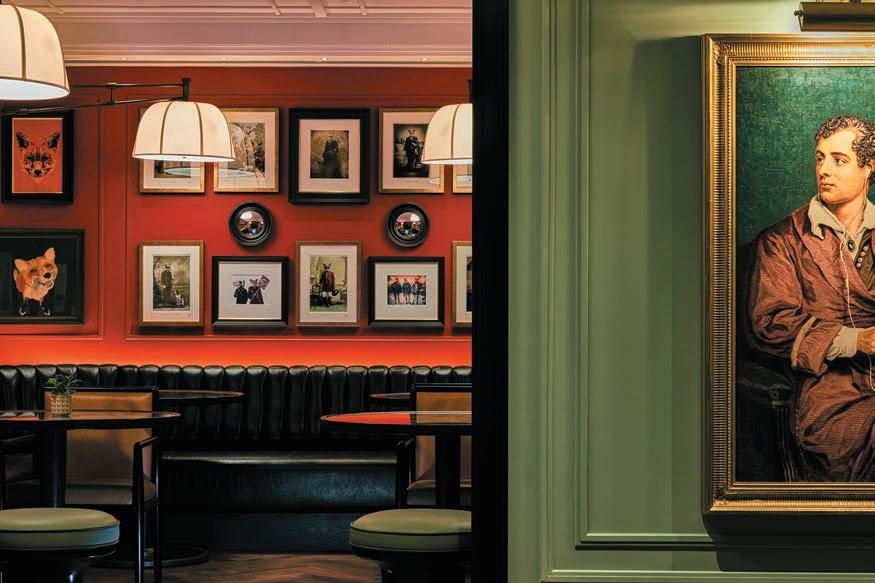
curated list of cocktails and spirits define the menu, and avant-garde takes on the classic Dandy cocktail once enjoyed by hedonists of the area which can be enjoyed throughout the day paired with smaller shareable plates.
Will you highlight The Mayfair Townhouse’s meeting and events capabilities?
The meeting and events spaces at The Mayfair Townhouse are located on the Lower Ground, the lowest floor of the Townhouse, home to The Club Room, The Den and Oscar’s Study. The latter are two small and larger meeting spaces and/or private dining rooms. The Club

Room is a modern, stylish hub for entertaining and the versatile spaces can be transformed to suit any occasion, for up to 100 people with bespoke menus, fabulous cocktails, and creative canapes, all in an engaging, warm atmosphere. The Den is a semi-private space that has the feeling of belonging to the residences’ owner. This versatile oasis can be used for intimate celebrations, private dining or simply a meeting of the minds gathering place. Oscar’s Study is a private meeting space or private dining room that is available for exclusive use.
How do you define a true luxury hotel experience today?
This really would depend on your reason for traveling and where in the world you find yourself and the reason for your journey. But perhaps from the perspective of Iconic Luxury Hotels, we would define a luxury hotel experience as one that provides intuitive service; hospitality that is provided seamlessly, almost without effort; excellent facilities; and the luxury of time to relax in surroundings where you feel at home and are cared for by our remarkable team who have the ability to help you create memories that will last a lifetime.
What advice do you offer to young people interested in working in the hospitality industry?
Naturally, I am totally biased about this, but the hospitality industry can provide amazing opportunity to experience some of the most spectacular and breathtaking destinations in the world. The industry offers career progression from entry level to senior management with a clear training pathway that can take young people to the top of the industry where they could shape the future of hospitality for the next generation. They will meet incredible mentors and inspirational hoteliers along the way, but none of this is possible without embracing the industry and appreciating that hospitality is a career opportunity of choice, and not just a job.•


Acqualina Resort & Residences (acqualinaresort.com) is where the charm of a Mediterranean villa meets elegance on the beach. The lush grounds feature red couches set on Seashore Paspalum grass and are dotted with signature red umbrellas. A seaside luxury haven located on 4.5 beachfront acres in pristine Sunny Isles Beach, Acqualina Resort features 98 impeccably appointed guest rooms and suites and 188 residences with breathtaking views of the Atlantic Ocean; world-class dining including Il Mulino New York, the alfresco Costa Grill, Ke-uH Japanese restaurant and Avra

Miami; three oceanfront swimming pools; spacious meeting rooms; and AcquaMarine, an innovative marine biology-based children’s program. A variety of lavish interior and exterior venues provide an ideal background for opulent weddings and memorable events. Acqualina Spa provides guests with an exquisite 20,000-square-foot, two-story tranquil sanctuary of excellence and relaxation.
Acqualina Resort & Residences’ Classic Suites redefine the art of intimate getaways. These expansive suites offer an idyllic sanctuary for couples and honeymooners seeking a blissful retreat. Choose from a selection of four meticulously designed Classic Suites, each thoughtfully crafted to foster moments of connection. A crescent-shaped oceanfront terrace soars above the turquoise water. Inside, discover a haven of opulence with a bedroom fitted with a king bed wrapped in luxurious linens and access to the terrace, and a separate living room with a dining table meant for intimate meals for two. Elevating the allure of the Classic Suites, the 20th floor suite has a recently reimagined bathroom, designed by Isabel Tragash of STA Architectural Group. Tragash intermingled luxury with lightness fitting of a resort vacation. Textured wallcoverings now envelop the walls, vanities are dressed in an exquisite white lacquer finish and crowned with marble sourced from Italy.
A family-owned and operated property, Acqualina is a recipient of the coveted Forbes Travel Guide Five Star Awards for both the hotel and spa and the AAA Five Diamond Award and a member of The Leading Hotels of the World.•

EDITORS’ NOTE Manuel Reman began his career at the Boston Consulting Group as a Strategy Consultant before making his passion a profession by joining Moët Hennessy over 18 years ago. Reman was named President of the House of Krug in 2022 at the age of 44. He began at Moët & Chandon in 2004 as Head of Special Projects. From there, he moved to Industrial & Grape Strategy in 2007 before joining the LVMH Holding’s Financial Controlling department in 2010. Two years later, he returned to Champagne and began working in Production for Moët & Chandon, Dom Pérignon, Mercier, and Ruinart where he managed a team of 450 people and oversaw all operations from bottling to labeling. Reman’s journey then led him to Barcelona, where he served as Managing Director of Moët Hennessy Iberia for the next three years, looking after the Spanish and Portuguese sales and marketing teams. In 2019, he returned to France to become President of Moët Hennessy Champagne Services (MHCS), the entity mutualizing quality control, technical services, finance, R&D and supply chain for all Moët Hennessy Champagne Maisons (Moët & Chandon, Krug, Ruinart, Dom Pérignon, Mercier and Veuve Clicquot). He also worked with growers and coordinated groupwide grape purchasing strategies to ensure consistency between the Maisons. Since 2020, he is the representative of the LVMH Champagne Maisons at the Comité Interprofessionnel du Vin de Champagne (CIVC) where he serves not only the group, but the Appellation as a whole. In April 2022, Reman became President of Krug, where he is focused on ensuring the House perpetuates the dream of its founder with a new Édition of Krug Grande Cuvée each year. In his twofold role with the CIVC, his priorities also revolve around sustainable viticulture and protecting biodiversity in the Champagne region. Reman is a graduate of École Polytechnique and earned an MS degree from the International Organization of Vine and Wine.

could offer, every single year, regardless of annual variations in climate. He went beyond all known boundaries of champagne creation, founding a House where all champagnes would be of the same level of distinction. The House of Krug (krug.com) was founded in November 1843, and the first Krug harvest took place in 1844, when Joseph Krug composed the first realization of his dream, and Krug Grande Cuvée was born. The first re-creation of Krug Grande Cuvée – the first Édition – was therefore composed around the harvest of 1845. Every year a new creation, a sole blend, a unique bottling –thus a new Édition of Krug Grande Cuvée – is created. The Édition number is the number of times this act of creation has happened, which also corresponds to the number of years in the House of Krug the founder’s dream has been re-created. Once crafted, the bottle enters Krug’s cellars to rest for around seven years. Today, the House offers six champagnes, all of the same undisputed quality, each illustrating a different expression of nature.
Will you discuss Krug’s heritage and what have been the keys to the leadership of Krug over the years?
Krug is 180 years old, and it has been one of the most renowned houses in Champagne from early on. When Joseph Krug founded Krug in 1843, he had a vision to create something that did not exist. This vision has continued throughout Krug’s history, and I think that this consistency is one of the things that has made Krug a leader. It started with a dream and each generation has worked to fulfill that dream.
Champagne had been considered to be a product that is experienced for a celebration, but more and more consumers are viewing champagne as not only a celebration product, but also as a wine that offers tasting emotions. There is a diverse range of champagne in the market and each time a consumer experiences champagne, it is a discovery. Champagne is to be paired with food and this is becoming better understood. It is a constant journey with the consumer, and while many times this journey starts with having champagne as part of a celebration, it
HOUSE BRIEF When Joseph Krug established the Champagne House bearing his name in 1843, driven by his understanding that the true essence of champagne is pleasure itself, his dream was to craft the very best champagne he


progresses as a drink to enjoy with meat or fish. It is our responsibility as a leader in the industry to continue to build this awareness with consumers.
How does champagne creation take a music approach at the House of Krug?
Champagne is about emotion, similar to how music is about emotion. Krug is always looking for ways to enhance the tasting
experience and there is increasing research indicating that hearing – and the music we listen to – has an impact on how we perceive taste. Over the years, Krug has partnered with musicians across various genres to craft pairings that reflect the compositions and the sensory experience of the champagne. It is exciting to have musicians come to the House of Krug to experience the champagnes, and
then to return to their studios and create music that represents the emotions that they felt during the tasting.
How has Krug balanced the use of technology with the hand touch and craftsmanship it has been known for over the years?
We love technology at Krug, even though we are one of the most traditional houses. We have been implementing technology while at the same time making sure it does not hamper our craft. We recently opened a new facility that fully respects the tradition of the craft, but also uses technology to make it a safer place for our workers.
We are also very committed to sustainability since we see it every day in the vineyards. Krug is focused on reducing our carbon footprint as well as reducing the weight of our bottle and making all of our packaging 100 percent recyclable. We transport every bottle by boat or train or small truck, but nothing by plane. We have also turned our vineyard to be organic and in 2024 it will be the first harvest with organic grapes.
We all feel so fortunate to be working at Krug and it is our responsibility to preserve the brand for generations to come.
Did you know at an early age that you wanted to pursue a career in the wine industry?
I started as a strategy consultant, and after a few weeks I realized it was a mistake. While the work was interesting, I was not passionate about it. I was 23 years old at the time and I knew I had a passion for wine as I was spending weekends in vineyards and learning about the industry, so I decided to switch my career. It turned out to be a great choice as I have been able to follow my passion.
How do you approach your role leading the House of Krug?
When I was appointed CEO, I felt the responsibility of the role leading a brand that had such a strong history and heritage. Krug has gone through the good times and difficult times the world has experienced over the years, and every generation has a responsibility to take care of the House of Krug so it will continue to fulfill its mission. It takes teamwork and we have a great team at Krug. I see myself as a conductor who makes sure everyone is on the same page and working together, and then to support our team in any way necessary to achieve our goals.
With all that the House of Krug has achieved, how important is it for the team to take moments to reflect and celebrate the wins?
Krug’s mission is to help people experience emotion and joy, so we should apply this to ourselves as well. We take every opportunity to celebrate as a team and with our families – celebration is key. We need to do our work seriously, but not take ourselves too seriously. We are here to make people happier, and that is something to celebrate.•
President, Shaw-Ross International
EDITORS’ NOTE Scott Jove joined Shaw-Ross as Manager, Commercial Strategy, in 2015, and was named VP Sales and Marketing in 2017, bringing a fresh perspective to the commercial team at Shaw-Ross. Before joining Shaw-Ross, Jove spent time in the financial services industry with Grant Thornton and in management consulting with AT Kearney. He gained his alcohol beverage industry experience working at Southern Wine & Spirits of America. A licensed attorney in the state of Florida, Jove brings a unique skill set to Shaw-Ross, which enabled him to take a major role in the recent restructuring of the company. Jove holds a BA from Duke University and both a JD and an MBA from the University of Miami.

Scott Jove

COMPANY BRIEF Founded in 1968 as a boutique wine and spirit importer representing a handful of brands, Shaw-Ross (shawross.com) has grown into one of the U.S.’ leading importers representing nearly 40 suppliers from around the world whose brands enjoy full national distribution through a network of outstanding wholesalers. By concentrating on building a balanced portfolio of wine and spirits that cover the spectrum from small boutique gems to powerhouse volume brands, ShawRoss is able to offer a wide range of interesting and unique products that are relevant in today’s ever-changing environment.
How do you define Shaw-Ross’ mission and purpose?
Shaw-Ross is a family-owned importer of alcohol beverages proudly representing a portfolio of wine, spirits, and sake suppliers from around the world. We offer a full range of services including commercial, operational, and compliance while integrating our brands into our national network of distributor partners. In the three-tier system that regulates alcohol beverages in America, we have the scale to meaningfully call on the nation’s largest distributors on behalf of our independent supplier partners. What excited you about the opportunity to lead Shaw-Ross and made you feel it was the right fit?
I was excited about the opportunity to lead Shaw-Ross into the future, building on an incredible legacy and culture that Bruce Hunter instilled over the past 25-plus years. Being part of the team that incubated and accelerated Whispering Angel in the U.S. market up until it was acquired by Moët Hennessey in 2020, I’ve had an incredible experience with the company. Shaw-Ross also imports several category leading brands such as Gekkeikan sake and Reál Sangria, which is another very exciting aspect of the opportunity. It’s exciting to take over a portfolio of brands that is already thriving and look forward to continuing that growth well into the future. Will you discuss your focus on the premiumization of the Shaw-Ross portfolio?
Our portfolio continues to premiumize with the addition of high-end wines and super-premium spirits. Over the past year, we have added the rights to Seña and the Viñedo Familia Chadwick on the wine side and pick up


Hemingway Rye, Papas Pilar Rum, and Crystal Head Vodka. As the consumer continues to lean into higher-end products, we at Shaw-Ross adjust our focus to fit the market needs and trends.
Will you highlight Shaw-Ross’ expansion of the Japanese category and prioritization of legacy brands such as La Scolca, Frescobaldi, and Seña?
We are the proud category leading importer of sake in America, representing over 50 percent of the market share according to Nielsen. Gekkeikan sake is the category leading brand in the U.S., and we are doing over half-a-million cases per year. We also bought Tyku from Diageo last year, which is well known for its distinct packaging, and we are excited to relaunch the brand at the beginning of 2025. Beyond sake, as Japanese spirits continue to gain popularity with the U.S. consumer, we are excited to have recently added iichiko Shochu to our portfolio. Iichiko sells over 7 million cases in Japan, and we are excited to build the Japanese shochu category in America with a strong focus on mixology and bartender engagement.
As a family-owned importer, we are proud to represent family-owned wineries and find that our values usually align. With that in mind, we are focused on providing a full-service route to market for overseas family-owned wine producers including Frescobaldi, La Scolca, Marques de Riscal, Sartori di Verona, and Rapaura Springs, among others.
What have been the keys to the strength of Shaw-Ross and how do you describe the Shaw-Ross difference?
The key to success at Shaw-Ross is our people and the family culture. We take pride in creating a collaborative work environment, with an open-door policy at the office ensuring that everybody has a voice and feels comfortable enough to be heard. We have an incredible family here at Shaw-Ross, with 20-plus year veterans of the company as well as newly hired employees who bring a new energy and perspective to the company as we continue to evolve.
Did you know at an early age that you had a passion to work in the wine and spirits industry?
I have always known that I wanted to work in the wine and spirits industry. My grandfather founded Shaw-Ross back in 1968 and growing up with him as my mentor, I always wanted to be like and learn from him. After spending many years working in the industry and learning what areas resonated most with me, I found my passion in representing brands and bringing them to market. I’m proud to be the first family member to work at Shaw-Ross, and I strive every day to continue my family legacy.
What are your priorities for Shaw-Ross as you look to the future?
Looking to the future, Shaw-Ross’ major priorities are to remain focused on working with family-owned prestigious wine suppliers from around the world while expanding our premium craft spirit portfolio into new and exciting categories. As always, our priority remains our people and to that end reinvesting our time and resources into the Shaw-Ross Family will always be a core value of the company.•

EDITORS’ NOTE Third generation Dominga Cotarella is the Chief Executive Officer of Famiglia Cotarella. She was born in Orvieto in 1974 to Riccardo and Maria Teresa Cotarella. She first became involved in her family’s wine business as a teenager and earned her degree in agronomy from the University of Tuscia (UNITUS). After graduation, she worked in Antinori’s marketing department for several years and then returned to Falesco in 2007 to lead the winery’s sales and marketing. In 2016, she and her cousins, Marta and Enrica, who she affectionately calls her “sisters,” officially took control of the family business and rebranded it as Famiglia Cotarella. In 2017, the three sisters created Intrecci – an advanced training school that educates its students on premium food and wine service, creating hospitality professionals that earn top positions worldwide post-graduation. The school collaborates with the Michelin Guide, and Forbes magazine named Dominga Cotarella as a top 15 Italian CEO in 2020 for her contributions to the innovation and expansion of her family’s companies while maintaining its deeply rooted traditions.

from “Falesco” to “Famiglia Cotarella.” Since then, we have been working to prove the power of familial and feminine leadership, while also giving back to the community through education initiatives and wine marketing leadership.
Will you provide an overview of Famiglia Cotarella’s estate and wines?
In the Tuscia Region (spanning Tuscany, Umbria, Lazio), we have Cotarella’s flagship Umbrian estate, Montecchio, which produces Metodo Classico Brut Rosé Vino Spumante di Qualità, Trentanni Rosso Lazio IGP, Marciliano Rosso Umbria IGP, and RC2 Sagrantino di Montefalco DOCG.
Cotarella’s original production facility is in Montefiascone, Lazio, and produces Sodale Merlot Lazio IGP, Ferentano Bianco Lazio IGP, Sorélle Rosé Lazio IGP, Metodo Classico Brut Vino Spumante di Qualità, Soente Viognier Lazio IGP, Montiano Rosso Lazio IGP, Ogrà Rosso Lazio IGP, Pomele Aleatico Lazio IGP, Passirò Passito Bianco IGP, and Poggio dei Gelsi Est! Est!! Est!!! di Montefiascone DOP.
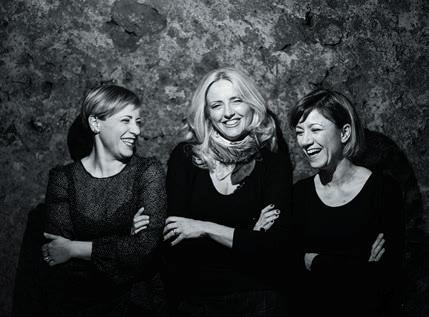
to the Lazio region, where this wine is born. Known as Merlot experts, Sodale represents the Cotarella family’s dedication to Merlot from Lazio. The color is intense red with purple reflections. The smell comes with notes of red fruit and sweet spices that blend in a perfect balance with vanilla wood notes. The taste is round, harmonious, and pleasant, with good persistence and sweet tannins.
WINERY BRIEF Embracing three generations of winemaking, Famiglia Cotarella (famiglia cotarella.it) presents a diverse range of wines, from white varietals native to Umbria and Lazio, to exceptional expressions of Merlot. Led by acclaimed Italian winemakers Riccardo and Renzo Cotarella, the Cotarella daughters, Dominga, Marta, and Enrica, continue to balance family tradition and innovation in each of their projects located throughout the Tuscia Region.
Will you discuss the history of Famiglia Cotarella?
Famiglia Cotarella’s history begins in 1920, when brothers Antonio and Domenico Cotarella grew grapes in Monterubiaglio, Umbria. In 1979, the second generation of the Cotarella family, my uncle, Renzo, and my father, Riccardo, founded Falesco, a wine company in Montefiascone, Lazio. They wished to recover old vine varieties in this area, successfully doing so over the course of the following decades. In 2016, Renzo’s daughters, Enrica and Marta, and I took over the family business and rebranded it
Cotarella’s newest Tuscan Estate, Montalcino, produces Brunello di Montalcino, Brunello di Montalcino DOCG, and Brunello di Montalcino Riserva.
A few additional details about Sodale Merlot Lazio IGP: In ancient Rome, “Sodale” meant “member of a partnership.” The same concept of fraternity is common to all generations of the Cotarella family, which is strongly linked
With our Ferentano Bianco Lazio IGP, the name Ferentano derives from the archaeological site of Ferento, an ancient Etruscan town located near the vineyards where the Roscetto grapes, which are used for the production of this wine, are grown. On the nose, it presents a rich range of olfactory sensations going from banana to pineapple, from vegetal to vanilla scents. The taste is assertive, rich, soft, and full with an excellent long lingering finish.

What have been the keys to Famiglia Cotarella’s growth and industry leadership?
The Cotarella family has been a leader in the Italian wine industry, realizing its strength in its second-generation winemakers, Riccardo and Renzo Cotarella, who each have extensive winemaking expertise and became well-known for recovering native regional varieties and experimenting with cuttings from France and Italy.
The third generation of the business –Enrica, Marta, and myself – came to the realization that the winery and the brand could become even stronger by emphasizing the deep and powerful bond we have with each other and with the territory, hence the decision to change the winery name from Falesco to Famiglia Cotarella, underlining the familial nature of the wineries in Central Italy.
As Cotarella “sisters,” we strive to understand the wine industry in its entirety, looking for ways to streamline efficiency in its distribution and understand wine market trends. In 2017, these desires prompted me to head the opening of a highly prestigious hospitality school named Intrecci, which allows us to engage the local community and to make a contribution to the on-premise side of the hospitality industry. I am also the President of Terranostra, the Italian agriturismo association promoted by Coldiretti, Italy’s main agricultural organization.
My focus on efficiency and community have reaped rewards, as I was named Forbes’ Italian CEO of the Year for Wine in 2020.
Will you highlight Famiglia Cotarella’s international expansion?
For international expansion, Famiglia Cotarella focuses on historical markets such as the U.S., Germany, and Japan, as these markets display a predisposed affinity for Italian wines. The U.S. is of particular interest for Famiglia Cotarella as it represents so many exciting opportunities for growth, although Germany’s competitive market and the Swiss’ love for up-scale wine also appeal to Cotarella. We recognize the importance of building strong professional relationships in

these markets with importers and distributors, as people are the key to success in the wine industry.
For example, our mission to bring unknown varietals to new markets has been a success due to planning and interpersonal relationships. We look to present the wines to specialized accounts and to professionals who are looking for unique, indigenous varieties to share with their customers. We hope to expand our winery’s presence in on-trade accounts over the next few years through a combination of targeted tastings and market visits.
What has made the working relationship between you and your two “sisters” work so well?
The Cotarella “sisters” have been by each other’s sides since we were young. In fact, our parents and uncles were always together, and therefore our cousins have always been “sisters.” Being so close as “sisters,” we are

able to identify each other’s talents and support one another. For example, my previous leadership roles have helped me to learn how to be a strong leader and how to manage my team. Learning and growing the business is rewarding and that much more meaningful when done with one’s family.
Where did you develop your passion to foster growth and interest in winemaking and hospitality among the next generation?
Our family firmly believes that on-premise business is the reason Famiglia Cotarella is able to exist; each label in the winery can be tied to a restaurant opportunity. By creating Intrecci, we were aiming to fill a gap in the industry and to remedy it by educating committed professionals who are willing to work hard in a challenging environment. Students of Intrecci follow a 12-month preparation course. Six months are spent at a “mini-campus” where students attend theoretical lectures on hospitality, wine knowledge, client psychology, and basic restaurant management. The next six months are spent in a practical restaurant environment.
For Cotarella, this project pays off in dividends. Not only are we excited to contribute to young people’s growth and to foment a passion for hospitality among them, but we are also excited to see the lifelong relationships students create as a result of their time on campus.
Why do you think Intrecci has been such a successful project?
Intrecci has been so successful because there is high demand for qualified hospitality professionals. A resounding 100 percent of Intrecci’s students are employed within six months of program completion. In addition, school partnerships with the Michelin Guide, for example, have allowed the program to gain credibility. Graduates also become natural ambassadors for the program, as they are the ones on the front line displaying what an education at Intrecci means.
In the future, we hope to construct an on-site “mini-program” for restaurant workers who are already in the industry.•
EDITORS’ NOTE Federico Ceretto, Chief Executive Officer and Sales Director at Ceretto, is deeply committed to his family and its history. He often visits the 60 countries in which Ceretto wines are represented and works to expose new markets to his family’s wines. He is passionate about wine and, as his father and uncle taught him, he continuously looks to learn more about the Langhe’s changing landscape and to stay in-line, and even ahead, of the times, both in the vineyard and in the global wine market. He also promotes his family’s restaurants in Alba: La Piola (a traditional Piemontese trattoria) and Piazza Duomo (a three Michelin-star experience where every meal features a unique array of vegetables and herbs grown in the chef’s organic gardens). In addition to a passion for wine and food, he and his family also provide singular opportunities to both little and well-known contemporary artists who the winery commissions to craft sculptures, paint portraits, and host exhibitions located in the vineyards, enabling the natural and contemporary artistic forms to rest close and draw comparison.

to the iconic Monsordo Estate. We also hoped to improve the recognition of Arneis, which is also located in Alba, on the world stage. Such extensive planning and research were unheard of at the time and marked the beginning of the Ceretto family’s position as a leader in the Langhe and Roero. Bruno and Marcello were dubbed the Barolo Brothers by Wine Spectator in 1982 for their work, as they were among the first to promote the idea of a cru model in Italy. For 90 years and three generations, our family has established itself as a Piedmont stronghold, overseeing 540 acres of estate-grown vineyards throughout four properties. Today, we represent the third generation of the Ceretto family engaged with the region and its culture, notably overseeing a hazelnut/ nougat factory and two restaurants (La Piola and the three-Michelin Star restaurant Piazza Duomo), championing sustainability using new and innovative technologies, and patronizing contemporary art in our winery’s vineyards.
Will you provide an overview of Ceretto winery and wines?
Ceretto has four main properties: Bricco Rocche in Castiglione Falletto (DOCG Barolo) produces Barolo DOCG, Barolo Rocche di Castiglione DOCG, Barolo Bricco Rocche DOCG, Barolo Brunate DOCG, Barolo Bussia DOCG, Barolo Prapò DOCG, and Barolo Cannubi San Lorenzo DOCG; Bricco Asili in Barbaresco (DOCG Barbaresco) produces Barbaresco Asili DOCG, Barbaresco Bernadot DOCG, Barbaresco Gallina DOCG; Monsordo Bernardina in Alba produces Blangé Langhe Arneis DOC, Langhe Monsordo Rosso DOC, Dolcetto d’Alba Rossana DOC, Barbera d’Alba Piana DOC, Nebbiolo d’Alba Bernardina DOC, Barbaresco DOCG, Barolo DOCG, and Barolo Chinato; and I Vignaioli di Santo Stefano in Santo Stefano Belbo (DOCG Moscato d’Asti) produces Moscato D’Asti DOCG, and Asti Spumante DOCG.
Barolo DOCG is Ceretto’s flagship Barolo. This wine is a blend of the hillside vines grown in Tortonian soils surrounding La Morra and Barolo and of a more austere and masculine side coming
WINERY BRIEF When the UNESCO organization added the vineyard landscape of the LangheRoero to its list of World Heritage Sites in 2014, it was confirmation the Ceretto family hails from a truly enviable location. Founding their first winery (ceretto.com) in the 1930s, the land Bruno and Marcello Ceretto have handed down to their children has been masterfully preserved. The vineyards now stand as a model to the eyes of the world. The same can be said of Cerreto’s pursuit of organic farming and environmental sustainability in the vineyards. The Ceretto family embodies the ethos that agriculture can and must be respectful of its environment.
Will you discuss the history of Ceretto?
The story of the Ceretto winemaking family begins in Alba in the 1930s when Riccardo Ceretto founded the Ceretto Casa Vinicola. The winery’s turning point came in the 1960s when Riccardo’s sons, Bruno and Marcello, started researching, selecting, and acquiring vineyards and land in the best production areas of the Barolo and Barbaresco appellations. Our family’s first winery was eventually built in Alba and was then moved

from vines grown in the typical Helvetian soil found in Serralunga d’Alba. It is an exemplary Barolo, with rich notes of ripe strawberry, black licorice, hints of flint, tar, wet earth, and soft notes of sweet spice.
Blangé Langhe Arneis DOC comes from a native Piedmontese varietal which is grown in a highly distinctive region known as the Roero. This unique Arneis wine combines organic practices in the vineyard with a modern style of winemaking. Fruit-forward with enjoyable minerality, this palate-pleasing wine contains alluring aromas coupled with a balanced freshness on the palate. Notes of anise seed, almond, peach, and fresh pear combine to make this wine enjoyable on its own or when paired with a variety of dishes. Our family is working to improve Arneis’ recognition on the world stage.

I Vignaioli di Santo Stefano Moscato D’Asti DOCG was founded by Bruno and Marcello Ceretto to commemorate their father and to elevate the image of Moscato d’Asti. This lively and aromatic wine is pleasing on the nose with aromas of yellow peaches, apricots, and white flowers. The bubbles on the palate are refined and help elevate the subtle aromas and flavors found on the nose and palate. At once fragrant and alluring, this is a sweet wine that has an excellent balance between sugar and acidity.
What have been the keys to Ceretto’s growth and leadership?
The founding and early evolution of the Ceretto winery is a testament to our family’s vision which is valid for both today and the future. The thought behind the winery’s establishment was innovative at the time, given our founders’ focus on terroir. Today, our family willingly shares its findings with fellow winemakers as the region works together to battle climate change and to engage in organic practices.
When we look back, we are amazed by how much the Ceretto brand has been able to grow, and how representative the brand has become of

Langhe and Roero. We have always worked with a deep respect for our origin story, our production, and our land. The original intention was not to grow in dimension and production; however, those of us in the third generation of the Ceretto family have always recognized that our surroundings are what make us unique, and we aim to preserve the land and its heritage as best we can, and to represent that land on the world stage by taking advantage of the best it has to offer. By having the utmost respect for the soil, native grape varieties, and topicality of place, we have written our testament to the future. Ours is a company that wholly believes that wine, food, tradition, and culture come together to offer Ceretto drinkers worldwide a holistic understanding of the region.
How important is it for Ceretto to be committed to sustainability?
The goal of all of Ceretto’s projects – from production in the family’s vineyards to our vision for our restaurants – is to preserve Langhe’s cultural heritage and to promote a healthier future for the region. Inspired by the innovative ideas of our fathers, our generation chooses to employ innovative practices to be even more respectful and environmentally conscious in our agricultural approach. This includes using non-invasive cellar techniques that allow Ceretto’s much-acclaimed estates to speak for themselves. In addition, over the past 20 years we have phased-out the use of insecticides and fertilizers, opting instead for cover cropping. Our sincere commitment to a sustainable future is also reflected in the fact that all estate fruit is farmed organically and biodynamically.
All Ceretto comes from the winery’s guiding principle: our operations and choices are founded on the values of respect and sustainability, and we intend to take this message worldwide.
Will you highlight your family’s restaurants in Alba?
We look to harness the bounty of our land to its fullest potential and therefore, we now have a hazelnut candy/nougat factory called Relanghe and two restaurants – La Piola and Piazza Duomo, the latter which is the recipient of three Michelin stars. La Piola, located in Alba’s town center to encourage conviviality and togetherness, is a “trattoria” serving traditional Piedmontese dishes and regional wines. Piazza Duomo came about when the dream of young chef, Enrico Crippa, became a reality upon his collaboration with us in establishing a gastronomic landmark in the Langhe area. The partnership was consummated
at first bite, and Piazza Duomo has become one of the most notable restaurants for food lovers from all over the world. The renowned restaurant boldly stands in the Piazza del Duomo and greets its diners with famed artist Francesco Clemente’s pink frescoed walls and old-world charm.
Cerettos’ new generation – Alessandro, Lisa, Roberta, and myself – continue to take the winery to the next level and put great effort into employing innovative agricultural practices and expanding upon Ceretto’s initial interest in wine. Gastronomy, food production, and cultural preservation have been incorporated into our remit as can be seen in the winery’s restaurants, which are situated and decorated to promote the region’s history and cuisine. These restaurants also look to the future with innovative interpretations of some of the region’s traditional dishes, as especially seen in Piazza Duomo.
Will you discuss your efforts to provide opportunities for both little- and well-known contemporary artists to develop and how the winery supports these artists?
Art and architecture are very important to our family which believes that art allows us to be ambassadors of the Langhe region through expressions beyond those of the land. We were exposed to contemporary art by British artist, David Tremlett, and American, Sol LeWitt, and now the family wholeheartedly endorses a close relationship between art and wine. Ceretto welcomes contemporary artists, both famous and little-known, with whom we nurture a personal relationship based on mutual esteem and allow them to leave their mark on our wineries and restaurants through sculptures, paintings, and exhibitions. The artists’ expressions must present a feeling and a deep understanding of the spirit of the Ceretto winery, and the winery’s mission to add beauty to its property and territory. The promotion of art in our vineyards, from the Barolo Chapel in Brunate, the fresco by Francesco Clemente that welcomes guests to the Piazza Duomo restaurant, to La Speranza and Happy Dream by Kiki Smith at La Piola, the recently installed Love sculpture by Francesco Clemente at Monsordo Estate, the Protect Me Everywhere sculpture at Bricco Rocche Winery (a gate made by Valerio Berruti framing the vineyard through a couple’s embrace), stand in direct alignment with Ceretto’s approach in the cellar – a respect for the environment as the winery’s art forms a bond between architecture and landscape.•
EDITORS’ NOTE Kristina Kelley comes to the Washington State Wine Commission after spending more than 25 years with E. & J. Gallo Winery in roles in sales, premium marketing, and most recently as Senior Director of Public Relations and Corporate Communications. She retired from her full-time position in 2021 to relocate back home to Washington, but was retained as a strategic marketing communications consultant across a luxury portfolio of wine. Kelley has strong ties to the Pacific Northwest, having worked in Washington two different times over the course of her career and owning a vineyard for 18+ years in Oregon’s Dundee Hills. She is a Certified Specialist of Wine (CSW) of the Society of Wine Educators and has a degree from Virginia Commonwealth University.

and am currently on the board of the Auction of Washington Wines.
Will you highlight the history of Washington State Wine Commission and how the Commission has evolved?
Established in 1987, the WSWC emerged during a pivotal time in Washington’s wine industry, as our state began to garner recognition for its exceptional wines and unique terroir. From our inception, the WSWC has been dedicated to promoting and supporting Washington wines on both domestic and international fronts. Initially focused on marketing and education, we worked tirelessly to raise awareness of Washington’s diverse wine offerings and establish our state as a premier wine-producing region.
grapes, Sustainable WA. More than 20 years in the making, Sustainable WA is a third-party certification that ensures the industry will be environmentally sound, socially equitable, and economically viable for generations to come. Now in 2024, as part of the updated Sustainable WA Standard, vineyards in the program have the option of obtaining dual certification for both Sustainable WA and Salmon-Safe, provided all standards are met.
ORGANIZATION BRIEF Washington State Wine Commission (WSWC) represents every licensed winery and wine grape grower in Washington State. Guided by an appointed board, the mission of the WSWC (washingtonwine.org) is to drive growth of Washington wine through marketing, communications, and viticulture and enology research. Funded almost entirely by the industry through assessments based on grape and wine sales, WSWC is a state government agency, established by the legislature in 1987.
Will you discuss your career journey?
As the Executive Director of the Washington State Wine Commission, I’m privileged to lead a dedicated team responsible for the marketing, communications, special events, and branding of Washington wine and its regions, and viticulture and enology research. My journey in the wine industry spans my entire career, offering me a comprehensive understanding of the many facets of the industry. Before the Wine Commission, I spent more than 25 years with E. & J. Gallo Winery in sales, leadership roles in premium and luxury marketing, public relations, and corporate communications, as well as five years in sales in the Wine Division of Brown-Forman. In addition to my professional endeavors, my husband and I owned a vineyard for over 18 years in Oregon’s Dundee Hills, further deepening my connection to the industry. I hold the designation of Certified Specialist of Wine, have served as a Board Member of Women of the Vine & Spirits,
Our journey didn’t stop there – over the years, the WSWC has evolved in response to the changing needs of this dynamic industry. One significant aspect of this evolution has been sustainability. In 2022, we worked with our industry partners to help launch Washington’s first statewide sustainability certification for wine
Another aspect of evolution: our increased investment in viticulture and enology research. Recognizing the importance of scientific innovation and sustainability, we partner with Washington State University researchers to spearhead important initiatives aimed at improving grape growing and winemaking practices, enhancing quality and reducing environmental impact. The WSWC has been a steadfast advocate for Washington’s wineries and growers through collaboration with industry stakeholders and government agencies who shape policies and regulations that support the growth and prosperity of our industry.
We’ve also embraced the role of promoting wine tourism and enhancing the visitor experience
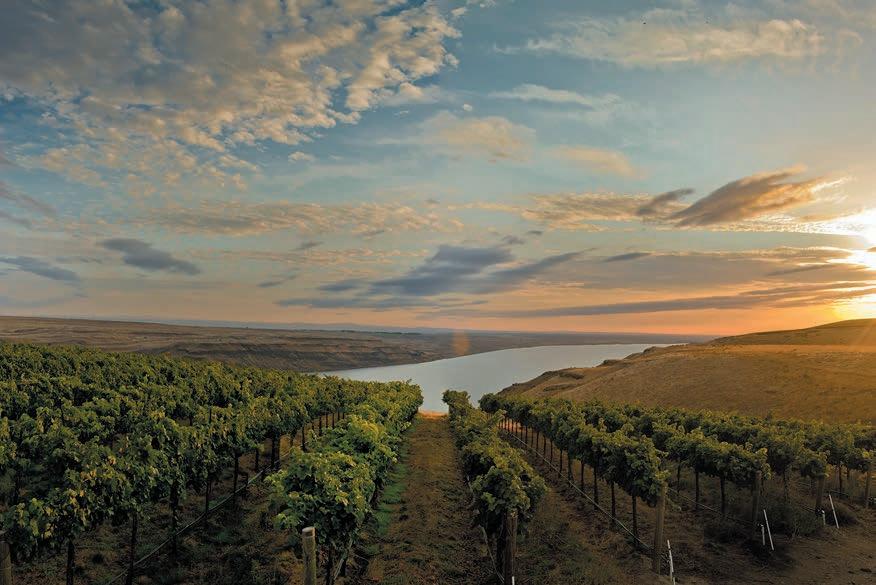
at Washington wineries and tasting rooms to further showcase the beauty and diversity of our wine region and attract visitors from near and far.
How do you define WSWC’s mission and purpose?
At the heart of WSWC’s vision lies a simple yet powerful aspiration: to see Washington wine on every table. The WSWC stands as a dedicated state agency, representing the collective efforts of Washington’s wineries and growers. Our mission is clear: to foster the growth of Washington State wine through comprehensive initiatives in marketing, communications, and cutting-edge viticulture, and enology research. Rooted in a foundation of passion, trust, and collaboration, Washington State wine embodies the spirit of discovery, innovation, and curiosity. We invite all to explore the rich tapestry of Washington State’s wine offerings, reflecting our commitment to diversity and quality.
What do you see as the strengths of Washington State as a wine region?
First, our diversity and unique terroir sets us apart. From the volcanic soils of the Columbia Valley to the cool, maritime-influenced vineyards of the Puget Sound, Washington offers a remarkable range of microclimates and soil types. While Cabernet Sauvignon is our leading grape variety, this range allows us to grow a wide array of grape varieties (80+) with exceptional quality and complexity.

Also, our climate is a winemaker’s dream. With long, sunny days and cool nights during the growing season, we enjoy the perfect balance of ripeness and acidity in our grapes. This results in wines that are both ripe and vibrant, with intense flavors and lively acidity – a hallmark of Washington State wines. This ideal climate leaves room for experimentation whether it’s with new grape varieties or pushing the boundaries of winemaking techniques – our winemakers are constantly striving to elevate the quality and diversity of Washington State wines.

Another strength lies in our commitment to sustainable and innovative winemaking practices. Many of our wineries are leaders in sustainability, implementing practices such as organic farming, water conservation, and renewable energy. This dedication not only preserves our environment, but also enhances the quality and purity of our wines.
Also, our region benefits from a supportive and enthusiastic wine community. From wine enthusiasts and sommeliers to distributors and retailers, there’s a genuine excitement surrounding Washington State wines. This support not only fuels our growth, but also fosters a sense of camaraderie and pride among everyone involved in the industry.
Will you provide an overview of WSWC’s focus on viticulture and enology research?
The viticulture and enology research program at Washington State University is a cornerstone of the state’s wine industry, representing the collaboration between wine grape growers, wineries, and researchers. Supported by funding from all grape growers and vintners in the state, this program stands out as one of the few in the world driven by the collective vision and needs of the wine community. With a clear focus on industry guidance and accessibility, the research conducted here serves as a vital resource for all – regardless of size. By harnessing the combined power of resources, expertise, and community engagement, Washington’s wine research program is dedicated to advancing the quality and sustainability of the region’s viticulture and enology practices. At the heart of this endeavor lies the Ste. Michelle Wine Estates WSU Wine Science Center, a world-class facility dedicated to providing data-driven tools and innovative solutions to support Washington’s pursuit of premium grape growing and winemaking.
Through these efforts and a deep commitment, the program strives to empower Washington’s wine industry to continue producing some of the finest wines in the world.
What attracted you to a career in the wine industry and what has made the industry so special for you?
I was drawn to the wine industry by its unique blend of art, science, and culture. My love for different cultures started in my childhood when my family traveled extensively overseas. This early exposure to various flavors and cultures laid the foundation for a lifelong appreciation of food, wine, and the surrounding cultural elements that make them so engaging.
What truly makes the wine industry unique is its sense of community. I have deep roots in the Pacific Northwest, and Washington State is my home. The Northwest is blessed with diverse agricultural products, with wine and food at the forefront. There’s something gratifying about working in a community that focuses on the land, cultivating grapes, and crafting wines that capture a sense of place. Something we lose sight of is that, behind every single bottle of Washington wine, it is not just one person, but a community.
Washington State wine abides by the saying: “a rising tide floats all boats.” That’s because Washington State wine is a collaborative pursuit from grapes to glass. There is plenty of personality, character, and expression in Washington State wine. Plus, there’s always something new to learn – whether it’s about winemaking techniques, grape varieties, or emerging trends in the market. Overall, the wine industry has offered me a fulfilling career where I can combine my love of culture and wine with my appreciation for craftsmanship and connection. It’s an industry that continuously inspires and challenges me, and I feel fortunate to be a part of it.•

At Nemacolin (nemacolin.com), elevate your golf game by taking in the stunning vistas of the rolling fairways, enjoying a round at either of Nemacolin’s two on-property courses designed by the renowned Pete Dye, and perfecting your swing at Nemacolin’s own golf aAcademy.
Mystic Rock, the dream of Nemacolin’s founder, Joseph Hardy, brought to life by prominent designer Pete Dye, is one of the country’s finest golf courses. Perched atop the Pennsylvania Allegheny Mountains, the 7,526-yard Mystic Rock spans acres of the scenic Laurel Highlands, offering players championship-level golf in a spectacular


setting. Nemacolin and Golf Architect Tim Liddy partnered with Pete Dye – before Dye’s passing – with designs for an impressive and extensive bunker renovation to Mystic Rock, which was completed in 2021. The transformation to upgrade the bunkers, playing surfaces, and tee boxes solidifies Mystic Rock as one of the premier mountain courses in the country.
Nemacolin’s second Pete Dye designed course, Shepherd’s Rock, opened in 2017 and offers an extraordinary golf experience in a standout setting. The 7,290-yard Shepherd’s Rock course stretches across the glorious Pennsylvania Allegheny Mountains and is brilliantly designed to be both fun and challenging for players, making it the perfect companion to Nemacolin’s PGA Tour tested Mystic Rock.
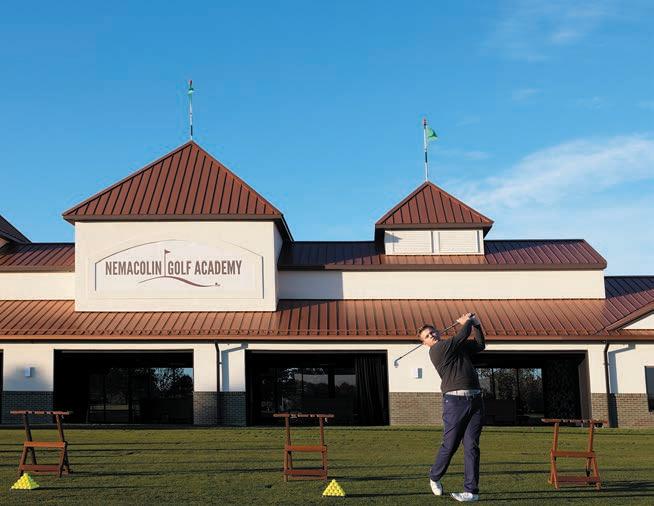
The Nemacolin Golf Academy is one of the most innovative training and practice facilities in the country. Its talented instructors, club-fitting specialists, and ingenious athletic technology work together to improve every aspect of your game. At the Golf Academy, swing, confidence, and shot consistency will see improvement. Every golfer is unique, so customized evaluations, instruction, and practice plans will help to result in a better golf game. With four specialized bays, space to accommodate dining and private groups of 60, upscale and modern decor with leather seating and walls of windows, some of the most advanced technology in the industry, and a team that can deliver magic for every golfer, the upscale Golf Academy at Nemacolin is the place to bring your game to a whole new level.•
Universal Monsters
“It’s alive! It’s alive!” From writing’s mad scientists comes mechanical mayhem on an epic scale. Experience an XXL homage to classic horror.

montegrappa.com

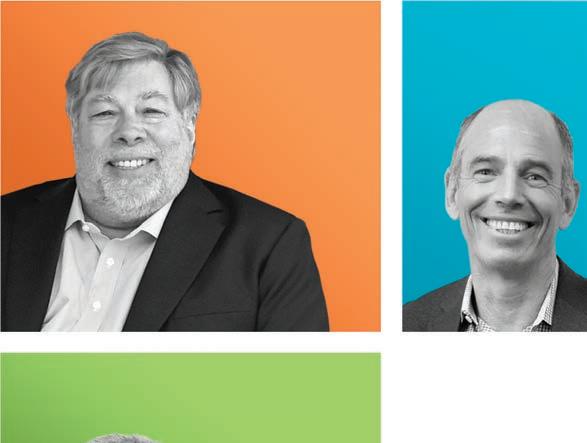
STEVE WOZNIAK
Apple Co-Founder
HPU’s Innovator in Residence

JOE MICHAELS
Former Director of NBC’s “TODAY”
HPU’s Broadcaster in Residence


MARC RANDOLPH
Netflix Co-Founder
HPU’s Entrepreneur in Residence

CYNT MARSHALL
Dallas Mavericks CEO
HPU’s Sports Executive in Residence
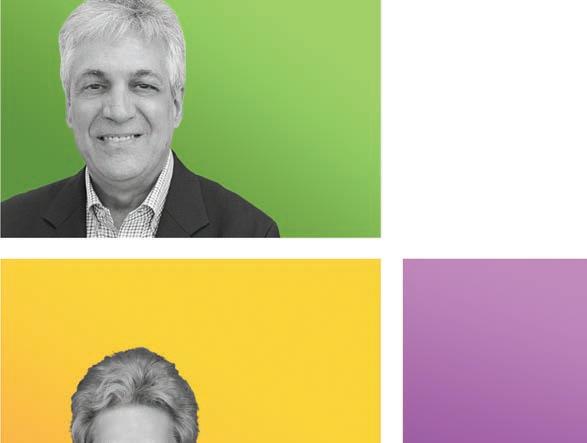
ELLEN ZANE CEO Emeritus of Tufts Medical Center
HPU’s Health Care Executive in Residence
DR. JOHN C. MAXWELL
Bestselling Author and Internationally Renowned Leadership Expert
HPU’s Executive Coach in Residence
HPU’s environment of excellence attracts CEOs, tech titans and global change agents who love mentoring students at The Premier Life Skills University.


BYRON PITTS Co-Anchor of ABC’s “Nightline” HPU’s Journalist in Residence
JINAN GLASGOW GEORGE Founder and Managing Director of NEO IP
HPU’s Intellectual Property Expert in Residence



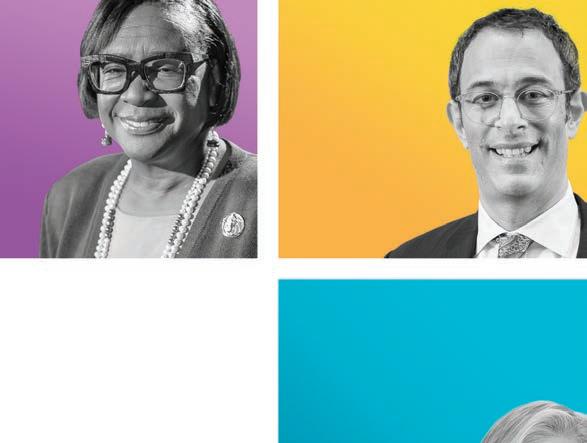
RUSSELL WEINER
Domino’s CEO
HPU’s Corporate Executive in Residence
DEAN CAIN Famed Actor, Producer and Television Presenter HPU’s Actor in Residence

SUE DOWNES
CEO and Co-Founder of MyEyeDr. HPU’s Health Care Expert in Residence

DEE ANN TURNER
Former Chick-fil-A Vice President for Talent
HPU’s Talent Acquisition Expert in Residence




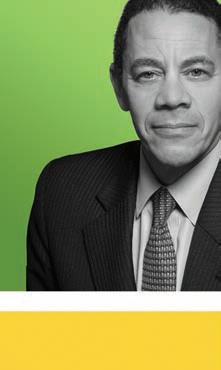


WILLIAM “BILL” E. KENNARD Chairman of AT&T’s Board of Directors and Former U.S. Ambassador HPU’s Global Leader in Residence

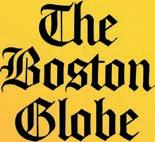
BOB RYAN Renowned Sports Columnist for The Boston Globe
HPU’s Sports Reporter in Residence
